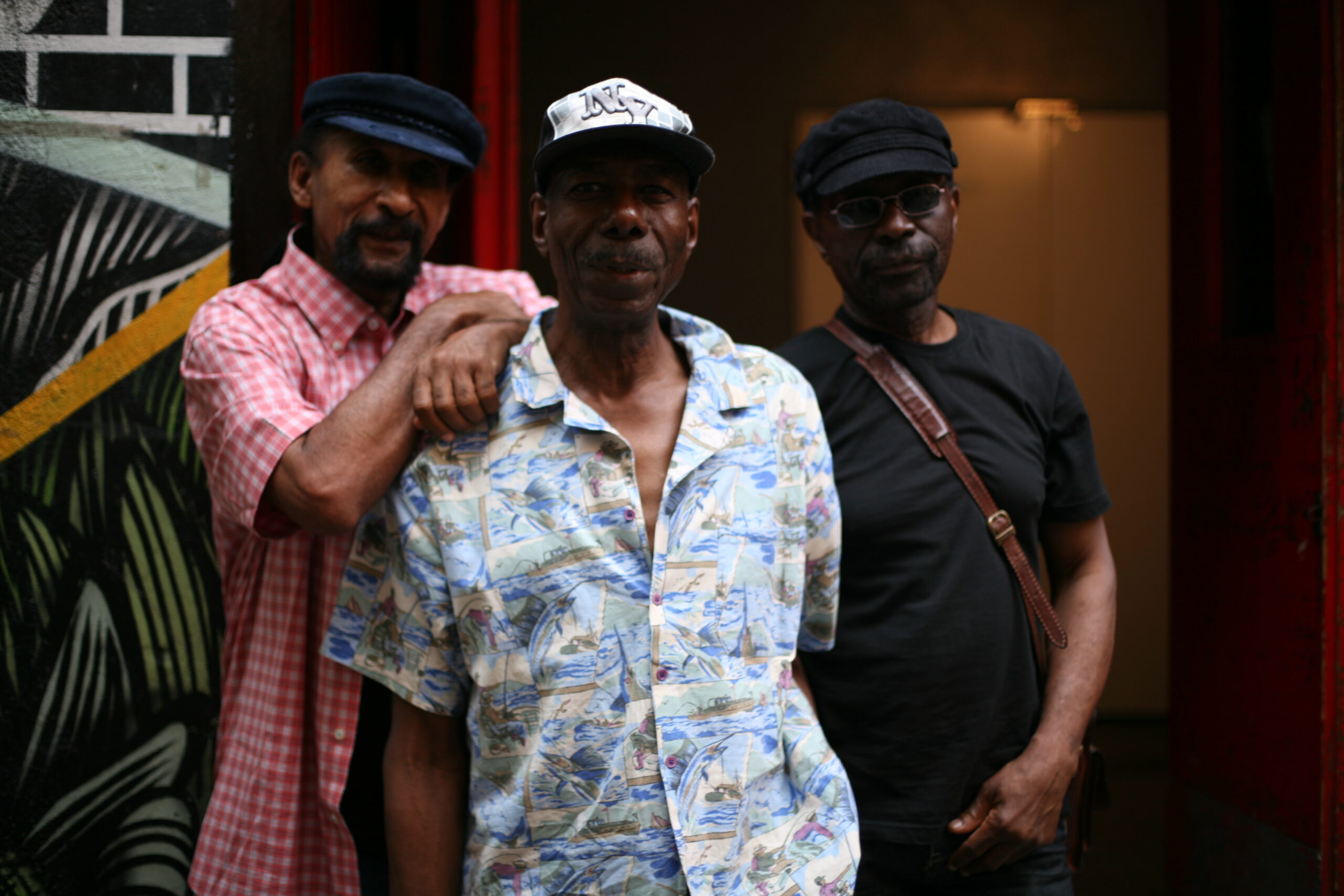
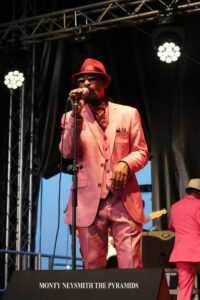


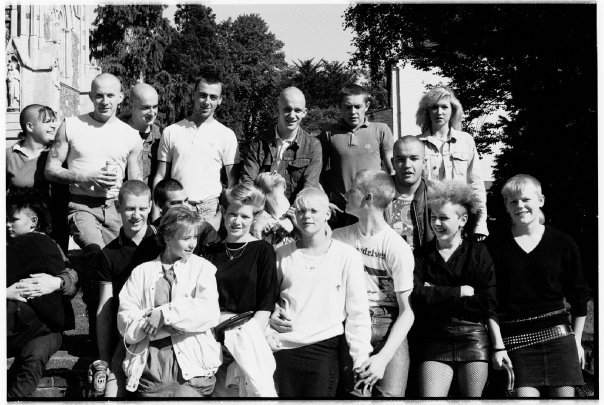
The first Fred Perry Shirt was worn in 1952 – an all-white shirt with a Laurel Wreath on the left side. A simple shirt with a lot of meaning. In a matter of years, the shirt had become a uniform for British youth and a highly treasured piece of clothing. “A heritage British style. Smart, but functional. If someone is wearing one you know they’ve spent a bit of money on themselves.” (Peyvand Sadeghian).
For many, getting their first shirt was a moment to remember. Some had to wait and save weekend after weekend of pocket money for a shirt that would become a closet staple, “It wasn’t until I was about 21 I think. I got bought one for my birthday and we made a thing of it by going to the Covent Garden shop to pick one out. To be honest it was the first and only one I had for a long time!” (Peyvand Sadeghian).
The pilgrimage to a central London shop or market with the freshest stock is as memorable for many as trying on the shirt for the first time. “I bought my first Fred Perry polo shirt in 1978, from a sports clothing store in Oxford street. At the time relatively exclusive and difficult to obtain, and a treasured item of clothing.” (Ed Silvester).
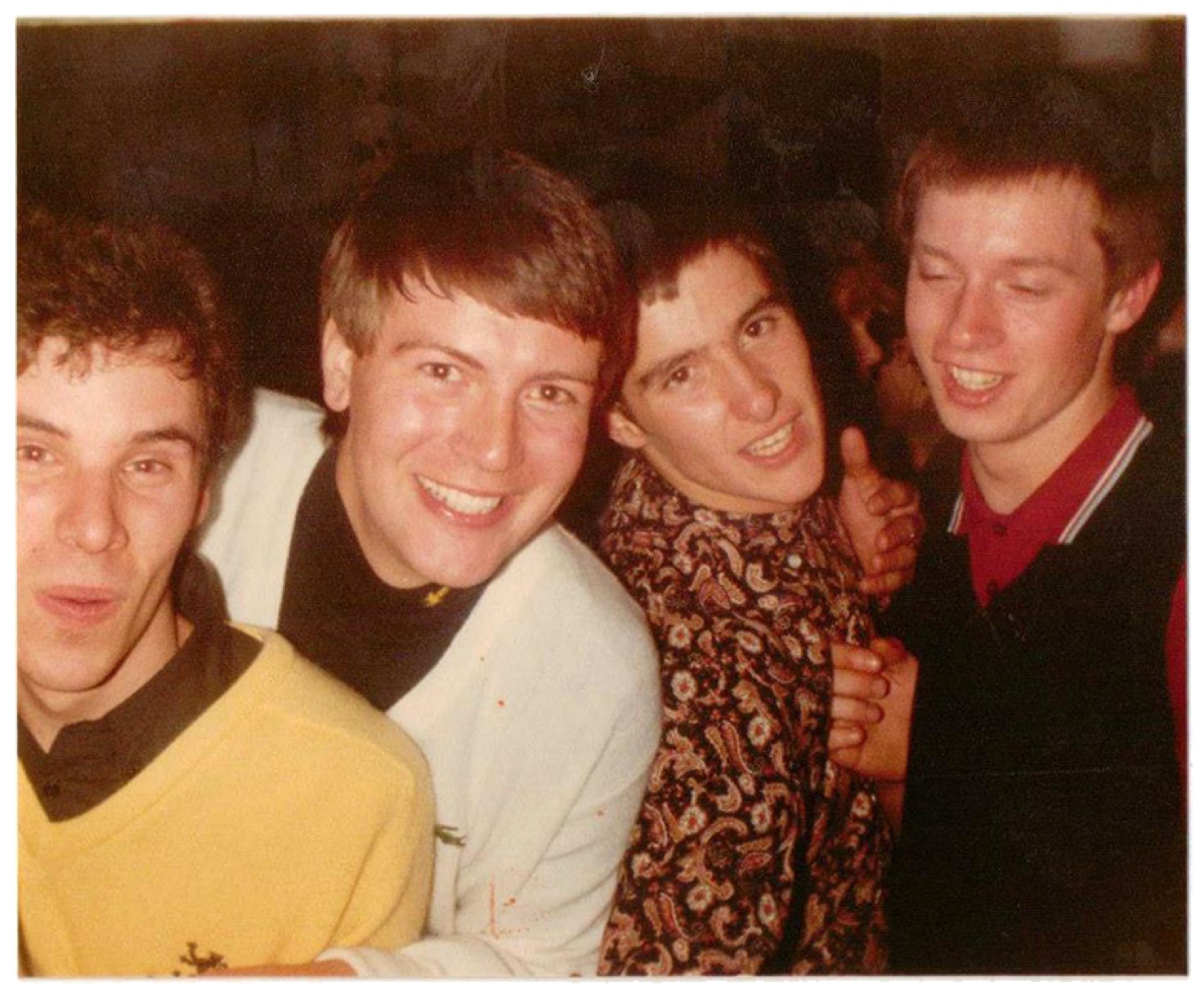
That first shirt would be worn over and over, an effortless cool ready to take on anything and look good while doing it. “I wore my Fred Perry’s until they were so worn that I pulled the entire collar off while taking it off the last time I wore it. It was only then that I really understood how much it had meant and what it had done for me. What adventures we had been on.” (Barrymore George)
Over a decade on from the original white shirt Fred Perry introduced ‘Twin Tipping’ around the collar along with new colourways. These additions allowed for more self-expression across scenes and ages. “During the mod revival years we religiously wore different coloured Fred Perry polo shirts and V-neck jumpers. I still love wearing Fred Perry polo shirts to this day, updating them every few years.” (Ed Silvester)
“Wearing my Fred Perry lifted me everytime I put them on. Like a cloth coat of armour they gave me security and a sense of belonging. They felt close and snug and warm and safe.” (Barrymore George)

Mods, Skinheads, Rude Boys and Ravers had their differences, but all were connected by being made up of working-class youths. Fashion has always been a presentation of our class place in society and the kids of the later 20th century were ready to rebel against classical ideas of clothing through subverting classic shirts like the smart polo to their own more rough and ready styles. “It’s a uniform that unites the working class and music scenes of these periods. It’s sharp and comfortable at the same time. It’s also the opposite of fast fashion and fads. It embodies strong and traditional values that are here to stay. It’s legendary.” (Catherine Laz)
Youth culture fashion has become synonymous with ripping clothes up, bleach splatters and patches, matching all of this with a crisp and clean shirt makes a statement about how deliberate your choices are, that you know you can be smart or scruffy and you know how to demand attention either way. “We used to wear them with Sta-press trousers and thin braces and DMs. Bleached jeans were fashionable at one point with skinheads, where you bleached patches on your jeans yourself. We would also wear them with pencil skirts and a jacket, with fishnet tights and brogues.” (Catherine Laz)
A Fred Perry Shirt is an iconic piece of British clothing and heritage. It has a cultural significance that young people have found fitting to represent their own journeys for status and respect, while finding unionship in those that wear it. “Fred Perry represents a long standing British and much-loved subculture clothing brand, being a constant thread winding its way through my sporting and cultural life.” (Ed Silvester).
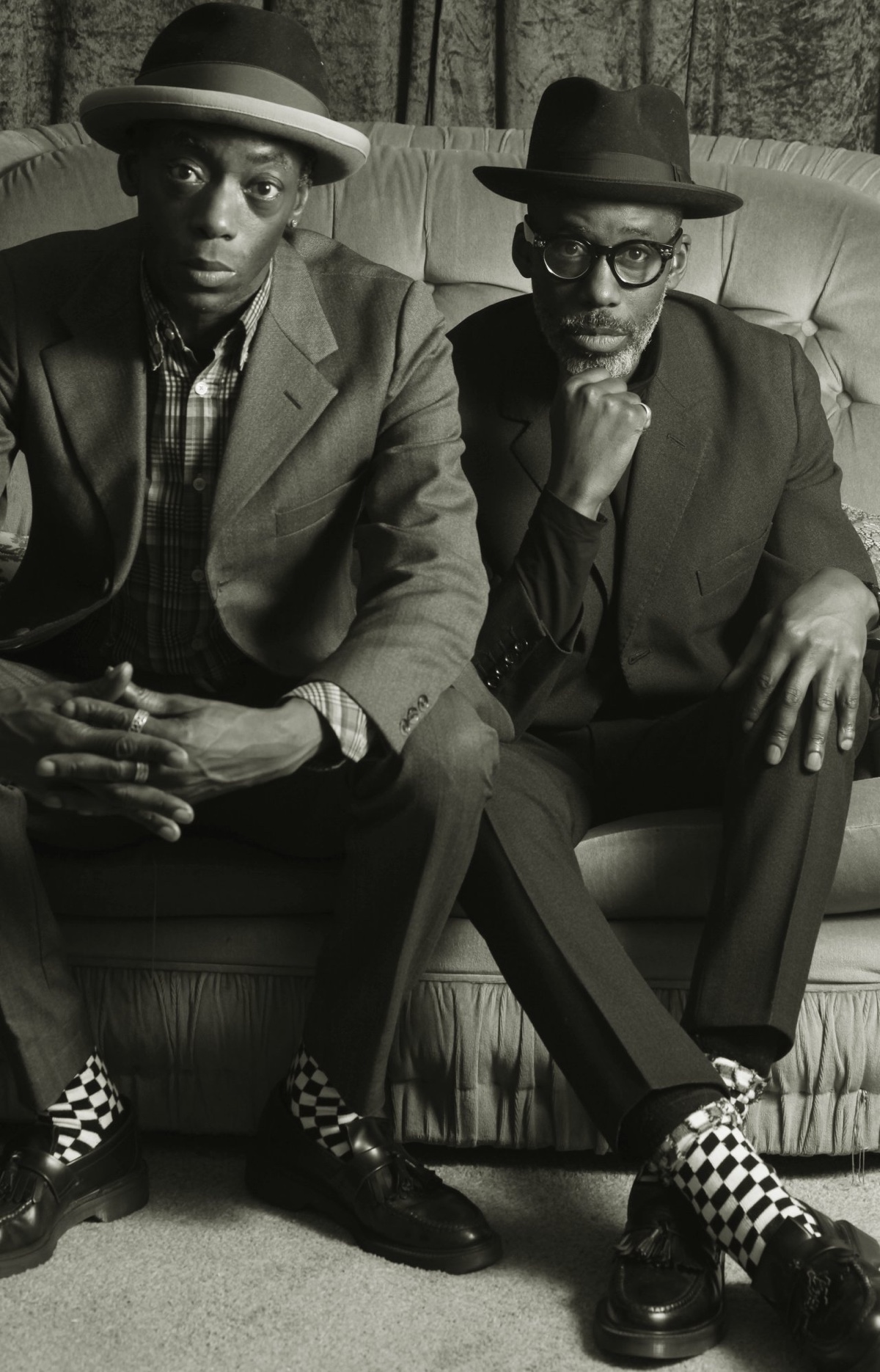
Barrymore George
I got my first Fred Perry in 1980. In fact, I got two that day along with my first set of nice Sta Press trousers in navy blue and a red Harington jacket. One shirt was black with a yellow trim and the other was burgundy with blue trim – both had three buttons.
I got home and immediately changed into everything and the 12-year-old me set off and glided proudly up my estate road to see my mates all kicking ball in a dusty grassless field.
The game stopped for a tiny second while they gazed open mouthed and said ‘wow.’ It was just for a second but that was enough, it truly was, because my boys never ever interrupted a game of football but for me that day they did. I never looked or felt the same again.
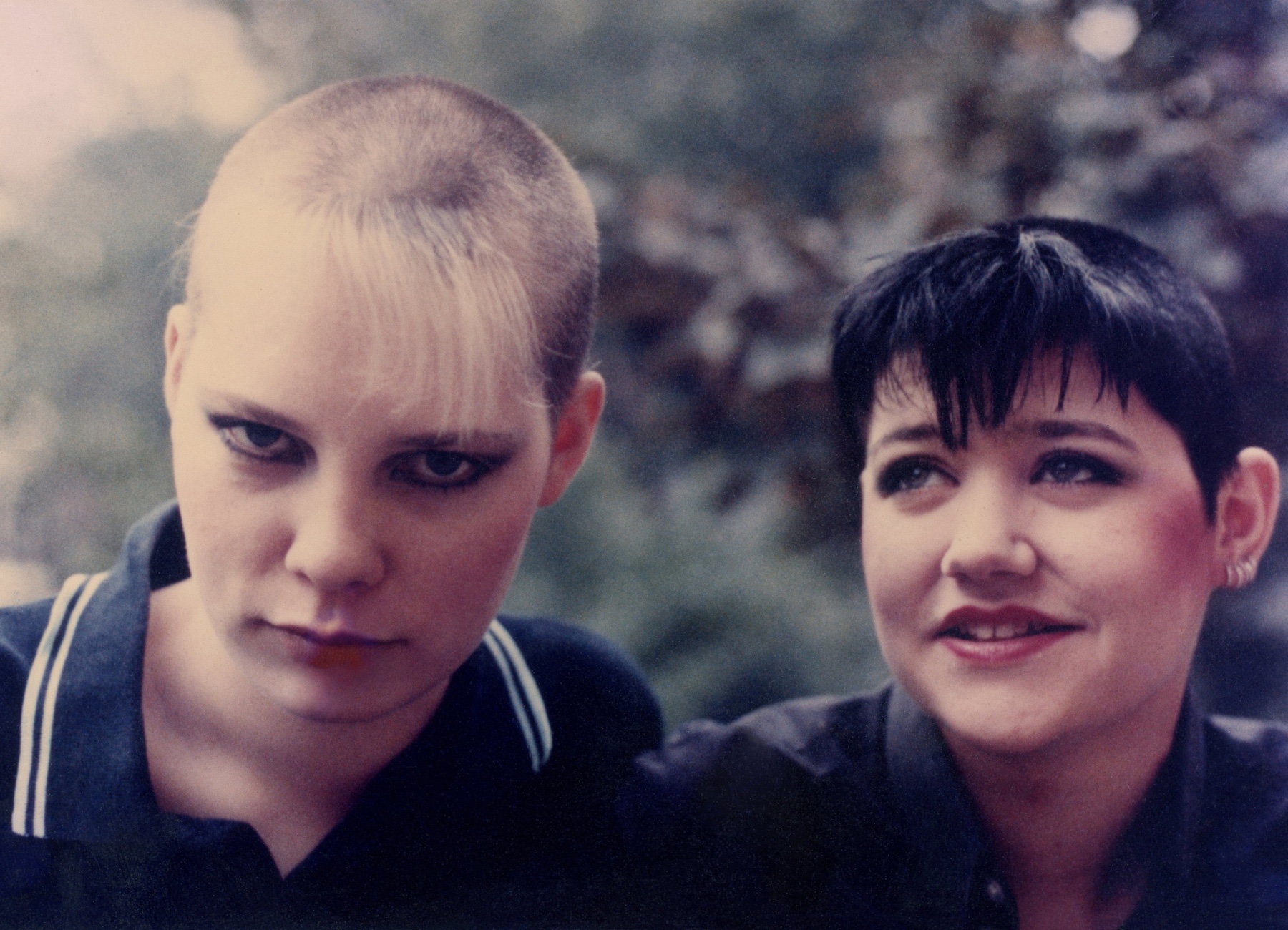
Catherine Laz
It was the summer of 1982 on the balcony of our bedsit in Swiss Cottage. My sister is on the left and I am on the right, wearing a blue Fred Perry shirt with sky blue stripes. I had the classic bleached blond crop hair and feathers skinhead girls used to have.
We spent our days hanging around Carnaby Street and Leicester Square, the King’s Road on Saturdays, shopping at The Last Resort on Sundays (where the polo was from), and our nights going to punk/mod/skinhead gigs all over London.
We had a great time because we believed we were the centre of the world. And that is what wearing a Fred Perry shirt meant, people instantly knew you were an important part of youth culture.
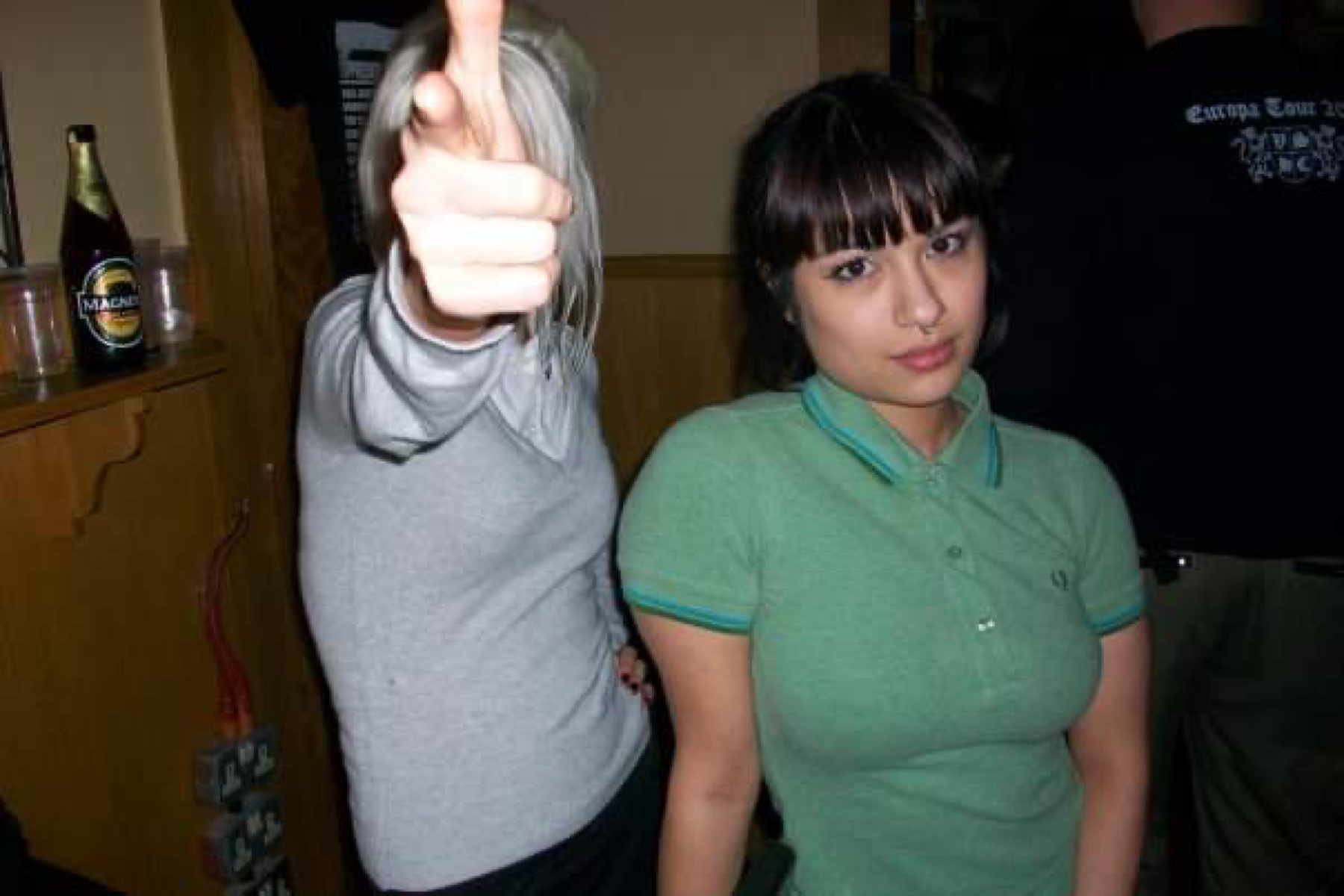
Peyvand Sadeghian
This was taken in Archway, North London, at I think a Punk/Oi all dayer upstairs at the Boston Arms in the early 2000s. I can’t remember what bands were playing that day.
The photo was snapped on a lil digital camera by Chris Low who I didn’t actually know at the time although we crossed paths again years later and became mates. In trying to figure out if we’d met before he realised he had this photo!

Ed Silvester
This photo was taken in the summer of 1979, in my friend Alan Smith’s bedroom in Epping. We used to hang out there, to catch up, listen to music and talk about the next bands to see.


The subcultures in the Soviet Union, a country cut off from the West by the infamous Iron Curtain, were a form of open youth rebellion against ideological and cultural stagnation.
Stilyagi, goths, hippies, bikers, punks, rockers, and metalheads formed countercultures that often invited the wrath of the Soviet communist authorities. Their legacy is remembered by these pictures that show their radical self-expression, extravagant style, hairstyles, tattoos, and elaborate clothes.
The Soviet state media called these groups “non-conformists,” who were deliberately devoid of all the good qualities possessed by a Soviet citizen. They were even referred to as lazy parasites, dirty, leeches of society, and fascists.
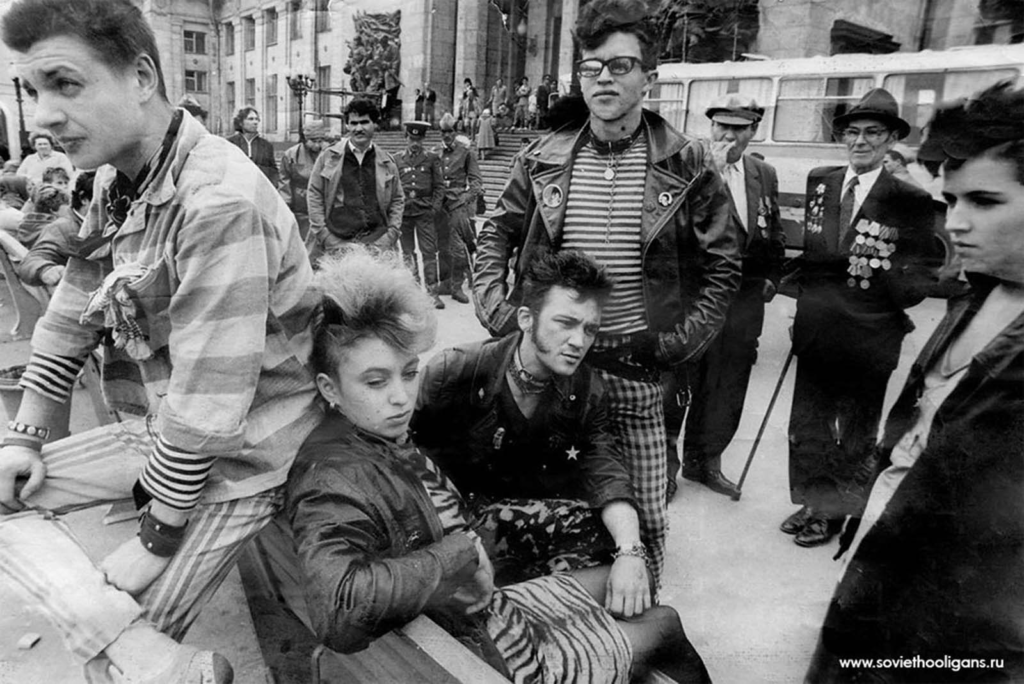
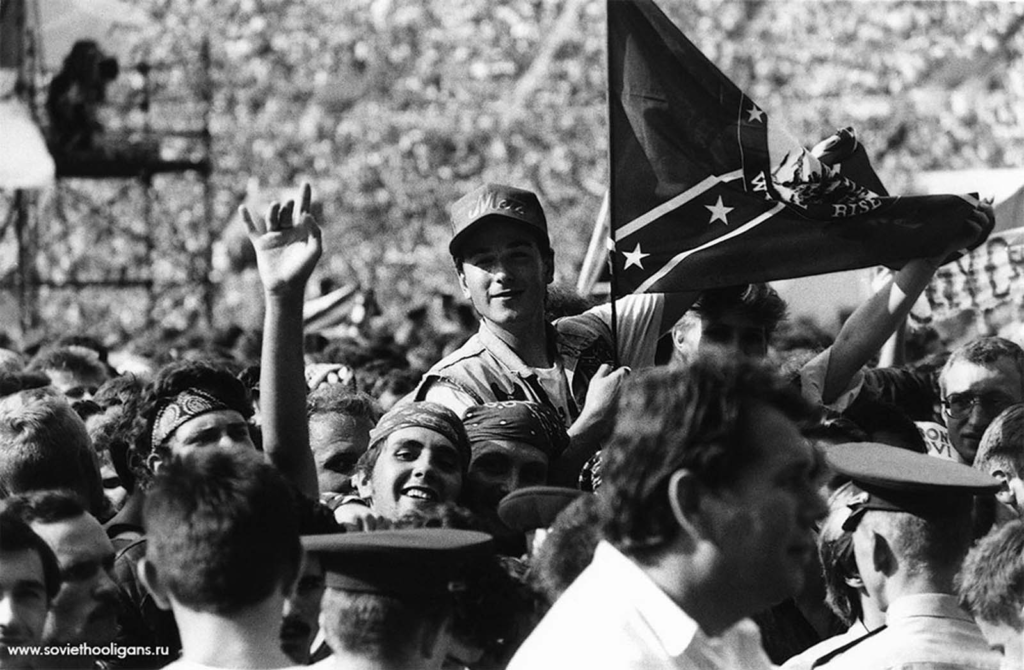
Hippies in the Soviet Union were stereotyped, arrested at concerts, and hassled for their drug use and Western values. But by turning to an international youth movement, they proved that East and West had plenty in common, long before the Iron Curtain fell.
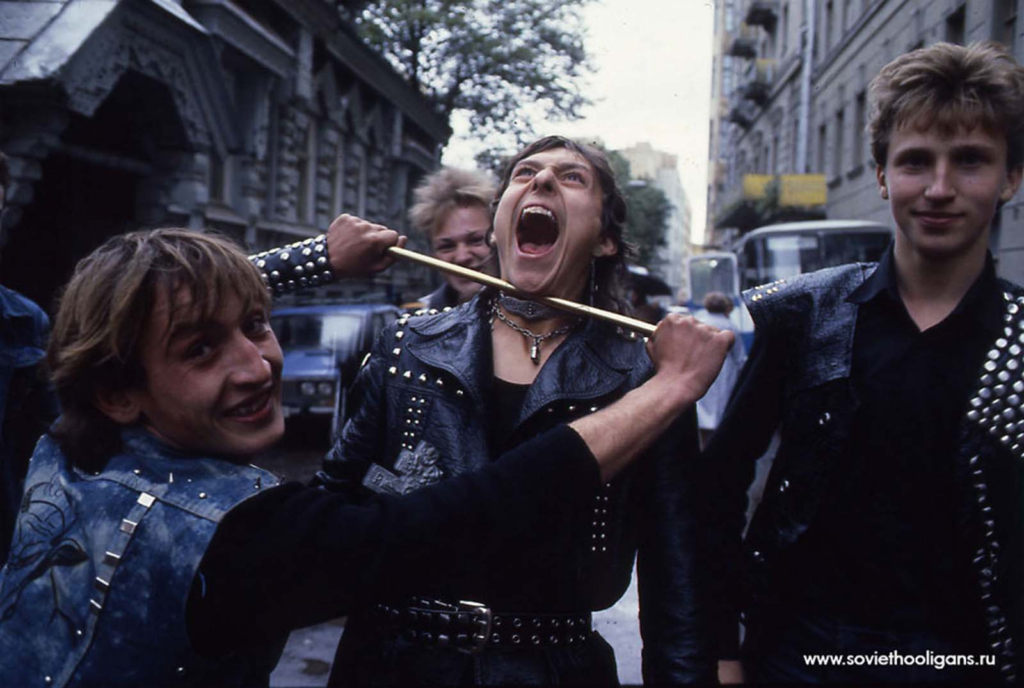
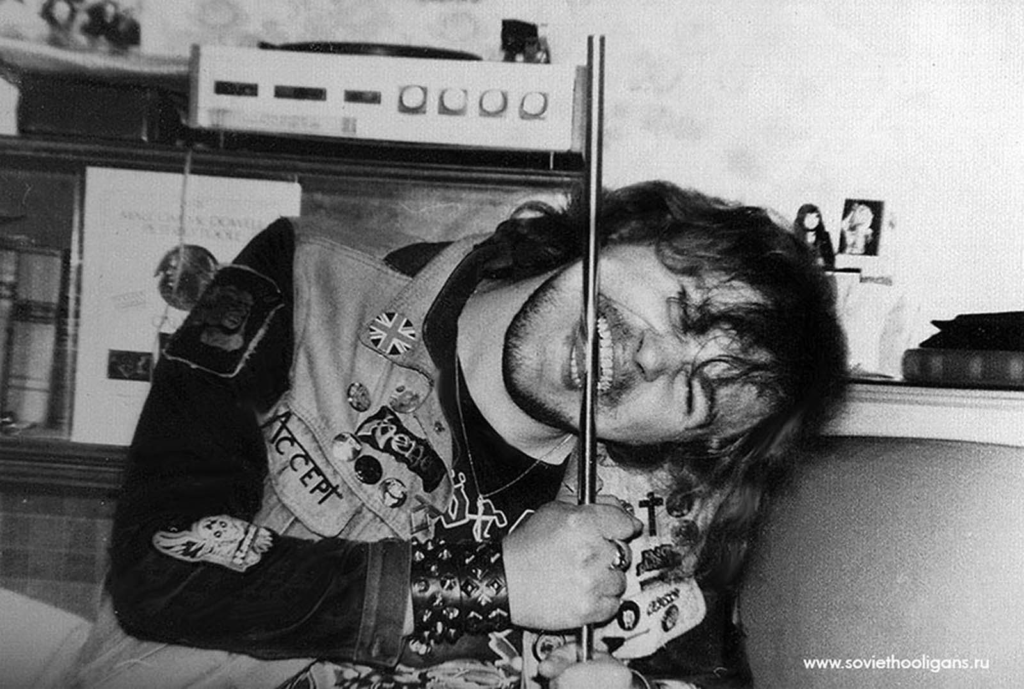
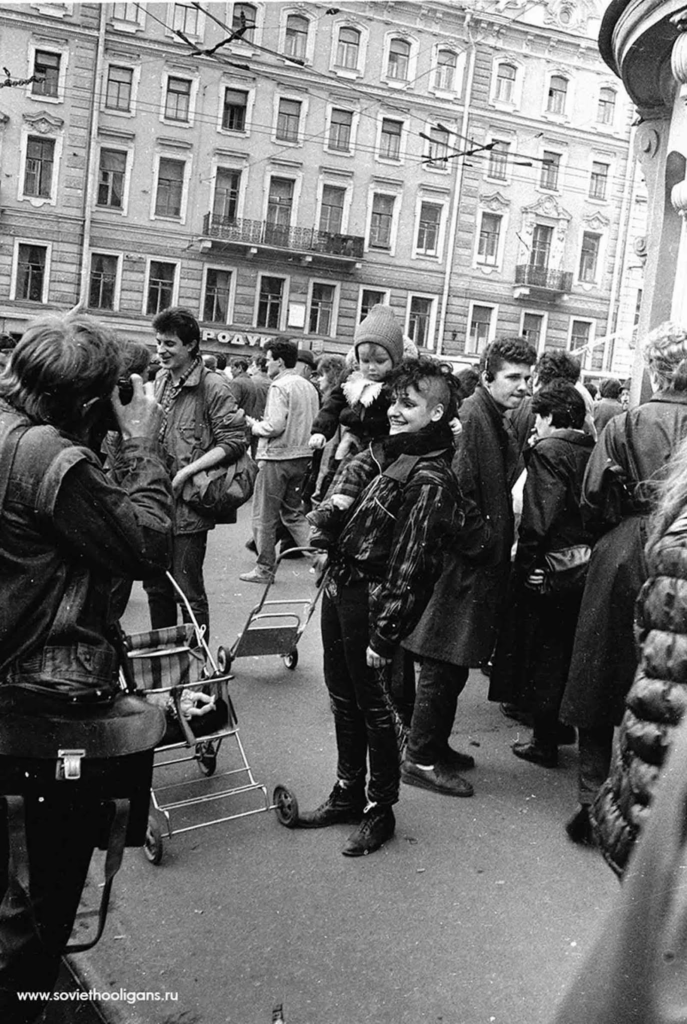

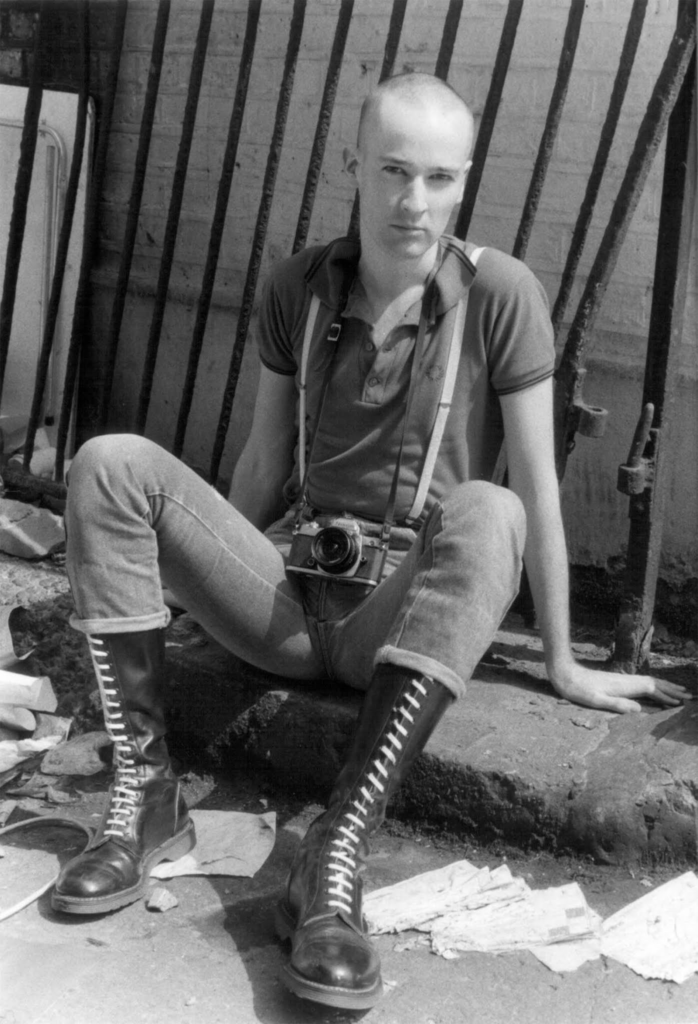
The skinhead subculture was born in England in the late 1960s as an offshoot of the mod culture. Skinheads were distinct from other British subcultures due to their uniform of boots, jeans, braces (suspenders), and the trademark shaved head.
Their style was an exaggerated version of the traditional unskilled laborer. One of the first scholars to research skinheads, sociologist Mike Brake, classified skinheads as a “traditional working-class delinquent subculture” and documented five traits that defined first-generation British skinheads: toughness and violence; football (soccer), ethnocentrism, Puritan work ethic; and a cynical worldview.
According to author Nick Knight, skinheads first appeared as a distinct youth subculture in 1968. He states in his book Skinhead, “In establishing their own style, the younger brothers of mods adopted certain elements of mod style, combined them with items from traditional working clothes, borrowed some influences from the West Indian blacks and became skinheads.”
Motivated by social alienation and working-class solidarity, skinheads were defined by their close-cropped or shaven heads (long hair was a liability in factory work and street fights) and working-class clothing such as Dr. Martens and steel toe work boots, braces, high rise jeans, and button-down collar shirts, usually slim fitting in check or plain.
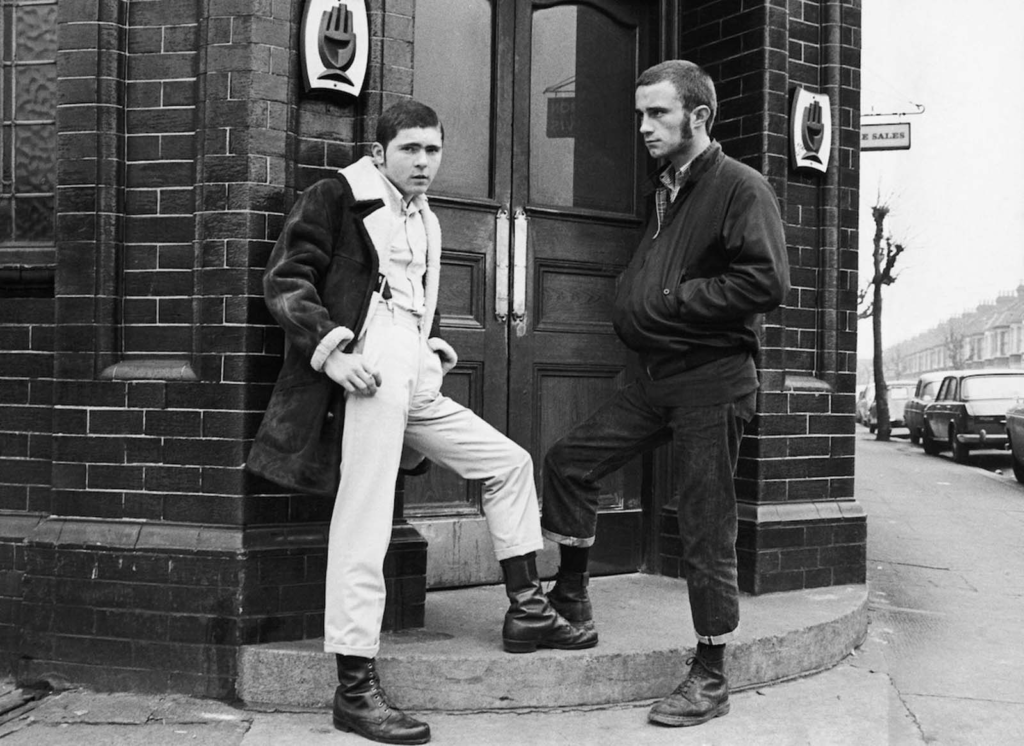
In England, there were two waves of the skinhead cult. From its inception, the skinhead subculture was largely based around music. The first group appeared in the late 1960s as an offshoot of the mod subculture and largely died out by 1972.
The second wave arrived in the late 1970s and early 1980s. These skinheads differed from the first generation, in that they were not influenced as much by mod as they were by the growing punk and 2Tone Ska scenes in London.
Punk lent itself to violence through its embrace of aggressive music and teenage angst. Skinheads reflected this new influence by combining the exaggerated imagery of the original skinhead style with punk.
They took the boots and suspenders and jeans of the late 1960s and added closser-cropped hair, bomber jackets, and tattoos. The popularity of the 2Tone movement helped spread the look of skinheads to all parts of the United Kingdom.
Symond Lawes, a British skinhead notes, “I became a skinhead and there was only one other skinhead in my estate in 1978. By the following year, every kid in England was a skinhead.”
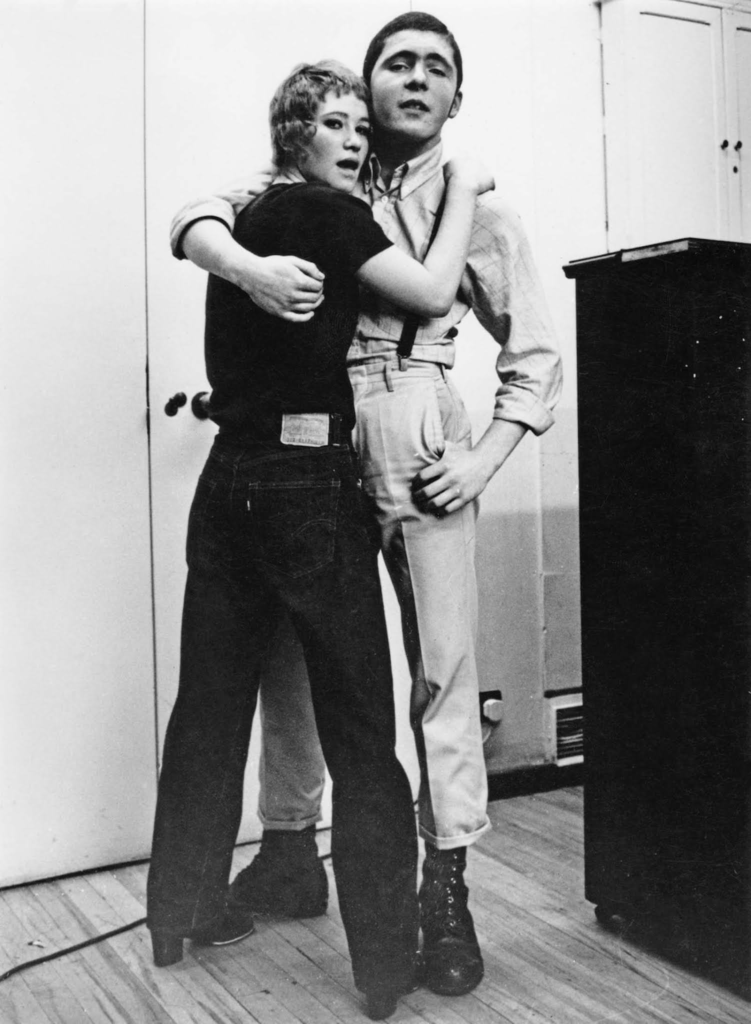
At the same time the subculture was growing, England was experiencing an influx of immigrants from India; the backlash to this wave of newcomers from the native British population was reflected in the skinhead subculture. Zeig Heiling and “Paki bashing” were sensationalized by the media.
The growth of the right-wing National Front and its recruitment of youth merely increased the amount of conflict present in the skinhead subculture. Punk shows and Ska shows were marred by skinhead violence. Even American newspapers covered the race riots that exploded in London in 1981.
While there is little doubt that North Americans, especially Canadians as part of the British Commonwealth, were exposed to skinhead subculture in the late 1960s and during the initial resurgence of this movement in 1978, it did not take hold as a youth cult in the United States until the arrival of punk.
Groups of youths in the early years of the American hardcore punk scene had shaved heads, but cannot be categorized as skinheads because they did not consciously adopt the lifestyle or dress that defines the subculture. Eventually, American youths began to emulate the skinhead style that was seen in the United Kingdom.
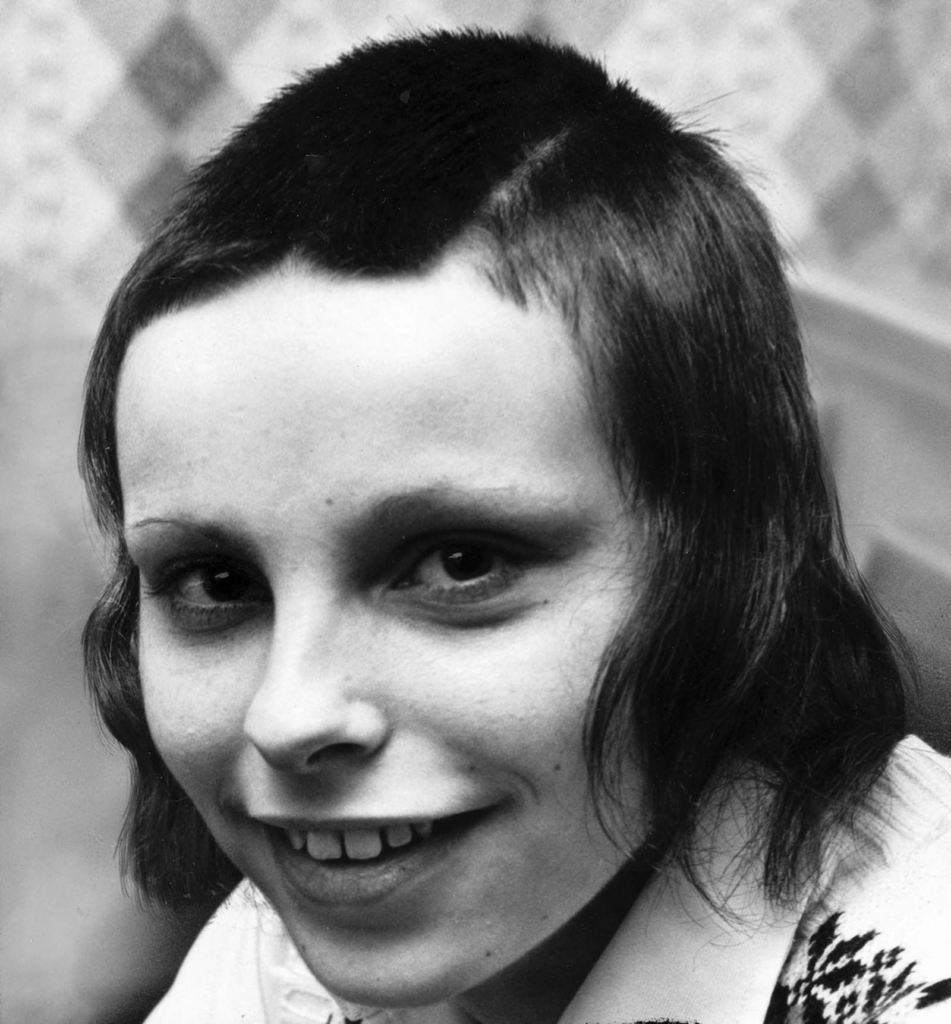
During the early 1980s, political affiliations grew in significance and split the subculture, distancing the far right and left-wing strands, although many skinheads described themselves as apolitical.
As a pro-working class movement, skinhead culture attracted those with nationalist beliefs, including violently racist or neo-Nazi elements.
In Great Britain, the skinhead subculture became associated in the public eye with the membership of groups such as the National Front and the British Movement. By the 1990s, neo-Nazi skinhead movements existed across all of Europe and North America.
Nowadays, few organizations, such as Skinheads Against Racial Prejudice, are attempting to fight back against supremacist skinheads and honor the diverse and multicultural aspects of the original skinhead subculture.
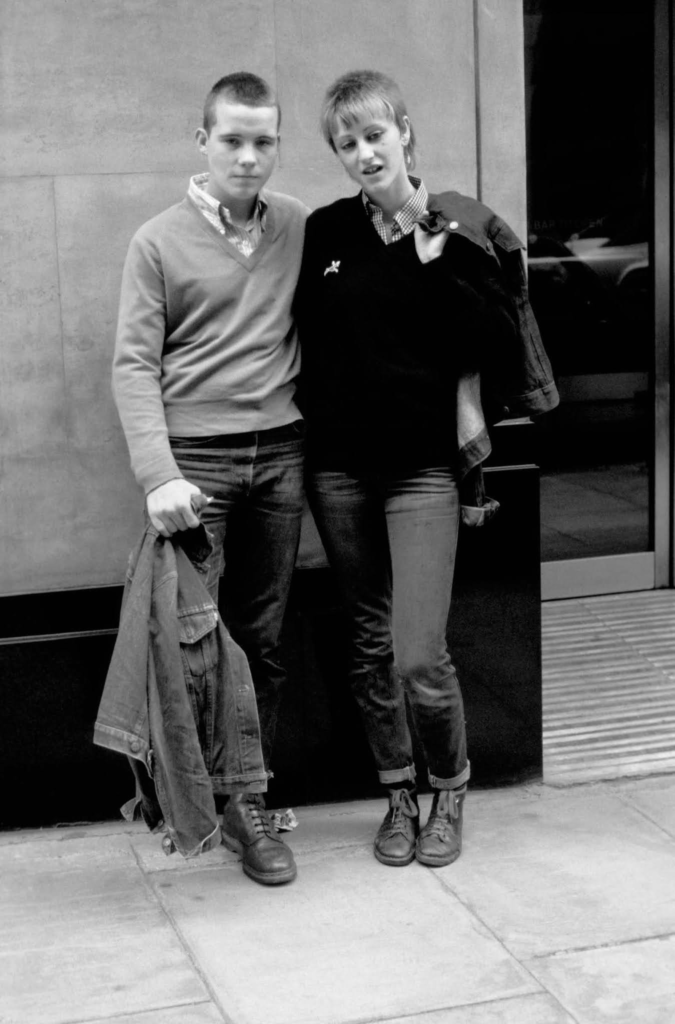
During the early 1980s, political affiliations grew in significance and split the subculture, distancing the far right and left-wing strands, although many skinheads described themselves as apolitical.
As a pro-working class movement, skinhead culture attracted those with nationalist beliefs, including violently racist or neo-Nazi elements.
In Great Britain, the skinhead subculture became associated in the public eye with the membership of groups such as the National Front and the British Movement. By the 1990s, neo-Nazi skinhead movements existed across all of Europe and North America.
Nowadays, few organizations, such as Skinheads Against Racial Prejudice, are attempting to fight back against supremacist skinheads and honor the diverse and multicultural aspects of the original skinhead subculture.
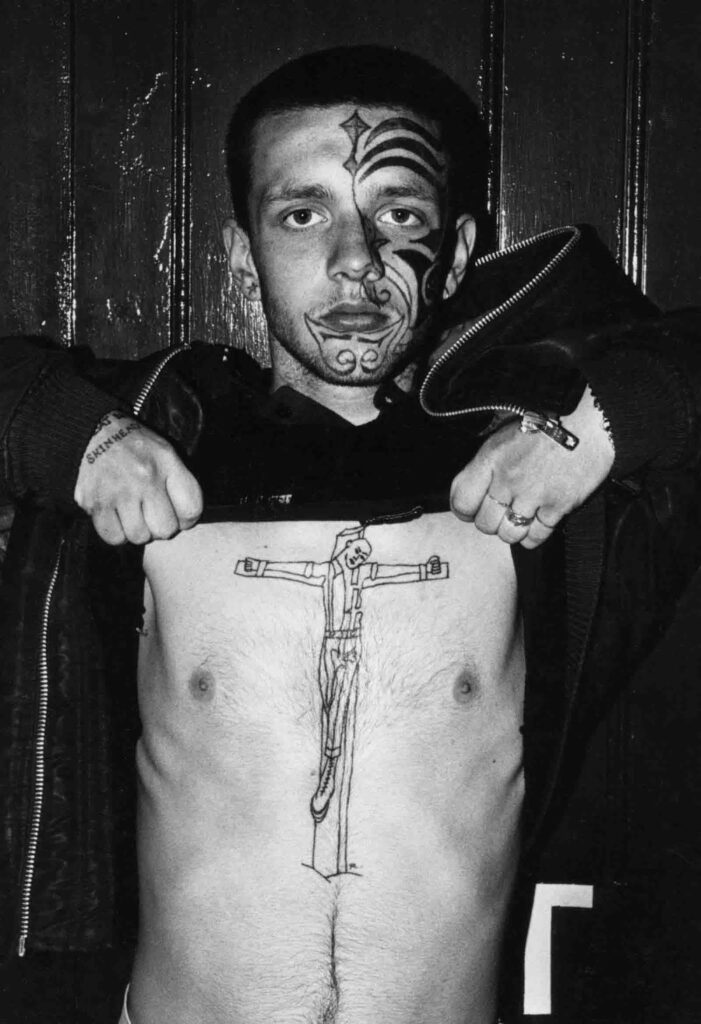
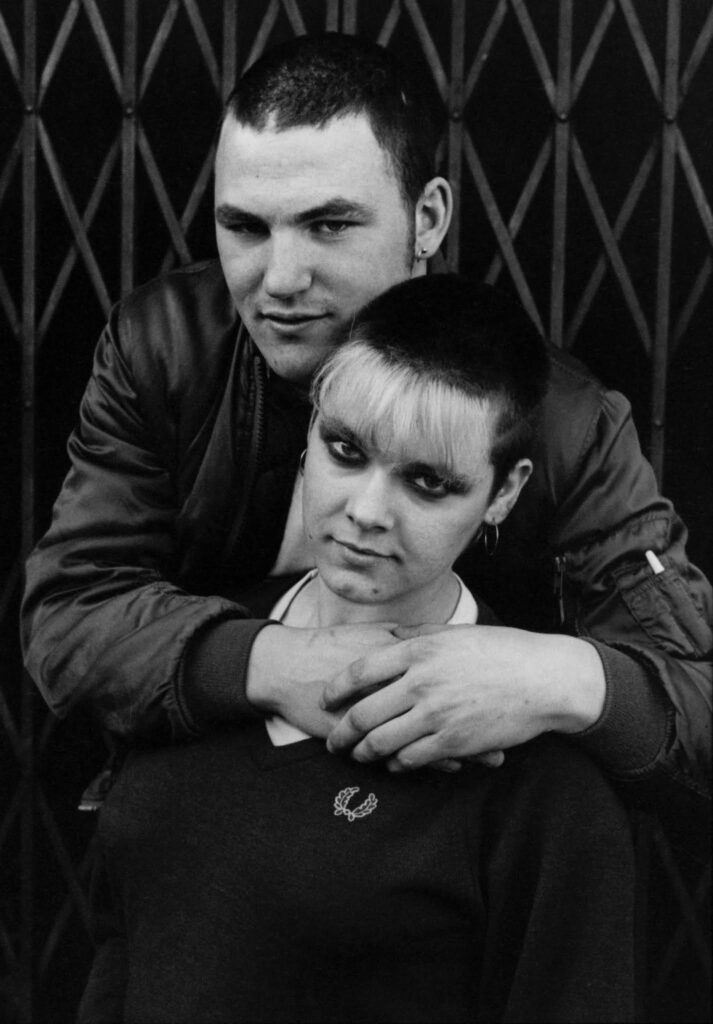
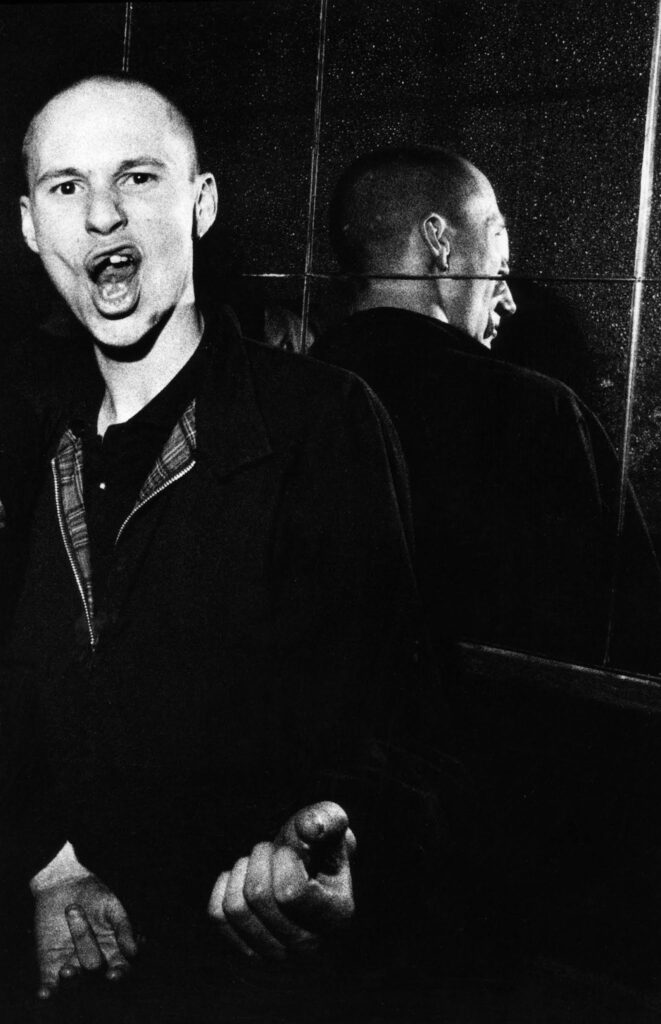
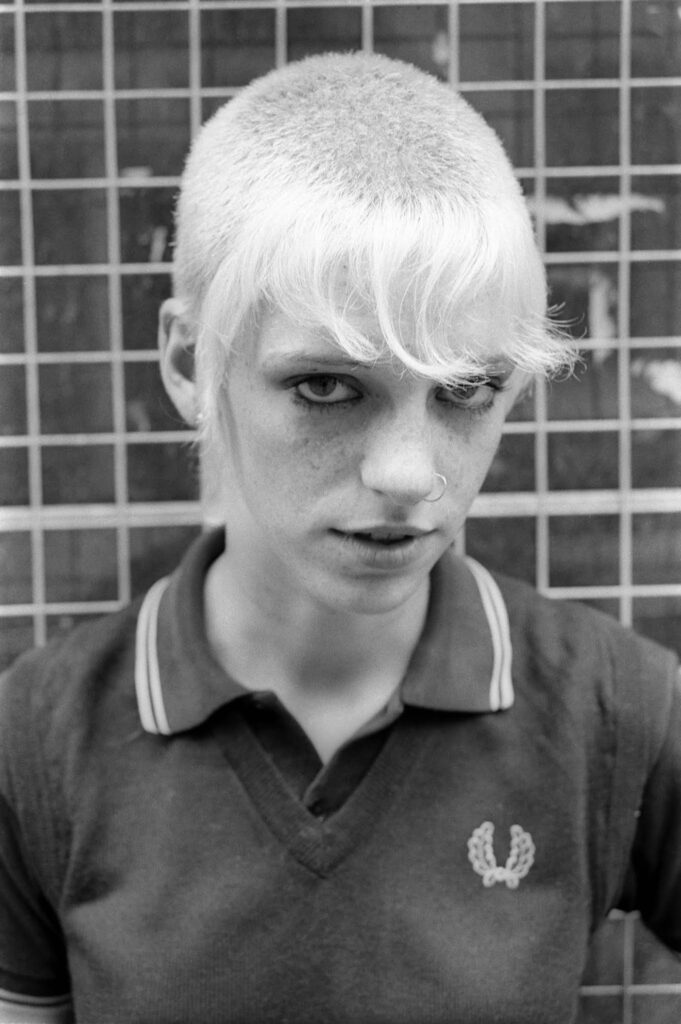
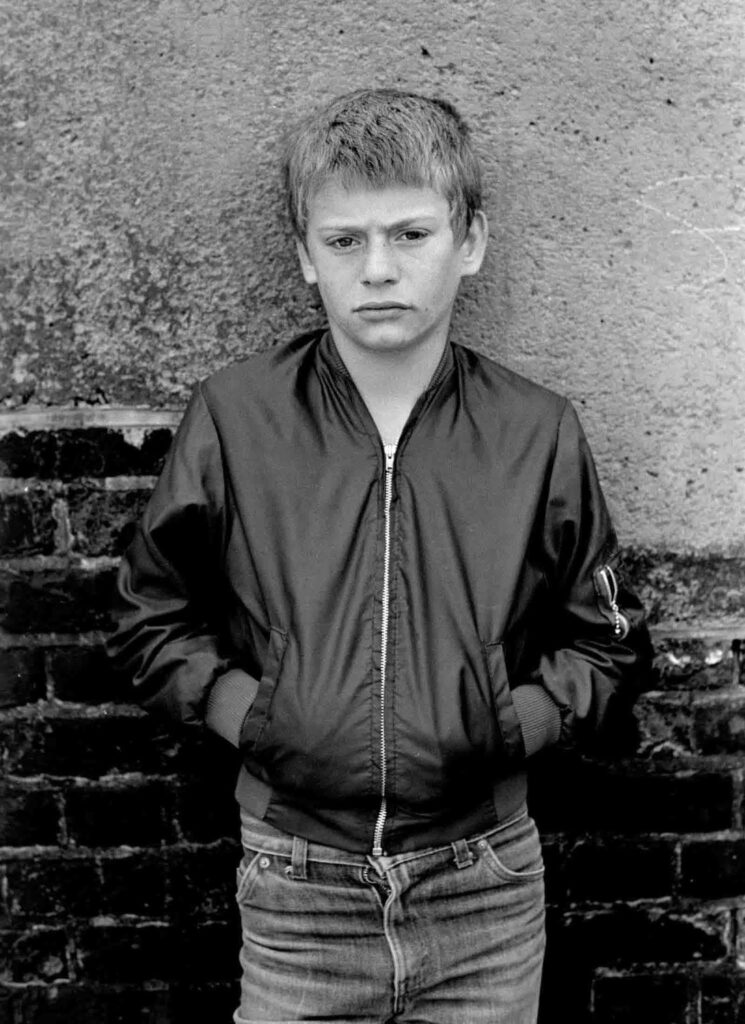
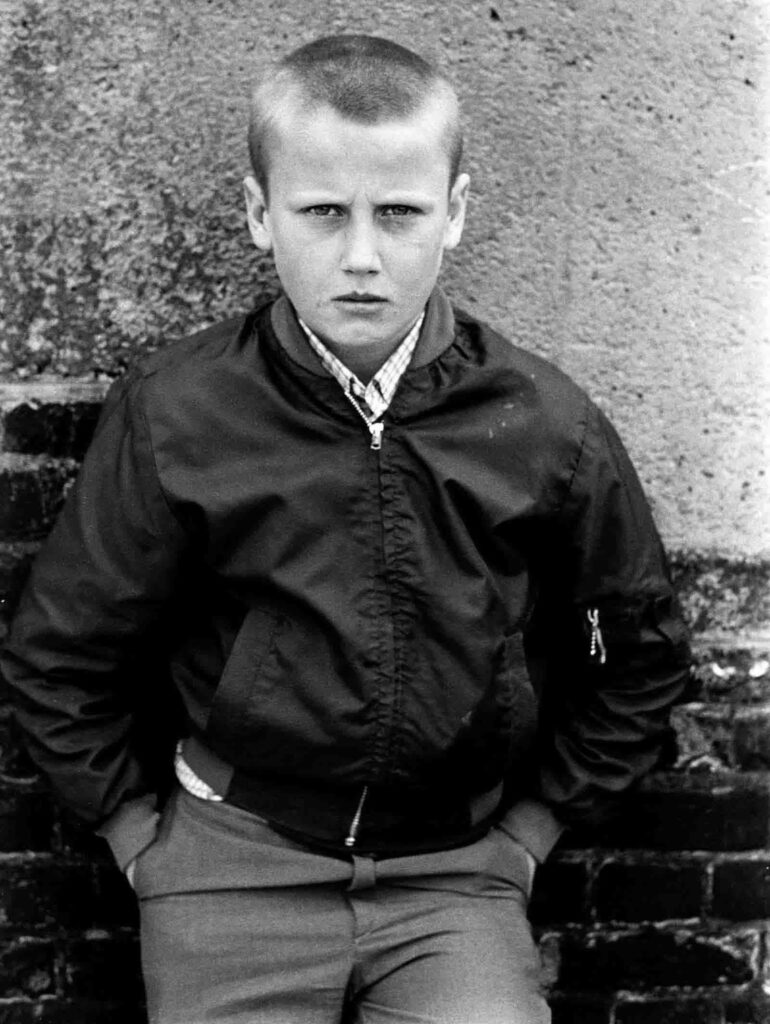
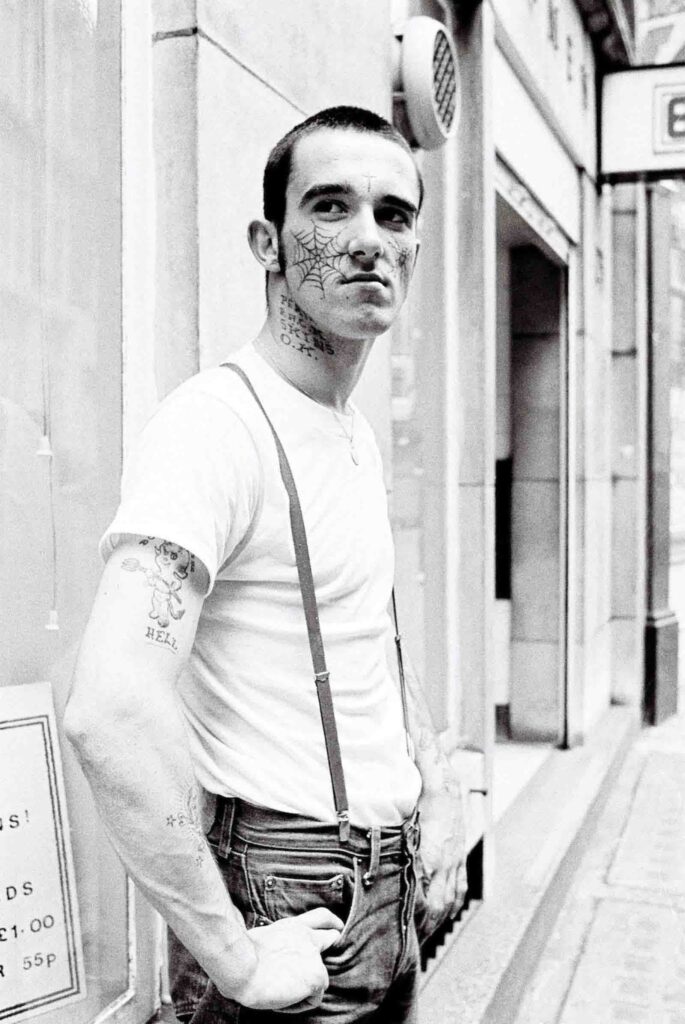
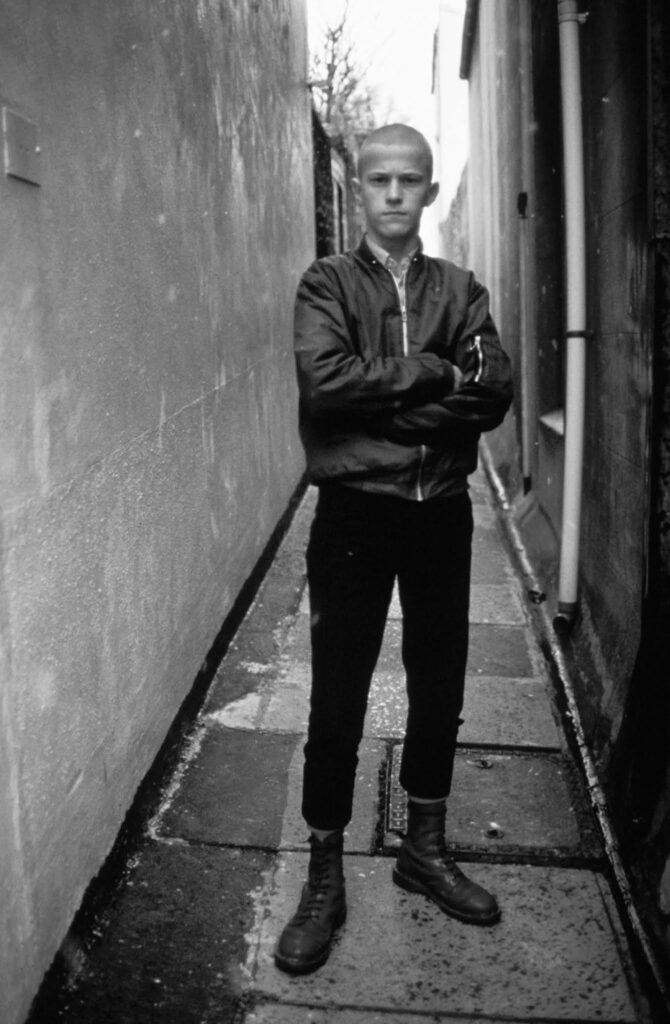
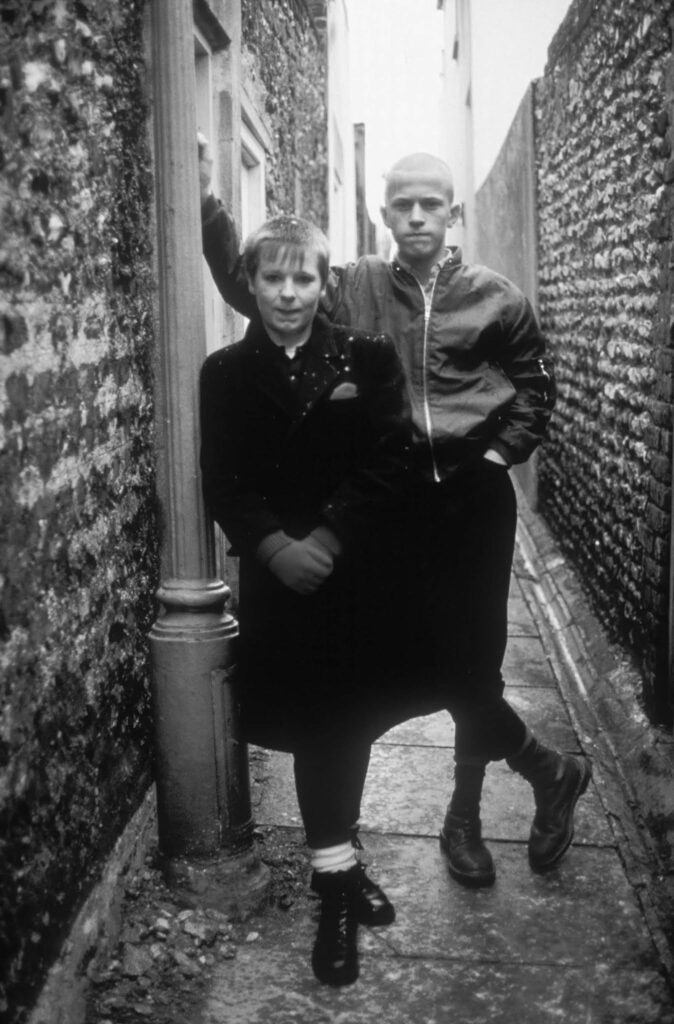
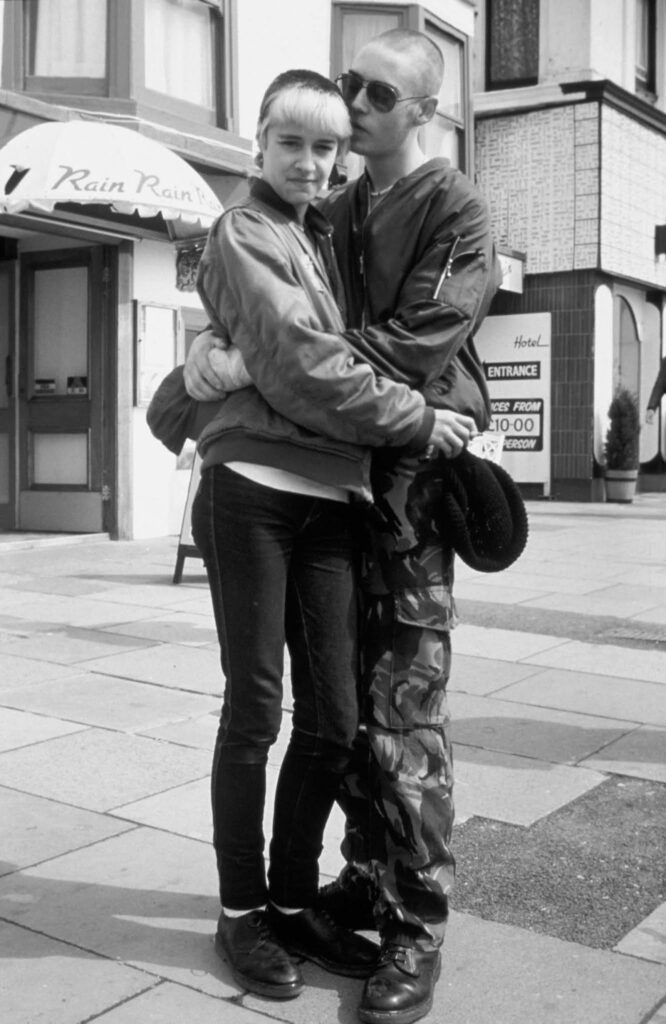
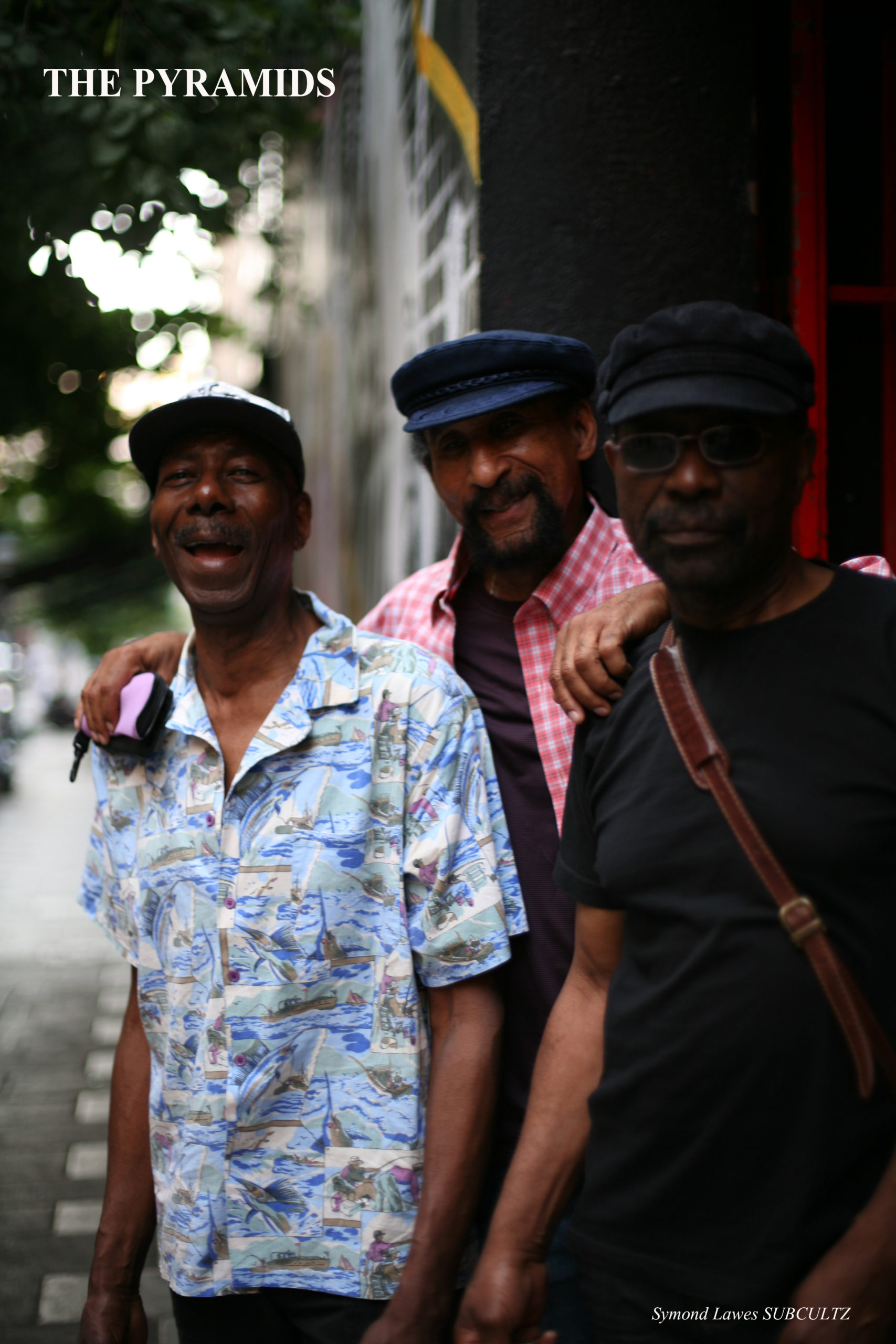
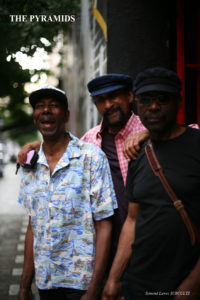
Symarip (also known at various stages of their career as The Bees, The Pyramids, Seven Letters and Zubaba) were a British ska and reggae band, originating in the late 1960s, when Frank Pitter and Michael Thomas founded the band as The Bees. The band’s name was originally spelled Simaryp, which is an approximate reversal of the word pyramids. Consisting of members from West Indies , Home of the legends of Jamaican Reggae Simaryp is widely marked as one of the first skinhead reggae bands, being one of the first to target skinheads as an audience. Their hits included “Skinhead Girl”, “Skinhead Jamboree” and “Skinhead Moonstomp“, the latter based on the Derrick Morgan song, “Moon Hop“.[2]
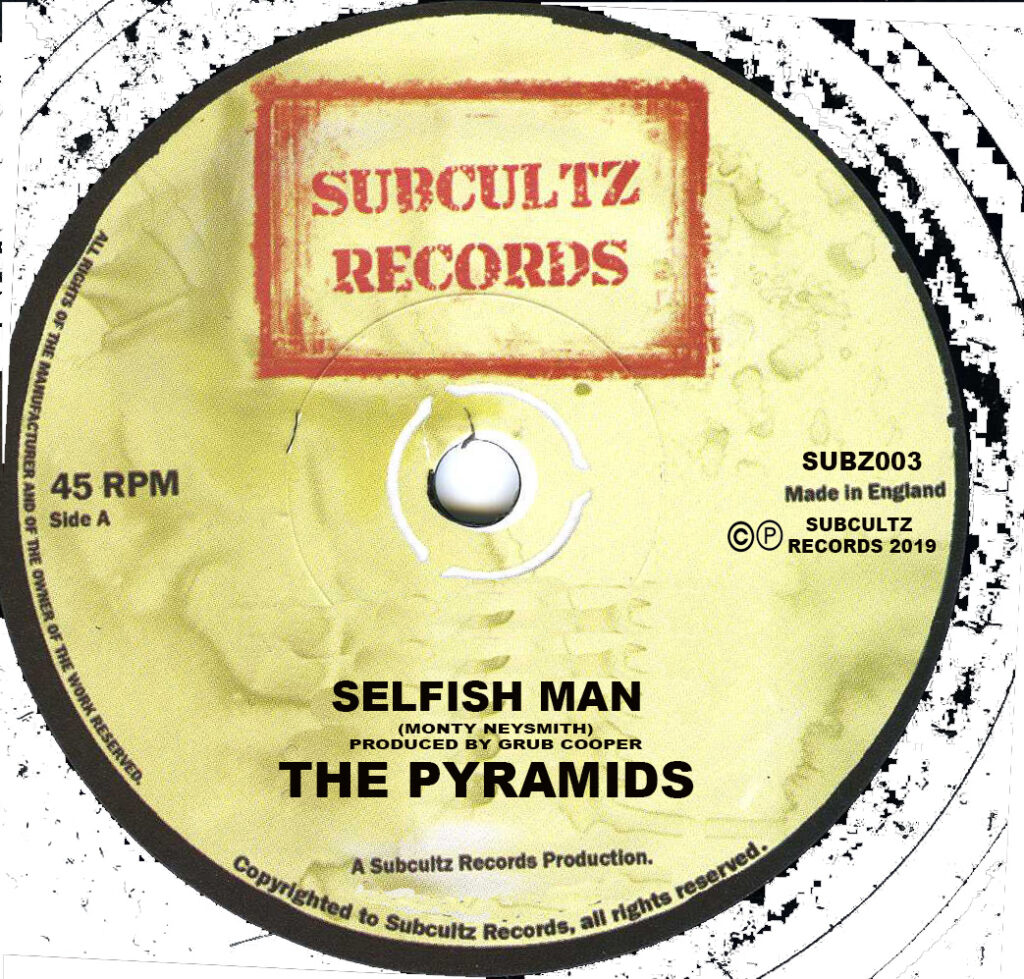
Landing as young immigrants into London from Jamaica in 1962 joining into the growing South London Reggae culture, spearheading the blending of black migrant and white London youth. Mods being the subculture of the time who followed RnB American Modern Jazz before the Skinheads replaced them towards the late 60’s, the band formed as the Bees to back leading singers Prince Buster and Laural Aitkin
Releasing the first and only pure Skinhead Reggae concept album Skinhead Moonstomp in 1970 with Trojan records
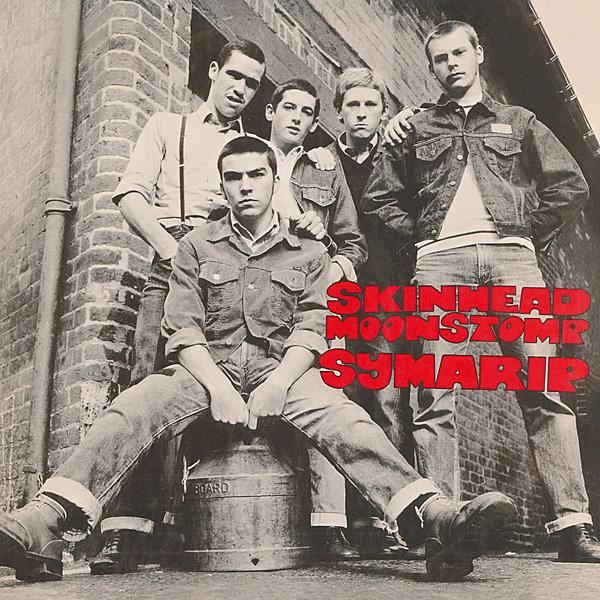
They moved to Germany in 1971, performing reggae and Afro-rock under the name Zubaba. In 1980, the single “Skinhead Moonstomp” was re-issued in the wake of the 2 Tone craze, hitting No. 54 on the UK Singles Chart. The band officially split in 1985 after releasing the album Drunk & Disorderly as The Pyramids. The album was released by Ariola Records and was produced by Stevie B.
Pitter and Ellis moved back to England, where Ellis continued performing as a solo artist, sometimes using the stage name ‘Mr. Symarip’. Mike Thomas met a Finnish woman while living in Switzerland and relocated to Finland doing the groundwork for the Finnish reggae culture through his band ‘Mike T. Saganor’. Monty Neysmith moved to the United States, where he toured as a solo artist.
In 2004, Trojan Records released a best of album including a new single by Neysmith and Ellis, “Back From the Moon”. In 2005, Neysmith and Ellis performed together at Club Ska in England, and a recording of the concert was released on Moon Ska Records as Symarip – Live at Club Ska. In April 2008, they headlined the Ska Splash Festival in Lincolnshire as Symarip, and later performed at the Endorse-It and Fordham Festivals. Pitter and Thomas now perform in a different band as Symarip Pyramid. Their Back From The Moon Tour 2008–2009 was with The Pioneers. In 2009, to celebrate the rebirth of the band and the reunion of the two original members, Trojan Records released a compilation album, Ultimate Collection. Pitter holds all copyright and trademark rights for the name ‘Symarip Pyramid’.
To book the band and any further information subcultz@gmail.com
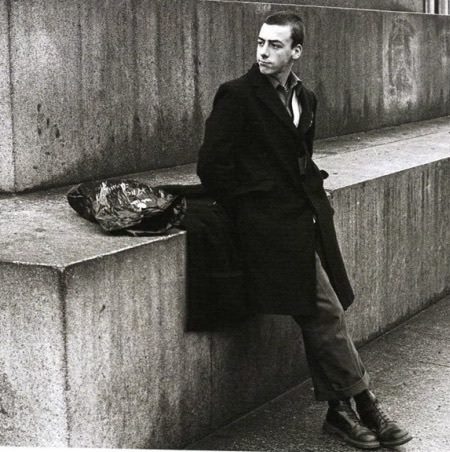
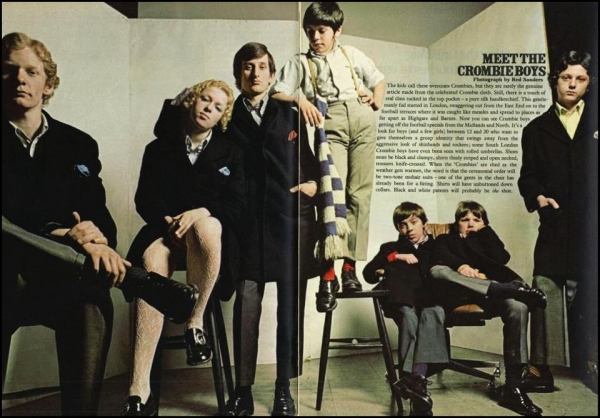
The hero of Winter dressing will always be the overcoat. Warm, luxurious and thoroughly practical, a beautifully tailored overcoat gives any wearer an air of stature and style.
What is an overcoat? Not to be confused with a topcoat, an overcoat is a tailored coat which is traditionally knee-length or longer. Made from a warm, heavyweight cloth, such as wool or a wool/cashmere blend, they can be either single or double-breasted. They usually feature a single rear vent.
The overcoat has been a key part of a gentleman’s wardrobe since it was invented in the late 18th century. They were often worn as formalwear to represent the wearer’s social status or as part of their uniform, both professional and military. The style of the overcoat hasn’t changed much since then, apart from some very subtle changes made according to whatever the trends are at the time.
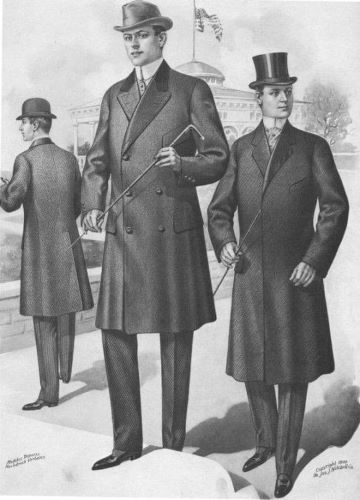
It was, for instance, very fashionable during the Regency period to wear form-fitting clothes, subsequently, the overcoats of the time were worn closely fitted to the body; usually double-breasted in style, with waist seams and a flared skirt. As the popularity of the overcoat grew and it became available to the working classes, the silhouette became looser, so as to accommodate their lifestyle.
There are several styles of overcoat, all variations similar but subtlety different.
The first I draw attention to is the Chesterfield. It became fashionable in the 19th century. It is said that the Earl of Chesterfield had this style of coat made by his tailor. But, whether he is actually the creator of the Chesterfield is debatable, purely because the similarity of it to other coats. The coat is available both in single-breasted and double-breasted. Quite often made in a woollen cloth with a herringbone pattern. It usually has a fly front and is knee-length or slightly longer. Some will have slanted flap pockets like a hacking jacket, including possibly a ticket pocket, and a welt pocket on the chest.
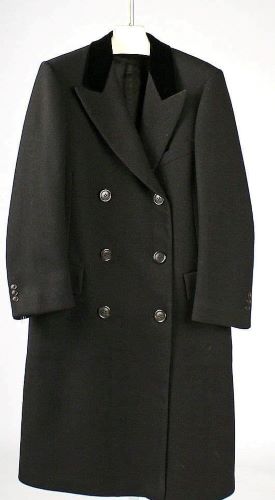
Another style is one that is not mentioned a great deal these days and owes it’s look and use to the Military. Called the British Warm, this coat is made of thick Melton wool like the Pea Coat. It has epaulettes and is double-breasted. Usually two flap pockets, and no ticket pocket. There is also a variant of this coat that usually comes in Cashmere. This one is usually longer and is similar in style to the Trench Coats that officers wore in WW1.
Next, we come to another variant, and that is one called The Covert. This coat is quite similar in style to The Chesterfield. It is slim-fitting, sits above the knee, and although has features in common with the Chesterfield, such as a fly front, the same pockets, such as the three flap pockets, and a chest welt pocket, and the inclusion of a velvet collar. It is the twill fabric, and the fact it can be worn all year round makes it popular. Originally it was a hunting or riding coat. On the inside of it, there is usually another large pocket level with the thigh, which was usually used for provisions or ammunition. So quite possibly that’s the reason why so many old-style “Gangsters” used to like wearing them.
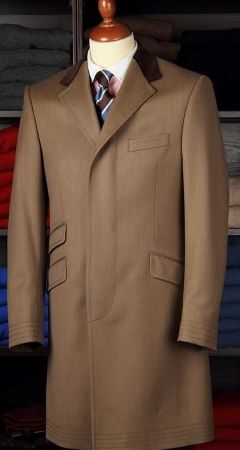
Lastly, we come to the one style that has become well known especially in the UK, and that is The Crombie. Although in regards of style it has been around since the end of the 18th century. The brand Crombie didn’t produce coats of it own until as recently 1985. Crombie was essentially a fabric manufacturer, and their woollen mill was established in 1805 by John Crombie in Aberdeen, where it was able to produce a high-quality woollen fabric. John saw that it was good business to sell these fabrics they made directly to tailors, as well as other merchants.
By the mid 19th century its fabrics had become not only fashionable on Savile Row, but we’re being exported on a global scale. During the American Civil War, for example, Crombie’s booming business was able to provide the grey cloth used to uniform the Confederate Army, all while markets in Canada, Japan and Russia were getting well established, and all by the turn of the 20th century.
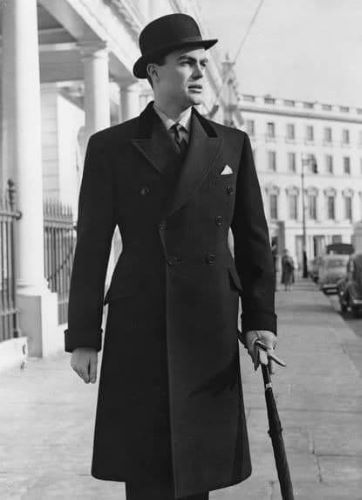
Crombie produced hundreds of miles of cloth for blankets and uniforms during both world wars. Between them, the Crombie family sold the business to Salts – a company named in honour of the entrepreneurial Yorkshireman Titus Salt, who built Saltaire and popularised alpaca. In 1958 Salts was subsumed into the Illingworth Morris empire, and later inherited by Pamela Mason, the ex-wife of James Mason. During the 1980s the group was acquired by Alan Lewis, the Conservative Party’s vice-chairman for business.

Under Lewis, Crombie’s emphasis shifted: in 1985 the first Crombie-branded collection of coats and other wares were produced, and in the early 1990s production moved to Yorkshire. The collection of Crombie branded clothes is still going strong – garments include plenty of City and skinhead-friendly covert style coats, and what we would term The English Town overcoat. Which is tailored from thick woollen cloth.
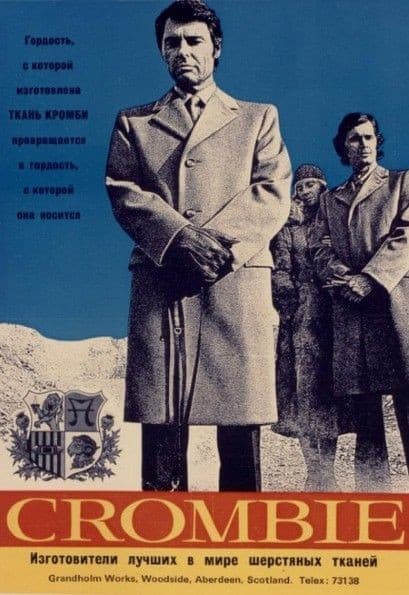
There are different variations of this coat, and many other brands often do their own versions. Next for instance do a Crombie style coat called an Epsom. But, where it differs from the Crombie, is that it doesn’t have the welt pocket on the left chest. Any well dressed Mod, Skinhead or Suedehead, would be frustrated by this missing detail, I am sure. But for the chap who wants a coat to go to the races, or work in the city. It isn’t a bad coat. All of these coats do their job. They serve their purpose and keep their wearer clean and dry. So whether you are a Russian Spy, a Gangster, a Banker or a racing enthusiast, or just an average Joe. There is always an overcoat worth getting, and they always look smart and are perfect for when things get a bit chilly.
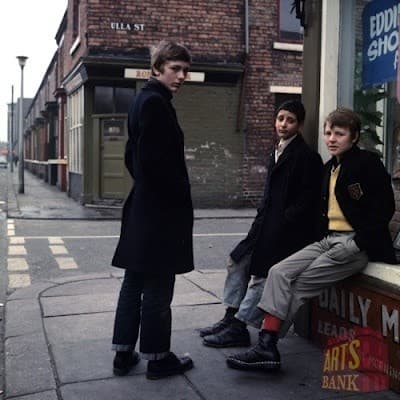
Top Image from Sunday Times Magazine (1971)
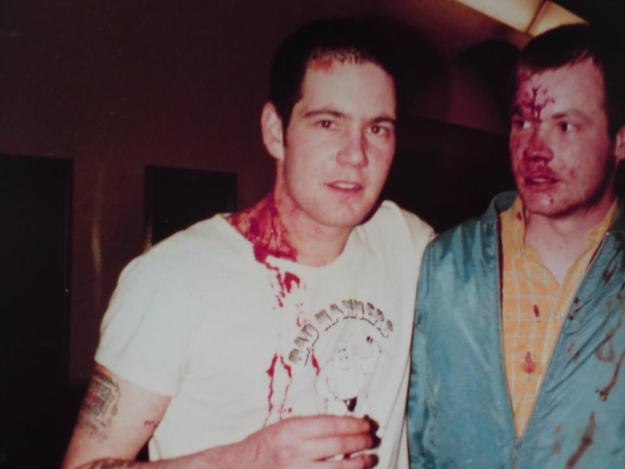
Skinheads: the cult of trouble
Skinheads streaming out of Camden Town underground tonight look hard and they know it. The crop is the style, but it can also be the weapon: it’ll nut you if you look too long or you don’t step out of the way, if you’re wearing the wrong uniform or follow the wrong team. Outside the Electric Ballroom four Special Patrol Group men stand staring at the line of skinheads waiting to pay £3.00 to see UB40, staring at the anti-fashion parade.
The smart look is sta-press trousers, Ben Sherman shirts and polished Dr Martens. The tougher look is a short-sleeved shirt displaying the tattoos, bleached Levis with the braces hanging loose round the legs. The real hard cases have tattoos on their faces. One has a small cross on each cheek. Most of the girl skins look really young, about 13, and are dressed like the boys in shirts, jeans and boots. But some wear short skirts, like one black skinhead girl who’s got brown monkey boots over black fishnet tights.
The police point and giggle at all the girls in mini-skirts. Now and again they try to show who the real tough guys are by frogmarching the odd skinhead to the back of the queue.
Skins: the image is white convict, the music is black. (Remember Norman Mailer’s article on the cult of hip, ‘The white Negro’?) Groups like UB40 – the name comes from the DHSS code for the unemployed – are now called two-tone because they put black and white musicians together to play ska, an early form of reggae coming out of Jamaica, and popular with the first wave of British skinheads in the 1960s.
It is not just skinheads who are into two-tone. Punks, Rastas, rude boys (skins in mohair suits), and a few long-hairs, are here too. But inside the Electric Ballroom, this huge and airless hall, it’s the skinheads who make the atmosphere charged . . . . There’s a loud crack and heads turn. But it’s just a skin who’s finished his can of Coke and smashed it on the floor.
A skinhead tries to make an art form out of machismo. He walks chin out military style, with a duck-splayed swagger. He sucks hard on his cigarette, chews his gum with a vengeance. He doesn’t smile too much, unless he’s with his mates at the bar. The only time a skin looks somehow vulnerable is when he’s dancing – never with a girl, always either alone or with other skins – with his eyes half-closed, dipping his shoulders rhythmically. Skinheads are great dancers.
‘It’s just fashion, innit?’ says a 16-year-old from South London, watching his mate zap the Space Invaders in the bar, rocking gently to the reggae of Reality, the warm-up band. Two girls – one has MINI-SKIN N4 DODGER painted on the back of her army-green jacket – run full-tilt through the bar; scant regard for drink or bodies. Skin girls aim to be as street-tough as the boys. They strut to the front of the queue at the women’s toilets. No one complains.
Although skin boys don’t hang out with the skin girls, every now and again a boy will just waltz up to a girl, kiss her violently for a couple of minutes, before moving off wordlessly. Girls are okay for kissing and fucking, but you don’t talk to them, not in public anyhow. These boys, with their POW haircuts and markings, their enamel Union Jack badges, their polished boots – these boys don’t get too upset if they’re taken for fascists. Fascism is a laugh.
A boy in a red Fred Perry tennis shirt greets his friend with a Nazi salute, grinning. Another skinhead wandering round the bar has WHITE POWER written in blue on his T-shirt. A black roadie for UB40 stops and scowls at him, but the white supremacist ignores the challenge, walks on by.
At 10.30, UB40 come on stage and there’s a rush from the bars as the skins make for the front of the hall. Two Rastafarians and six whites in this band. ‘This is one of our Rock Against Thatcher numbers,’ says the frontman. A few half-hearted cheers. ‘Are there only 50 people here into Rock Against Thatcher?’ He gets a bigger cheer. A drunk skinhead staggers through the packed dance floor, trying to kick the guy running away from him, before giving up the chase and collapsing on the floor. Everyone ignores him. Be cool.
The final encore over, the lights come on, and the plastic pint pots are ceremoniously crunched. West Ham skins sing ‘Wembley’ (pronounced Wemballee) on their way out, throwing down the gauntlet to the Arsenal.
It’s not picked up. It’s been a quiet night, after all. Police are back on duty outside as the dancers spill out, dripping with sweat this warm night, and traipse down the street for the underground train home. Home to their parents, most of them, though there is one last pleasure to be squeezed out the night: to chant and sing and look tough on the tube. Scaring the straights is half the fun.
It always has been. Seat-slashing Teds, mass-rioting mods and rockers, football thugs, skinheads, drug-taking hippies, foul-mouthed punks . . . Sub-editors write headlines, politicians fire moralism from the hip, youth movements come and go.
Skinhead first arrived in the late 1960s. It was a sort of male working-class backlash against mods grown too narcissistic, effeminate and arty. Football fans discovered a style. I remember 4,000 Manchester United skinheads on the terraces at Elland Road, Leeds, in 1968. They all wore bleached Levis, Dr Martens, a short scarf tied cravat-style, cropped hair. They looked like an army and, after the game, went into action like one.
Skinheads never really disappeared from the football terraces. But the clothes, like skinhead music (soul, ska, home-grown rabble-rousers like Slade), went out of fashion, until the punk movement turned style inside out, starting in late 1976. A new generation of skins started following the band called Sham ’69. ‘If punks are about anarchy, then skinheads are the most anarchist going,’ Jimmy Pursey, the band’s frontman, once told me in his Hersham flat, above a bookie’s. ‘They fight, run riot, don’t give a fuck about anything.’ Pursey withdrew from the Rock Against Racism carnival in Brixton later that year because he feared that his supporters might smash the whole thing up. Sham ’69 folded the next year.
Mark Dumsday never liked Sham ’69 anyway. He has been a skinhead for two years, he is 18, and moved to London a years ago after working on a fairground in Southend, his home town. He now lives in a short-life ex-council flat in King’s Cross. He gets £23 a week from social security.
It’s five in the afternoon. We’re sitting in front of a black and white portable TV, here in the living room of this fourth-floor flat in Midhope House. Mark says he usually gets up around two, watches television, then goes out for a drink, or to a gig, or whatever. His father is a welder. His mother works for Avon cosmetics.
‘When I was at home,’ he says, ‘I didn’t get on very well with them. Now it’s sweet. All right now. They don’t mind me being a skin. They quite like it, like the haircut, think it’s tidy.’ He’s looking at the TV. Shots of bikini-clad women on Caribbean beaches. The Eversun commercial.
Why did Mark first get his crop? ‘I dunno. I used to hang around with bikers, the Southend Hell’s Angels. In August ’78, when I came off the fair, I had a crop. It was something different at the time. At Southend there was only about ten of us. Now there’s loads of ’em.’
The tattoo on his right arm is a caricature of a skinhead. ‘Most skins have got this one,’ he says, pointing to it. ‘Or a lot of the BM [British Movement] skins have got the phoenix bird.’ Pictures of Debbie Harry and Olivia Newton-John on one wall, and of the West Indian reggae artist, Peter Tosh, smoking a joint on another. ‘Yeah, I like a blow. I don’t know any skinheads who don’t.’
He left school at 16 without taking any exams. ‘I was hardly ever there. Used to bunk off all the time.’ He’s thought about getting a job as a despatch rider, but he’s happy enough on the dole. He has no girl friend. ‘I don’t bother going out with them,’ he grins. I ask him why it is that skinheads always hang out in all-male groups. Is it that they don’t know how to talk to girls? ‘That’s rubbish,’ he says. ‘Anyone can pick up a bird. Anybody.’ But Mark has never picked up a skin girl. ‘I think a girl with a crop looks silly.’
Skinhead isn’t fashion, he says; but he’s not sure what it is at all. What does he get out of it? ‘Not a lot.’
Two young Glaswegian women, both with dyed blonde hair and one of them tattooed, arrive with shopping bags. ‘They’re just staying here,’ says Mark. ‘Ain’t got nowhere else to go . . . ‘ No, the only thing that’s kept skinheads going is it’s not commercial, like punk was and mods are. I want to stay one till I’m 21.’ Why? ‘Dunno. Stuck it out two years. Might as well make it five. If I quit, I’ll probably turn biker.’
A lot of the skins who used to live on this estate are now inside, but Mark has stayed pretty clean. ‘I only have one offence against me. For possession.’ Of drugs, that is – ‘speed’, amphetamines. ‘I’ll have it occasionally, not very often. A lot of skins are into glue, but I’ve never done that. If you can’t afford the right stuff, don’t do that.’ The television picture distorts. Mark gets up, fiddles around with the aerial, which is stuck in the grille of a gas fire. One of the Glaswegians notices a mark on the back of his head. She asks him what it is. ‘Scar,’ he says. A woman on the box, now in focus, reckons the boa constrictors are very popular pets now. Mark sits down again.
Life here, the way he tells it, is one long struggle against the law. ‘The Old Bill were up here the other night. Took me curtains away to analyse them. Went right through the place. They went downstairs and asked this geezer, “Is that bloke upstairs a nutter?”
A prostitute who lived on this estate was murdered. Most of her body was found in Epping Forest; police expected to find the rest here, in Midhope House. ‘The cop was saying, “You did it, didn’t you? I think you done it.” I just laughed.’ Mark says he did know the prostitute. ‘Didn’t like her either.’ A sudden strong smell of varnish as the two women start painting their nails.
‘Yeah,’ Mark continues. ‘You do get a lot of aggravation from the Old Bill. In Southend I’ve been nicked twice for things I never done. My mate kicked in a rockabilly and I got put in a cell for 24 hours for that . . . and here they just stop you on the street, RO you. Give it all out on the radio. See if they’ve got warrants out for your arrest.
‘I’ve been beaten up the Old Bill. There was me and another guy, me mate, he ran away. They took me home, found a starting pistol. Then they got me in the back of the car. Twisting my neck and punching my mouth. Bastards they are . . . and you get a lot of DS [drug squad] at gigs. Round here the DS are easy to spot, just old geezers. But at gigs some of ’em are really young. I was at Dingwalls [also in Camden Town] the other night and suddenly the DS was all around us.’
Mark, the letters of his name tattooed on his four fingers, flicks a hand over his crop, asks me if I want a cup of tea? Skinhead crops come in four categories, from grade one to grade four. Mark’s is grade one, the shortest. He has to get it cut every three weeks.
Over the tea Mark says he has no time for mods (‘just a load of wimps’), Teds, rockabillies or Asians. Why Asians? ‘I don’t like Pakis and I don’t know any skinheads who do. Pakis just don’t mix. You’ll see one of them,’ he points to the Peter Tosh poster, ‘with a white man. Never see a Paki with one. Paki-bashing is all part of the cult anyway.’
There is an Asian band in south London called Alien Kulture who take gangs of Asian youth with them wherever they play. Mark had said he thought ‘niggers are okay, I like the music.’ But he just shakes his head about Alien Kulture: ‘I don’t think they’ll last. I don’t think they’ll last five minutes. A Paki band? I never heard of such a thing.’
Tonight Mark is going to see Madness, the all-white ska band, at the Lyceum. Madness are darlings of the British Movement and National Front skins: somebody’s going to get hurt tonight. Mark himself says he isn’t into fascism, and he isn’t into violence. ‘I don’t fight unless someone provokes me.’ But what is it then that provokes skins to punch, kick, nut and razor? ‘It’s just the cult. Skins are trouble, aggro, Paki-bashing, the lot. The cult is trouble.’
Choose your own cult and live inside it. Skinhead is trouble. The cult is big in London, Birmingham, Liverpool, Manchester. In Glasgow and Belfast, punk is still the biggest youth movement. In the country as a whole, the ‘heavy metal’ revival is in the ascendant (loud rock from the likes of Saxon, Iron Maiden, Def Leppard). No one is really too sure what is happening in the youth culture. Fascist skins, left-wing skins, and yet more skins who just like the clothes and the music? A psychedelia revivial, a rhythm-and-blues revival? Black skins and white rude boys? Asian rock bands?
I take a train up to Bradford. Bad Manners are playing at the university. Bad Manners are from Stoke Newington. All white apart from the drummer, they say they got to know ska sounds hanging out in the local black clubs. The lead singer, Doug, has been a skinhead since the first time round, in 1968. ‘I’m the leader,’ he says, elongating the vowels to fake dumbness. ‘I’m the one who encourages all the violence at the gigs. I think you haven’t had a good gig unless you’ve had a good punch-up’. He smacks his ample fist into his palm and laughs.
The accent, like the clothing, is constructed from the cartoon worker, the Jak navvie. Skinhead style takes the bourgeois caricature of its class (dumb and violent) and makes it yet more extreme. Shave off the hair to emphasise brainlessness and criminality, make the head ugly and lumpen. Wear boots to emphasise drudgery and violence. A donkey jacket, like the one that Doug wear on stage, completes the look.
Active in a housing co-op in Stoke Newington, Doug is smart all right, he knows all about the parody and he has no time for racist gig-wreckers, but what can he do except make jokes about it? Trapped by his chosen style, the farthest he can go is to say, ‘Well, anyone who votes NF, they’re not too clever.’
The band are changing and tuning up in a lecture room. The tables are littered with empty bottles of Stella Artois, the remains of pasties. ‘I’m tough, I’m rough’, shouts out one of the band, sub-Clint Eastwood. ‘I’m mean, I’m clean’, screams someone else.
The boys from Stoke Newington, living on £25 a week and touring the country, are having a good time. After an American football-style huddle they rush out to play. No violence, of course, at a college gig. Bradford seems a lot further than 200 miles from London where, the next day, I have an appointment with the National Front.
I ring the bell and the front door is opened cagily by a fat man with greased back hair and an army-surplus jumper. Joe Pearce, the organiser for the Young National Front, and editor of their magazine, Bulldog, shows up. He looks every inch like a college boy, which he was till he was forced to abandon his course on polymer technology at the South Bank poly. His medium-length brown hair is well groomed. He wears a green car-coat and beige flares. He says he’s told the NF skins to meet us down at the pub. We live Excalibur House, the National Front’s Shoreditch headquarters.
Proud of the Front’s impact in the youth culture, Joe Pearce boasts of widespread support among heavy metal fans and mods, as well as skins. ‘Like the mod movement in the East End is NF. There’s a link between the glory boys and the NF, the gang that used to follow Secret Affair and now follows the Cockney Rejects. They’re the ones that have mod tattooed in the inside if their lip.’
The first skin to arrive is Gary Munford from Ealing YNF. He was first a skinhead in 1970, when he was twelve. Since then, he’s been a suedehead and a soul-boy. ‘I used to go down the discos, wear pegs and American bowling shirts. It was such a posy scene. I was spending about £30 a week on clothes. And then there was all the niggers at the discos and white slags hanging about with them.’
The few black people in this bar start finishing off their drinks. Another crophead sits down at the table. He’s wearing an army-camouflage flying jacket. I ask him what he does for a living? ‘Demolition,’ he says, with a mechanical chuckle. His name is Alex Barbour.
The recent National Front march in Lewisham was 80 per cent skinhead. What’s happened to the older support? ‘More important you have the young support. Look at the police running away, like they did at Bristol. Older people aren’t prepared to take that violence. Young people have got the bottle to go out there and . . . ‘ Gary Munford clenches his fist, adorned with punching rings.
‘If there’s going to be a ruck, skins’ll be the first ones in, they’ll steam in. Except I do disagree with them going down to Brighton and Southend and beating the shit out of each other, when they could be beating shit out of more constructive people, mentioning no names.’ His friends laugh.
Tony Duck and Rita Hope, from Haringey YNF branch, finally turns up. He is an unemployed electrician, and she works at Swan and Edgar on Piccadilly. He thinks a lot of recent skin converts are ‘just a bunch of wallies who’ve learnt how to chant Sieg Geil at gigs. They’re the sort of people who’ll grow their hair and start going round with blacks again.’ Tony says that, in his branch, there are two full paid-up black members. ‘It’s because they really want to go home.’
Gary Munford says his girl friend is in the Front. ‘She;s been on marches with me. But a lot of the time the blokes tell the birds not to come. There’s gonna be a riot.’
‘Half of us can look after ourselves just as good as you lot anyway,’ says Rita Hope. Even here, in the backwoods of the NF, some cracked reflection of a women’s movement: a woman’s right to ruck.
Jeering at this notion of physical equality, Gary Munford recalls a time he arrived at a march with 14 skins, to find 200 Anti-Nazis blocking their path: ‘We got all the girls behind us, said keep walking, then just ran at them shouting, “White youth unite.” They all just turned and ran. Whatever anyone says, our blokes have got more bottle.’
‘The birds of the reds are worst,’ says Rita Hope.
There is a vicious feel to those East End streets, where all the white boys are skins, which is absent in Somers Town: the small triangle between St Pancras, Euston and Camden. There is no reason to go through Somers Town, unless you happen to live in one of those blocks of council flats that comprise the neighbourhood. At around a quarter to four, boys are pouring out of the local school, Sir William Collins, an all-boy comprehensive. The blacks walk home with the blacks, the whites with the whites.
Two white skins, Andy Sophocleous and Steve Rawlinson, both 13, say that out of 165 boys in their year, about 70 are skins. They reckon the school is all right: ‘Same as all schools really. Some parts you like, and some you don’t.’ What is it they don’t? ‘Some of the teachers. Some of ’em are grumpy. Don’t let you have any fun in class. Kids work best if you can have a laugh, too.’
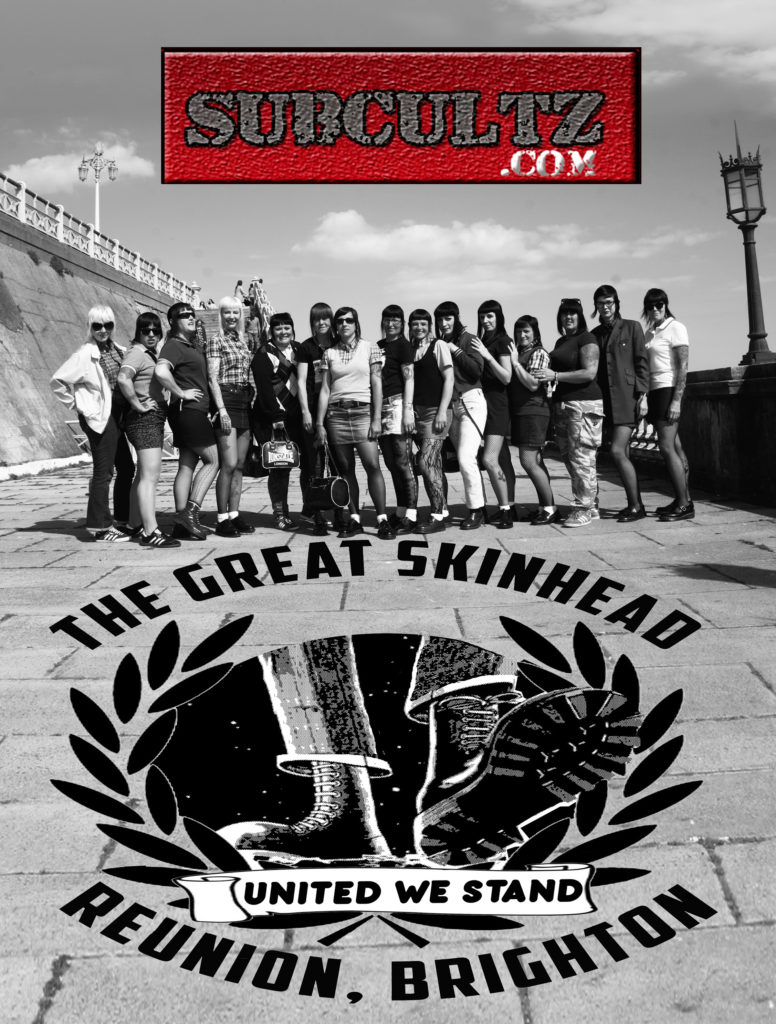
Andy is carrying a school-supplied acoustic guitar. ‘I want to be in a band when I’m a bit older.’ I ask him what his parents said about him becoming a skin? ‘Well,’ he pauses. ‘I walked in after my first crop. and my Dad goes, “Oh, what? You think you’re a trouble-maker now?” And our teacher, Mr Malinson, he sort of goes to me and him,’ pointing to Steve, “‘If I saw you two on the street, if I was a cop, I’d pick you up before two normal kids.” For sus, like. People can get the wrong idea because of the hair.’
‘My mum don’t like it,’ Steve says. ‘Thinks you’re going out just for trouble . . . Best ti be normal if you think about it. Then you don’t get beaten up by no one.’ Steve and Andy aim to keep out of trouble. That’s why they don’t go to gigs. ‘There’s trouble on the train. They won’t let you on ‘cos they think you’ll vandalise everything. On buses they can make you sit downstairs.’
Moved on, stopped, questioned, denied entrance – skinheads these boys reckon, have a lot to put up with. ‘Yeah, they get a hard time, especially from the police, and quite a few teachers. One teacher suspended a skin. He had a swastika shaved into his head. I think that’s bad as well,’ Andy says. ‘I think he should have gone home. He would have got into a lot of trouble with the coloured kids, anyway. He would’ve got beaten up. The school’s roughly half and half, a few more whites . . . ‘
They’re getting a bit fidgety. It’s 4.20 and the football is on, live from Rome, at 4.30.
Down through Somers Town, over the Euston Road (a territorial divide for the gangs round here), and again on into King’s Cross. Just down the road from the Midhope House, where Mark Dumsday lives, is a youth club called the Tonbridge Club. Open 6 to 10, six days a week, it’s the hang-out for local kids too young or too poor to go drinking and dancing. They come here to play table tennis, snooker and pinball, listen to records. Most of the boys here, too, are skinheads. One of them, Michael, tells me he’s up in court next week for not going to school. He’s 15. Why did he get a crop? ‘Dunno. Just like the music, reggae and ska. And I’m into me own band, play bass. Get the name of the band down. It’s called Youth Cult.’
Another skin, Eric McQueen, takes Bob Marley off the turntable and puts on the Sex Pistols single, Anarchy in the UK. Eric is living in a hostel for juvenile delinquents in Westbourne Grove. ‘Well, it started at primary school, see,’ he says. ‘I used to fight all the time. I went to a hostel in Chapel Market and then they put me in Stratford House, a remand home, for six months. From there I went to a community house. Spent a year there, and then I got a job. I’ve had seven jobs since I left school, in shops, factories, decorating, everything.’
And what’s the idea of this place he’s in now? ‘Sort your life out,’ he smiles. ‘It’s all right. Ain’t got many rules, except you got to be in by 12 on Saturdays.’ Eric is 18. He has only had his crop, which is dyed blond, for two months.
Eric tells a couple of young girls who’ve sidled up that he gets about £8 a day from his social worker. They look impressed. I ask him how he got the scar on his left ear? ‘Some nutter.’
Hugh Byrne, who’s also 18, has a crop which is starting to grow out. He’s out of work. ‘He’s a good artist,’ says one of the girls standing by a bar which sells Kit-Kats and Coke. ‘Skinhead is just the thing round this area,’ High says, with the air of someone bored with the whole idea. ‘Used to be a lot of mods round here too, ‘cos the star of Quadrophenia, Philip Daniels, used to live round here. Half the skins round here used to be punks or mods.’
One local skin gang, about 40 strong, have recently given it all up, Hugh says.’They’ve all changed to normal ‘cos they were always getting picked on and that. I used to get picked up by the Old Bill a lot.’ Is that why he’s letting his hair grow? ‘No. Not really. It’s only been two months. I can’t be bothered to get it cut.’
Post-skins. like Hugh, and his friend, Tony French, all describe themselves as having gone ‘normal’ once they’ve let their grow out. Tony French, who now looks like a King’s Road smoothie, used to be involved in all the gang feuds round here. ‘No reason,’ he says. ‘Something to do.’
Reasons? Anyone interested in reasons (for skins, for punks, for Rastas) should take a walk through the meaner city streets, then turn on the TV. ‘We want a riot.’ You must have heard the skinhead chants. ‘We are evil.’ The straight world, the Rastas call it Babylon, is threatened with style: a sneer, a strut, a beat that has soul . . .
The teenagers at the Tonbridge Club start drifting off home at around nine. Youth Cult are playing London Calling down in the basement.
article from 26 June, 1980 by Ian Walker.
Ian Walker
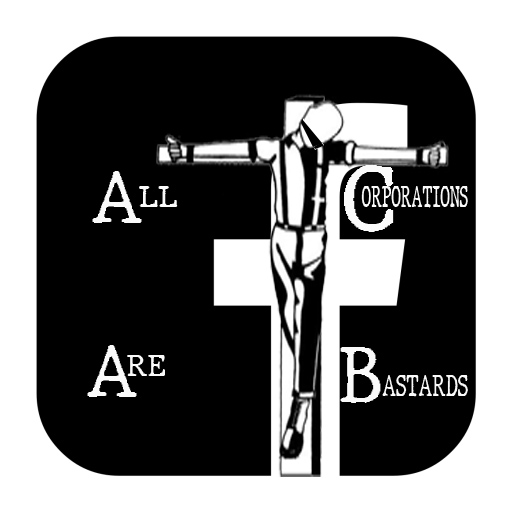
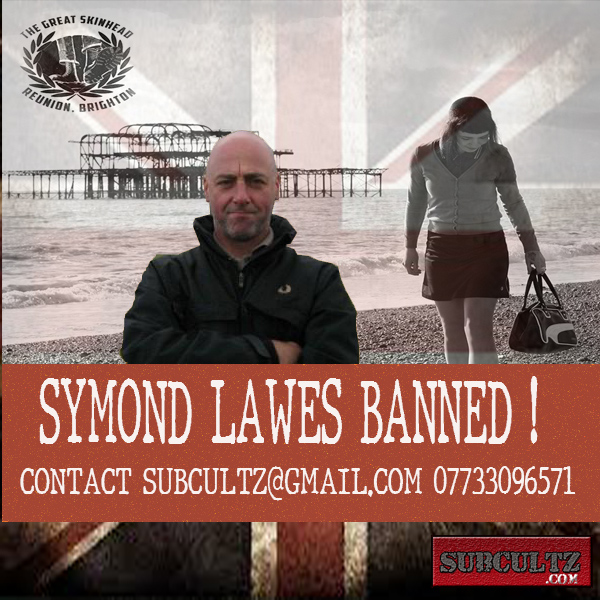 Symond Lawes
Symond Lawes 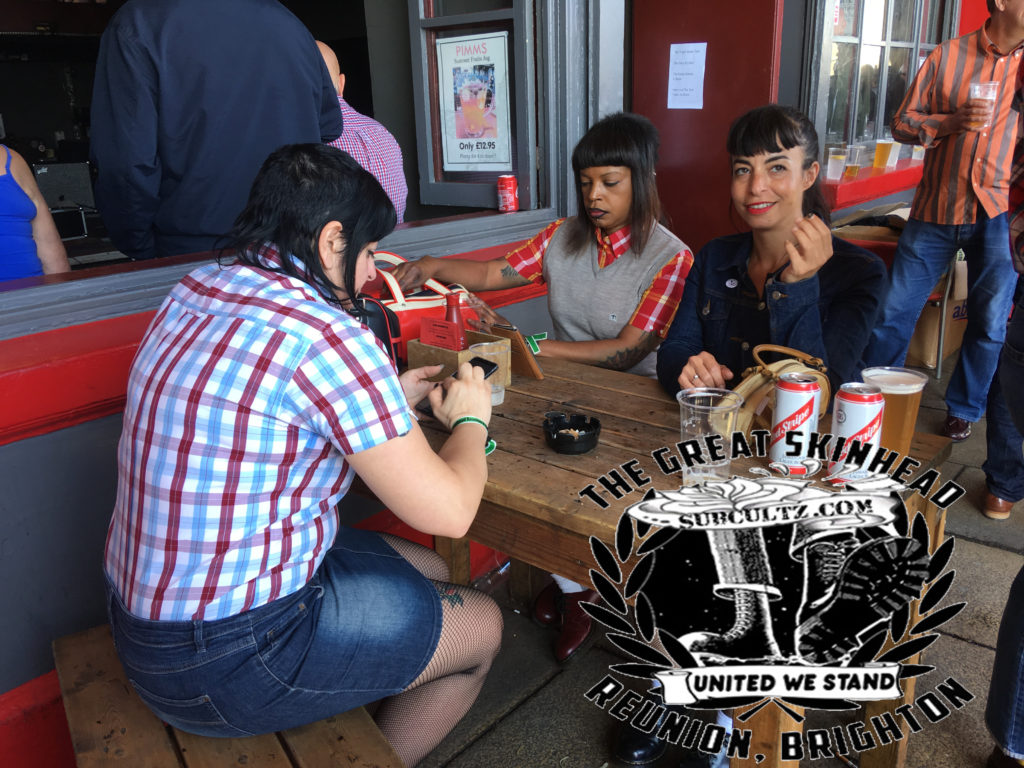
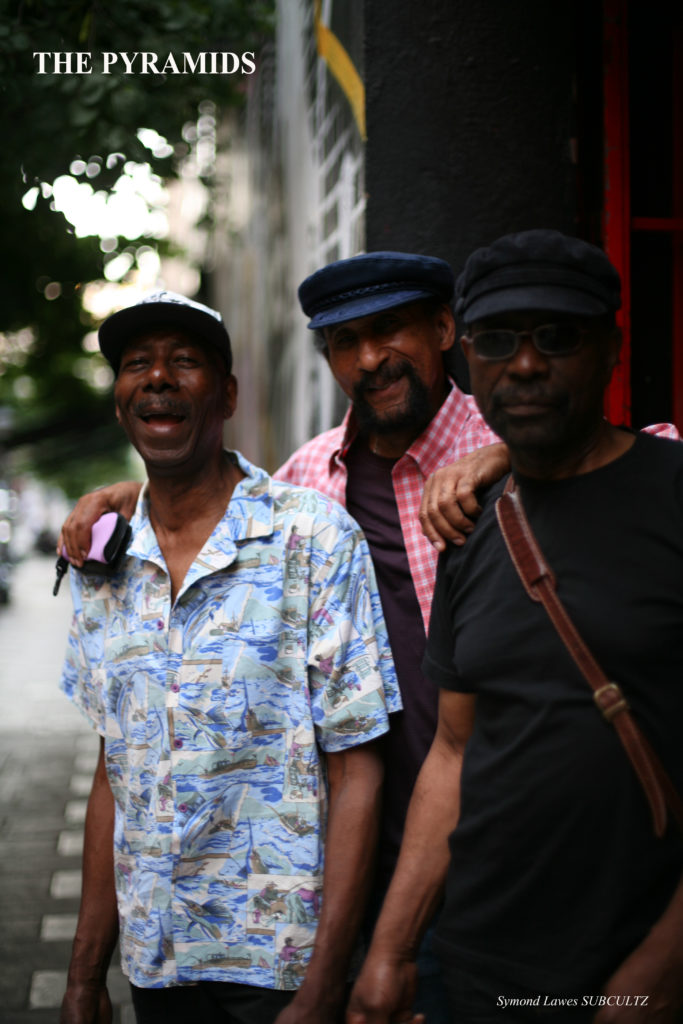
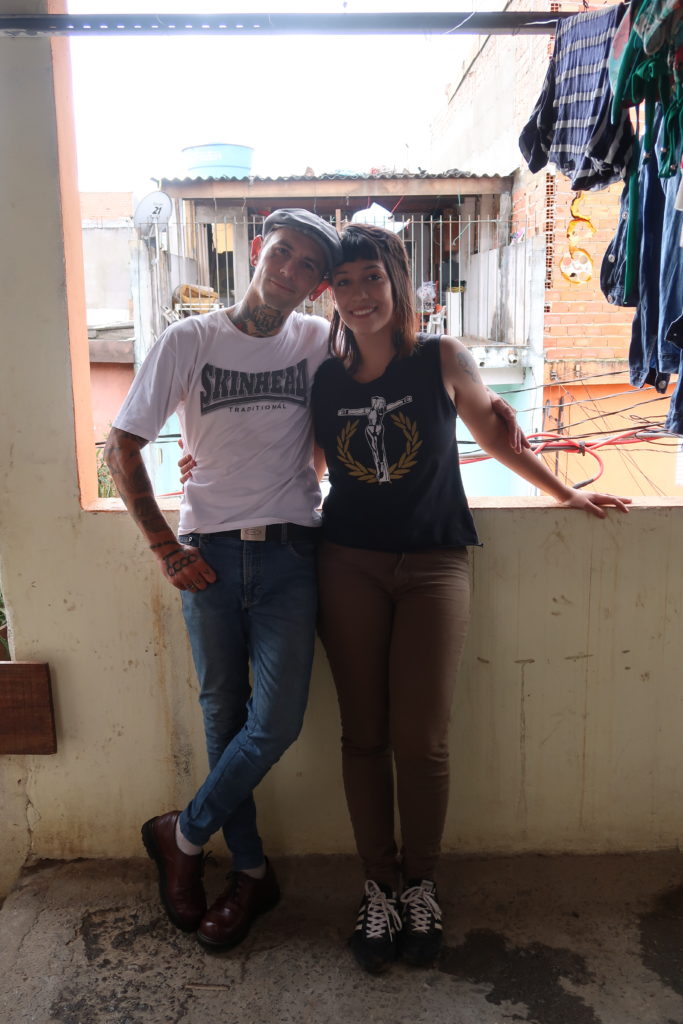 Isabelle Pradel Skinhead Girl, Sao Paulo Brazil banned from Facebook
Isabelle Pradel Skinhead Girl, Sao Paulo Brazil banned from Facebook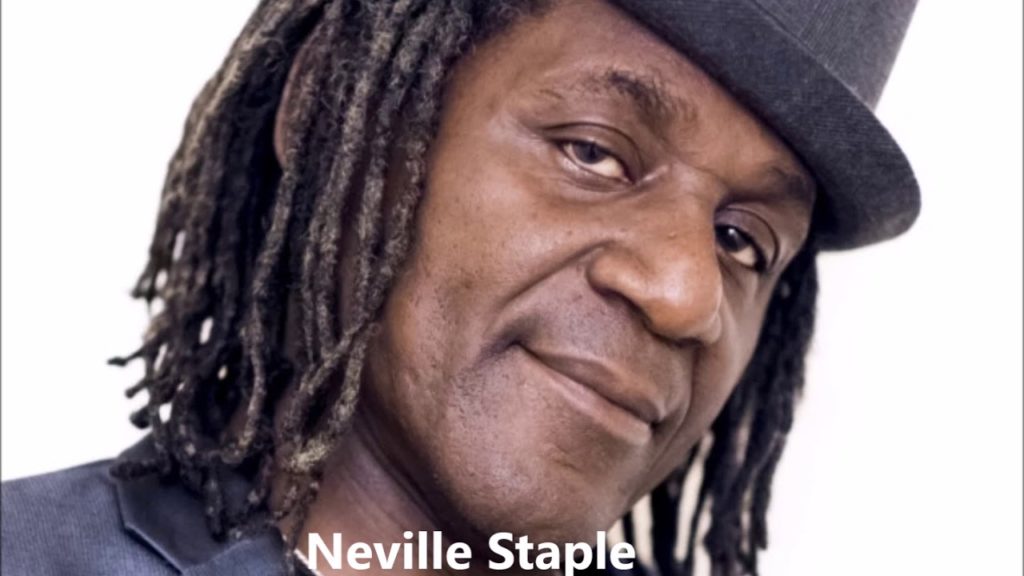
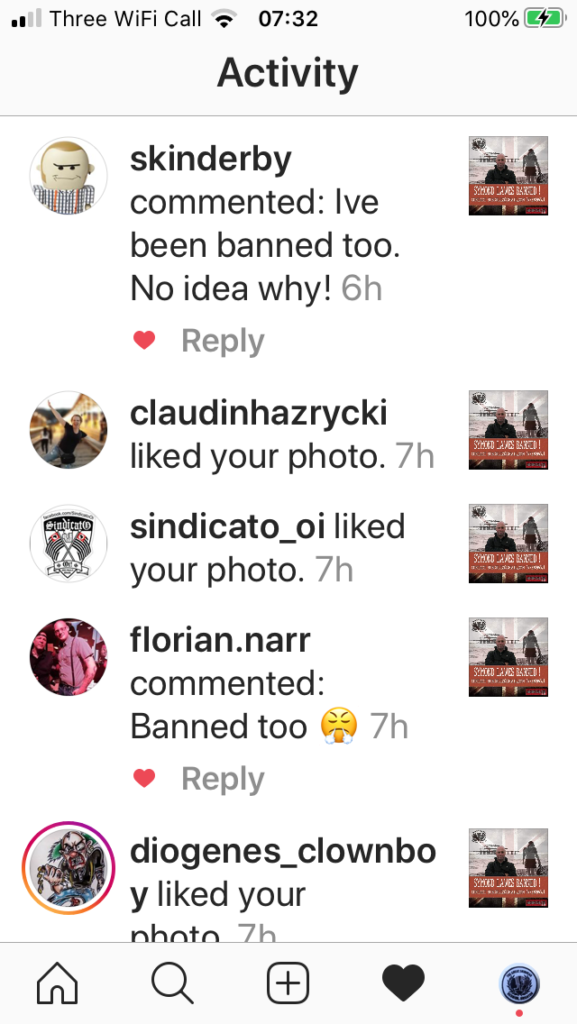 Instagram is awash with people banned from Facebook
Instagram is awash with people banned from Facebook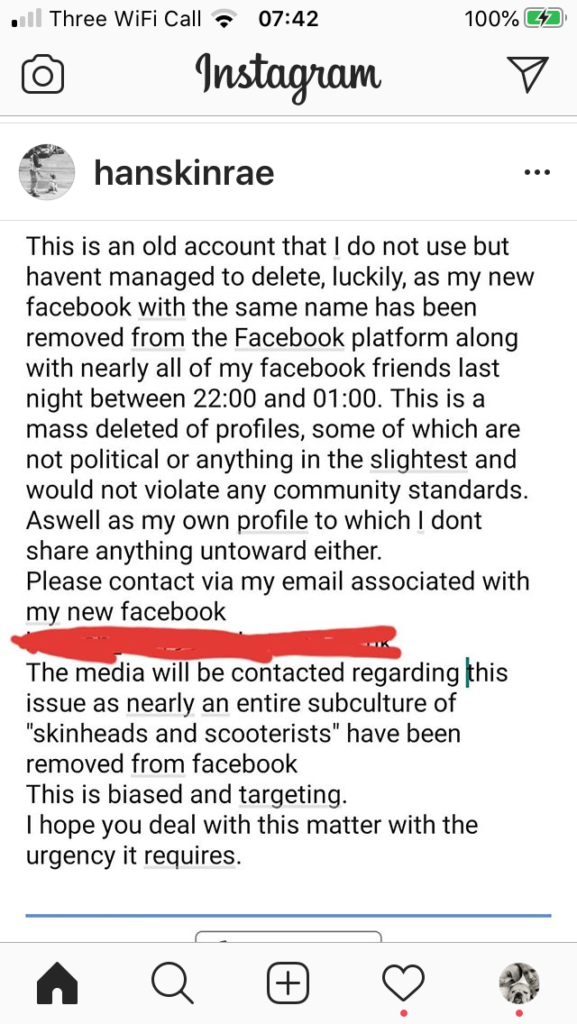 Instagram is full of people talking about losing their facebook profiles
Instagram is full of people talking about losing their facebook profiles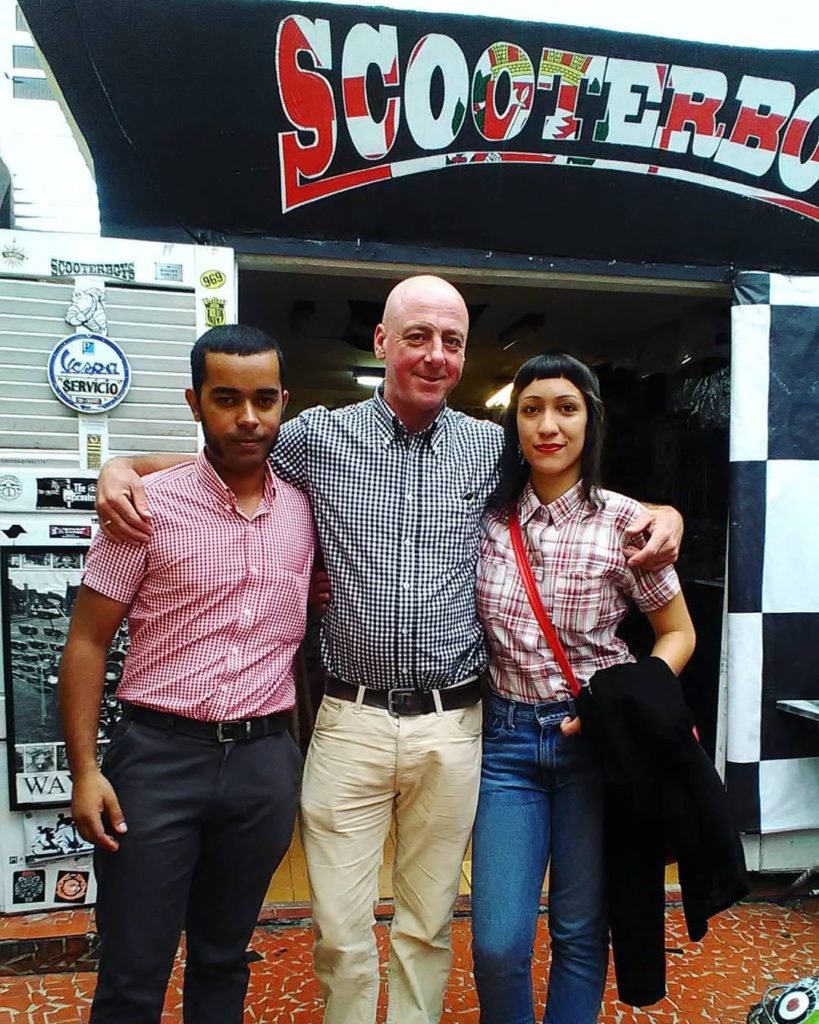 Skinheads in Sao Paulo Brazil
Skinheads in Sao Paulo Brazil 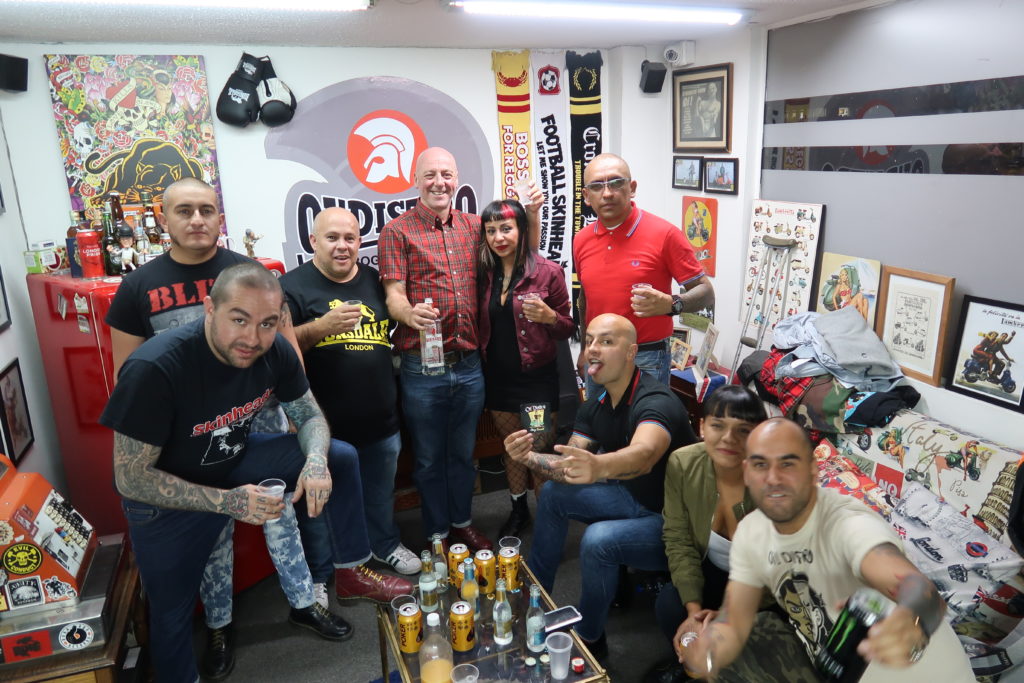 One of the biggest skinhead scenes now is in Bogota Colombia
One of the biggest skinhead scenes now is in Bogota Colombia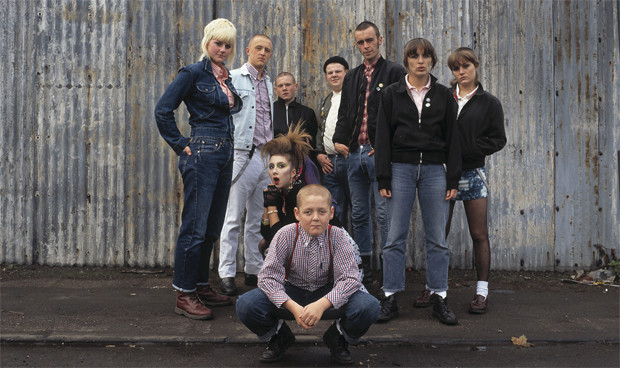
10/5/2020
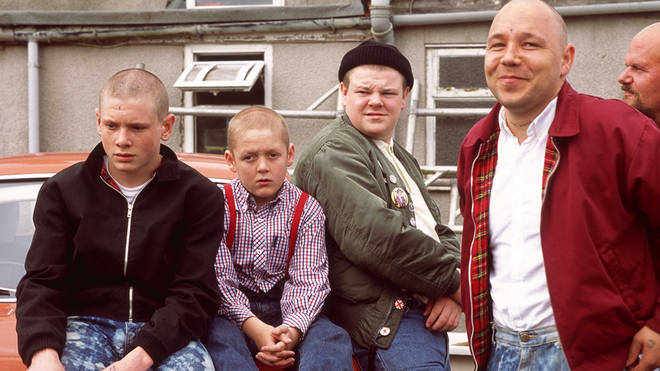
The director has revealed he’d like to to make another instalment of the series, which is set at the turn of the millennium.
Shane Meadows wants to do another series of This Is England.
The 47-year-old director – who previously helmed the 2006 film and its TV spin-offs – has revealed he’s eager to return to the series with a new instalment, set around the turn of the millennium.
Speaking to Andrew Shim – who played Milky in the series – in his Shimmy’s Corona Diaries YouTube series, Meadows shared: “I don’t know when but I’ve got This Is England ’00 in my head, the millennium one, because I sort of thought it would be nice, because when did we shoot the last one? Was it 2015, 2016?
“So, you’re obviously five years away and I don’t massively want to copy the film ideas, but if I went back I’d love to do a millennium one.”
READ MORE: This Is England Set For Final Film?
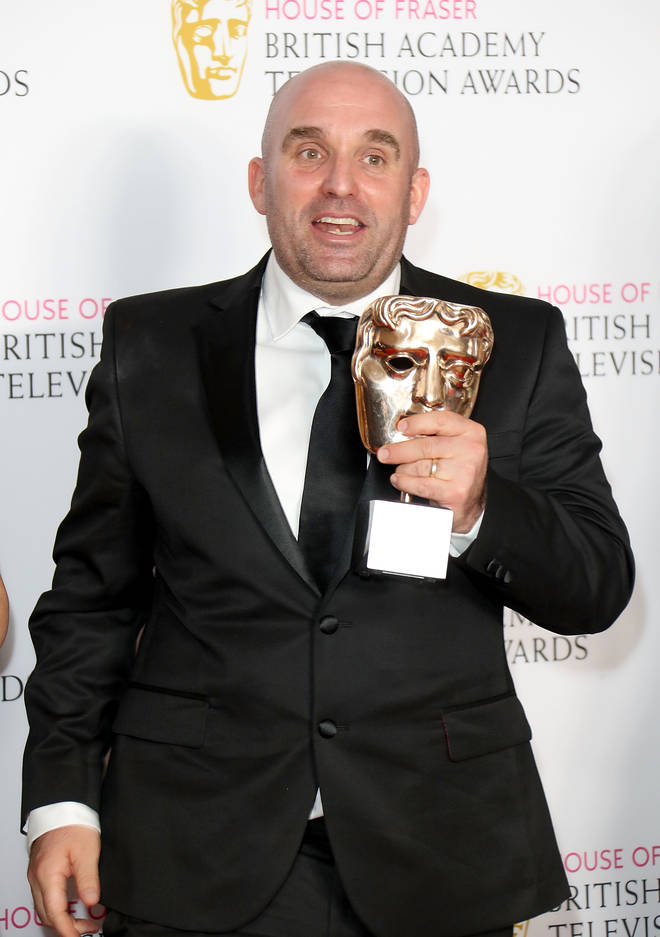
Meanwhile, Stephen Graham – who famously played the fearsome Combo in the franchise – has turned his hand to comedy in new Sky One sitcom Code 404, but admitted he wasn’t sure if he could pull it off.
Speaking during a special junket from lockdown he revealed: “At first, I was quite nervous, actually.
“I said to Danny [Mays], ‘I can’t do this mate, I don’t really know what to do here’. And he was great with me because he’s such a generous actor anyway and a lovely fella. He was like, just do what you do, play it normally… just find the truth in it. I was like, ‘Okay’. And then that’s when I kind of found my place in it.”
Stephen Graham also recently took part in an interview with The Chris Moyles Show and let Pippa show off her best Scouse accent:Pippa shows Stephen Graham her questionable scouse accent!Watch Pippa in action here.Share
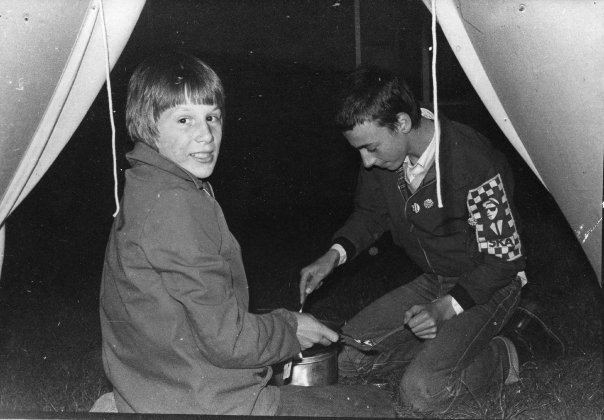
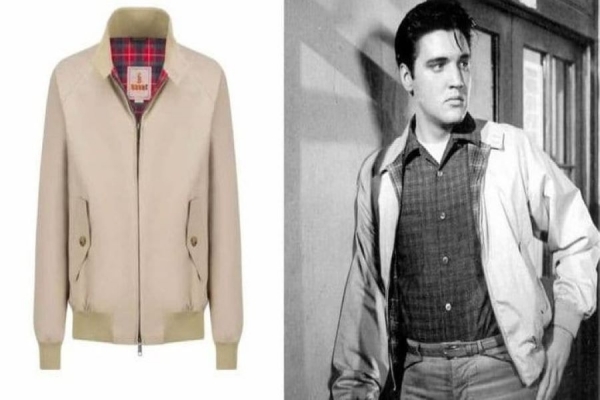
When, it comes to the Harrington Jacket, I feel a sense of pride. I am from the North West of England. I was born in Salford and was brought up in Greater Manchester. For those that don’t know – the versatile and simply smart casual jacket originated in the form as we know it, in Manchester, the metropolis that was at the centre of England’s textile industry and had been, since the industrial revolution.
I mean, if you look at the Twentieth century, and if you had to pick out one British-designed garment that has transcended numerous decades, and had earned its right as a favourite amongst sportsmen and Hollywood greats alike, and infiltrated its way into the wardrobe of fringe subcultures, the Harrington jacket, simply stands taller than any other.
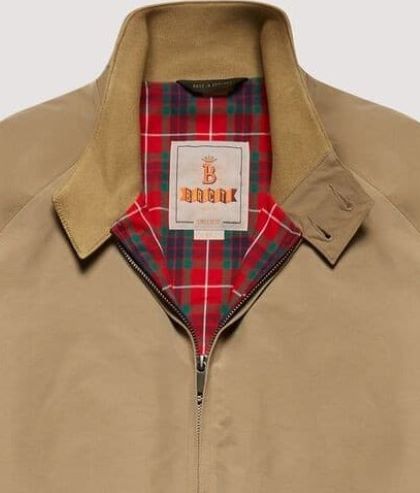
It is impossible not to talk about the Harrington jacket and not begin by paying homage to its originators of the style of this classic and extremely wearable garment, Baracuta.
Baracuta was founded in 1937 by James and Isaac Miller in Manchester, they “designed the G9 (The G stands for Golf) when they set out to create a functional rainproof jacket for the English modern working man,”
The company is inextricably linked to the Harrington jacket. In the same year, it was founded, the brand released the iconic G9, which then only became known as the ‘Harrington’ after the rise of US TV soap opera Peyton Place, in which a character – Rodney Harrington played by Ryan O’Neal – would often wear the style.
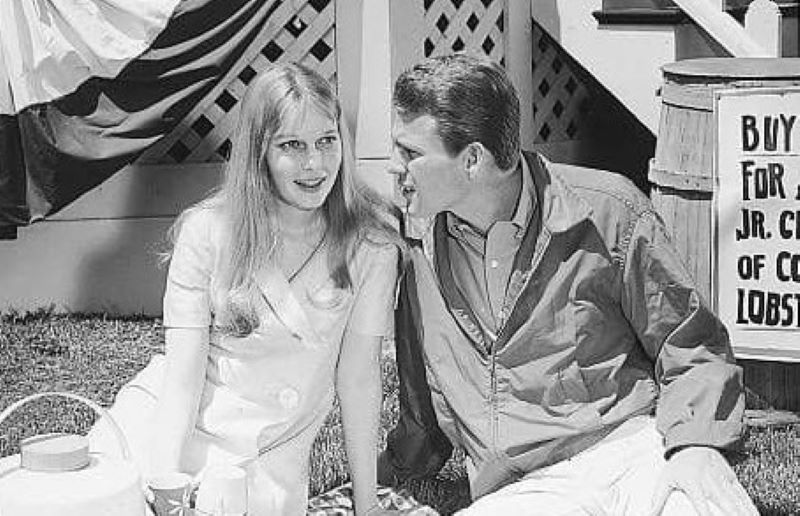
John Simons, the purveyor of American classic styles is considered to be the most influential man in Britain with regards to Ivy Style, and quality garments plays a part in this tale of the Harrington jacket. As aforementioned, there was a character in Peyton Place played by Ryan O’Neal called Rodney Harrington. Legend has it, that Simons would handwrite cards to go in the window next to the garments on show. He would write for example “The Rodney Harrington Jacket” when displaying a Baracuta G9 in his shop window. After doing this a few times the writing of the name was shortened simply to “The Harrington”

The Harrington jacket’s original purpose was to be worn in the great outdoors. Traditionally, its shell is a water-repellent poly-cotton blend with an umbrella-inspired vent on the back to aid the run-off of rainwater so one’s trousers don’t get wet. There are also two slanted flap pockets with concealed buttons and an elasticated waistband and cuffs to keep you dry. The collar is a double-button, stand-up, Mandarin-esque collar which can be snapped shut to stop the incoming rain. There is also a central fastening zip. Overall, it’s incredibly lightweight, yet its signature element is the tartan lining of Lord Lovat, a British commando and chief of the Fraser Clan, who gave Baracuta’s founding brothers permission to use his family’s colours in 1938. Since then, this has remained an unchanged feature on Baracuta Harringtons. Why? Because according to Paul Harvey, a designer at Baracuta, “firstly it must be simple and not follow fashion. Secondly, proportions and balance are vital to such a simple design. Thirdly, it has to feel right. The simplicity of the jacket asks nothing of you and that means you feel totally comfortable wearing it.”
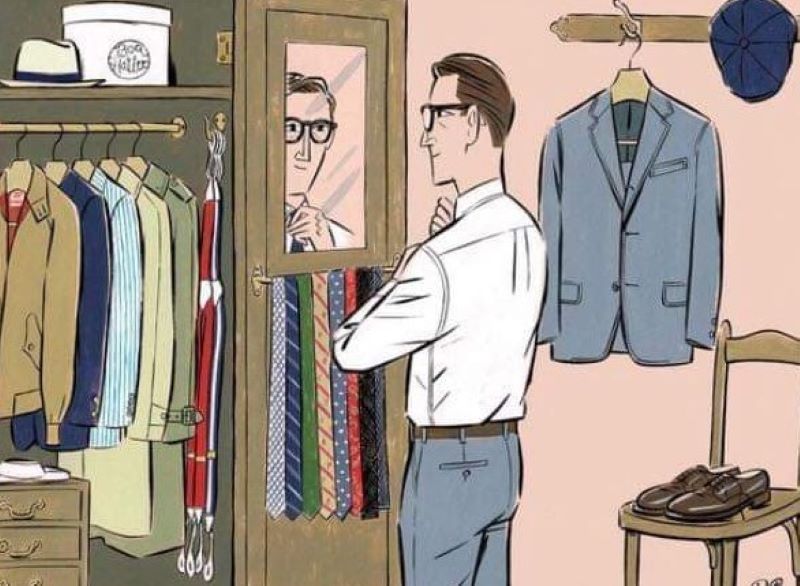
It’s a simple design and the look has been worn by many that have become style icons. Movie and music legends alike have been known to wear Harrington jackets. It’s no surprise that stylists from many different backgrounds have gravitated towards wearing a G9, or more recently Harrington jackets that have been manufactured by other manufacturers. For it is a testament to this garment that it has been copied widely, as its influence is such that it is the epitome of cool. When you see James Dean, Elvis Presley, Frank Sinatra, and the King of Cool Steve McQueen wearing a Baracuta, it makes you want to buy into that coolness. When you see the Mods, Skinheads, Britpoppers and indie artists looking cool in Harrington’s you acknowledge that sense of style for an easy to wear, sharp and understated look.
From cheaper ones to ones that are much more expensive. They are in various different fabrics. I have three Baracuta’s. One is in the traditional water repellent fabric, one that is in Chambray cotton, and another is a rare lightweight summer one, that is in red polyester and has a mesh Fraser tartan lining. I also have a Harrington style jacket by Two Stoned, that has the legend “The Two Stoned Rodney Harrington Style Jacket” on the label, and had been purposefully aged to look vintage and has several “Northern Soul” patches on it. I have a vintage US college version of a Harrington made by Haband of Patterson, New Jersey which is more like the Baracuta G4, and a black Leather G9 style Harrington I wear in the autumn and winter that is made by Charles Caine.
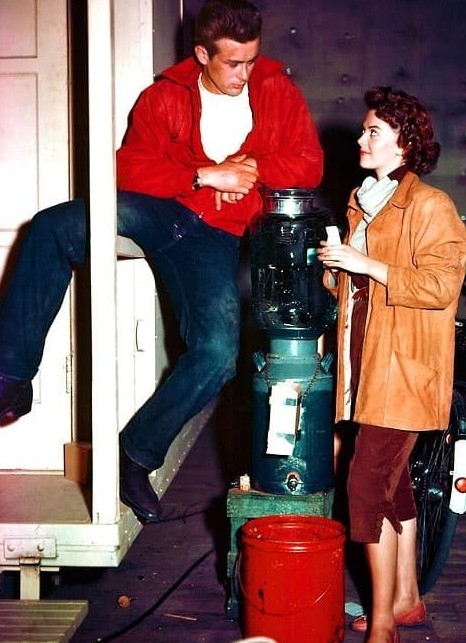
Harrington’s are functional, comfortable, and timeless. The functionality is what appeals to most men, and the knowledge that when you slip one on, you instantly join that roll call of the cool. Of course – Harrington’s look great on women also. As when the fairer sex chooses to wear masculine clothing to subvert style norms, so they choose items that men have looked up to and admired. In affect reaffirming that they too can join that roll call, and show that they also like the functionality, comfort, and design that has a history that is broad, long and full of cultural identity.
Harrington’s are here to stay for it is the jacket that is made for both work and play.
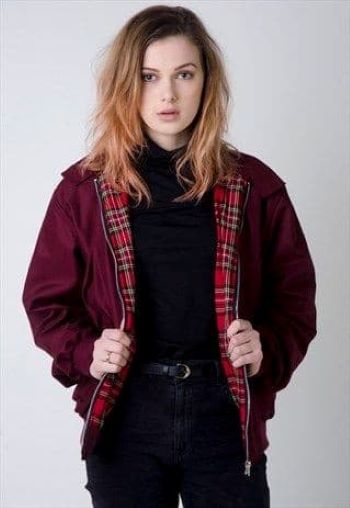
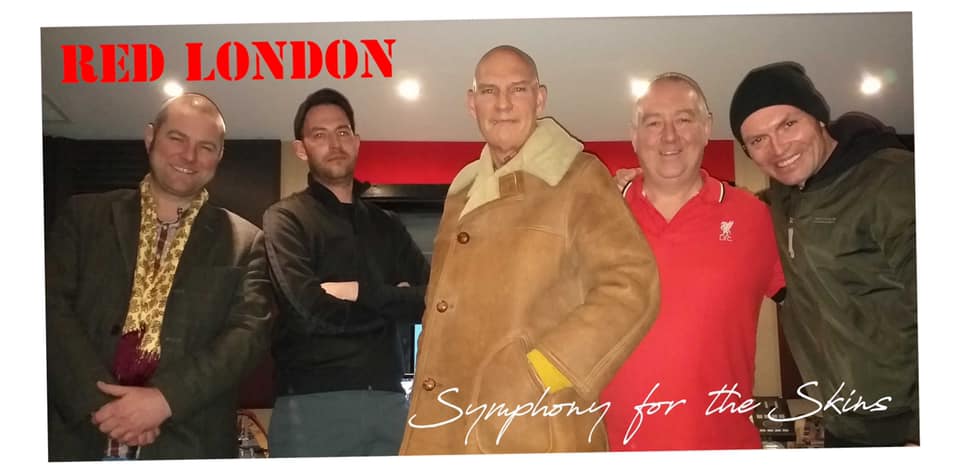
“this is England”
Year: 1984
City: Sunderland
Label: Razor
Format: CD, LP
Tracks: 13
Time: 34 min.
Genre: rock
Style: Oi!


RED LONDON is an English punk band formed in Sunderland in 1981, influenced by The Clash, Angelic Upstarts and The Jam. The band named themselves after a Sham 69 song. By 1983 they were signed to Razor Records. Their first release was the “Sten Guns in Sunderland” EP in 1983 followed by the “This is England” LP in 1984. Since then they have recorded for various labels both in the UK and abroad, and toured Europe including Germany, Poland, Belgium, Holland, France, Italy, and Spain as well as playing occasional gigs in England. Nowadays the band play some concerts from time to time. The release we have here was made by the label “Step-1” and include the first EP plus the debut LP. Is probably the best known work of the band, but Red London made more albums very recommended and always combining Oi! music with melodic voices and political lyrics. The four members declared themselves as socialist, libertarian and internationalist, inspired by the british SWP. Record label called “RedStar 73” has made the first re-issue on vinyl format and If somebody wants to buy it can go HERE. Later in 2016 was a new re-issue with remastered sound and some changes in the artwork made through italian label “Radiation Ressiues” just on LP format. Red London disbanded in 2002 and they are come back in 2018, touring in UK and Europe. Discogs , Lastfm , Download , Myspace , Facebook , Wikipedia
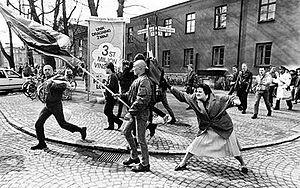

A Woman Hitting a Neo-Nazi With Her Handbag (Swedish: Kvinnan med handväskan, lit. “The woman with the handbag”) is a photograph taken in Växjö, Sweden on 13 April 1985 by Hans Runesson. It depicts a 38-year-old woman hitting a marching neo-Nazi with a handbag. The photograph was taken during a demonstration of the Nordic Reich Party supporters. It was published in the next day’s Dagens Nyheter and a day later in some British newspapers and sparked a discussion in Sweden about “violence unleashed against innocent demonstrators.”
Runesson’s photograph was selected as the Swedish Picture of the Year (Årets bild) 1985 and later as the Picture of the Century by the magazine Vi and the Photographic Historical Society of Sweden.[1]
The photograph was produced using gelatin silver process and editioned by gallerist Pelle Unger.[2] Twelve copies, three AP and three PP has been produced in the size 58 by 80 centimetres (23 in × 31 in) and price ranges between €3000–6000.[3]

Danuta Danielsson, the woman in the photo, committed suicide, jumping to her death from a water tower, two years after the photo’s release, due to the unwanted media attention she received as a result of the photo’s popularity.[4] She was born in 1947 and moved to Sweden after marrying a Swedish man she had met at a jazz festival. She was of Polish heritage and her mother had been imprisoned in Majdanek concentration camp during World War II.[1][5][6] A local artist, Susanna Arwin, expressed desire to raise a life-sized statue of Danielsson but it was ultimately decided against for two reasons, the first being that council members in Växjö were concerned such a statue could be interpreted as promoting violence and the second being that Danielsson’s surviving family reported that they would be unhappy with Danielsson memorialized in such a manner.[5][7][8][9][10] Seppo Seluska, the man in the photo, was a militant from the Nordic Reich Party.
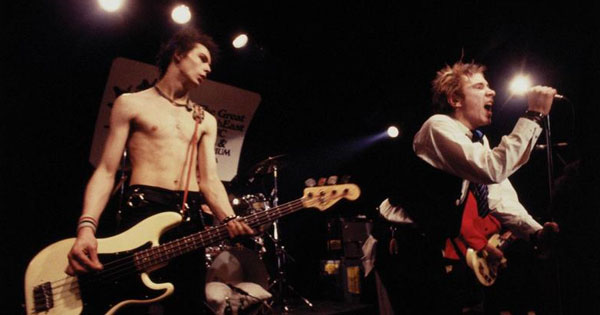

The USSR government at the time spent “hundreds of millions of rubles” on this covert operation destined to “create utter chaos” and “pervert the Western youth to nihilist, anti-establishment and anti-American ideologies” he explained in an hour-long interview broadcast on national television.
Famous punk songs of the legendary punk band the Sex pistols were even scripted by a team of psychologists and war propagandists of the USSR.
“I am an anarchist”, “God save the Queen the fascist regime”, “No future” and other nihilist and anti-establishment lyrics were intended to unleash a wave of cynicism towards authorities, promote the use of heavy drugs and entice the youth with revolutionary, counter-establishment ideas.

The 1970s punk subculture movement was allegedly financed by the USSR, says ex-KGB agent, Alexandrei Varennikovic Voloshin
The retired KGB agent claims the maneuver was extremely successful.
“Our mission was to use teenage angst to our advantage and turn the baby boomer generation of the West into a decadent, pro-drug and anti-establishment culture that would create uprisings and bring Western democracies into utter chaos.
We even infiltrated mainstream radios to promote their music and reach millions of people every day” he admitted, visibly proud of the accomplishment.

Punks burning a U.S. flag in the early 1980s, influenced by the punk music scene which was allegedly financed by the USSR
Some experts openly admit Punk nihilism, which was expressed in the use of harder, more self-destructive drugs like heroin and methamphetamine, pushed United States President Richard Nixon into the War on Drugs, a campaign of prohibition of drugs, military aid, and military intervention, with the stated aim being to define and reduce the illegal drug trade within America and around the world.
Its long been talked about how the Russians and Americans used many tools in the cold war to try to cause destabilisation. In UK extremist groups such as the Irish Republican Army, National Front, Socialist Workers party are all rumoured to have recieved funding from Russia, to create divide and ultimately civil war or revolution.
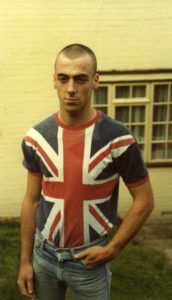

“What makes Gavin’s photos so special is that when you look at them, there’s clearly trust from the subject towards the photographer so it feels like you’re in the photo rather than just observing’.”
— Shane Meadows
Gavin Watson was born in London in 1965 and grew up on a council estate in High Wycombe, Buckinghamshire. He bought a Hanimex camera from Woolworths in his early teens and began to take photographs. Upon leaving school at the age of sixteen, Watson moved back to London and became a darkroom assistant at Camera Press. He continued to hang out and photograph his group of skinhead friends in High Wycombe.
The ‘Wycombe Skins’ were part of the working-class skinhead subculture brought together by a love of ska music and fashion. Although skinhead style had become associated with the right-wing extremism of political groups like the National Front in the 1970s, Watson’s photographs document a time and place where the subculture was racially mixed and inclusive. His photographs were published in the books Skins (1994) and Skins and Punks (2008), and the director Shane Meadows cited them as an inspiration for his film This is England (2006)








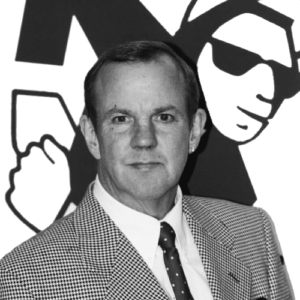
Mods Of Your Generation Interview – Gary Shail – 40th Anniversary Of Quadrophenia MODS OF YOUR GENERATION·WEDNESDAY, 10 APRIL 2019
It is a massive pleasure & honour to feature an interview with English actor, director, producer and musician Gary Shail on “Mods Of Your generation”. Best known for his role as “Spider” in the iconic cult movie Quadrophenia that many of us still admire and talk about today. This year (2019) marks the 40th anniversary of the film which is a massive milestone for everyone involved. The fact that its still talked about today makes it even all the more great. Gary is a great guy who has attended a lot of events over the years in aid to raise money for charity. We asked Gary about his own event coming up called QUAD 40 and about his career and experiences filming Quadrophenia & Jack the Ripper. We also discussed his book “ I think I’m on the guest list” published in 2015 and his Christmas song “ Modding up my Christmas list ” (2017) and more. Gary has done a variety of interviews throughout the years so it was difficult to ask him questions that he hadn’t been asked before, however I hope you enjoy the interview as much as we enjoyed asking the questions. Make sure not to miss out on the anniversary celebration of the movie on Brighton Pier August 25th 2019 for more information go to www.quad40.co.uk#ModsOfYourGeneration
(1) I have heard you are a huge fan of the Regents a four-piece band based in Essex heavily influenced by the original mod spirt of 1964. Are there any other new bands influenced by the mod scene who you are also a fan of? Yes I’m a big fan of ‘The Regents.’ I’ve known Sea Jays the lead singer since he was 16yrs old and he definitely has the right attitude. Mind you, he has always had the right attitude! Another young band I am really impressed with are ‘The Lapels’ who I saw play in Derby at a MOTM event the year before last. They completely blew the roof off the place, and nobody wanted to go on after them! The drummer was only 14yrs old at the time I think, and I watched them play with his mum! (2) You were just 18 when you were cast to play spider in Quadrophenia. I am sure you have been asked this many times before but did you think Quadrophenia would become the phenomenon it is today at the time of filming. Of course I didn’t know that I’d still be being asked questions about a film I was in 40yrs ago, but, I think we all knew at the time that it was definitely something special (3) On Christmas 2017 you released a song called “Modding up your Christmas list” to become number one. Have you any plans to do this again in the future. “Very catchy tune by the way LOVED IT” HAHAHAHA..My Mod Xmas Song? Well, I actually got a hell of a lot of flak for doing that by certain people who shall remain permanently nameless. But it was great fun to do, and a lot of people loved it, especially the kids. I had people sending me videos of their children doing dance routines in their living rooms, which was brilliant! But no, I don’t think I’ll be the next Cliff Richard.
Modding Up My Christmas List- 2017 (Official Video) (4) You have been involved in many MOD and Quadrophenia events over the years. Is this something you enjoy being part of and do you have any memorable moments from any of the events that stand out. Yes I do enjoy all the events I get asked to. Over the years I must have met thousands of people who love Quadrophenia, and it’s always a great feeling when my presence can actually help to raise money for a worthy cause. Some of the funniest memories I have are probably un-printable, but trying to get a kebab in Stoke at three in the morning with Alan May (The Glory Boy Radio Show) doing Withnail & I impersonations sticks firmly in my memory! (5) Your character in Quadrophenia had many memorable quotes in the film. What is the one that fans mention the most? Always the one about getting a gun! (6) Your book “I think I’m on the guest list” published by New Haven publishing LTD in 2015 was highly regarded and recommended. I found the book to be a very funny memoir of your life and the extraordinary people you have worked with and met throughout your career. Can your briefly describe the book to someone who has not yet read it. The book was actually written because of Gary Holton (The Rocker who beats Spider up) Gary and I became really good mates after Quadrophenia, and actually formed a band together called ‘The Actors.’ But when Gary sadly died in 1985 I never spoke to the press or anyone else for that matter about it. Then I was contacted 30yrs later by someone who was writing a book about him and wanted a contribution from me. I wanted to put the record straight about a few things, so I agreed. The publishers of the book loved what I’d written, so I was offered a publishing deal for my own story. I thought I’d better do it myself before I was dead and some other twat was ‘putting things straight’ about me! It’s certainly not your average autobiography I think, and later on this year I will be doing an Audio Version with a soundtrack, which will be totally different to anything you’ve ever heard I hope.
(7) Many fans of Quadrophenia have expressed an interest in a follow up to the film. Is this something that you would support? or like myself do you feel it is best left alone. There has always been talk of a “follow up” But I can’t see that ever happening. It’s always interesting to hear some of the Ideas of what our characters would have been doing in later life though. I think Spider would’ve become a hit-man for Ferdy’s drugs cartel!
(8) You are a huge fan of Trojan records, what is your favourite track, album or artist under the Trojan label. Yes I grew up with the Trojan record label, and one of the first artists I remember driving my parents mad with was Desmond Dekker. But I’ve always loved reggae and had a very respectable collection of Jamaican Pre- Releases by the tender age of 13. Last November, I was proudly invited by Neville and Christine Staple to their 50th Trojan Anniversary weekend at ‘Skamouth’ In Great Yarmouth where I actually met ‘The Pioneers’ who were about 100yrs old. They could still cut it though! (9) This year (2019) marks the 40th anniversary of Quadrophenia (film). To celebrate this, you have organised, and event called Quad 40 in Brighton on the 25th of August 2019. Tell us a little bit about what to expect from the event and where fans can buy tickets. It’s actually on the 25th August Johnny! Yes I have hired Horatios Bar on Brighton Pier from 12 noon ‘till midnight on Sunday the 25th August. And I can tell you now that I never thought I had this much bottle to actually try and pull something like this off. It’s a logistical fu**ing nightmare, but I’m actually really enjoying it. I’ve spoken to almost all of the other cast members of Quad who have all promised to attend (work permitting) but trying to get us all in the same country together is hard enough, let alone on a bleedin’ pier! On that morning before the actual party, Quadrophenia is being honoured with ‘The Brighton Music Walk Of Fame Plaque’ to be unveiled at the pier entrance, so it would be great if there were a few mods about. Tickets and details available at www.quad40.co.uk
(10) A question received by Jimmy Hemstead follower of Mods of Your Generation and Blogger at MOD TV UK “HI Gary in your younger days was you ever a mod and did you ever own a scooter, can you tell me when and how you got into acting and why please?” Hi Jimmy, love all your art-work by the way!No, I was far too young to be a mod; I was born in 1959, so I was only 5yrs old in 64 and the only scooter I owned was made by ‘Chad Valley.’I never had any ambitions to become a professional actor at all when I was a youngster, but somehow found my way into drama school at the age of 12, thanks to my parents and a couple of Comprehensive High School Teachers who probably just wanted me just out of the way!Quadrophenia was my first professional job when I left. (11) Do you have any plans to release more music, Books etc or what are you doing now that we can look forward to in the future? Yes, I will definitely be writing another book I think, but not part 2 of my autobiography, that would just be a bloody diary. It will probably be about my time working in the advertising industry in the 1990s. You think actors and musicians are crazy? They’ve got nothing on advertising people! Musically though, I never really stop. I had a solo album out last year called ‘Daze Like This’ (see below) which a lot of people liked, and I guested on ‘The Transmitters’ debut album which was great, although I hear that they have now split up. I’ve also recorded a couple of tracks with Steve ‘Smiley’ Barnard which are on his ‘Smiley’s Friends’ albums, and I’m back in the studio in a couple of months with ‘The Regents’ for their new album. I’m always writing though, and will hopefully record some of my own stuff probably next year now.
Title track from the album “Daze Like This” (12) Do you keep in touch with any of the main characters of Quadrophenia 40 years on? Yes, I see quite a lot of Trevor Laird (Ferdy) and I’ve recently been working with Toyah. Hopefully I’ll be seeing the others soon
(13) What do you regard as your biggest achievement in your career or what are you most proud of? I actually don’t think like that. Everything that keeps me off of the unemployed statistics is an achievement these days! I am extremely proud of my family though, and very recently became a granddad to a beautiful baby girl called Ellie May. I’m very proud about that! (14) In 1988 you appeared as the tough pimp “Billy White” in the tv series of “Jack the Ripper”. Sir Michael Caine also appeared in the series as Chief Inspector Frederick. Caine was a huge influence on British Culture in the 1960’s and referred to by many as a style icon.What was it like working with such an influential person in British pop culture? Making ‘Jack The Ripper’ in 1988 was like a dream come true, and working on a film with Sir Michael Caine was an experience I shall never forget. He was so interesting to watch, whilst he was working on camera, and I learnt a great deal from him. Everywhere you looked on that set there was something extraordinary going on in the acting stakes. Lewis Collins, Armand Assante, Susan George, Jane Seymour, Lysette Anthony, Ray McAnally, Hugh Fraser, Ken Bones etc etc.They were all giving it their all. I was just glad I gave it mine!
(15) Finally, How would you like to be remembered? Just to be remembered at all would be nice! Again it was a massive privilege to interview Gary shail and a big thank you to followers of “Mods Of Your Generation”, Please continue to show your support. Please like & share the “Mods Of Your Generation” Facebook Page https://www.facebook.com/modsofyourgeneration/ interview conducted by Johnny Bradley for “Mods Of Your Generation”interview (C) 2019 to Johnny Bradley & “Mods of your Generation”
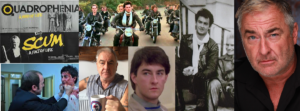
MODS OF YOUR GENERATION·SATURDAY, 14 DECEMBER 2019John Blundell is a Britishactor, best known for playing ‘Daddy’ Pongo Banks in the controversial production Scum and its film adaptation.Blundell played Banks in both the banned 1977 BBC version and the cinematic remake of the production two years later. His character was the ‘daddy’ (i.e., the self-appointed head inmate via use of force, violence and intimidation) of the institution until he was overthrown in a bloody attack by Carlin, the lead character played by Ray Winstone. He also appeared in Quadrophenia as the Leader of the Rockers (again in a film with Ray Winstone). He is an absolute gentleman, Mods Of Your Generation wanted to find out more about his role in these two iconic films. Its a privilege to call him a friend and an honour to have him as a Mods Of your Generation follower.

I spent three weeks in Brighton on the set. One of my fondest memories is that the whole cast stayed in the same hotel, and you could come down in the morning for breakfast, and hear the then unknown Sting, playing the piano, and Phil Daniels playing guitar, along with Toyah jamming, and at that time , being so young, just taking it all for granted.

Ray, Phil and I had filmed the original Scum, 4 years earlier, which was a Play for Today for the BBC, and banned by Billy Cotton. We then went on to make the film SCUM, 6 weeks after QUADROPHENIA. In those days, we all hung about together, and all got on really well.

I have been very lucky and privileged to be part of both Scum and Quadrophenia. Obviously not knowing that up to date, they would have stood the test of time, and become iconic films.

It was never my intention to become an Actor. However at 10 years old, my primary school drama teacher Anna Scher, started the Anna Scher Children’s Theatre, of which I was a Founder member, for Children who could not afford Stage School like Barbara Speake’s, Italia Conti etc. , charging us 50 pence a lesson, and free for the Children, who could not afford that. When word went around the film industry, that there was a Drama Club in Islington. The BBC came around along with the Children’s Film Foundation, to name but a few. So that is where it all began and took off.

Franc Roddam the Director of Quadrophenia, came to Ann Scher, to watch our group performing improvisation, on a class night. And that is where he saw Phil Daniels, Trevor Laird and myself. A few weeks later, Franc asked me and Actor Ray Burdis, to meet him at Pinewood Studios, to do some improvisation with a guy that he has found from a modelling advertisement, called Gordon Sumner. Afterwards Franc, asked us about our opinion about this guy, as he thought he would be great for the part of Ace Face. We said he looked unusual m. Little did we know that we had talked ourselves out of a part. A few later, this guy called Sting would hit no. 1, with his group the Police, and become a global Superstar. The rest was history.

There was one big accident, involving myself and the rest of the Rockers, in the scene where we chased Chalky off the road. After the film crew cleared the lane, where we were filming, a farmer pulled out his lorry out onto the road, unbeknown to the film crew. So at 35 miles an hour, Gareth Milne, the Stunt man, who was to my far left, rode straight into the truck at full speed, which caused a domino effect, of all 30 Bikers crashing.I myself drove into a big bush, to protect myself and my Biker girl Linda Regan, who was riding pillion. Leaving the both of us with only sprains, but other with much more serious injuries. Hence Linda up till this day, still tells everyone that I saved her life, which is a really lovely thing to say. Franc to this day, still says he wishes he had kept the footage of the crash.

I was not really a Fan of the Who, at that point, but after meeting Roger Daltrey and Pete Townsend, I found them to be, down to earth and just a couple of the lads, who just happened to fly into Brighton beach by helicopter. Lol.

Yes that’s right I do enjoy Northern Soul, for eg. listening to Legendary artists like Frank Wilson – Yvonne Baker- Tobi Legend. My taste is pretty varied, and I also like a lot of Rap Music. Snoop Dog, Dr Dre era. Giving away my age there.
From my early years aged 10 I had done so much work, I cannot remember, as i never kept track. The only ones I can remember are on my IMDB. I also do so many Commercials that at one time, my Agent Anna Scher named me ‘’The Commercial King’’ https://www.youtube.com/watch?v=dgRnNx7J1mQ&feature=youtu.be
I have always over the years, bumped into the Quadrophenia boys, who attended Runcorn. And it is always as if we had only seen each other yesterday.As I was the only Rocker, at Runcorn, I was not sure, how I would be welcome by the Mods. But to my surprise, I was blown away by the love and respect, that was shown to me , by everyone who attended. I could not have asked for more. I would like to say a special thank you to Rob Wright, who organised the event, and took such good care of me and Mercina. We had not met before, but we are now friends.

I enjoy writing Comedy scripts, simply as a hobby. But the best thing about being retired, is as you all know by now, for anyone who has read my Facebook page, is that I get to spend 24/7, with the love of my life Mercina.

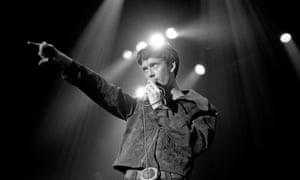
In the late 70s, the city’s bands set out to create the sound of the future – while trying to avoid getting beaten up. Jarvis Cocker and other leading lights recall a revolutionary scene

‘Sheffield in 1977 had a slight feeling of being the city of the future,” recalls Jarvis Cocker. “I didn’t realise that it was all going to go to shit. It was Sheffield before the fall.”
That pre-fall year is the starting point for a new box set: Dreams to Fill the Vacuum: The Sound of Sheffield 1977-1988. Familiar names appear – Pulp, Heaven 17, the Human League, ABC – but they are joined by a wealth of other acts, such as I’m So Hollow, Stunt Kites, They Must Be Russians and Surface Mutants, spanning punk, post-punk, indie and electronic with that droll outsider energy particular to South Yorkshire.
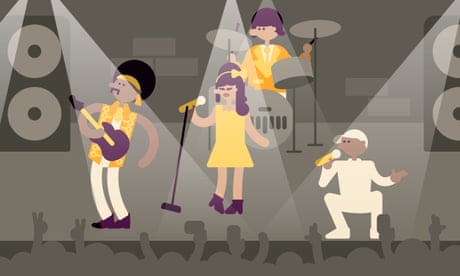
Read more
In 1977, Paul Bower was producing a local fanzine, Gun Rubber, and playing in the Buzzcocks-indebted 2.3. Like Cocker, he recalls the late-70s as being a time of optimism and flux. “There’s this myth of northern miserablism, that everything was shut down and shit,” he says. “But it wasn’t – that came later. It was a really interesting, bustling and creative time.”
Sheffield had plenty of dirt-cheap “little mester” workshops, once used by master craftsmen working in the city’s cutlery industry, and these provided room for bands to move in and experiment. Bower’s band 2.3 shared a space with the Future, an early incarnation of the Human League that featured Martyn Ware and Ian Craig Marsh along with Adi Newton before he formed Clock DVA. “We were enamoured with the New York scene,” says Ware. “In our own little way we were imitating the Exploding Plastic Inevitable.” Bower describes it as: “Andy Warhol’s Factory in the land of Bobby Knutt.”
The pioneering industrial and electronic outfit Cabaret Voltaire had been active since 1973. “They were the godfathers of Sheffield’s new music,” says Simon Hinkler, who played in bands such as TV Product and Artery, as well as producing early Pulp. “You can’t overstate how important they were.” Ware echoes this. “They were our mentors,” he recalls. “Their methodology and lifestyle was something we aspired to. Not so much musically, but as a template for doing your own thing.”
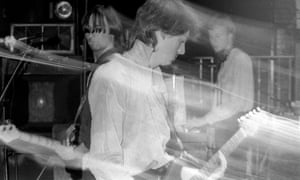
Cabaret Voltaire took on Western Works, another old cutlery factory, as their studio. While Ware looked to New York for inspiration, Cabaret Voltaire’s Richard H Kirk was more interested in Germany. “Kraftwerk and Can had their own spaces,” Kirk says. “We thought that was the perfect model. You could be there 24/7 without having to worry about the clock or some idiot engineer not knowing what to do with you.”Advertisement

“The environmental influences were very strong,” says Jane Antcliff-Wilson of I’m So Hollow. “Industrial and austere – steeped in working-class history. Imagination and vision were left to run wild in this bleak landscape.”
By 1978, an explosive flurry of music was coming out of the city. “Punk was year zero and Sheffield really took that to heart,” says Cocker. “They said: ‘Right, we’ll invent the music of the future.’ The Cabs and the Human League really did do that.” It was enough for people to move to the city because of it. Jake Harries of the industrial punk-funk band Chakk was one. “This music didn’t sound like it came from anywhere else,” he recalls. “There was an otherness to it. Sheffield sounded like the place to be – it was electronic, strange and inspiring.”
Not everyone warmed to peculiar new sonic explorations such as Cabaret Voltaire’s heavily deconstructed cover of the Beatles’ She Loves You. “This guy stormed out and physically grabbed me,” says Bower. “He’s screaming: ‘You’ve got to stop them. It’s sacrilege, they are destroying the Beatles.’ I said: ‘Yeah, that’s the point.’” Kirk thrived on the friction. “We went out of our way to pour petrol on the fire,” he says. “We knew people had never heard anything like what we were doing. It was meant to be confrontational.”
The throbbing intensity of Artery’s live shows were as terrifying to some as they were thrilling to others; Clock DVA got banned from venues after their first gig; during one gig, I’m So Hollow were thrown off stage after just two songs. The debut Human League show went down surprisingly well, even if their new singer hadn’t mastered his role yet. “Midway through the gig, Phil Oakey walks off stage, straight through the audience with his high heels on,” remembers Bower. “Comes up to the sound desk and says: ‘How’s it going?’ I said: ‘Fine, Phil, but it’s traditional for the singer to stay on stage during the gig.’”
Because of the conflict that would arise at shows, the Human League began performing with a Perspex shield around them. “Paul Morley wrote it was some extemporisation around alienation in contemporary society,” recalls Ware. “No, it was to stop skinheads gobbing on the synthesisers.”

Things got bleaker in the 1980s under Margaret Thatcher, even if some of the music got shinier and major-label attention followed. After the Human League’s 1981 album, Dare, made the revamped band world famous, major labels flocked to the city “signing groups in a bid to cash in on the scene”, says Newton. “We [Clock DVA] signed with Polydor but I consider this a low point, because innovation became secondary to commerciality.”
While pop stardom visited many, it seemed to evade one person. “The 1981 John Peel session Pulp did convinced me that I was going to be a teen star,” says Cocker. “But the 80s were depressing. The city was falling apart and our first album sold virtually nothing. I was crestfallen.” Violence was also an inescapable part of going out during this period. “It was like Pac-Man,” says Cocker. “You had to pick your route and avoid the beer monsters. Violence, or the threat of it, was a constant thing.” One night he had a pint glass land on his head; on another he was beaten up for wearing a patent leather mac. “I put two fingers up at them thinking my bus was about to leave, but it wasn’t, so they just got on it and smacked me.”
However, when the city was in sharp decline and the musical buzz of the early 80s was wearing off, Chakk did something crucial: “We signed with MCA and had them agree that we could build a recording studio out of our advance,” says Harries. FON Studio (named after a piece of local graffiti that read Fuck Off Nazis) was the result. Located in an old karate studio above a metal works, countless bands from across the UK recorded there. Richard Hawley’s teenage group Treebound Story was one. Rob Gordon, who would later co-found Warp records, found himself producing indie bands there in 1986 via a Youth Training Scheme. “It was obvious he was a genius,” recalls Hawley. “We were just kids but he made us sound amazing. He even tolerated us dropping acid, taking all our clothes off, playing the bongos and making a racket.”Advertisement

“It was a brave thing to do,” Cocker says of FON. “Sheffield was not going anywhere and it showed solidarity. They could have just taken the money and scarpered.” It was a combination of pride and practicality, according to Harries. “We thought it was crazy Sheffield didn’t have a large recording studio considering how much great music it produced. Plus, the country was divided at the height of Thatcherism. We wanted to bring some money from London to where we lived.”

FacebookTwitterPinterest Jarvis Cocker in 1991. Pulp formed in 1978 but had to wait till the early 90s before tasting success. Photograph: Martyn Goodacre/Getty Images
Over at Western Works, Cabaret Voltaire’s new neighbour was a bagpipe-playing Scotsman who was building and selling nuclear fallout shelters. “There was a rising sense of fear,” recalls Kirk of the time, one no doubt intensified for the people of South Yorkshire, given it was the location for the harrowing 1984 nuclear apocalypse TV drama Threads.
Even as the socio-political climate grew gloomier, that original spark of autonomy and ambition remained alight, says Hawley. “Even with all the shit going on from those horrible fuckers, a lot of magical stuff happened. Beauty came out of some very difficult situations.” Ware links this mentality to the city’s history. “There is pride in craft in Sheffield that runs through everything – from cutlery to engineering. It’s in our blood.”
Not all bands could contain their steam. “Artery had an intensity that was up there with Joy Division,” says Cocker. “But they didn’t have a Factory Records or a Tony Wilson. They got stuck in Sheffield, got frustrated, got off their heads, and lost it.” 2.3 had a single out on Fast Product before the Human League or Gang of Four, but collapsed. “We were like the Commitments but worse,” Bower says, likening the group to the dysfunctional Irish band from Roddy Doyle’s novel. “By 1979, it was like: ‘Screw it.’”
But others did make it, of course. The days of Cocker and co dodging pint glasses have been replaced by city-wide adulation, an irony not lost on them. “One day, some people were chasing me and Jarv down the street to get our autographs,” Hawley says. “Jarvis turned to me and said: ‘It’s not that long ago since the same people were chasing us down the road trying to kill us.’”
• Dreams to Fill the Vacuum: The Sound of Sheffield 1977-1988 is out on Cherry Red
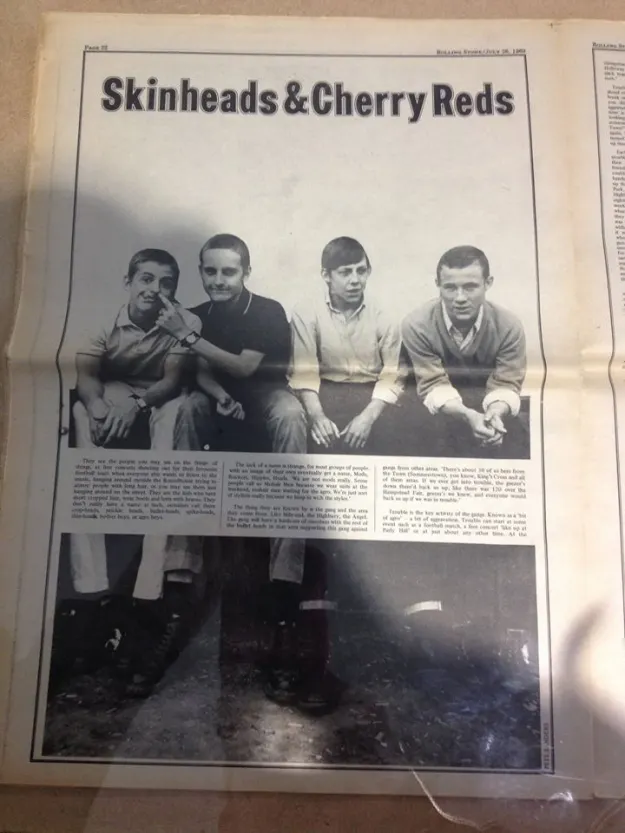

Hello. I want to share with you my recollections and memories of the skinhead scene that I have always been a part of. At the moment I am recovering from falling off some scaffolding, so this has given me time to get to grips with modern technology and given me a chance to reflect for the first time on the subject of Skinhead culture and share with you some of the stories and memories of the past from like minded people which has been prompted by hearing the interview with Symond Lawes on the Brighton skinhead reunion recorded some time ago.
I will start by telling you about myself. I’m a 50 year old skinhead and bricklayer now living in Wendover, Bucks. I grew up around the Camden Town/Somers Town area of London.
When I was a kid, kicking a ball around at night, my mum always said: ‘Be home before the Mods come out!’
This was around 1969, she was referring to the lads, who would have been Mods, who had inherited the same patches outside the local pubs that their elder brothers hung around some years earlier.My parents still called them Mods, and I always thought of Mods as being the the elder statement of skinheads. These were previously the 7/6d’s, that have now come of age. We knew which families they came from, and who they were, and our families knew their families and so on. There were some real tough families in the area at that time. By this time the groups that my parents remembered were growing up, getting married, they were joining the Army and working for Her majesty ( GPO) or staying at one of her Hostels. (HMP Pentonville was near my home)The GPO tower was looming over us, like a calling card, it was a respectable career to aspire to and a lot of us did end up going to Mount Pleasant GPO, after being kicked out of school.
But a further aspiration, was to join the local gang. I was way to young for this at the time but I would look out of my bedroom window, with envy watching this group, evolve from 1968 onwards. I will never forget the sound of the the light buzzing of scooters as the gang rode their inheritance from their older brothers. They were a group of lads who had this tough but smart look about them, They wore mostly denim jackets, with Crombies ¾ length coats, boots and braces. The gals didn’t have the skinhead feathered hair cuts, like they did later. Some of them looked a bit like the Toyah Wilcox character in Quadrophenia. Most of the girls had Crombies but looked feminine but they still looked like Sixties Mod girls, with kilt type minis, they wore their hair in a shoulder length style that hinted at skinhead look. It was a bit like a flat mullet, with a fringe, that looked like it had been cut around a saucer template.
You always looked out for “Names” on the skinhead scene. “Names” who were hard enough to have been kicked out of the local boxing gyms. The word got out amongst the scene. They were always tough Jamaican offspring kids, and they were ALWAYS part of the group. These kids where always in the mix, as some of the top boys, but in many ways smarter. “wiv the threads” a right proper mixed bunch who always fought and hung around together, Skinheads or mods, peanuts, however they were, they were the was the only group you would ever see with blacks kids.
In 1870-72, John Marius Wilson’s Imperial Gazetteer of England and Wales described Somers Town like this:
SOMERS-TOWN, a chapelry and a sub-district in St. Pancras parish and district, Middlesex. The chapelry is a compact portion of the metropolis; lies between New Road, the Regent’s canal, and the Great Western railway, 2 miles NW of St. Paul’s; occupies ground which was mainly unedificed so late as 1780; and has a post-office‡ under London NW, and an S.-Police station. Pop., about 14,500. The living is a p. curacy in the diocese of London. Value, £300. Patron, the Vicar of St. Pancras. The church was built after designs by Inwood, at a cost of £14,291.—The sub-district extends beyond the chapelry, and comprises 184 acres. Pop. in 1851, 35,641; in 1861, 39,099. Houses, 3,907.
Some of the lads dressed smarter then the others, the way they dressed reminded me of the slick character in the 70’s TV show “Please Sir” some of the black lads had the Tennis Fred Perry shirts, and braces with “Peyton Place jackets. My mum wanted to see me dress like that, as she fancied the film actor Ryan O’ Neil.
She seem eager to see me in one of those outfits, more then any other form of attire. Later on most of the Jamaican kids were smartly dressed in tonics and loafers especially on music nights and at that time they had the same inner London accents as most of them had come over in the 1950’s when they was babies and a few of the younger lads was born in the UCH the same as me.
On youth club nights I would hear the sound of the club in the Cumberland Market down in NW1. This was mixed with the turn out of the dads and older lads coming out of the Kings Head opposite my house. At the time I didn’t know what the stuff they were playing was, but it had such a infectious bounce to it, and it echoed all around my room at night. I used to tuck my head under my eiderdown. I felt so spellbound by the rhythms and beats. So much so, that I would wake up with it almost resonating like an exact recording in my head the next morning.
This would stay with me for life. Later on I discovered exactly what it was and that it was the ska/rocksteady music. The ska would be played at the early part of the night just as it was getting dark, and the sound would be taken down a level later in the evening with the Rocksteady beat. At the time I was too young to get involved and my nearest encounter of rubbing shoulders with this crowd, was seeing these older kids break away from the group and go on the march to Highbury, on Saturdays. The older lot headed for the boozers and then the North Bank, while we went to the West Stand with my dad,and my mates who all had older brothers in the ranks so with that and the fact that there parents knew mine and who’s boy I was!
As I got older, I would go around me mates gaffs, a lot of their elders had left home to start families. It was almost the unwritten law at that time, that the elder brothers room should remain untouched, and that included record collections. For me, at the time that was heaven. I understood that ska was the main stay amongst Skinhead record collections, although a lot of skinheads at the time, did listen to other stuff apart from reggae there was a popular local band called “The Action” that locals still followed also nearly everyone of them had “Who” and “Small Faces” poster or disc, and also would you believe: “A Kind Of Blue” by Miles Davis. which his brother always called his “Shagging music.”
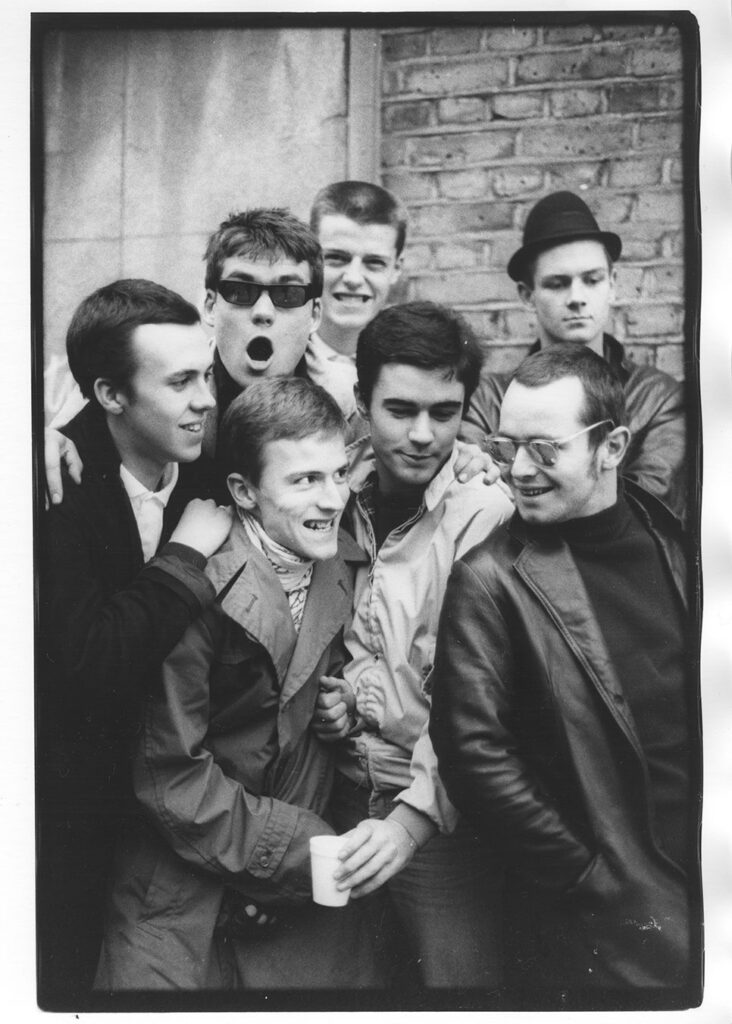
I thought it was a kind of dance at the time and I remember being glad to see those records and posters as it kind of blessed what I thought was a guilty secret of mine, my love of “The Who.” In a way it wasn’t that strange, as we all gravitate to a kind of group or music that attracts us and that was the whole Mod ancestry! It wasn’t quite the mainstream but it was heavy enough to be called Geezers music but it never crossed over to hippiedom which I always thought of as being “THEM” the group you never want to be with. I inherited a hatred of them, not so much the music coz there was a lot of “Blues” which I always loved, and that’s when I started to get more knowledgeable about this kind of music, as I knew that it was the root of ska, a Jamaican take on the blues that they had heard from the Southern states. So this also gave it a blessing to like “The Blues” as well.
My dislike for hippies came from the fact that they all seem to talk posh and they always seemed to be moaning in middle class accents and I despised those military wing greasers.The music consisted of “geezer rock” or white English men who played “Soul” and “Blues” that came out of “Rock” getting it slightly wrong. This was a style that developed by mistake. This clashing together of styles seem to repeat itself later on with Punk which I embraced quickly as soon as I was old enough to welcome it all but I had always being a Skinhead or Suede head since the time I tried to dress like guys from 1968 and 1969.
I have never been anything else as my age stopped me being a Mod. Then Punk came along and there was no way I was going to wear flares and attend concerts with the hairy ones on ice at Wembley!!! I’m pleased to say, that I have lived my life as a skinhead, and never succumbed to wearing flares no matter how out of step I was with the early to mid 70s.
I would also like to touch on something that Skinhead/Suede head discussions seem to overlook, This is when I started to hang around music venues the remainder of Skinheads from early days to the early mid 70s suede heads, were influenced by “Glam Rock” although it was from the less feminine side such as Mott the Hoople and Steve Harley. There seem to be the pre- punk, side which was full of the skinhead types, and that was “Pub Rock”. There were so many of us in our group, we would make our way up to Tally Ho boozer in the north end Kentish town, to see the bands that played there, that included all of us and those who were old enough to get in “legit”.
We were all part of the old gang of would be skins. This time more of them were wearing DMs, and crombies, with either a No2 or slightly grown out suede head haircuts. This was still the family “Skin” very much so, and this was the heavier aggressive sound that was for working class inner Londoners, or any other cities youth. We could relate to it.. it was our Generations “The Who.” I sounded out all of these bands, pre-punk even trying to get down to that London in Essex hotspot which was Southend. I thought Dr Feelgood were fucking magic. My mates started to hunt through those record collections to find stuff like it and in hindsight we enjoyed Kersal Flyers Brinsly Shultz etc….. I loved all that stuff. By then of course we’d turn up trying to get in to gigs (I was still too young by the way) to any gigs that we thought was of that ilk, but once we got to them and heard them there was something more unhinged about some of those bands: “London SS” and the “101ers” need I say more that was my introduction into punk and then for a year or two I indulged my self into it.
I met up with mates all over London, that I knew from Boxing Gyms by way of boxing, regular trips down to the Bridgehouse, when it was in Barking Road also it was only a short walk down to the “Roxy” it was close to us and we used to just to hang out there. We Heard that “Dee Generate” out of “Eater”, was our age so we thought: “Let’s ave some of that.!” Some of the punks were a bit creepy, and a bit too arty, for my liking, but I went with it. There was some crumpet, but the girls were all weird wiv suspenders and stuff, and their knockers were sticking out of bin liners!
This was great for a kid my age, especially the at the “Roxy” the mighty Menace at “The grope and wank her” (Hope and Anchor yes we used to think it was funny!!!!!!) We would chat to Charlie Harper at the George Roby,there was this lesbian down the west end. We used to go and hang around with her with an added idea I was gonna cop an eyeful, but that turned out to be the only place a lot of bands were able to play, thanks to the then Tory run GLC so although I did do a lot of growing up in experiencing ways of female flesh. It wasn’t the lesbo orgy I was expecting.
I will like to add, that at times we could feel a change happening, felt a ruck coming on, there were more swastikas, appearing with some of the punks. My jeans were scruffier but I still wore my black “Peyton Place” jacket and me Fred Perry tennis shirt we used to call em, not polos, they was well cheap then down Petticoat lane or Roman road. I always wore me DMs, and my hair was a bit above No2, I was a punk, but I always stayed a skinhead,too so the Swastika was a symbol that we despised. We grew up with parents and grandparents that had experienced it.
Half the streets were still corrugated fenced up, from Bomb sites, back in the days of me observing original skins I used to read read battle picture library and War picture library, those booklets, you know the kind of thing I mean. I used to have dreams of single handedly wiping out Nazis. I used to go to bed thinking that there was an army of rapist, Nazis hippies and coppers, and Narkie Grasses. and how I can dispose if them.It also was a symbol of The Grease, another reason why we hated them, because of their treachery of wearing what Nazis wore. although we hated “The Filth” and any establishment figure,, we were still working class British people and we was not that rebellious. So I resisted wearing that stuff but we was always up for a ruck people tend to think or want to believe it was the far left that was bovver boys when it was the opposite. I hate politics in music or subcults ,that’s why I don’t hold wiv no S H A R P stuff, but I will say this, we never saw a Tory never mind supported them.
Everyone came from Labour voting working class families,, so we knew what we wasn’t, but never dwelt on what we were or what we were going to be. I hated politics and what’s great about being a skinhead then and at now my age is that it’s like being in stir “You don’t ask questions.” The nonces will be found out and dealt with at some point, and a skinhead gathering is the same for anyone on both sides. Both far extremes will feel marginalised eventually and this it started out as a youth sub culture, and we have taken it with us. It’s what you feel, being a skinhead is all about, and it is what brings us together. As it’s the furthest thing away from being a 14 to 15 year old Mod. Skinhead, Rude Boy in the 1960s, suede head 1970s is politics. Thats what your mum and dad talk about, and as I still haven’t grown up nor do I want to I am a old but proud pathetic old git, and I won’t never change!
Going back to attitude. Well, We did speak in a way that isn’t talked now, but even your hard line trade union lefty activist would be slaughtered by the speak Gestapo now!!! it was another time, there was paki – bashing by gangs of mixed black and white youths especially after the arrival of Ugandan Asians not because of colour but because they were new and strange and our ignorance wasnt enlightened by the lack of integration and not willing to embrace, the culture,, unlike the Irish around our way which was a massive wave of families and for young people the West Indians shared there fashion and music it was ignorance and for us, the it was an overwhelmingly important pastime of fighting. This could be amongst any inner city youth Asians were just another group to ruck with, nothing more or less, as far we were concerned! As a group, privately who knows or cares what your views was away from the the lads was,, there was and there wasnt, least among us anyway and especially skinheads who were the hardest lot of the roughest manors, but I am sure Teds, Rockers, fuck even some working class hippies that went along for the trip as it were spoke like that,or picked on someone or something they didn’t understand that they felt weary of amongst not just kids but everyone at that time.
Most skinheads got a bashing from other skinheads most people amongst us was working class, and most of them were skinheads, or related to skinheads. I recall skinhead battles tales amongst the groups , and later on, about area gangs, they didn’t think in terms of London boroughs, just London areas and it was all very Territorial, for example there was Somers town, were I was, Kentish town, Upper Holloway Archway,Clarkenwell ,Shorditch/Hoxton/ Dalton, Queens Crescent, Camden town, then going eastwards there was Stoke Newington, Clapton and then the East End, Bethnal Green, Mile end , Wapping, Stepney, go further east and you get Canning Town, or West Hammersmith, Chelsea Fulham and Shepherds Bush.
Or you might know guys from these areas from work in the centre or boxing club circuit, or gigs, and you would talk and have a laugh but if you were meeting for a ruck then you be knocking shit out of each other if they were representing the area, and further to that, you might have a West Ham or Chelsea supporter in your local gang who would fight with you if you were called out by another manors lot but as they were mostly Arsenal around our way any friendship went at for that fixture. same goes for an Arsenal supporter from Fulham he’d be rucking his mates at football and come Saturday you looked at the scarf not the person that’s what how mad it was I have been told about it from older skinheads that I used to admire when I was looking at them from my bedroom window, fuck some of these guys are in there 70s now.
It was slightly different when I turned the age to shag and ruck but not that far off, but you get me gist !!! so I think Asians at the time got more of ribbing then a hiding it was other groups but most people would unite if they saw greasers setting on a skinhead or what you deemed as one of your ownAs for the Hambourgh tavern I’ve got my own views on that I was there although not for long we couldn’t get to it, but I remember feeling so fucking angry, to see skins that look like they were on the side of the the filth again it was whipped up by both right and left, press and lay politicians and more so the music press who hated the thought of working class council kids being a force, I don’t blame the Asians, they were young fuel filled lads protecting their area or what was force fed to them,they were young like us and was up for a ruck, like any group of whipped up teenage lads, we wanted to go down here or there and make some working class noise and have a few pints. I’m not a conspiracy weirdo, but there was so many reasons why the fucked up middle class left, the fucked up Nazi right wing plus the broadcast media and music press caused that, as the latter didn’t like something that was based around youth led pastime angst and they didn’t like something that they didn’t make or break because it was real and not manufactured, it was something that we could enjoy and dictate what happened with it. It served our purpose, it gave birth to the boneheads that have soiled a working class culture and ruined the fledgling stages of young rock n roll bands,And took away a good deal of their income at a time when they should of been making it good. We could enjoy a good few years of live working class punk rock, seeing as it was taken away from its own manufacturers and given to people who could enjoy it it started going down hill after the Clash signed to CBS it was salvaged and put to good use but the press wanted it dead. These days we can relax with it as our first love and enjoy the Ska and rocksteady that we adopted, and still love, through our own choice as Middle Aged skinheads, that the music press didn’t intend us to love and there’s fuck all they can do about it!!! I’ve got through a whole pack of 20 smokes, in the time it’s taken to do this, didn’t realise the time, that’s more then i get through in three days, but I have enjoyed sharing this with you all…. as you can tell I can go on for ever about this…
Those days were right proper heady,, faces were on stage,in bands that you knew from seeing them around the chippy/ newsagent in tobert street,,or the youth club, and you know faces from school ,, punk , Arsenal ,especially (Arsenal/Highbury grove ) school , most of the locals around our way went to William Collins ,, I was expelled from secondary schools,, St George’s in St. John’s wood, Highbury grove, ect , only two weeks at William Collins,
I was used to seeing loads of local faces being on telly,, in bands, you took it for granted,(Pauline’s people then Grange Hill) 70s corona drink ads,ect ,, i stopped noticing,,
people from Anna Scher and all that!!! and so on,,but I know who your talking about now ,Low Numbers, they were in the Dublin castle,,i recall ,seen em with Madness,( or invaders, cant remember what stage they were at, the time) loads of us started bands, we loosely played,,,,but nothing proper,,, some bands went further then others,,we were called THE St Pancres Chronical after the local Rag, but we were shit,,, I played guitar but every time I picked i it up , I just ended up playing Blues,,,bending notes,,,and sounding to much like Heavy Rock?,, I was fine with it, but it pissed the rest off,,,so we decided to stick to being in the crowd watching/ listening,
,,coz I knew people from other schools in other manors , we kind of broke away from Cumberland market faces , except for four mates in Robert st,,,and The Crown Flats,local people became just another face ,,you recognised ,and the families they came from,,, and who your dad and grandad drank with,
,There was a local crooner type who went of to the Army,,, geezer called Gary Driscoll,, he was the first local I knew off, that was dragged up there!! To get noted,,
,my ole man used to be mates with the landlord,of the Dublin castle ,then a Irish fella called Barney Finley,,I was. Mates with his boy Raymond,, they passed it on to the present family,,in the late 60s ,we used to run about in there after lock up, two o clock on Sunday afternoons, coz we’d often go to av sunday dinner with them!!so it was only right I would later make that me local,, so i witnessed the start of all that too,,was lucky Spose living between West End and Camden Town,
,,I was able to get into clubs in soho,,in the late 70s coz me dad knew all the faces and names ,Jimmy and Rusty Humphreys ect,, that’s why I was able to hang about the latest clubs, being younger,me dad ran an electrical repair /retail shop ,,in Berwick street,called Friel and Francis ,with me uncle Bob (pic,on the front of oasis album), would you believe,, the first parking metre in Westminster was unveiled outside the shop,and a young spiv that hung about in and out was Alan Suger came down parked his van with hilivery A .M .S .TRADING,,marked on the side,coz he knew the press would be snapping, me dad used to sell his car Ariels,(cute ,, got to love that) anyway they used to rig up the sound in Ronnie Scott’s,
I used to bunk of whatever school I was in ,to work on Berwick street market,,,
,we used wheel the sack barras to pick up the veg and stuff from around what was to become the Roxy before the fruit and veg moved across the river,, John Holt used to have something to do with it , I remember , it was converted from that,,,so that’s why I familiar to it to hang around there,,later,,, coz I was a cocky little shit, and coz Eaters drummer was from the sticks and was our age , we dint want him to out do us ,to be part of it all.. , i knew Id be looked after,,by someone that would be to hand,,if it got to heavy we could UP any older punk that snarled at our presence,,when they did, we was quick to take of our young punk head , and say “we ain’t fucking punks were skinheads”,,,you tossers,,, although we were at the time,,, lot of the older punks were from the sticks,, so when we got snarled at ,, we’d give it our “( we’re from here,you ain’t and you don’t know what’s around the corner on the way out ,)
,,the other local connection was my grandads drinking buddy ,who liked drinking with riff raff,was Constance Lambert, he used to live up Park Village East and come down to The Victory ,in Albany St ,he used to drink like a gooden apparently , corse he pegged it before I or the The Who was born,so he dint see his sons success ,!
‘Skinheads & Cherry Reds’, Gerry Stimson, Rolling Stone, July 26 1969, pp. 22-23
This is from the UK edition of Rolling Stone, the American music paper. There are plenty of misspellings and typos, these are from the original. There’s also some racism expressed.
They are the people you may see on the fringe of things, at free concerts shouting out for their favourite football team when everyone else wants to listen to the music, hanging around outside of the Roundhouse trying to annoy people with long hair, or you may see them just hanging around on the street. They are the kids who have short cropped hair, wear boots and levis with braces. They don’t really have a name as such, outsiders call them crop-heads, prickle heads, bullet-heads, spike-heads, thin-heads, bother boys, or agro boys.
The lack of a name is strange, for most groups of people with an image of their own eventually get a name, Mods, Rockers, Hippies, Heads. ‘We are not mods really. Some people call us Mohair Men because we wear suits at the weekend, mohair men waiting for the agro. We’re just sort of stylists really because we keep in with the styles.’
The thing that they are known by is the gang and the area they come from. Like Mile-end, the Highbury, the Angel. The gang will have a hardcore of members with the rest of the bullet heads in that area supporting this gang against gangs from other areas. ‘There’s about 30 of us here from the Town (Summerstown), you know, King’s Cross and all of them areas. If we ever got into trouble, the geezer’s down there’d back us up; like there was 120 over the Hampstead Fair, geezer’s we knew, and everyone would back us up if we was in trouble.’
Trouble is the key activity of the gangs. Known as a ‘bit of agro’ – a bit of aggravation. Trouble can start at some event such as a football match, a free concert ‘like up Parly Hill’ or at just about any other time. At the Hampstead Fair ‘all the rival gangs, they all meet up there. Holloway, Highbury, and all them mob, like, and they all stick together, they’re all one mob and we’re the other mob.’
Trouble starts in several ways. It may be planned days ahead over some rivalry between two gangs, or it may just break out over some small incident. ‘You just see a face you don’t like. You know, I mean we get a bit of aggravation with the guys up there. All you hear all the time is the Holloway’s looking for you, the Highbury’s looking for you: and everytime we go there and pull someone about it and say ‘what’s all this trouble with the Town?’, no-one knows nothing about it. So every now and again, like, when people say ‘we hear the little Holloway turned you over’ we can’t have that like, so we have to go up there and turn them over.’
Each gang seems perpetually on the alert for some trouble. Sometimes months will go by without a fight, then suddenly there’ll be a fight every night. ‘We are friends with no-one, no joke. There was a time when we couldn’t go out of our area like unless we were thirty handed. We fucking hit every crew from right round here, up that way St. John’s Wood, The Edgeware Road, Tufnell Park, Archway, Burnt Oak, Mile-end, Kilburn, Holloway, Highbury, just sort of everywhere. We just sort of, about eighteen months ago, went made didn’t we, for about three weeks, getting into fights and whacking crews. We whacked someone from nearly everyone of them areas and they was all after us. There was a lot of agro then.’ That was the time when someone in a car came after the Town with a shotgun. There was some uncertainty as to whether it was a shotgun or an airgun, and if it was a shotgun, whether it had real or blank cartridges. ‘The guy with the gun thought we’d all run like and hide but he came a bit unstuck ‘cos we didn’t. We stood there and fucking waited for it. We he can only shoot two of you can’t he.’ The outcome was that they threw dustbins under the car making it skid up the pavement into a brick wall, then threw bottles. ‘The geezer with the gun, got knocked out, and they says they’d never come down no more, cause they’re all made down that Town.’
Some of the action is centred around football, for most of the gangs support some team. But little of the fighting is with other supporters of London teams; instead it is with supporters of teams from the North and Midlands. The Shed boys are those who support Chelsea (see the slogan ‘Shed’ painted on the walls) who watch the match from the Shed, one of the stands on the ground. Any who is not a Shed boy goes into the Shed is liable to get a kicking. Some of the fighting with other supporters takes part after the match, like at Euston when after a match you can see the crowds of bullet heads roaming in the streets nearby. Other things may follow the match, like kicking in shop windows and taking the cigarettes, or the time a crowd went up to Parliament Hill after a match and threw bottles at the Fleetwood Mac.
The clothes and the walk all fit in with the hard image. The usual gear is levis worn short with braces, tee-shirts, v-necked sweaters or cardigans in blue, khaki, brown, mustard or green. An innovation is the v-necked short sleeved sweater that doesn’t quite reach the waist so there is a hint of braces. Sometimes there are tattoos and sometimes gold signet rings worn two or three at a time. The cropped hair started coming in about three years ago and is probably copied from the spade haircut. And then there are the boots, the most important part of the gear. There are different types of boots and the styles change just as they do with shoes. Members of one gang tend to buy the same kind of boots. The boots probably arrived because a lot of bullet heads were wearing them for work, along with levis, and they’d come home from work in these clothes and what’s the point of changing if you are only going to stand round on the street corner. Then a style developed. ‘Like me, I didn’t start wearing them, we not really, because I thought, well I couldn’t half land a good kick with them, I bought them because everyone else did.’
The boots are one of the symbols of the hard image, and of course are very useful for fighting with. If you go out in your boots you are wearing a very handy weapon that is not so obviously a weapon like a knife. Even when the gang gets dressed up in their mohair suits on a Saturday night the boots are still worn, but then they will be highly polished. The trousers of the suits are worn short like the levis in order to leave room for the boots.
The boots are different colours and the favourite ones change over time. When it first started everyone was wearing tuf boots, Big T with the rubber sole, ‘then these boots came out, they call them Cherry Boots, Cherry Reds, with a toe cap like and sort of yellow trimmings. Then the black ones of these, then Monkey Boots which lace all the way up, and then Doctor Martins came out. Now there’s some new ones, with high backs, they’re just called Stompers, big steel toecap and everthing.
The walk too expresses the toughness. Its a sort of bouncy swagger with the shoulders spread broad. Its a ‘here I come stand out of the way’ walk. When there’s a group going somewhere walking is done in a long crocodile in single file, all hunching along behind the guy in front.
Most of the time seems to be spent waiting for something to happen, a bit of aggravation or a ‘caper’. During the week there is little else to do but hang about on the street, in cafes or Youth Clubs (if they haven’t been barred). Usually its the case that a few members of the gang have been barred from a club and so the rest don’t go because they don’t want to split up. The weekend is when it all happens. Those that are working have money and so maybe there is drinking or dancing at clubs. Clubs are not so popular as they used to be a year or so back. Then it was the Tiles and the Scene and other clubs round Wardour Street. A few now may make it down to Birdland. The weekend may also be the time for a caper down to the coast, Southend, Clacton or Brighton. Sundays it may be the Lido for swimming and a film in the evening if there is something on that they fancy, like a cowboy. Clint Eastwood goes down big. Strangely so did The Graduate. Tough films are liked best. Sometimes there are parties when peoples parents are away. Drinking mainly and the occasional smoke or pills.
The thing is that most do not have money to do much, especially during the week. If you’ve got a job and you’re not drawing just your £2 10s. 0d., from the Youth Employment the wage is likely to be around £10 or £15 a week, in labouring, apprenticeships and unskilled jobs. It is like they are in between everything. Not long out of school with a bit of money but not enough to go drinking in the pub every night, and in any case there is the age problem in pubs for most are between 15 and 17. To young and not enough money to buy cars or scooters. Sometimes someone will have a firm’s van which will be used to bomb off to the coast at the week-end. Too old to get much out of youth clubs. The girls they grew up with are now going out with older guys and only a few of the gang have girls. In some gangs girls are important. Squabbles over another gang’s girls may be a source of aggravation. But with other gangs girls are conspicuously absent and if some gets a girl he spends more time away from gang activities.
So the excitement comes from the action. But even that is avoided by some who can’t afford any more nickings. ‘Like that’s why we don’t go down the coast at the holidays no more. We’ve got too many up against us as it is. If you’ve got a lot of previous you’re doomed you are. If a copper gets hold of you and he recognises that you come from the Town you’re doomed to a fucking good hiding before you ever get near that nick.’ Like other groups there is the feeling that you get caught for the wrong things. That the bust is always the phoney one when you are not guilty. ‘We used to be really fighting all the time and they could never get any of us. Then they really started coming down, nicking you for just being there. Then a lot of it died down cause we gave a couple of them a good hiding. These two blokes came at us so we went at them, then one starts shouting that he was a police officer. It was too late then.’ The arrests are for insulting behaviour or assault. ‘I got one for using an offensive weapon. I got a good hiding off all these students and I got a nickering for it. I threw a bottle at them when they run. One of the geezer’s got his nose cut off.’
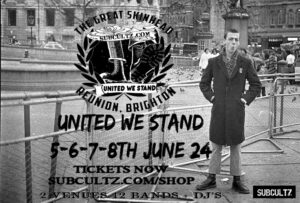
As well as the gang fights there are fights between just two people. In a team fight between gangs anything goes but if two people fight and it looks fair they are left to it. ‘You get one geezer fighting another geezer, it’s a straightener like, he might be looking for so and so and he might go up and say ‘right you, a straightener, then we leave ‘em alone.’
Some of the gangs like the Highbury and the Angel have leaders but many of the smaller gangs have different leaders for different activities. Some people are listened to more if an event is planned. Someone will organise something ‘like going to Southend for the weekend or a crew going out and whacking someone.’ Then of course there are those that are the best fighters. ‘There are fighters and then there are cranks, madmen. Like Tony. Everytime we have a fight some cunt he just wants to stomp them into the ground. He goes mad and starts shouting ‘Stomp Stomp’. You know that cunt what was on the floor at Ally Pally. Tony had this huge broom pole and was stomping him for five minutes.
‘We had a bit of agro up there like.’ There are other targets as well as rival gangs. The targets are other easily identifiable groups such as students, Pakistanis and Greeks. Weirdos and students they cannot understand. ‘What I hate about weirdos is that the majority of them is students. We’re paying for them to go to their colleges to get educated so they can help us run the country, it may not be my taxes but everyone contributes like, if it weren’t for them your tax would go down even if it was just a penny. Then those fucking peace demonstrations. The’re all shouting about fucking love and peace and that then they go down Grosvenor Square smashing windows and we get a bill from the Americans; we fucking owe them enough dough as it is.’ The feeling is that if weirdos want to dress strangely and be dirty ‘they’re right states they are, right two and eights’ then they are entitled to get done over. One way to get a weirdo is to jump him if he does not move off the pavement out of the way of the gang, or to wait in the entrance tunnels of the tube and to rush at him and jostle him. Sometimes landing a few kicks. ‘Weirdos is no fun to jump though because they don’t fight back, they just curl up while you kick them.’
Weirdos are also hated because they are friends with foreigners – Bubbles (Bubble and squeaks – Greeks) and ‘them Black Irishmen from the north – Pakkis.’ ‘We can’t stand the Pakki’s – we all went down Drummond Street one night, down the road that is, like its all infested with Pakkis. About fifty of us went down fucking putting bottles through their restaurants and that was a good laugh that was. It got in all the papers, how the Pakkis were asking the police if they could arm themselves and form vigilante groups.’ And of course the Irish. ‘I don’t know why we don’t fucking give them back Ireland if they give us back Camden Town.’
Strangely they don’t dislike West Indians. It might be because they dig the West Indian Music and dance their dances. Double D – Desmond Decker, Arthur Connely, Roland Owl, Otis Redding, The Ethiopians, The Skatallites, Buster, The Untouchables, and Max Romeo. Sometimes a bit of bubble gum creeps in but mostly its Blue Beat, Ska, Rock-Steady and Reggae music. The Blacks are admired by the gangs. ‘Like they were the first with the short hair. They’re alright the Rude boys. Rudies hang out with Rudies mostly, and with white girls, and Black fight Blacks and Whites fight Whites and that’s it.’
Another example of how the media will always try to insinuate that all Skinheads are braindead, and Neo Nazi. surely after all these years they would finally print some truth.
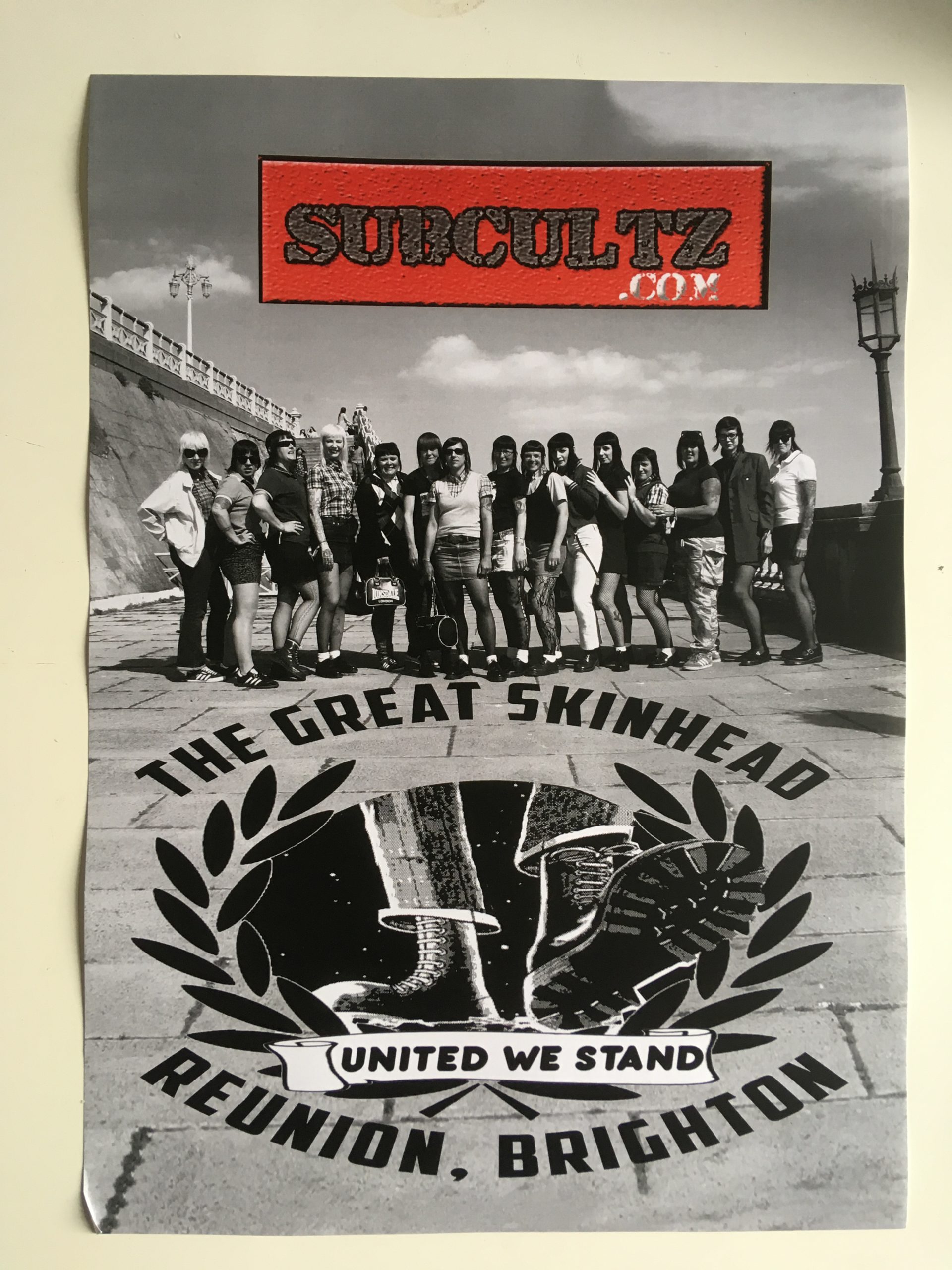

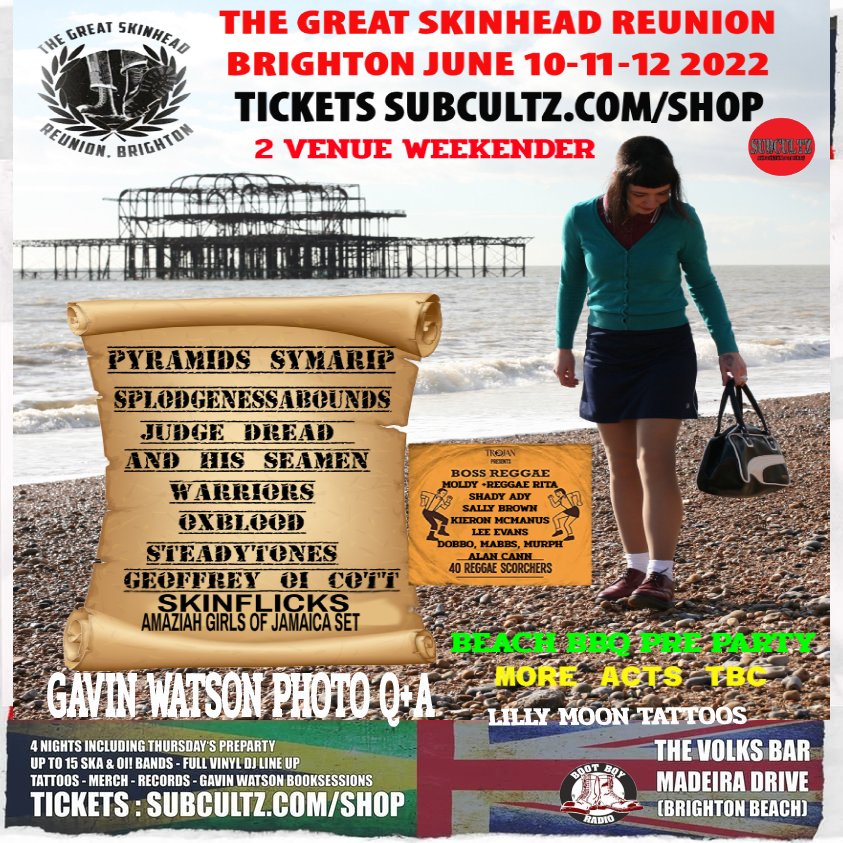
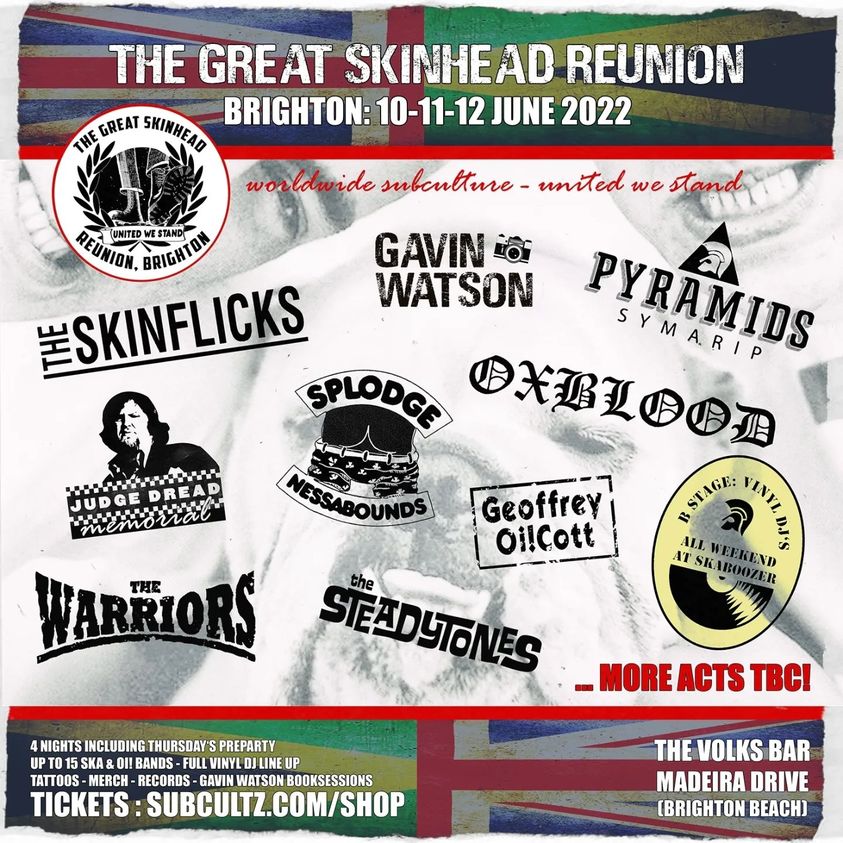
Established in 2011 The Great Skinhead Reunion Brighton was designed to bring Skinhead back home to where it was born in the 1960´s When the Mods and Rockers came to Brighton and hit the headlines, establishing their own youth culture. From those early Mods came the Skinheads, who embraced the new music coming in from Jamaica known as Ska. The Jamaican immigrants to the UK mixing with British working class kids with style and attitude, to form a new youth culture.
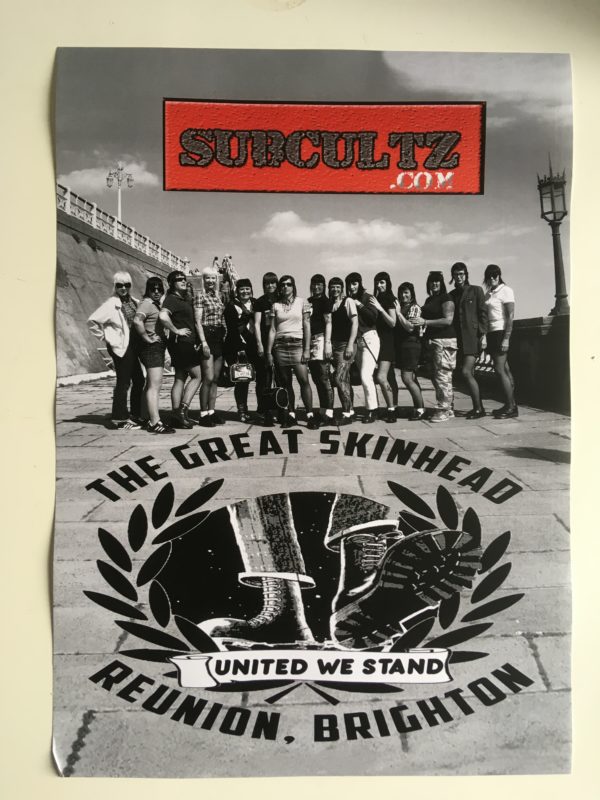
The second wave of Skinhead began to build in the mid 70´s with the birth of Punk Rock in 76, this time musically the Skinheads adopting the Punk rock sound and aggro of the football terraces, Working class bands forming and putting out their own angry antisocial messages in music, frightening the media into a frenzy of misinformation, who promoted the image of hyper violent bootboys and girls on the loose. This was a time of major political unrest in the UK and extremist groups tried to recruit within working class culture, often targeting Skinheads and football supporters, in the hope of win one, win them all pack mentality.
By 79 The skinheads were on the fightback and in London with bands like Madness and Badmanners, linked with British Midlands such as Coventry bands The Specials. The Selector and The Beat and created the 2tone label, which firmly mixed black and white youth together against this media onslaught.
In 1981 came the next wave. Oi! music was unleashed by Sounds magazine, bringing back the angry streetpunk energy and protest into the Skinhead subculture, once again giving the media and movie makers something to chew on.
Over the years the pendulum swung back and forth, but against all the odds Skinhead in its genuine form found its way across the world, connecting the Working class of Britain with mainland Europe, during the cold war even into communist Eastern block, then across to USA, South America, and in modern times, Indonesia to pretty much every westernised nation.
At the Great Skinhead Reunion Brighton you will find the most genuine, real and very friendly welcoming event in Skinhead history. Real people who have lived the life, mixing with new faces just coming in. We actively search for new acts to showcase and tour. We reunite old bands and give them a stage to play, we encourage scene DJ´s from across the worldwide scene, to play and network. Together all of us taking the scene forward, learning from previous mistakes, without selling out our principals of a true Working class subculture. The reunion invites everyone to attend, be you a skinhead or just someone wanting to be part of the event, interested and wanting a great fun weekend. We also actively support charities every year.
United We Stand!
FULL 3 DAYS EVENT, YOUR WRISTBAND IS VALID THROUGH OUT, YOU CAN USE IT FOR AS LITTLE, OR AS MUCH AS YOU WANT. THE EVENT WILL SELL OUT.
WRISTBANDS GIVE YOU FULL ACCESS TO ALL THE EVENT, THREE FULL DAYS AND NIGHTS OF ENTERTAINMENT, 12 BANDS, 10 DJ’S PLUS A SPECIAL PRE PARTY BEACH BBQ ON THURSDAY PRE PARTY
The line-up maybe subject to change, as so many band members and dj’s are involved, alcohol, world wars and famine can be unforeseen, but the Great Skinhead Reunion, is more about coming to Brighton to see all your friends and making some more, for 3 full days of mayhem.
SKINHEAD ONLY HOTELS .
Add to your experience, by getting a room in our Skinhead only hotels. Conveniently located, with a short walk to the venue, and no moaning neighbours to worry about. The rooms vary in size and cost, to fit your needs. all within an easy walk to the skinhead reunion venue. We have hotels exclusive to the Great Skinhead Reunion guests and bands. Party party !! please email subcultz@gmail.com with your requirements, to be booked into the Skinhead Hotels
For those on a low budget, its worth checking Hostels and campsites, but my advice, is to get in the reserved hotels, for a nice stress free, clean and comfortable holiday in Brighton.
TRAVEL INFORMATION
Brighton is situated on the south coast of England, approximately one hour from London. London Gatwick is the nearest airport. There are regular direct trains and National Express buses. The next nearest is Heathrow, We Strongly advise NOT to fly to Stansted or Luton as this is a long way and expensive UK public transport, but if you have no choice then use National Express buses from those airports, which you need to book in advance to get cheaper rates, and you risk losing valuable drinking time
The nearest ferry port serving mainland Europe is Newhaven -Dieppe . Newhaven is about 20 min drive to Brighton. Dover is about 2 hours to Brighton
PARKING ZONES – one of the worst aspects of Brighton, is a lack of affordable parking. my advice is to use street parking on the suburbs of Brighton, its a reasonably safe place. a good bus service will take you into brighton centre (churchill square) and a short walk from there to the sea front. worth allowing the extra hours work, to save yourself serious parking charges. Wilson Avenue is about the nearest free street parking to the venue, jump on a local bus back into town.
All Event Enquiries email Symond at subcultz@gmail.com. phone (uk) 07733096571
The Facebook community group Facebook group
Brighton can lay claim to being a big part of the birth of Skinheads. During the Mods and Rockers battles of the 1960’s when London lads would descend on the South Coast for bank holidays to Peacock and cause ‘Bovver’ the term Skinhead was born, to describe the short haired Mods.
Becoming probably the biggest and longest standing of all the youth fashion subcultures, Skinhead has matured and now become a worldwide community. Distinctly recognized by almost military shaven head, boots and braces. The real skinhead is a working class product of the British council estate ‘salt of the earth character’ fiercely proud of his identity,with an obsession for clothing, style and music, equaled only with his love of beer.
On the first weekend of every June, since 2011, Brighton has seen an ever increasing number of Skinheads and their lovely Skinhead Girls invade Brighton. Boots, Braces, pristine clothing and a cheeky smile. Attracting scene members from right across the globe, to Madeira Drive, overlooking the beach. A full three days of Skinhead related entertainment is laid on. DJ’s playing hyper rare vinyl, from the early days of Jamaican Ska, through to modern day Street Punk and Oi. Live bands hit the stage of the Volks bar each night. With various aftershows happening until the early hours, to keep the party buzzing.
Pyramids – symarip Autumn tour dates 2019
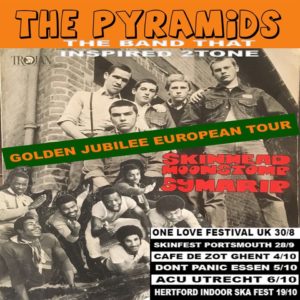
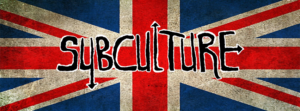
Mods Of Your Generation Interview – Subculture – Youthful, Passionate, Energetic & Cool MODS OF YOUR GENERATION·THURSDAY, 1 AUGUST 2019
SubCulture are three youthful, passionate, energetic cool teenage lads reigning from Nottingham. They are a mod inspired band which is reflected in their sound and image. Their performance is energy fuelled with a know nonsense approach to putting on an incredible performance. They remind many fans of a revamped, young band we all know and love called The Jam. They stand out amongst other bands on the scene as they favour a sharper look that makes them stand out and in turn defines who they are.They perform a variety of covers however they have released much of their own material which is superbly written and executed. Recently the band released their new single ‘The Kids don’t Dance’ which is brilliant and actually something anyone can dance to. They are taking the East Midlands by storm, I have know doubt these three lads will go onto have a successful career. I wish them all the best in all there future endeavours and i am sure they wont disappoint as they continue to gig and release more music. These lads are definitely ones to keep an eye on so make sure to follow them on their social media platforms and keep up to date with future gigs as they may be performing near you soon. Band MembersOliver Orton-Guitarist/Vocalist
Lewis smith-Bassist
Declan Mills-Drummer
(1) You all went to the same school together, What bought you together as friends? I’ve known Declan since we were in primary school. From about the age of 4. Long before any of us could even play an instrument. With Lewis, I met him in my 3rd year of secondary school. He had guitar lessons with the same teacher I had at the time and his lesson would always be scheduled for after mine, so we would talk for a bit before going back to lesson. One thing led to another and we became friends through those guitar lessons really. (2) Can you tell me something that people may not know about you as a band? One of our first proper gigs was at a micro pub in Nottingham and it consisted of us playing about 15 or so covers songs.
(3) How did you then go onto to form the band? Both Me and Dec took music in school and as a requirement you had to play an instrument. I already had been playing guitar for years, but Declan decided to give the drums a go… And that’s how that started. With lewis, like I mentioned, he used to have guitar lessons so he knew how to play the guitar, which came in handy one lunchtime, as we had decided to mess around in one of the practice rooms since we were bored. The result of that was Me on guitar, Dec on the drums, and lewis on the bass….
(4) Who are your musical inspirations as a band and as a musician? Our musical inspirations and band inspirations are out of the same mould. With bands such as, The Jam, The Who, Small Faces and Secret Affair, to Sex Pistols, The Clash, to Madness etc.

(5) The band is heavily influenced by the mod scene in regards to your sound and fashion. How did each of you get into the scene and who or what influenced you? My parents grew up with the music, and I discovered it when I was around 14, and since then it’s just been like a snowball effect. In regards to Lewis & Dec, I think the whole thing fell naturally after deciding back in the school this is what we will do with the band.
(6) You have released your new EP ‘The Kids don’t dance’ where can fans buy the EP and how would you describe it? The Kids Don’t Dance to me is something you could dance to. Even given the name. It’s not strictly 60’s, Motown or soul, but it’s most definitely got those influences injected into it. The single is available to buy online as a 7″ vinyl record from www.heavysoul45s.co.uk
SubCulture The Kids Don’t Dance (Official Video) (7) Who writes the bands material? All the songs are written by me. It always starts out sat with an acoustic guitar at home.
(8) What would you like to achieve it as a band and how do you wish to Achieve it? If at any point we could make this our sustainable living, it would be great. It’s what we love to do after all. As for how, well we’d like to keep progressing and moving with it. We don’t want to put the brakes on. We’ve got something and we want to run with it.
(9) Since the band formed in 2016, What has people’s reactions been to your sound and energetic performances on stage? We’ve had some smashing reviews and met some great people from gigging. The way they’ve have taken to us really is fantastic. We’ve had people say they want us to do well, and it’s cool to have a backing from what was a few minutes previous, a complete stranger.
(10) If you could be in any band in history which band would it be? Now this could be the million dollar question. Literally. It’s a tough one. Maybe a band that have a Christmas hit so we could live off of the royalties all year round….How about Slade? But in all seriousness, we model ourselves off of the mod scene and I think The Who would be a wise choice. It seems like it would quite good fun. (11) Can we expect more singles to be released in future or an album?Yes! We try to release as much of our own music as we can. In fact, a new single isn’t too far on the horizon…
SubCulture – Young (12) Where can fans purchase your music and keep up to date with latest gigs? All our music is available on the usual digital platforms such as Spotify, iTunes, Amazon, Google and the rest, as well as on vinyl from Heavysoul45s.co.uk. All our gigs are posted on our Facebook page, along with regular updates, photos, videos etc. (13) You perform a variety of covers. What is your favourite to perform and why? We don’t really have a favourite cover song to play, however we would say there’s definitely certain songs that go down a storm at gigs. To name just a few would be Sha la la la lee, My Generation, Town Called Malice, Too much too young. (14) What message would you like to give all your fans and supporters? Just to thank them for the continued support they give us and for the faith they have in us. It’s that kind of thing that spurs us on.
(15) Where would you like to be in 5 years from now and what can we we all look forward to? Well wherever we are, we’d like to be able to look back at the past 5 years and say that they meant something. Interview by Johnny Bradley for Mods Of Your GenerationInterview Credit – Mods Of Your Generationphoto & Video credit to SubCulture
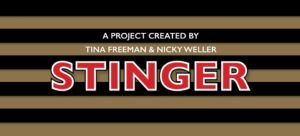
Mods Of Your Generation Interview – Tina Freeman – Stinger The Book

MODS OF YOUR GENERATION·MONDAY, 22 JULY 2019

I came across ‘Stinger’ after seeing a post on Facebook an illustrated book based on Quadrophenia. Intrigued by the beautifully painted images I wanted to find out more. I discovered that it was a kickstarter project and Immediately wanted to show my support and pledge. I then discovered Tina Freeman the lady behind the idea to find out more about her and the wonderful book. I asked her if she would like to feature in an interview to help promote it. We spoke on the phone and instantly hit it off as if we had known one another for years. We discussed Nicky Weller’s involvement as collaborator of the book and many of our common interests such as music and fashion. It was so exciting to hear all about the characters in the book and who they were based on. Tina described them to me with absolute passion & love for the project.As a father of three young children I am often asked ‘Dad what is Quadrophenia about?’ as it has been referenced many times at home. My children are not old enough to watch the film, therefore I was immediately excited to share this book with them. I felt extremely privileged to receive a soft back copy of the book from Tina. I sat with my children and read the book pointing out the many references to Quadrophenia and the mod scene as they eagerly listened to find out what adventures awaited ‘Stinger The Bell Bee’I highly recommended this book to anyone with a passion for the 60’s and Quadrophenia. This book is a great way to share your experiences and love for music & fashion with your children or grandchildren and inspiring the next generation. I hope you enjoy reading the interview as much as i did asking the questions.

1) Where did you grow up and how old were you when you discovered the mod scene? I grew up on a very 60s Housing Estate in Birmingham, lots of Flats, Maisonettes and lots of concrete ‘the planners dream gone wrong.’ There were a few cool Mod lads wandering around after the 79 Revival which intrigued me. I became a little Mod girl at the young impressionable age of 13. I got my first scooter, a Lambretta LD 150 before I was even old enough to drive it.

2) At what age did you discover you had a talent for drawing? Very young really, I used to copy all the Disney characters from my “Now I Know” comics from the age of three. 3) Who are your favourite bands or artists and the most influential to you as a teenager growing up? I had an infant school teacher who loved The Beatles, so I think my interest and love of the 60’s came from this. The first Mod band I listened to was The Jam. I loved the energy and passion, still do.Then I went through a blinkered phase of only listening to original R&B and soul. I think the bands most influential to me as an artist have to be The Small Faces and The Who.

4) What bands or music do you listen to now? I have much wider tastes these days. I think we are incredibly lucky under the “umbrella of Mod” to have so much to choose from. I think I would have got bored and moved away from the scene if we didn’t have that ever evolving attitude.Even if you just take Wellers’ life body of music, there are enough songs here to suit your ever changing moods, see what I did there?I paint to music; I really think it adds the magic to the process.At the moment I have True Meanings on my turntable, by Paul Weller. I am like a teenager again, playing it over and over, absolutely love it. I seem to be playing The Beatles a lot too, perhaps that is just because of my “A Bee Road” painting in my book.I also have a CD player (I know! how very modern of me) to listen to ‘Georgie the brightest star’ by The Electric Stars. It is a beautiful hymn about George Best who features in one of my future stories. 5) In the 90’s you shared an art Studio on King Street in Manchester and worked as a freelance illustrator. You also worked as a portrait artist for Manchester United. Tell us a little bit about your art studio and some of the footballers you did portraits of? I relocated to Manchester after working in North Wales. The studio was seriously cool, with a lovely old balcony overlooking King Street. I worked for some great Ad agencies and The Royal Mail as well as Man United. Along with other merchandise I did limited edition portraits of Ryan Giggs, Eric Cantona and Peter Schmeichel.

6) When did you draw the initial illustrations for the book and what inspired you to come up with the concept basing it on the mod scene and Quadrophenia? As a freelance illustrator I had worked on The Red Devil mascot character and Billy the Butlins Bear. I started thinking of a cool Wasp character to drive around on a Vespa.I had already produced a Who Collection of paintings and screen prints and had a few meetings with Trinifold Management. It was a bit of a light bulb moment for me when I realised, I could call the character ‘Sting’ and tie it into my love of Quadrophenia.I had two versions which I explained to Robert Rosenberg, one of a generic Wasp character tootling his way around Britain in The Sixties, the other very much based on Quad, using iconic scenes from the film which ultimately if animated should be very music driven.

7) Many of the characters in the book are based on members of your favourite bands & the Quadrophenia cast. Can you tell us a little bit about each character and who they are based on? Without wanting to give too much away, you can meet characters from Ace Mod Dog bands “The Whoof” and “The Cool Faces” with Ste Merrimutt. When I showed my portfolio of original paintings to Pete Townshend I was quite nervous. Luckily he liked his character “Pete Houndshend” and has been really encouraging. I am yet to meet Roger, although this is very much part of my wish list.

8) You showed Franc Roddam the director of Quadrophenia the illustrations and your idea to base the book on Quadrophenia. What were his thoughts and was he supportive of your plans? This was about 5 years ago, a very important piece in the jigsaw. I met Franc down in Brighton where he was doing a Q&A. He had mentioned that he had a two year old, and it would be a long time before he would get to know of Quadrophenia. I told him it might be sooner if he liked my story and showed him the first few watercolour paintings. I asked Franc if I could dedicate the book to his son, which he agreed.The story line and character evolved over the next few years, changing the name from Sting to Stinger to avoid copyright issues. I then made the decision to change him from a wasp into a much more lovable Bee Character. It felt right then, with him coming from Manchester, and having much more heart.

I met up with Franc again at The Teenage Cancer Trust event this January, where he introduced me to Sting, who just so happened to be sat at our table. It is very rare for him to attend a Quadrophenia event, so I was incredibly lucky. Sting loved the character and gave the book his full blessing, which was fantastic.

9) You met Nicky Weller at the Cunard Building in Liverpool, in the first few days of the Jam exhibition ‘About The Young Idea’. Can you explain how this led to collaborating with her to publish ‘Stinger’? I went along to The Jam exhibition as a fan and ended up being invited in to sell my ‘Quadrotina’ artwork in the shop. The next day was my birthday, and I had a surreal experience eating cupcakes with Nicky and Ann Weller. My “Quadwoofenia” collection of Dogs on Scooters sold really well, so I introduced a Bruce Foxtail, and Rick Boxer to the set. We had such a laugh over the 14 weeks coming up with new names and characters.It was at their literary event that I mentioned that I had a children’s book based on Quadrophenia. I sat down with Nicky and Den Davis who ‘got it’ completely, especially the concept of having it animated as a kids’ TV series or feature film.

10) Nicky introduced you to her brother Paul Weller. What were his thoughts on your artwork and your ideas and what other things did you discuss? The first time I met Paul he came into the shop at The Jam exhibition, for a cup of tea. Nicky showed him my “Paw Weller” Quadwoof pic. It was hilarious, not at all how I imagined it would be if I ever got to meet him. I met him recently at his studio with Nicky. He asked how the book was going on Kickstarter. In fact the night before we had smashed the target of over ten thousand pounds pledged. It was lovely to tell him the news; he seemed genuinely really chuffed for us. I told him how much I had enjoyed the walk through Delamere Forest for his gig the previous week. We chatted about the success of his latest tour, and the wonderful supporting Stone Foundation. He asked about my kids which meant the world to me.

11) What is the vision for Stinger? As I believe this book is the start of a series of books based around the 60’s and the mod scene. Stinger is the first of this series. I have this idea where different characters from Quadrophenia are developed and will have their own spin off adventures. I have had such fun with this concept, including what we know has happened to the actors after Quad. I would love different cast members to narrate the books, in the same way Phil Daniels recorded Stinger. To me Pete Townshend’s’ musical score is what really drives Quadrophenia. We are brilliant in this country at animation; just imagine combining a series with fantastic music and how much more it would connect with kids, hopefully watching with their parents and grandparents.I often find myself trying to explain what “a Mod is” to young children. It was easier for me to illustrate the concept of being ‘the best that you can be’ through Stinger. You never know, we might have a new little revival on our hands.

12) What was it like for you meeting Phil Daniels and the cast of Quadrophenia? Firstly can I say what an honour it is to know, and now work with some of the cast. Quadrophenia was my coming of age Teenage film, and certainly helped shape me as a young Mod, scooterist and artist. My friend and I would hire the video out most weekends and knew it word for word. Imagine how that feels now for me to be not only talking to but sharing my ideas creatively with my heroes.

I met Phil Daniels first, with Garry Cooper (aka Fenton) and Trevor Laird (Ferdy) at a brilliant Quad event in Widnes where I was invited by Rob Wright to sell my artwork. I showed them the initial ideas for Stinger and asked if they would consider doing the voice over’s playing their characters if I got it as far as an animated project.

I kept in touch with Trevor, who has been so kind and generous with his time, helping me to meet other actors such as Lesley Ash, Toyah, Gary Shail and Mark Wingett to move forwards with this dream.

13) When will the book be available to purchase and where can people get hold of it? Now we have reached our target, we have to get the hard backed collector’s edition version printed and have the record pressed with Stinger narrated by Phil Daniels.Those wonderful people who pledged to get the book printed will be the first to receive their copies. After that we will be holding a few special events such as an official launch with readings and signings.

If you keep an eye on the website, and social media we will be putting out information and dates. Check out stingerthebellbee@gmail.com and https://www.stingerthebook.co.uk

14) What message would you like to give to those who have supported the book and to those who have pledged? Nicky Weller, our close knit team of designers Anthony Mulryan , Phil Dias and I am so very grateful to each and every person that pledged, shared our posts, and supported us through our first experience of Kickstarter.I always knew that I would have to come at this project from a different angle. A children’s book on Mods would be seen to have a very limited audience in the eyes of a publisher. I have been amazed how many normal (“Wot is normal then?”) fans the book has, of people of all ages and walks of life. I initially wrote it for Mods to enjoy with their kids and grandchildren, but found it has a much wider appeal.I think anything really written from the heart will find that connection with people, whether it be a shared love of music, scooters or just the pretty pictures.
Interview by Johnny Bradley for Mods of your GenerationInterview (c) Johnny Bradley & Mods of Your Generation 2019
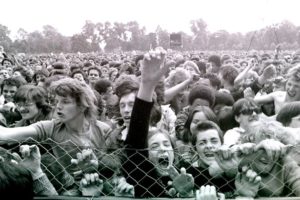
The big picturePhotography The photographer who captured the spirit of punk has released a book of her most arresting portraits
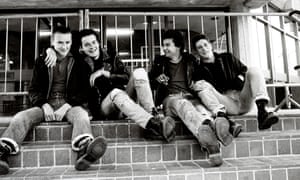
If they weren’t a band, they should have been. Janette Beckman, who chronicled the early years of punk in the UK, took this photograph in Coventry in 1980. She had by then made her name on Melody Maker, with pictures of the Clash on tour and the Sex Pistols in a skip; she caught the moment when Paul Weller first met Pete Townshend, one modfather to another; she made the Police’s first album cover; she assembled the Specials on Southend pier.
Beckman, who grew up in north London, had left London College of Printing and walked into Sounds magazine one afternoon in 1977 with her student portfolio. She was immediately dispatched to photograph Siouxsie and the Banshees and never looked back.
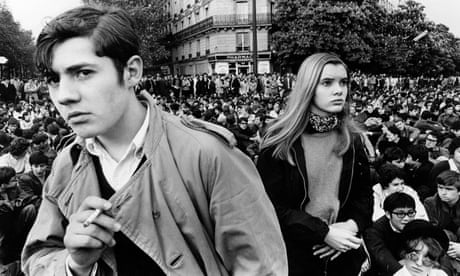
She was as likely to turn her camera on the audience and the streets as on the stage and the tour bus. In those years the boundaries between music and art and style seemed unusually porous. Punk was above all an “irrepressible attitude” she has suggested of that moment. “It was about change, the idea that people should question authority and do it for themselves.”
The four lads in this picture capture that spirit. They have put thought into how they look but are not striking poses. The picture is included in a short monograph of Beckman’s work of that time, which also includes images of Sid Vicious’s funeral procession and the Saturday afternoon punks of King’s Road, Chelsea. In 1982, after the edge of that attitude had given way to the posturing of the new romantics, Beckman moved to New York, where she took similarly iconic pictures of pioneer hip-hop artists and their followers. “People were really happy to be photographed back then,” she says. “As it didn’t happen very often.”
Janette Beckman’s Raw Punk Streets UK 1979-1982(Café Royal Books, £6) is available atcaferoyalbooks.com
Continue reading The big picture: punks and skinheads in harmony against Racism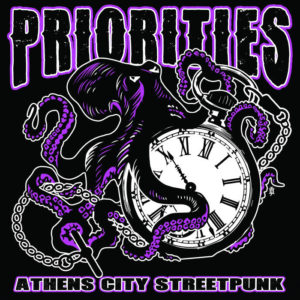
The EP is free! The band has members of Close Combat among others. Lliam is a very talented song writer. Check this awesome track out.
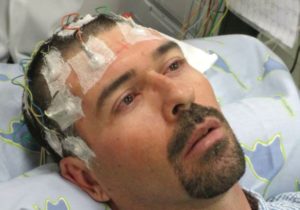
BY MAXINE LIPTZEN DOROT OCTOBER 15, 2016 02:59
Keeping active, John Daly pedals long distances over difficult European roads to help raise funds for orphans in Nepal. (photo credit: RONY R. BOONEN)
Metro readers first met 43-year-old John Daly in February 2009 in “The Harrowing Life of a Jewish Skinhead.” The article detailed his unbelievable life as a member and eventual leader of the North Florida branch of the Nazi Skinhead American Front.
Growing up in a small town in Florida, John Daly hooked up with a group of nonconformist kids with whom he thought he could fit in – an anti-racist skinhead group named after the county he lived in, Marion County Against Racism (MCAR).
While most people immediately associate the word “skinhead” with “Nazis,” there are different types of skinheads that most people don’t know about: non-racist SHARPs (Skinheads Against Racial Prejudice), and those who are black, Jewish and even gay.
As Daly recounts, “In my small high school in Ocala, if you weren’t on a sports team, you were a nobody. I wanted to be accepted so I got involved in an anti-racist group of skinheads, MCAR. We didn’t do much of anything except hang out and talk about what was going on with the racist skins in larger cities, relieved we didn’t have them in our town.
“The guys all knew I was Jewish, but it didn’t bother anyone. It was all cool.”
One night, two of Daly’s friends went to Orlando, where they were approached by local racist skinheads (neo-Nazis) and were ordered, with threats of beatings and intimidation, to give the neo-Nazis the names and addresses of their skinhead friends in Ocala for recruitment in order to build up their dwindling ranks. One of the names was Daly’s.
Several days later, there was a knock on the door of the Daly home. When John opened it, he saw three neo-Nazi skinheads, complete with swastika tattoos. Afraid to let them in his house where they’d see the family’s menorah and other Judaica, he got in their car and drove off with them. He knew that if they had come into his house and saw the “Jewish stuff,” they’d kill him.
In the car, the three Nazi gang members took turns telling him stories about how certain individuals had been mysteriously hurt and hospitalized trying to escape. The driver then turned to Daly, put out his hand and said, “Welcome aboard.” Daly, a nice Jewish kid from a nice Jewish home, was now officially a neo-Nazi skinhead.
He lived in constant fear that his secret would come out. Whenever Jews came up in conversation, he would change the subject, saying, “Well you know there’s no shortage of minorities.”
Most of the time, he and his buddies would hang out, drink and fight “rednecks.” Daly had a sharp tongue and would verbally go after people, scaring them off with threats. This earned him a reputation as a good fighter and kept him from having to use his fists.
Daly miraculously escaped death when his Jewish identity was revealed by a jilted girlfriend of one of the skinheads, and the furious neo-Nazis decided it was time to “kill the Jew.”
He was beaten viciously and then plunged into the Atlantic Ocean to the chants of “Die, Jew boy! Die!” Thinking they had succeeded in drowning him, the would-be murderers fled, but miraculously Daly survived and made his way home.
While in the hospital, he was questioned by police. The skinheads, realizing they were in serious trouble, testified against each other to avoid long prison sentences, all the while planning revenge against “that dirty Jew.”
Upon recovering from his injuries, Daly took up martial arts, knowing he had a target on his back. He eventually earned numerous black belts in three different types of martial arts.
IN SEPTEMBER 1997, as the last of the skinheads were being released from prison, Daly, then 23, made aliya and was sent to Ashkelon because there was an opening in the absorption center there. He learned Hebrew and adjusted to his new life, doing volunteer work wherever he felt there was a need for his help. He has been living in Ashkelon ever since.
In 1999, taking a break from his studies in Ashkelon College, he accepted a job offer to go on a speaking tour around the US. His incredible story was the catalyst for raising awareness of the dangers of the growing threats of racism and the skinhead movement there.
He visited Anti-Defamation League chapters, Jewish and Christian groups, schools and retirement homes to talk about Israel. He was also a motivational speaker for addicts and at-risk youth.
Not being drafted into the IDF – though not for lack of trying and never getting an answer as to why he had been rejected – Daly views his speaking on behalf of Israel wherever he goes as his “personal army service.”
In 2001, he was accepted into an academic program offered by the Jewish Agency. This allowed him to go to college tuition-free in return for volunteering (which he had already been doing). He earned a bachelor’s in sociology and political science from Ashkelon College and Bar-Ilan University, with a minor in Judaic studies. A master’s in public policy and administration followed a few years later.
Since returning from his US speaking tour, Daly has been busy with jobs as a travel agent and teacher, but his passion is still volunteering. For many years he was the Ashkelon volunteer coordinator for Yedid, a nonprofit with one stated aim – to empower people to solve their problems by teaching them to work together to find solutions on a local or national level. In February 2009, Daly ran for the Knesset with the Hayisraelim Party on a platform of electoral change. (The party didn’t win any seats.) He has also been active in the English Speakers of Ashkelon and with a city animal rights group.
DALY WAS leading a healthy, active life, which came to a sudden halt on October 10, 2009.
In a synagogue enjoying Simhat Torah services, he suddenly crashed to the floor – having suffered, for the first time ever, a seizure. He regained consciousness in the ER of Ashkelon’s Barzilai Medical Center, totally oblivious to what had landed him there and to the fact that he had undergone several tests and a CT scan.
Electrodes connected to an EEG help to track seizures caused by a brain tumor that is an inoperable cancer (photo credit: GAL SELA)
He was soon transferred to Soroka University Medical Center in Beersheba where, relying on the CT, doctors told him that he had a brain tumor resting on the right frontal lobe (which controls higher mental functions, motor skills, emotional stability and helps with concentration) and there was nothing to do but give him anti-seizure medication.
Three days later, Daly was sent home with a bagful of medication, and returned to college life. He was summoned for an MRI a month later; there, Soroka’s chief of neurosurgery gave him the grim news, “The only person I know who might be able to help is Prof.
Tsvi Ram at Ichilov Hospital [part of Tel Aviv’s Sourasky Medical Center]. He’s your one chance. Good luck.”
Daly’s records were sent to Prof. Ram at the end of December 2009. With his mother, Ruth, one of his brothers and his then-girlfriend anxiously waiting, He endured his first “awake” brain surgery, a procedure during which the patient is totally conscious in order to respond to different commands to see how their brain is functioning.Recommended videos
He was given a sedative to relax him and a local anesthesia was injected into his scalp. The anesthesia didn’t take, which according to doctors happens in just 1 percent of patients – and he was one of that group. He remembers intense, agonizing pain, screaming, cursing, yelling, drilling and the sounds of anxious voices all around him trying to calm him down.
Because of the excruciating pain, not only could he not pay attention to what was being asked of him, there was the real possibility of a life-threatening seizure. The anesthesiologist then sedated him completely. One of the results of this surgery was that his left side became partially paralyzed and he still endured massive seizures after the operation. To minimize the episodes, he started on doses of medications but nothing helped; he was time and again experiencing potentially fatal seizures.
His life became a series of doctor visits with regular trips to an epileptologist, a neurosurgeon, a neurologist and a neuro-oncologist. Throughout all this, he still managed to volunteer at Yedid to the best of his abilities. On September 2013, back in the hospital, Daly was taken off all medications for a full week. This was done to induce seizures so a video testing system could track them, allowing the specialists to understand them better. He was a prisoner in his hospital room, attached to electrodes and cables. It was here that he celebrated his 40th birthday, not knowing if he’d reach his 41st.
These procedures led to a second awake brain surgery in February 2014, carried out with the help of Dr. Gal Sela, a neuropsychologist. Ram once again performed the procedure and, thankfully, it went smoothly and without pain. During the operation, a portion of the tumor was successfully excised, but not all of it could be removed. As a result, Daly still has seizures, though they aren’t as aggressive.
Incredibly, after long months of physiotherapy, he was able to return to his life with some physical limitations. He still does volunteer work and lectures in high schools and colleges around the country, never covering the long, bright scar that runs across the top and side of his head. For him, it is a badge of honor.
Daly considers the long scar running across the top and the side of his head a badge of honor (photo credit: RONY R. BOONEN)
IN JULY 2014, Daly was tracked down by a former friend who had been a member of the skinheads but was not in on the attempt to kill him. He wanted to make amends for his youth.
Although there was the chance it was a setup, Daly agreed to meet him, hoping that the friend’s goal was indeed legitimate.
The friend invited him to Prague, and since his seizures were less aggressive and to conquer his fear of traveling and meeting someone from his vicious past, Daly flew to meet him. This meeting resulted in a soon-to-be-released documentary, Escape From Room 18, making the rounds of global film festivals this season.
At an international pro-Israel rally in Jerusalem, Daly met a Belgian woman named Sandy, a staunch supporter of Israel. Intrigued by his life story, she invited him to Europe for the first of several trips speaking with audiences all over the continent.
This connection led him to an orphanage in Nepal founded and privately supported by a group of Belgians. To raise funds, they sponsored a bicycle trip, and Daly – who for years was not allowed to ride a bike or even think of driving a car – got the okay from his doctor and volunteered to join, provided he wore protective gear. he trained hard in preparation for this trip and was proud and elated to be an active part of it.
From this past May through August, under the Daly-designed banner of “Survivors for Survivors,” off he rode through wind, rain and heat on bumpy European roads. Exhilarated and crying with joy as he rode, thinking again and again, “I’m not supposed to able to do this,” he and his team got donations from as far away as Australia and the US. In the end, they raised more than €4,000.
To ensure all the money makes its way to the orphanage, Daly has been asked to go to Nepal for two weeks. He plans to expand the operation of the orphanage and to repair damage caused by the massive 2015 earthquake.
TODAY, DALY is in a watch-and-wait state. His tumor is an inoperable cancer that is constantly growing, albeit very, very slowly. If the tumor gets to the point where it must be treated, Daly will have radiation and chemotherapy treatments, but no one can predict how his tumor will behave.
Meanwhile, he lives an amazingly active life with daily doses of medicines to ward off potentially fatal seizures, which could happen at any time. The average life expectancy for someone with his type of tumor is five years.
Daly is going into his eighth.
Daly and his mother, Ruth, share a light and caring moment at her home in Ashkelon (photo credit: JOHN DALY)
“I’ve been living under a death sentence since I was 17, and now this tumor can go crazy at any time,” he says.
“Just as I refused to let the skinheads win, I won’t let this mass in my brain stop me from fighting for this country with my words, encouraging support of Israel from people abroad and helping people living here.”
Besides the surgical staff who saved his life, there is another hero in this saga: Ruth Daly, his beloved mom.
Having her son lead the dangerous life he did as a teen would be enough to overwhelm any parent, but Ruth, constantly worried for her son’s safety, was always there for him. No matter what, he always knew that he had a loving home to return to along with unconditional love.
Ruth made aliya to Ashkelon in 2009, a year after becoming a widow – Daly’s father, Ken, is buried in the Ashkelon cemetery. Ruth still worries about her son and is frightened for his health, safety and well-being, but one would never know it since she’s always smiling and laughing. When she looks up at her 1.8-meter-tall son, it is with a tremendous amount of love and a bit of awe that he’s still beating the odds.
Daly ended his meeting with Metro on a pensive note.
“When they tried to kill me, they shouted, ‘Die, Jew boy! Die!’ but they failed spectacularly. My revenge is not only living, but living in Israel, sharing my love for my heritage and this country, even if it costs me my life. You know, it’s very simple. They lost. I won.”
Daly’s Hollywood-like life has been equally exciting and – given his mission to give back to the world while constantly skirting the grim reaper – inspiring.
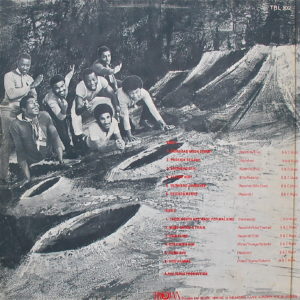

As The Bees this band are recognised as the first ever UK based Ska band, backing legendarty Singers as Prince Buster and Laural Aitkin. Changing their name several times during the 1960’s. The Pyramids were formed in the mid-sixties by six young British-based Jamaican musicians. The band were also known at various stages of their career from The Bees, The Pyramids, Seven Letters and Zubaba. In the mold of The Equals, they began their career as a straight “pop” group, consisting of founders Frank Pitter, Michael Thomas, Josh Roberts, Ray Knight, Monty Naismith and vocalist Roy Ellis and were signed to President Records.
In 1968, President bagged their first Number 1 with “Baby Come Back” by The Equals, featuring a teenage Eddy Grant on lead vocals. At the request of his label, Grant had also been working with the Pyramids, who had backed Prince Buster on a recent U.K. tour. Besides composing songs for the band (and one for Prince Buster himself, the rude classic “Rough Rider” which was later covered by The Beat), Grant also produced several tracks for The Pyramids in 1969 including the band’s debut single and sole hit, “Train to Rainbow City” which appeared on their self-titled LP.Here is a video of the song “Train To Rainbow City” written by Eddy Grant for The Pyramids:
According to sleeve notes from a best-of collection released by Trojan Records, The band’s relationship with President soured when their record ‘Mexican Moonlight’ was a hit in Germany, but the label neglected to tell them about it. As a result, the band decided to rename themselves so that they could record elsewhere without President Records knowledge. Organist Monty Neysmith came up with a plan: ‘I came up with the idea of turning Pyramids around and you leave out the ‘d’. So originally it was spelt Simaryp. I don’t know how it came to be spelt Symarip!’ So in 1969, safe in the knowledge that Presidnet Records would never unravel the secret of their true identity, Simaryp/Symaripprepared to record for their new label, Graeme Goodall’s Treasure Isle – whose chief label was ironically called Pyramid!

While working as his backing band Laurel Aitkin suggested to the boys that they should write an album for the emerging Skinhead subculture that had started to develop from the Mod culture in England, firmly picking up the Jamaican Ska sound brought into the dancehalls by the new immigrants from the colonies.
The band then recorded their first album as Symparip in 1970 and immediately became the face of “Skinhead Reggae” with songs like “Skinhead Girl”, “Skinhead Jamboree” and “Skinhead Moonstomp”, which is based on the Derrick Morgan song, “Moon Hop”. According to Neysmith, the band noticed a new element coming to their live shows: Skinheads. ‘A lot of skinheads started coming to our shows, and Roy and I said, it would be good to write a song for skinheads. We remembered a song [‘I Thank You’ by Sam & Dave] where they said, ‘I want everybody to get on their feet, and this and that, and give me some of that old soul music’. I thought, let’s change the words and put, ‘I want all you skinheads to get on your feet, put your braces together and your boots on your feet, and give me some of that old moonstomping’.In 1980, the album Skinhead Moonstomp was re-issued in the wake of the 2 Tone craze, hitting the UK pop charts for the first time and a whole new generation of fans were introduced to their sound. The Specials further expanded their name and popularity of Symarip by recording a live cover version of “Skinhead Moonstomp” as part of a medley of 60’s reggae songs on the B-side of their “Specials Live EP” which hit number one in the UK charts.

Here is a brief video of Symarip performing in Horace Ove’s documentary “Reggae” recorded at Wembley in 1970 before a crowd of 14,000. The tune is a Rupie Edwards tune called “Pop Hi”. Don’t miss Roy Ellis’s back-flip at the start of the clip:
Amazingly Ellis and Neysmith have reformed the band and plan to perform around the UK in 2008-09. They will perform a show on Friday October 31st at The Hootananny in Brixton, London. You can get ticket information here. There must be something in the water in the UK that’s causing all these bands to reform.
Here is the track list and a download to their 1969 LP “Skinhead Moonstomp” that was reissued in 1980 during the height of 2-Tone”

1-Skinhead Moonstop
2-Phoenix City
3-Skinhead Girl
4-Try Me Best
5-Skinhead Jamboree
6-Chicken Merry
7-These Boots Are Made For Stomping
8-Must Catch a Train
9-Skin Flint
10-Stay With Him
11-Fung Shu
12-You’re Mine
13-Bam Bam Baji
14-Hold Him Joe
15-Tomorrow at Sunrise
16-Parsons Corner
17-Redeem
18-La Bella Jig
19-Holidays By The Sea
20-Feel AllrightSymarip – Skinhead Moonstomp
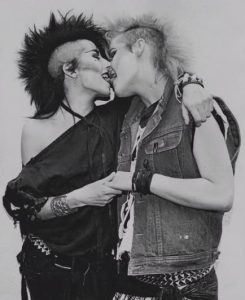

In the early 1980s, young gay women, many still teenagers, gravitated to London, attracted by its diversity and experimentation. A lesbian subculture grew up around the squats of Brixton and Hackney. ‘You could tell which houses were squats by the painted doors and blankets in the windows,’ Siobhan Fahey remembers. ‘I wanted to live in Brixton, so all I did was walk around the streets asking if I could move in.’
Fahey had come to London from Liverpool as a teenager. At the time being gay could be dangerous. It had only just become legal for gay men to have sex, and in 1988 Margaret Thatcher brought in Section 28, legislation which outlawed the promotion of homosexuality as ‘a pretend family relationship’. The capital’s empty buildings offered safe spaces for sexual openness, creativity and activism, and so the Rebel Dykes – as Fahey later christened them – were born. Dressed in biker jackets and chains, their hair sculpted, shaved and rainbow-coloured, the Rebel Dykes were the antithesis of ’80s conservatism. They helped establish women-only squats across the city and opened London’s first lesbian fetish club.

Now, though, these pioneering women feel like they’ve been written out of history. ‘There have been no books or articles. It’s like it never happened,’ Fahey says, explaining that their ‘punky intersectional feminism’ was attributed to ’90s movements like Riot Grrrl, while stories about 1980s squat culture often focused on men. Eventually, she set up a Facebook group to find former Rebel Dykes and nearly 200 people joined. Now she’s producing a documentary to tell their story.
The roots of the Rebel Dykes can be chased back to the Greenham Common Women’s Peace Camp, the female-only protest which campaigned against US nuclear weapons being sited at an RAF base in Berkshire. It was a feminist hub and, according to many of the women I spoke to, a hot spot for coming out and hooking up.

Rebel Dyke Karen Fischer, known as Fisch, explains that, for many lesbian women, heading to Greenham was liberating. ‘It was like being alone on a desert island, then suddenly there were loads of you,’ she says. ‘It was like being a kid in a candy store. I was young, I was cute – why not?’
There was more at stake, though. ‘If people found out you were gay, you could lose your job, you could get your kids taken away,’ says Fisch. ‘Our lives were made political by the lifestyles we had.’ One Rebel Dyke told me how a Lesbian Strength March was followed by neo-fascists.

Pink Paper
Two women kiss at Pride (from Pink Paper)
A major component of the Rebel Dykes’ ‘political lives’ was London’s squat culture. Squatting became a criminal offence in 2012, but in the ’80s it was a basic lifestyle option for
struggling young people. More than 30,000 people were reported to be living in squats in London at the start of the decade. With 3 million Brits out of work, a scene of artists, activists and musicians grew in our city’s squats. As women from Greenham drifted to London, a radical group formed among them.
Fahey ended up living – ironically – in a disused housing benefits office as well as sharing a room at a well-known house on Brailsford Road. ‘We lived in one street that was full of squats where we all took turns cooking at each other’s houses,’ she says, describing how there was a band practice room downstairs .‘There were lots of people in open relationships,’ says Fahey. ‘We had parties that would go on for days.’ It wasn’t all fun, though: drugs, Aids and homelessness affected the community.

The back page of ’80s squatters’ zine Crowbar
The Rebel Dykes were known for their liberal attitude towards sex . They launched London’s first lesbian fetish club, Chain Reactions, which caused uproar among other lesbian groups who were more conservative. Fahey says that the complaints only fuelled the night’s success. It was always packed out, with a different ‘sex cabaret’ each week. ‘Groups of women would come together to put it on and fall in and out of love while making it,’ she laughs. ‘We had pickets outside from other lesbians who thought that lesbians shouldn’t be doing this thing as it “wasn’t quite right”.’
Another popular night was Systematic at Brixton’s Women’s Centre, run by promoter Yvonne Taylor. ‘It was different to other club nights at the time,’ she says. ‘Because it brought in a whole range of different types of women: black, white, young, old, butch and femme.’ Taylor still hosts a monthly night – Supersonic – and says she’s enjoyed watching London’s nightlife become more inclusive in recent years. She’s not the only Rebel Dyke still involved with London’s LGBT+ nightlife, Fisch still performs as drag king Frankie Sinatra.

Beyond clubbing the Rebel Dykes’ lives were centred on punk bands and protests. They took part in anti-apartheid, Stop the Bomb and Support the Miners demos as well as early Pride marches. ‘I’ve got a photo of me carrying a banner that reads: “Brixton Dykes Demand Wages for Bashing Bailiffs”,’ says Rebel Dyke Atalanta Kernick. ‘It’s a play on a campaign for women demanding wages for housework. Another was made out of pink mesh and had cats embroidered on it. It said: “Brixton Dykes Make Pussies Purr”.’

T-shirt made to promote fetish night Chain Reactions
As a teenager with an acid-green mohican, Kernick moved into her first squat in 1985 with a woman she met at Greenham Common. ‘I would climb into first-storey windows, take parts of security doors off and change locks,’ she says. ‘I did a building maintenance course, then carpentry, electrics and plumbing.’ She was one of a number of women who used the skills they learned squatting to take cash-in-hand trade jobs.

Rebel Dykes now: Kernick, Fisch (left), Fahey, Taylor (right)
Eventually Kernick left London, but the era remains a key part of who she is. After living up north for 15 years, she returned to the city after reconnecting with another Rebel Dyke. ‘We used to flirt in the squats when we were 18,’ Kernick smiles. ‘We’ve been together five years now.’
For Fahey, the Rebel Dyke years are still relevant. She sees her film as a way to connect with today’s queer activists. ‘Sometimes young people look at us like: “You’re so brave”,’ she says. ‘But we had the dole, squats and no CCTV. I look at them in awe.’
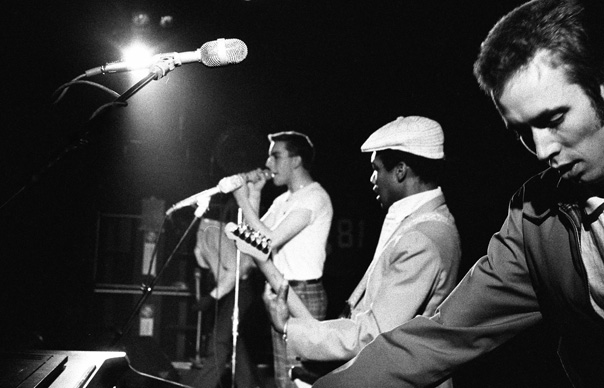

Reading this piece online got me thinking about 2tone. what a year that was, i was 14 years old, 3rd year at Hatters Lane secondary modern school High Wycombe. Youth cultures were all the rage as Punk Rock had caused a revolution in 1976 when the Sex Pistols launched an all out assault on the establishment. The British youth were rising, and no longer would be tools for the wealthy.
Micklefield estate covered about a square mile just the other side of the Greenbelt which surrounds London, a border designed to stop the spread of the Metropolis, but in the 1950’s many families were moved out of bomb damaged London to new estates, with gardens and fresh air, my family came out of North London Tottenham area. The fire of a city kid was in my veins, handed down through blood. Punk and the Aggro answered that energy. Also on my estate was a large number of West Indians,who started arriving from around 1964 to work as nurses and bus drivers, mainly from the Caribbean Island of St Vincent, who bought with them Rice and Peas, gambling, Cannabis, Calypso and Reggae music, setting up sound systems in council flats, booming the bass across the yard like a earthquake murmur.

Most families on the estate were a sort of immigrant, like a mini New York, Polish who had stayed after world war two, cut off by Communism, Irish escaping the troubles in Northern Ireland, or just looking for a steady job. Londoners bombed out and finding peace in the suburbs. Many old WW2 soldiers tending perfect gardens, Italians, Indians all in the mix.
But at the same time a real lot of political turbulence, high unemployment, especially for the youth, we saw no future, the National Front were busy recruiting the disenfranchised white working class, blaming immigration for the situation, the Socialist workers party condemning the views of the white working class, blaming them for the situation. Racial tension was at a knife edge. Music was the only thing that really drew people together, The Irish knew this with their rebel songs, The IRA were murdering people, bombing Belfast and mainland Britain. But something happened one Thursday night, which was for us our own revolution…. The Specials Gangsters hit the screen. 2tone changed my life forever.
Like a religion we all would sit indoors for that one hour a week, no kids were out on the street, Top of the Pops would showcase the top bands climbing the charts that week. Often airing acts you had never heard of, The large labels latest signings, as kids we looked for our gernre, the music which appealed to our youth tribe, for me that was Skinhead or Punk bands. whether it was planned by Gerry Dammers, or those bands from London and Coventry. The Specials, Madness, Selector, Bodysnatchers, The Beat, Badmanners, or not, they certainly nailed the energy across our estate, kids that looked and dressed like us. Black and white wearing hand me down clothing with an edge and style, shaved heads and Dr Martens, Reggae and Punk in the same song… My emotions exploded in a musical excitement frenzy. Fuck David Bowie……We were on Top Of The Pops!!!!!
Amazing to think after almost 40 years on Live in brighton 7th September, Neville Staple with his band performing many of those original songs mixed with some throughout his career ever since. Supported by a bran new band to take the music into today generation Dakka Skanks
I was reminiscing with an old friend over the weekend about The Specials, his favourite band. Our chat brought us to the great 1979 2-Tone Tour that featured The Specials, supported by Madness and The Selecter, a snapshot of which now duly follows.

I was reminiscing with an old friend over the weekend about The Specials, his favourite band. Our chat brought us to the great 1979 2-Tone Tour that featured The Specials, supported by Madness and The Selecter, a snapshot of which now duly follows.
__________
October, 1979.
There are 43 alarm calls booked for this morning and – woe, pitiful woe! – they’ve started going off already, one of them heading this way.
The shrill exclamatory shrieks of the alarms is usually followed by weary grumbling moans and the thud of people rolling out of beds in rooms all along this wing of Swindon’s Crest Motel, where the cast of the 2-Tone Tour are beginning now to assemble in the lobby, pale-faced and hungover. The motel staff in startling contrast are, meanwhile, crisp and morning-bright, with gleaming toothpaste smiles and the brisk efficient manner of people with things to do.
Specials’ singer Terry Hall is here to see off his girlfriend, who’s going home to Coventry. And here comes The Specials’ unlikely mastermind, Jerry Dammers, lumbering into view, an awkward shambling figure in a shabby raincoat. He manages a smile, briefly. Woody, the young drummer with Madness, who looks about, I don’t know, 12 or something, lights his first fag of the day and immediately starts coughing like a Kentucky miner, stricken with Black Lung or something similarly serious.
“My body’s had enough of me,” he splutters, doubling up in a fit of coughing and hacking away so violently I wouldn’t be surprised to see his eyebrows fly across the room, followed possibly by his teeth. He finds a chair and collapses into it, his face drained of colour.
We’re only three days into the tour and some of the people in the lobby around me, which has taken on the look of a field hospital in a 19th century war, look like they won’t see the end of it.
Of course, it was all very different just a few short days ago when on a gloriously sunny autumn afternoon I’d arrived at The Roundhouse, up there in Chalk Farm, where The Specials, Madness and The Selecter had spent the previous week rehearsing for the 40 date tour ahead of them. When I get to there, The Roundhouse is as they say buzzing, the place noisy with chat and laughter. The coach that’s been hired to take us all to Brighton for the tour’s opening night is already an hour late, which means before we’ve even started we’re behind schedule. No one seems to care.
The three bands are strung out across the Roundhouse bar. The Selecter and Specials mingle, wander and joke. Madness are quaffing light and bitters, being noisy. They look like a gang of spotty kids waiting to be taken on a day trip to the seaside, yelping and impatient.

A friend of mine named Kellogs who works for Stiff as a tour manger is standing at the bar, watching them. When Stiff signed Madness, they were put in his paternal care. He’s just finished a fortnight on the road with the rascals, and they’ve nearly brought him to his knees.
“They make me feel so old,” he says wearily. “They just don’t stop. Up till four every morning, boozing. Look at them. . .”
We look at them. Down the hatch go another seven pints.
“They’re fucking loving it,” says Kellogs. “They’re on top of the fucking world. A hit single, on the telly, on the road away from mum, drinking, smoking – all yobbos together. They’re having the time of their lives.”
“Annuver 300 pints of light and bitter,” cry Madness in unison as the coach finally pulls up outside The Roundhouse.
There are 40 of us on the bus and Madness inevitably are making most of the noise – shouting, swearing, clambering over the backs of seats, drinking, making ridiculous faces at the crowds on Oxford Street. Woody is especially boisterous, swigging from a half bottle of Scotch, one hefty slug after another, red-faced and increasingly wild-eyed.
Steve English, who’s providing one-man security for the tour, is sitting across the aisle from him. Steve, who’s worked as a bodyguard for, among others, Marvin Gaye, The Sex Pistols, The Clash and boxer John Conteh and is built like a Sherman tank, looks at Woody grappling with the deleterious effects of the whiskey and laughs, the sound he makes like a drain being sucked clear by complicated mechanical equipment.
“Silly little fucker,” he says of Woody. “If he carries on like that for the next six weeks, we’ll have to carry him off this fucking tour in fucking casket.”
The coach is outside Brighton Top rank now, where dozens of skinheads are waiting for Madness, led by Prince Nutty, whose mug beams also from the centre of the inner sleeve of One Step Beyond, Madness’ debut album. Prince Nutty is surrounded by a gang of fearsome-looking cronies.
“Remember me?” one of them asks Suggs. “I danced on stage wiv yer at the Rock Garden. Remember?”
“Yeah, ‘course I remember you,” says Suggs, who clearly doesn’t, pushing his way into the Top Rank, where we find a place to talk and are joined by a rather wobbly Woody. Kellogs had told me earlier that when Madness played Brighton Polytechnic recently on a brief warm-op tour for the current trek, a mob of British Movement supporters had turned up at the gig, threatening trouble.
“They didn’t do nuthin’, though,” Woody says. “They just stood around in the bar talking very loudly about Adolf Hitler.”
In Oldham, Kellogs had also said, a security check on the audience as they arrived at the gig led to the confiscation of a number of weapons – knives, even a home-made mace among them. There’d been a riot in Huddersfield, the group’s van trashed and a film crew terrorised. Suggs is sensitive on the subject of the band’s skinhead fans, but abhors the BM and the idea that Madness are a focal point for their politics.
“There’s no way we’re political,” he argues. “We’re certainly not fucking fascists. If we were fascists, what would we be doing playing ska and bluebeat? If we’d wanted to talk about politics we’d have formed a debating society, not a fucking band.”
The Brighton show is sensational. By the time The Specials play “A Message To You, Rudi”, most of the audience appear to be on stage with them, and those that aren’t are dragging the ones who are back into the crowd so they can take their brief place in the spotlight.
The group fight their way off stage through this demented rabble but find the safe haven of their dressing room picketed by a group of angry feminists who’ve been incensed by some off-colour remarks by Terry Hall and the description of the Melody Maker journalist Vivien Goldman, who’d unenthusiastically reviewed their debut album, as “a stupid cow”.
They now berate the unapologetic Hall at rowdy length. Their ring-leader notices Dammers, standing behind Terry, a bemused witness to the women’s wrath.
“And what have you got to say for yourself?” she loudly demands.
Jerry looks at her, grins gummily.
“Would you like to come to a party with me?” he asks her, ducking the blow he knows is coming.
Photo credit: Clare Muller/PYMCA /REX , Gavin Watson






By Fused · On October 14, 2014
Quietly simmering gently for over a decade Jon Swinstead of PYMCA has skillfully collected together work by the best of national and international photographers with a passion for street and club culture.
Swinstead’s paced strategy has been to save potentially sinking cultural treasure that deserves global recognition. Year-by-year staff such as Jamie Brett reach their white-gloved tentacles into the most unexpected sections of society in search of insightful visual documentation by all manner of photographers and writers, delivering style heritage with substance. Such work is then swooped upon by curators, making a ‘street’ to V&A step look so easy.
The PYMCA site is a visual beehive, swarming with picture editors in search of images from the dawn of Photography to now. Alongside industry insiders from the world of Advertising to Music, there are students of Fashion Design, Photography and Fashion-related areas such as Styling and PR, clicking through the vast Education section; style stalking in amongst every youth tribe that I will not list here as it is so extensive. From Teds to… you get the picture.
Swinstead and his team seek out the most seductive aspect of style: the unexpected. It is the originators and innovators that form the solid backbone to the archive, with the focus extending to early adopters that makes fashion forecasting companies appear to be somewhat lagging along with early mainstreamers.
Sure, in amongst sections that explore and reflect everything from forty years of PUNK to strutting peacocks on the cobbles of Somerset House during the feeding frenzy of Fashion Week, there’ll be the inclusion of normcore, but such images are always selected with a certain eye.
It is the resourcefulness of youth that excites Swinstead, from one style cycle to the one that quickly emerges as a consequence, or angry reaction to. The meticulous archiving of youth culture is vital, essential, as such momentary history is vulnerable, at risk of being lost.
No gallery, as yet, exists for the collecting of such material anywhere in the world. No gallery, as yet, regularly hosts work by photographers such as Ray Stevenson, Janette Beckman, Derek Ridgers, Caroline Coon, Gavin Watson, Sheila Rock or the new wave of photographers, such as Molly Macindoe and Dean Davies of TRIP magazine.
PYMCA is of value and global importance in terms of the vast strata of social and fashion history that it holds. Whilst digital files are of immediate commercial use to television networks and publishers such as Phaidon, Laurence King and Harper Collins, it is the Fine Art work of printers such as Bob Wiskin (Grade One Photographic), Debbie Sears (Debbie Sears In Black & White) and Peter Guest (The Image) that collectors are now excitedly investing in and knocking on the door of PYMCA’s office to get their white gloves upon.
PYMCA, a mix of ingredients… simmering away quietly for over a decade… now ready to serve.
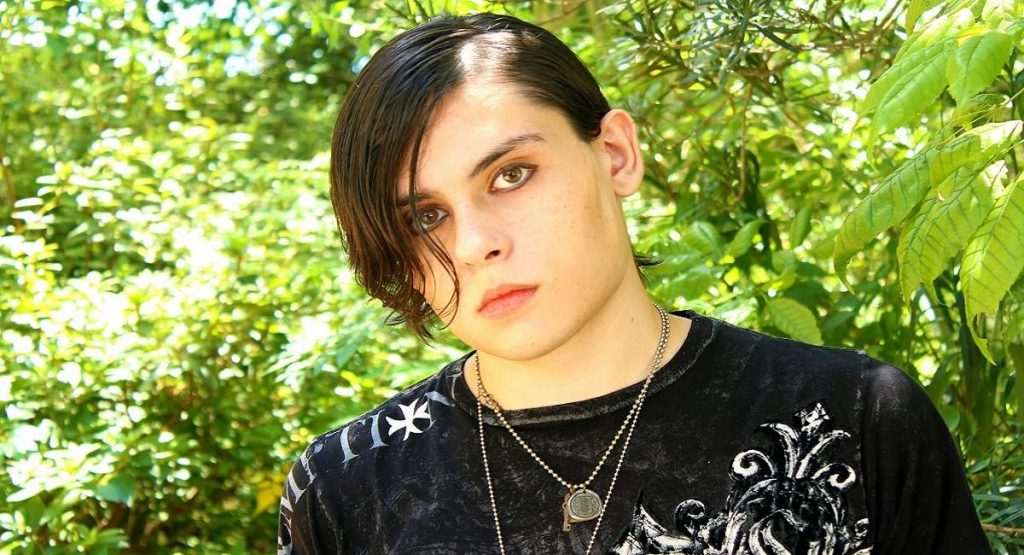
Well, this isn’t good.
Coheed Analytica, a data firm out of the United Kingdom that specializes in using people’s emo phases to undercut the authenticity of their current personas, has been exposed as having scraped the data for each emo myspace user and then selling that to the Russians, who have long sought to disrupt scene politics.Yup, you read that right- data showing every single profile song you chose, swoopy haircut selfie you posted, and bulletin you wrote has been sold to the Russians.
Proof is out that there was no house fire, no crazy ex girlfriend with a pair of scissors, no squirral invasion of your mothers loft for those old ‘Skinhead Photos’
Literally no one is going to believe you are a skinhead now. You’re fucked.
Even worse, people now rocking the Warrior catalogue and going to nostalgia-filled DJ nights may be exposed as ex-Mods who never even had an Emo phase.

Fuck off vladimir!
A spokesman said ”Our members are very concerned that our Ebay buying history maybe next inline for Russian intelligence, which will really rumble a few ‘faces’.
Of course Tom from Myspace is completely silent, refusing to acknowledge the invasion of privacy and serious undercutting of credibility this data breach presents. His lack of morals is one of the reasons I moved over to Facebook!
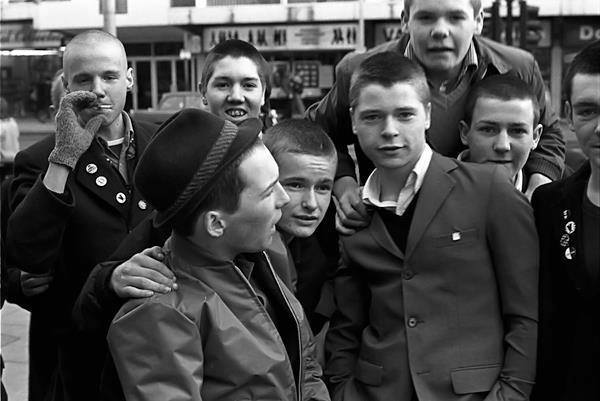
Skinhead culture emerged as a result of two shifts in British culture and
society in the early/mid 1960s. Firstly, the Mod scene which had been so popular amongst British youth had begun to split into different factions. While the middle class Mods were able to carry on pursuing the latest Carnaby Street clothes and fashionable haircuts, this was out of reach to most working classMods. In a scene so heavily based on consumerism, this undermined the workingclass Mods’ status and ability to take part in the scene. This led to the emergence of “hard Mods”, who marked themselves off from their peers with shaved hair, jeans, braces and work boots. This style, based on the typical style of British workingmen at the time, served to separate them from the old Mods and the middle class hippies of their generation. It served as “a conscious attempt by working class youth to dramatist and resolve their marginal
status in a class-based society.”
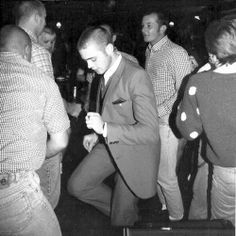
Within mod culture you can carve it down the middle. On one side you have ‘Peacock Mods’ who have the sharper, middle class, jazz influenced aesthetic and on the other side you have ‘hard mods’ who prefer soul music, are working class and enjoy Jamaican rudeboy culture.
That might sound like an odd combination but with the children of the windrush from the 1950s integrating into British white working class society, all living and going to school together, it was inevitable that each culture would influence the other.
The 3 elements that the vast majority of 1960s skinheads indulged in were:-
The most (in)famous part of skinhead clothing is, of course, a pair of doc martens. They were what defined you from the mods or hippies with their delicate loafers or sandals. The doc martens were a sign of being working class and proud of it. Levi jeans or sta-prest trousers were popular having half-inch turn ups to show off their boots. Ben Sherman and fred perry button-down shirts offered clean, tidy looks with colourful checks to show off on the dancefloor on a night out. Crombie and sheepskin coats were the default coats.
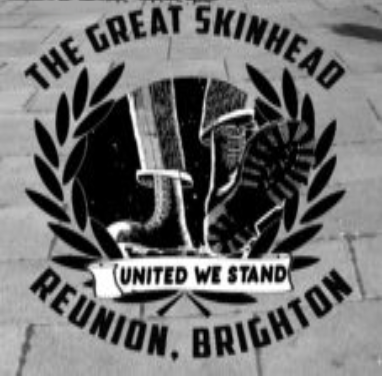
They offered a little bit of style in comparison to the heavily polished boots. Skinheads also wore half-inch braces to display their working class credentials.
Like, with mod fashion, there was snobbery about where your clothes were from. The rarer the shirt, boots or jeans the more style conscious you were seen to be. skinhead Girls (Sorts Renees) In the modern day, called ‘Skinbyrds’ wore clothing along the same lines. Short skirts, feather cut hair styles and loafers or brogues fishnet stockings, were the usual get-up.
Black music in the 1960s was still mainly American soul. so Reggae and ska was onlyheard if you had west Indians mates. The off beat rhythm, exotic sound and strange composition made it an attractive rebel music for skinheads to adopt.
Songs like max romeo’s ‘wet dream’ were risqué and appealed to the skinheads sense of danger. Reggae became so synonymous with skinhead culture that many reggae hits have been about skinheads. ‘skinhead a bash them’ was one of those released by Claudette and the corporation on the Trojan records label. Another favourite was ‘skinhead moonstomp’ by symarip, which for many encapsulates the skinhead reggae sound.
Other skinhead favourites were the upsetters, prince buster, desmond dekker, toots and the maytals, derrick morgan and john holt.
Reggae was the sound being created in the Studios of Orange Street in Jamaica, as the early Immigrants came to Britain they brought with them many things that were to change British society forever, for good and bad. The British music industry was at its height, feeding the forever demanding record buying youth. The Mersey sound of the Beetles, The swinging 60’s.
Labels were set up to market this brand new sound to the British working class and beyond. labels like Trojan, Island, Blue Beat and many more marketted the music to a demanding new audience. The sound of the Council estates and dance halls became alive with Calypso and Reggae.
When skinheads weren’t skanking in dancehalls to reggae or showing off their latest Ben Sherman shirt they were at the football ground looking for a fight. There is a strong connection of London football teams with skinhead culture. West ham are the most prolific in that link. Chelsea and other big London clubs had groups of skinheads roaming the stands looking for some ‘aggro’.
Usually their boots and short hair would be great assets in maximising damage upon another and minimising their own beating by having little hair to possibly grab onto. Some say that football hooliganism stems from those first skinheads joining their local teams firms and looking for violence. Of course, most of this wouldn’t have happened without copious amounts of booze.
After 1970, reggae hit the uk pop charts and skinhead culture spread around the country in different shapes and forms.
Some skinheads grew their hair a little longer and wore smarter clothing and abandoned wearing boots for loafers. These skinheads were dubbed suedeheads, smoothies, boot boys and soul boys. Skinheads had even reached Australia as british parents migrated to greener pastures down under.
These skinheads evolved through the 1970s as sharpies and enjoyed rock music with slade being one of their favourite bands.
With the spirit of ’69 in the past skinhead culture dwindled and it was another 10 years for it to be revived by a new wave of ska bands and awareness of race.
2-tone and politics
After 10 years of dormancy a handful of bands exploded into the charts with the ska beat that skinheads had fallen in love with so much. The first 6 singles from 2-tone records featured the specials, madness, the selector and the beat. If any of those records were played at a party now kids would immediately know them and sing along. The skinhead and mod movements had been given a new lease of life.
This 2nd wave of ska was to not only be about music and having a good time but also take on a political aspect.
Since 1969 skinhead culture had evolved in many ways:-
Skinhead clothing had merged with mod fashions to an extent in 1979. skinheads would wear fred perry polos, Lonsdale t-shirts, band t-shirts and brogues had replaced heavy boots. Just as mod influences had permeated so did punk clothing. Ma-1 flight jackets, bleached jeans and even shorter haircuts were common amongst some skinheads.
There were still traditional skinheads who wore the original styles and sometimes with a shaved parting in their hair. With the skinhead look becoming less regimented if you wanted to be a skinhead it was fairly easy to look like one.
But with 3 different looks to choose from it also meant there were different types of music you’d be interested in. If you wore flight jackets and bleeched jeans then you’d usually prefer oi!
If you wore fred perry polos and loafers then you’d like 2-tone and the jam. If you wore the traditional styles then you’d enjoy the 60s reggae and ska of original skinheads.
2-tone and oi! were poles apart even though they were both described as being skinhead music. 2-tone’s black and white check (even though unintentional) became a symbol of britain’s racial harmony, which was sung about in some of the labels releases.
Oi! on the other hand was angry, anti-establishment and predominantly listened to by white kids. Even though 2-tone took elements from punk it was a much tamer, watered down influence. There was crossover, as there is with many music genres, but only madness came close to combining the 2 successfully.
Oi! bands that emerged as skinhead favourites were the 4-skins, cockney rejects, the business and combat 84. these bands played a part in the eventual creation of hardcore punk, which skinheads adopted as another branch to the ever growing skinhead family tree. However, A potent mix of race awareness and right-wing politics would soon change skinhead culture and make skinhead a byword for racist.
Throughout the 1980s skinheads became polarized over politics (an issue that was never an aspect of 60s skinhead culture). Skinheads were seen more and more often at right-wing marches and rallies, as mass immigration took a hold of the UK, the rise in unemployment and Britains fall from power, caused a nationalistic reaction amongst Britains working class society.
The media began to portray all. Skinheads as Fascist, Racist and Violent. This was the image that the media exported across the globe, which in turn picked up more negative press, and was actually used as e recruitment advert for white supremist groups mainly in the USA. Hollywood jumped on the band wagon making movies about the devils with cropped hair
At the same time other skinheads were reacting to this by starting up groups such as ‘skinheads against racial prejudice’ or ‘sharp’ for short. Skinheads also began left-wing groups who labelled right-wing skinheads as ‘boneheads’ because they thought they were unintelligent.
Oi music arrived in the early 80’s as a hard edged street punk. reacting against the middle class fashion of Kings Road Punk Rock. the bands making political statements about unemployment, police oppression, the plight of the working class. The violent firms across the Uk had found a musical voice, and violence was widespread. A riot happened in a predominantly asian area called Southall in West London, which hit he headlines.
Maggie Thatcher asked for a blanket ban on the Skinhead culture, which took all music from the record shop shelves, all radio play, media coverage. This caused many bands to fold up, even effecting the 2tone bands which main message was racial harmony. no venues could accept them. But the skinhead culture refused to die, it went underground. Collecting an even harder edge.
The extreme right wing taking control in London
This period of skinhead culture was a time when some became disillusioned and uneasy with what being a skinhead meant. As a result skinhead culture seemed dead to many people, who weren’t interested in the extremes of violence or politics.
The tit for tat violence on the streets of London, the clamping down by the authorities and blacklisting was to almost destroy the skinhead culture forever.
If anyone would like to add to the Skinhead history section, please contact us at Subcultz. we Know there are many variations of the culture right across the globe.
The Cockney Rejects’ 1980 performance at Birmingham’s Cedar Club remains unnoted in the annals of rock history. It warrants no mention when music journalists compile the 100 Most Shocking Moments in Rock, nor the 100 Craziest Gigs Ever, which seems like a terrible oversight. In fairness, no one is ever going to rank the show by the East End quartet – then enjoying chart success with a punk take on the West Ham terrace anthem I’m Forever Blowing Bubbles – alongside Jimi Hendrix at Monterey in terms of musical brilliance. Still, it has its own claim to historical import: by all accounts, it was the most violent gig in British history.
“I’d seen quite a bit on the terraces or outside football grounds, but this was carnage,” says Jeff Turner, today an immensely amiable decorator, then “Stinky” Turner, the Cockney Rejects’ teenage frontman, cursed with what his former manager Garry Bushell tactfully describes as “a bit of a temper”. Turner continues: “There was a lot of people cut and hurt, I got cut, my brother [Rejects’ guitarist Micky Geggus] really got done bad, with an ashtray, the gear was decimated, there was people lying around on the floor. Carnage.”
The problem was football-related. “Most of the punk bands at the time, they had their ideals – the Clash, Career Opportunities, political stuff, fair play,” says Turner. “When I was a kid, my thought for punk rock was that it could put West Ham on the front pages.” To this end, the band – affiliated to the club’s hooligans in the Inter City Firm – had appeared on Top of the Pops in West Ham shirts. “After that, everybody wanted to fight us, but you couldn’t back down,” says Turner. “Once you were defeated, it would have opened the floodgates for everybody.”
So the Rejects and their party fought: “Twenty Cockneys against … well, not all 300 Brummies were trying to attack us, but I’d say we were trying to fight off 50 to 100 people.” In the aftermath, Micky Geggus was charged with GBH and affray, and the Cockney Rejects’ career as a live band was, in effect, over. An attempt to play Liverpool later that year ended after six songs “because there was 150 Scousers trying to kill us”, while a subsequent gig in Birmingham was aborted by the police: “The old bill got wind of it and escorted us on to the M6,” says Turner. “At the time, I was gutted, but now, I think, thank God for that. Someone could have died.”
Perhaps it’s unsurprising the gig has been swept under the carpet of musical history: after all, so has the genre the Cockney Rejects inadvertently inspired. Thirty years after Bushell – then a writer for the music paper Sounds, as well as the Rejects’ manager – coined the term “Oi!” to describe a third generation of punk-inspired working-class bands playing “harder music on every level, guitar driven, terrace choruses”, it remains largely reviled or ignored in Britain.
In the eyes of its remaining fans, Oi! is the “real thing”, the genuine sound of Britain’s streets in the late 70s, populated by artists Bushell championed when the rest of the music press concentrated on “bands who dropped literary references you wouldn’t have got if you didn’t have a masters’ degree and wrote pretentious lyrics”. Bands such as the Cockney Rejects, the Angelic Upstarts – Marxists from South Shields managed by a man Bushell colourfully describes as “a psychopath – his house had bars over all the windows because people had thrown firebombs through it” – Red Alert, Peter and the Test Tube Babies. It briefly stormed the charts. The Angelic Upstarts followed the Cockney Rejects onto Top of the Pops, while Splodgenessabounds made the Top 10 with the deathless Two Pints of Lager and a Packet of Crisps Please. But today, if the general public have heard of it at all, they tend to agree with the assessment once offered by journalist and broadcaster Stuart Maconie: “Punk’s stunted idiot half-brother, musically primitive and politically unsavoury, with its close links to far-right groups.” It is, asserts Bushell, “without a doubt, the most misunderstood genre in history”.

The problem isn’t really to do with the music, although protracted exposure to the oeuvre of Peter and the Test Tube Babies – home to Student Wankers, Up Yer Bum and Pick Your Nose (and Eat It) – could leave all but the hardiest soul pleading tearfully for a few literary references and pretentious lyrics. The problem is Oi!’s adoption by the far-right as its soundtrack of choice. It wasn’t the only part of street culture to attract the attentions of the National Front and the British Movement in the late 70s and early 80s. Losing out at the polling stations thanks to the rise of Margaret Thatcher, the NF had instigated a programme of “direct action”: it would attempt to kick its way into the headlines at football matches and gigs. Chart bands such as Sham 69, Madness and the Specials had concerts disrupted.In 1978, seig-heiling skinheads caused £7,500 worth of damage at a Sham 69 gig in London.
But it was to Oi! that the far-right was most attracted, not least because it attracted both football hooligans and the re-emergent skinhead movement – two groups the NF’s direct-action programme targeted for recruitment. “We played a gig in Camden, we saw these Nazi skinheads beating the shit out of these two punks,” remembers Turner. “They’d managed to wreck Sham 69’s career, but us with our following” – the ICF was then headed by Cass Pennant, whose parents were Jamaican – “we weren’t going to have it. We just went down and absolutely slaughtered them. We declared to them that if they ever set foot where we were again, we’d decimate them.” And so it proved. “Neo-nazis confronted the Rejects again at Barking station,” remembers Bushell. “They basically told them, ‘We’re going to come to your gigs, we’re going to do this and do that.’ The Rejects crew battered them all over the station. They didn’t come to the gigs after that.”
Bushell points out that there was “a Nazi subculture all the way through punk. Malcolm McLaren started it all with the swastikas, which thick people saw and thought, ‘Oh, they must be Nazis.'” There were white power punk bands, too – such as the Dentists and the Ventz, which were formed by the “Punk Front” division of the National Front, in lieu of real punk bands showing any interest in promoting white supremacy. It was a trick the NF would be forced to pull again when Oi! bands resisted their overtures – the party recruited a failed punk band from Blackpool called Skrewdriver and repositioned them as the musical voice of the neo-Nazi movement. “It was totally distinct from us,” says Bushell. “We had no overlap other than a mutual dislike for each other.”

Bushell’s latterday career as a gleeful provoker of the liberal left, writing for the Sun and the Daily Star, probably hasn’t done much to help public perceptions regarding Oi!’s political affiliations. When Oi! was at its height, however, he says he was a Trotskyist who did his best to infuse the movement with socialist principles. He organised Oi! conferences and debates, “trying to shape the movement, trying to stop the culture of violence, talking about doing unemployment benefits, working with the Right to Work campaign, prisoners’ rights gigs – I thought we could unite punk and social progress.” Not everyone was receptive: “Stinky Turner was at one debate, and he didn’t contribute much, apart from the classic line, ‘Oi! is working class, and if you’re not working class you’ll get a kick in the bollocks.'” He laughs. “Perfect! That was what the Rejects were all about.”
Trotskyist or not, Bushell also managed to exacerbate the problem, not least by masterminding the unfortunately titled 1981 compilation Strength Thru Oi!. “I didn’t know!” he protests. “I’d been active in politics for years and had never come across the phrase ‘strength through joy’ as a Nazi slogan.It was the title of a Skids EP.”
To compound matters, its cover featured a photograph of a skinhead who turned out to be the delectable-sounding Nicky Crane, who – nothing if not a multi-tasker – managed to combine life as a neo-Nazi activist with a secret career as a gay porn star. “I had a Christmas card on the wall, it had that image that was on the cover of Strength Thru Oi!, but washed out. I honestly, hand on my heart, thought it was a still from The Wanderers,” Bushell says. “It was only when the album came through for me to approve the artwork that I saw his tattoos. Of course, if I hadn’t been impatient, I would have said, right, fucking scrap this, let’s shoot something else entirely. Instead, we airbrushed the tattoos out. There were two mistakes there, both mine. Hands up.”
Much worse was to follow. A July 1981 Oi! gig featuring the 4-Skins and the Business in Southall – the scene of a racist murder in 1976 and the race riot that ended in the death of Blair Peach in 1979 – erupted into violent chaos: 110 people were hospitalised, and the venue, the Hambrough Tavern, was burned down after being petrol bombed. Depending on whose version of events you believe, it was either sparked by skinheads attacking Asians or Asian youths attacking gig-goers: either way, the Southall riot stopped Oi!’s commercial progress dead. The Cockney Rejects found that shops refused to stock their new album, The Power and the Glory: “I’d sung a song called Oi Oi Oi and all of a sudden there’s an Oi! movement and I didn’t really want anything to do with it,” says Turner. “This awful, awful shit happened in Southall, we were never there, and we got the rug pulled out from under our feet. I went from the TV screen to the labour exchange in 18 months.”

An inflammatory article in the Daily Mail exacerbated the situation further: “We never had an problems with Nazi activists at our gigs until after the Mail’s piece,” says Bushell. “Only then did we have people coming down, thinking it was going to be this rightwing thing, When they discovered it wasn’t, that’s when the trouble started. I was attacked at an Upstarts gig at the 100 Club by about 20 of them. I had a knife pulled on me at Charing Cross station.”
That should have been that, had it not been for Oi!’s curious afterlife in America. Steve Whale – who joined the Business after Southall and struggled on through the 80s, repositioning the band as “street punk” – unexpectedly found himself in possession of a US recording contract with Bad Religion’s label Epitaph, lauded by bands including Boston’s Irish-punk stars the Dropkick Murphys and the extraordinarily influential California band Rancid. Jeff Turner has just returned from a tour of Japan: “Osaka, Tokyo, Nagoya. I haven’t got fortunes but I’m able to do that. That’s all I can ask for, it makes me happy.”
“I had Lars Freidricksen of Rancid come in and sit in the pub round the corner from my house, welling up, telling me if it wasn’t for Oi! he might have killed himself as a teenager,” says Garry Bushell. “I thought, ‘Fuck me, it’s really had an effect on these people.’ I’m not proud of the way Oi! was misunderstood, but I’m proud of the music, proud of what it started, proud of what it gave punk.”
In Britain, he concedes, the genre’s name is still blackened in most people’s eyes. “There were people in 1976 saying punk had to be a Nazi thing because of the swastikas. The difference is, those bands had rock journalists on their side. The Oi! bands only had me.” He laughs, a little ruefully. “I did me best.”
Vicious Rumours make a comeback..Brighton Skinhead Reunion 2017.
Question 1. Why would you like to play the great skinhead reunion, in brighton
..Symond, 2 1/2 years ago, you reached out to me and asked if we would consider playing the Reunion.. Well you and I had many exchanges, surprisingly most of them about our kids, principles and general outlook on life.. We discovered that we were very much cut from the same cloth… I was so excited to be playing and it was going to be our first show back together in England since the Main Event.. Then unfortunately we were unable due to JC and his wife expecting a baby right at that time. Symond, whilst disappointed never once showed or held it against us or me personally and we have continued to build our friendship these past couple of years.. Okay (I tend to ramble so this will be a long interview, so if edited I will take no offence) now why we/I want to play Reunion 2017.. This Event is to get together people from all over the world who love this scene and for some has been part of their lives since their early teenage years as it was for me.. I love music and ever since I can remember that has always been my first love.. Along came punk and then punk/Oi!/ska.. Well that was it. As you can see from the picture my vast taste in music.. See I told you I ramble.. What was the question? Oh yes. This is an event to see old friends, make new and a way to show our and my appreciation to you all and thank you for letting us/me be part of something that will live forever.. And this event is about just that.. Being in a band was and still is a dream for me but none of this means anything without you lot, so when Symond said yes a 2nd time to my/our request to Play 2017 my face and heart lit up and we promise to give you a show to remember.. Don’t forget we are one big family xx

2. When did you start the band, and why.
in 1979 around April /may I had the idea of a starting a band. A friend of mine Dave field played guitar and another Al Kilpin was up for trying put drums.. Why, well it seemed like fun, I loved to sing and a few other kids at school had put together bands.. So why not me!!
3. Who were the original members, and how did you meet?
Okay, I met Dave Field at Church, we were I the Boys Brigade together and actually ended up going to the same school.. Al Kilpin on drums, we also met at the church in one of those kids club things, but Alan was also hanging out at the local youth clubs and knew everybody. Also Alan’s good friend and co-worker was Micky F lead singer of an up and coming band called the Business. Also we had a stand in bass player, Phil Lecomber.. So that was the original up.
4. Who were the writers?
I did most of the writing once we starting playing more gigs and then the band would put it all together as at first we only had about 4 songs, including Vicious Rumours, which was actually written by a girlfriend of ours, Lesley and Dave and I wrote music.. The rest of the songs I the first few months were mainly sex pistols covers, even some early Adam and the ants, oh and Chip on your Shoulder was one we played at every gig till Bout 81..
5. What was your first gig?
Our first gig was at welling baptist church with a local band Called The Reprobates, whose guitarist Ian eventually ended up being our guitarist a couple of years later. We co-workers and recorded This is your Life together..

6. What would you say was the most memorable, for good or bad reasons?
Wow, most memorable.. Okay sorry Symond I will have to name 3..only because of different reasons and all good..
1.our first high at Skunx, May 1982. JC, AL, Worve and myself. Supporting The Business and One Way System.. It was our first Big gig in London as all the others were in local pubs, church halls and youth clubs.. It was very special and the crowd really accepted us..
2.Red Lion, Gravesend 2015..simply because it was our first gig back in the U.K in 25/26 years and the friends that showed up on a Wednesday night, in the middle of nowhere was just overwhelming.. To see so many smiles, hugs and just felt the love.. Absolutely priceless.. Plus it was my introduction to the lads in The East End Badoes.. Just a great band and brilliant blokes.. We have become friends for life..
Now there were gigs in the early days, France, Old Bexley, The Lovel, Danson youth club, Isle of wight scooter run, Coventry but for my 3rd is…
3.PSK 2015 Stockholm, Sweden and this is why.. Pike Kollberg and Niklas Törnblom put on an outstanding show.. Amazing bands and put their heart and soul into it as I know that you can relate to Symond.. They were enthusiastic, Genuine and made us feel right at home.. Now the crowd, playing to people that had never seen us before, we’ll most of them, all I could feel was an amazing energy, total support and people having a great time and enjoying us.. What a beautiful feeling, this was also my 50th birthday trip so to spend it doing what I love, with people that I love and making new friends. Honestly, what could be better..
7. Why did the band fold up?
The band stopped playing after the main event, for me and I know for JC we were disappointed with our performance that night.. I insisted on a wireless guitar cable which didn’t work, and a few other hick ups, , well we didn’t talk about splitting we just took a break then in 1990 I left for the States.
8. What happened to the members after you moved on in life?
Well now, JC Lives in France, and He still loves playing his bass.. Danny lives in Malta, Ian(worve) sadly passed away a couple around a year ago as for some of the other members along the way I’m not sure but all of them had a part to play in the band..

9. What do you feel about the modern scene, as opposed to the 80’s?
As JC would say to me and still does that I am clueless.. I just love people.. Love meeting them and being a part of an amazing culture.. Though I have seen fights break out at gigs, I myself have never once had a problem.. I am extremely happy that there is still such a strong scene as it gives us a chance to do what we love, and a chance to make memories with the best people and Symond, would you not agree making great memories and having fun is what it is all about!! I know you do mate..
10. What advice would you give to young bands starting out?
Well young bands starting out, have fun and enjoy it, be humble and appreciate anyone who shows an interest in your band, get to know some of the bands that you enjoy and could see yourself playing with, it is so easy now to get in touch with them because of the Internet etc.. and start off by just introducing yourself, let them know you have a band.. Start there.. Practice practice practice then gig gig gig.. I still reach out to bands that I have always looked up too, even at 51..The Cockney Rejects, still absolutely first class till this day. I got a message from Jeff Turner and I was like a big kid, it meant so much to me.. Micky Fitz from the day I met him at the age of 14 has always treated me with nothing but kindness and respect. He is my mentor and I have always looked up to him and appreciated the way he treated me. Although Jamie Flanagan, lead singer with Tear Up have never met we have built up a great relationship this past year and a half.. I am saying this because he has done everything that I just said to do and not because I suggested it, because of who he is.. Love ya Bruv xx
Okay last thing that I want to say is…. I love this Band, 37 years and I can honestly say the line up that we have now sounds brilliant, tight and full of energy. Mad Max Spartan back on rodie duty, keeping everything on track..Tom Sultans our youngster drummer is brilliant, Dave Hayman on guitar who just bets it out like I only wish that I could, Dave Reeves on guitar who is a fantastic solid seasoned player, John Coupé on bass and as tight and poised as ever, Nippa Troth, my little brother right there with us and Myself on vocals ready to give my all heart n soul and a night you will always remember.. Love and respect Symond and of course everyone else cannot wait to see you in Brighton..
Always, Johnny Mundy xxx
Find the band on FB
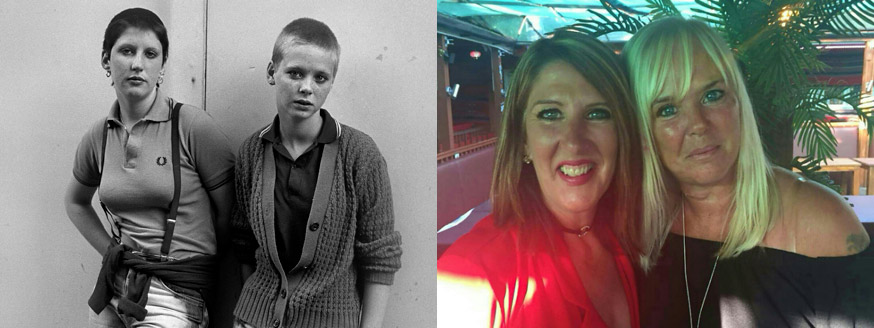
Who are the subjects in the iconic “Skinhead girls, Bank Holiday, Brighton 1980” photo by Derek Ridgers used in Morrissey’s 1992 “Your Arsenal” tour as a backdrop and merchandise (t-shirt, program cover)? Finally we know – Caroline and Debbie. Both were together recently and surprisingly, both learned just last weekend (Aug. 2016) about the use of the photo on Morrissey’s tour 24 years ago.
Debbie writes through emails:
I am one of the skinhead girls in the photo as I have just found out my picture was used… Caroline on the left, I’m on the right (in both 1980 and 2016 photos, below). She moved to Australia and was over last weekend. That’s when we found out via Google about the photo, such a shock but a nice one. Eyes nearly popped out when we saw the huge backdrop of us.
I have been in touch with Derek, he is sending us a photo as we never got one. Sent him a photo of what we look like now and he thinks we haven’t changed (well, longer hair and older). Does anyone have any tour mementos?
Caroline lives in Perth, Australia, is married with 3 children and also a granny.
I live in Surrey, married, with 1 son and work in community nursing.
We was both wild when young, me being the worst as my mum tells me.


Brighton information
Still one of the most popular seaside destinations in the UK, Brighton has been a tourist hotspot for many years thanks to its climate, nightlife and fantastic shopping.
The advent of the railway really helped to boost the city’s profile. Brighton has consistently attracted visitors for day trips, weekends and entire holidays, with its proximity to London has helped create a huge tourist industry that erupted during the Victorian era, with the building of several attractions including the West Pier and the Palace Pier.
Modern-day Brighton has much to echo the luxury of the Georgian and Victorian eras, with a new swathe of independent boutiques opening in key shopping areas of the city, such as The Lanes, which is packed full of quirky shops, jewellers, antiques dealers and specialist restaurants.
Brighton has been a mecca for youth culture, ever since the 1960’s infamous Mods and Rockers battles. Punk found its south coast home during the 70’s and 80’s, with an explosion of Acid House at the end of the 80’s. in modern day, Brighton has a huge independent music scene, with world renowned bands regularly springing up and touring the world. The town has also seen the rise of a huge Skinhead weekender every June, where people come from across the planet to Moonstomp the weekend away. Showing what a cultural diverse and amazing place the City is
Skinheads. Don Letts documentary. BBC
When I first received an email from the BBC asking would I like to be involved in a documentary that BBC4 were putting together with Don Letts, my first thought was one of caution, I have done a few documentaries over the years, starting with George Marshall in 1994, Then Skinhead attitude of 2002. The first documentary I remember being made was the 40 minutes, focussing on the band Combat 84 and chubby Chris, which was a complete stitch up, and ruined the bands career, making them being excluded from the forthcoming Oi! Albums and finding their records banned.
The media will always have an agenda, usually one based on other media perceptions on Skinhead racialist politics. So I thought to myself, do I really want to go and tell this terminally boring story once again, but then I thought, well if I don’t, someone else will. Its been a curse for nearly 40 years, since the far right National Front in the UK actively set up a recruitment campaign, targeting disenfranchised white working class kids, provoking and promoting violence and faction. The Skinhead image perfect for the Sun Newspaper to run front page images of the modern devil in our midst. Like any young kid, wanting to be part of something, many jumped onto that image and the wheels have turned ever since, one feeding the other.

I decided to go meet up with Don and get his story, find out his motivation in his desire to make a documentary. Was it going to be the usual media left wing leaning clap trap. But very soon Don and I started having a laugh, we shared many life experiences and times. Although he is slightly older than me, we were both involved in riots in 1981, both loved punk rock. I had booked Don in 2007 to DJ our Xray Spex show at the Roundhouse, as he was the legendary Roxy club Dj and a friend of Poly Styrene.
Before we started talking Skinhead, Don produced some old tattered photos of himself in the late 60’s as a skinhead, stapress, loafers and button down shirt. Then told me his own story of growing up on a south London council estate, and the early pre punk skinhead days. And that his motivation was to put the record straight, and celebrate the strongest youth subculture to have ever been born in England. Its rich tapestry, that has weaved the threads of Skinhead from the mid 60’s to the mid 2010’s.
I agreed to take part, and roped my old mate from the Wycombe Skinheads, Barry ‘Bmore’ George along. I did put several names forward to the researchers, as people I told them held respect through action in the skinhead world. People like Gary Hodges, Milky, Roy Ellis. They told me they had been speaking to Roi Pearce and Suggs, so I thought it would be great to have some of these king pins of the scene involved, but sadly most people in our scene distrust the media more than rabid dogs, which after all these years, and stitch ups, is understandable. I even find it a struggle with some bands that are very happy to play large ‘Punk’ festivals to a skinhead audience, but don’t want to appear on a flyer for a ‘Skinhead Reunion’ So its a problem on all levels. Until everyone involved claims the Skinhead subculture, and puts their truth forward, the subculture will forever be that of the medias perception. As a kid of 13 I made a vow to become a skinhead, and through lifes journey, its a belief and core I have never felt any embarrassment over. Guilt through association.. well I know who I am, and who my skinhead friends are. So what the media and the middle class think of me, I wont be losing sleep over.
I found the documentary to be surprisingly good. It started with the roots of skinhead. The Reggae and Jamaican influences of its inception in the 60’s. The football hooligan gang fighting of the 70-80’s. The influence created by Joe Pearce and the Young national Fronts campaign. The musical icons like Jimmy Pursey. The 2tone explosion of 1979. Some old footage of Ian Stuart. Live interviews with Kevin Rowland and Pauline Black, to give quite a good balance, and explain the why’s and wherefores of the British Skinhead subculture.
Sure if I had been given the job of researcher and assistant director, I would have added more elements in. The music and what it meant to us, on a street level, the offshoots like the scooter and northern soul scene. Perhaps tried to get people involved in the far right skinhead scene to explain from their angle, why they felt the way they did, and how they feel its part of the skinhead culture they have lived. Don had voices of the far left, with Roddy Mareno. Might have even been nice to find a journalist that would admit to paying young kids for a seig heil for the newspapers.
But what the documentary really did for me, was to show I am not the only person with such a strong passion for our beloved Skinhead subculture. I saw many faces on the screen I consider friends, brothers and sisters. So many of them singing from the same hymn sheet. And that is, there is only one skinhead subculture and its called SKINHEAD
watch it here
Symond Lawes.
23 Oct 2016
With The Great Skinhead Reunion looming we dropped into Jamie from Tear Up to see how things were cooking, so here’s a 5 minute interview

Whilst looking for new bands to introduce to the skinhead world, i came across Tear Up last year, and after a brief chat with the singer Jamie, sussed out, he had the right attitude and decided to give them a whirl at the Great Skinhead Northern gathering, an event which i thought might intimidate a young band, being in the deep dark north East town of Sunderland, home of British ship building and strong working class community, but they rode it like professionals and brought the house down. Apprenticeship served, they are up for smashing the fuck out of the Brighton Skinhead Reunion.
Takes me right back to early Cockney Rejects with a touch of Peter and The Test Tube Babies
1. the first thing that jumped in my mind when i saw Tear Up was, why would a young bloke be into oi?
Well I grown up always loving the cockney rejects and I have known Jon from argy bargy and Nick from angry agenda since I was really little so they got me hooked on the oi scene I love the passion and aggression behind it
2. why did you decide to form a band
I wrote a few songs in prison and when I came out I tried giving them to Terry Hayes from the east end badoes but he said I should start my own band so got on stage with them a few times then started my own band
3. where are you from, whats your history and connection to the oi/ skinhead scene
Im from watford I was a bit of a scallywag growing up but I got a my little boy Ronnie now the only thing I love more than the band as I said previously there is a few bands out of Watford u go to a gig talk to people and your network just gets bigger and bigger
4. who writes for tear up
I write all the stuff for us I co wrote a song with Steve thurlow from Peckham Rolex and I am currently writing a song with John mundy from vicious rumours top bloke he is
5. what was your first song
My first song was bollocks to the smoking ban
6. what was your first gig, and the highlight so far
My first gig was angry agenda nicks birthday at some club in Watford I was so nervous I pace up and down and drive everyone mad lol we played 4 songs I think
7. whats the plan for 2016 -2017
Just gotta finish recording the album and get it out there hopefully get a few gigs over the water
have you released any material for people to buy
We have a 5 track ep called fuckin av it I’m sure we will have a couple kicking about in Brighton
9. why did you ask to play the skinhead reunion, a tough crowd to please
We played the northern gathering and people loved us not as tough as they look lol I had lost my voice as well I’m pretty sure you asked us when we had all them jager bombs
10. can we expect new material from tear up soon
We have 3 New songs called dodgy Dave, punch the cunt out of you inspired by the YouTube video cockney rejects trouble at bridgehouse and another song called retribution .
See u all in a few weeks
Legends of British Ska, King Hammond and The Rude Boy Mafia confirmed for the Great Skinhead Reunion, Brighton.

As we like to have a real mixed genre bag every day of the Great Skinhead Reunion, We are pleased to announce King Hammond will be hot tailing down to Brighton for our Sunday night Knees up session, to play out 2016.
* Nick played his first professional (paid!) gig in July 1977 at The Roxy Club in London where his band The Dead shared a bill with Cocksparrer & Dead Fingers Talk. The same week he was pictured on the front of the Melody Maker under the headline “Teds Versus Punks”!
Continue reading King Hammond and The Rude Boy Mafia confirmed for the Great Skinhead Reunion, Brighton
SULTAN ALI (Sonofprincebuster) aka #TheSultanofSKA Born in Kingston, Jamaica, Sultan has honed his craft performing in Los Angeles since the late eighties. His father is the legendary ska originator Prince Buster, who changed the face of Jamaican music forever and inspired generations of ska revivalists as well as producing greats like Toots and the Maytals and paving the way for international reggae. Sultan recently appeared onstage with Prince Buster at the Sierra Nevada World Music Festival. With this two-song teaser you’ll hear the music that’s been welling up inside of Sultan since childhood burst forth with a full-tilt pedal-to-the-metal intensity, all pistons firing. In his voice you will hear passion, urgency, commitment, heart and hope: the voice of a new generation drawing from the roots to create a new sound. Few Jamaicans or Americans would dare to cover Marvin Gaye, whose “Pride and Joy” Sultan delivers in an upbeat, driving style. “Beautiful Angel” is an original whose melodic and infectious chorus will stay with you long enough to make you want to hear it again and again. The music melds ska, rock steady reggae with contemporary dancehall and rhythm and blues. These cuts preview a forthcoming full-length release which should now be eagerly awaited by a growing number of fans.– Chuck Foster, host of KPFK-LA’s “Reggae Central” andauthor of Roots Rock Reggae (Billboard Books). In the influence of his father, Sultan performs many of the legendary songs written by his father, a rare chance to hear such great tunes performed live. For all enquiries and European bookings , please contact subcultz@gmail.com
Beautiful Angel
Instagram
https://www.instagram.com/thesultanofska/

Arrived in Brighton around 1.30 with my mate Steve Aller holding high expectations of what the weekend had in store. I was not to be disappointed as this years reunion was even better than the 2013 event. After checking in at the Adelaide hotel, we made our way to the Volks where we met up with many old mates, Dave Ryan and his son Sid, Dave Nash, Lisa Sumner, Lynda Scarpellini, Jo Barnett, Steve Parish, and many more. The vibe was good as we all sat around chatting outside in the sun whilst the music blasted out. First band on were ”Grade 2” who performed well above anything I had anticipated. This band made up of 3 lads all still at school showed a confidence well above their years. Sid the vocalist showing no nerves at all. I was straight on the dancefloor throwing myself about like a spider on acid. Loved every second of their set. Then it was back to the fresh air of Brighton to cool myself down. Saw a old flame from the past, [11 years to be exact!] Ana, and straight away we connected. The relationship blossomed over the w/e. Back to the bands and next on were Swedish Oi band ”Agent Bulldog” who had brought with them a large Swedish contingent. Although I could not understand the lyrics to their songs, I still enjoyed their set very much and had a jump around. Last band of the night were ”The Downsetters” who I had seen earlier in the year at Skamouth. The masses obviously enjoyed these lads as the dance floor filled. Their set included a combination of covers and their own material, which was very good. They even did a ska version of the Sex Pistols Pretty Vacant, which I was not sure about! By around 10ish the bands had finished. But for many the night was just beginning as the crowds headed for the next venue [which I cannot remember the name of!] After a short walk we arrived to hear old Trojan sounds blasting out, and so the dancing continued into the early hours. By around 1 o clock this old boy was done in, my bed was calling.
SATURDAY.
Up early to hit the breakfast table, so after a shower and a squirt of Steves chanel deodorant, off we toddled. We eventually hit the Volks around 1ish on another scorching day. Gutted that I had missed Ken and Bobbi’s wedding do.Already the place was heaving with skinheads slowly getting pissed. As a non drinker it was J20s all the way, kinda funny seeing most getting pissed whilst I remained sober. The music is my alcohol! The Dr Martens photo booth was in big demand as many queued for a free photo. First band on today were ”Lineside” who I must apologise to for missing. I took a break from reunion activities for a walk along Brighton pier with the Latina Ana, where we got more reacquainted, and indulged in a ice cream. Back to the Volks just in time to catch Linesides last number. They actually sounded very good indeed. Next band up were the 2-Tones, who I thoroughly enjoyed from last years reunion. Again, they blew the roof off with the dance floor packed as they belted out cover after cover of our favourite ska/Trojan sounds. A hour or so later it was time for Saturdays headlining band ”The Feckin Ejits” a band I had not seen since the 1980’s. Really enjoyed this set as the crowd went mental to ”You gotta kick a picket or two”. Top marks Mr Sterling! Then at 10-30 it was off to the ?????? for more dancing. My poor feet were done in, the dms are certainly better than brogues for jumping about in. Again by 1ish I was cream crackered and pestered Steve to go back to the hotel. [He had the solitary key!]. And so endeth day 2.
SUNDAY
Up early, due to my mate Steve singing Judge Dredd songs whilst I was trying to sleep. Down for brekky, then it was more sleep. Got to the Volks to find it still packed, regardless of many having headed home for work commitments. Only 2 bands tonight. ”Jack the Lad” with Gunk from Condemned 84 who did a complete set of Oi covers, and jolly good fun it was too! Once again I jumped about like a loony on day release. Finally it was the highlight of the w/e [not including meeting Ana again] the band I had really came to see ”The Last Resort”, having not seen them for a few years I was really psyched up. And what a energetic set it was. All the old favourites, mixed in with newer stuff like Never get a job, and the superb We are invincible. The floor was a mass of boots, muscle and sweat [with a couple of females amongst the nutters, well done Jo Barnett and Tash] . After 2 encores that was it, no more bands. But certainly not the end of the night as Ana and I strolled romantically along the beach with the lit up pier and big wheel in the background. Awww how nice. Still made it back to the volks for the last hour or so of music. The djs incidentally have been superb. Top marks to them all. Also the bar staff who were kept on their toes. Gotta say a massive thank you to everyone that made this w/e such a great event. It is what you make it to a point, but after all is said and done it would not be happening without Symond. Sod the haters. Roll on 2015s Reunion. Oi oi that’s yer lot Dave Webster. Could have wrote much more, but have left my personal details out. Ha ha.
He was a mainstay of the group, who were formed in Sunderland back in 1979 and went on to tour nationally and internationally.
He also played with the Angelic Upstarts and Cockney Rejects, and was one of the most respected figures in the North East punk scene.
Tony – real name Anthony Frater – was a founder member of Red Alert, who made three studio albums and released several singles which reached the UK Indie Charts Top 30.
Red Alert broke up in 1985, reformed four years later and continued touring and occasionally recording.
Meanwhile, Tony, who was known as ‘Tut’, played with South Shields band Angelic Upstarts, and, since 1999, with the reformed Cockney Rejects.
Away from music, he used to have an ice cream van, and it is believed he had recently been working as a taxi driver.
Tributes started flooding in today on social media sites.
Official announcement from the Cockney Rejects.
Dear friends and supporters worldwide, most of you are probably aware of the tragic circumstances of this past week in which we lost our beloved brother and friend Tony Van Frater. Due to this catastrophic event we have no option other than to cancel the forthcoming UK tour forthwith as a mark of respect for the man and his family.
none of us knows what the future holds at present, we wish to enter a period of mourning and reflection on the massive contribution and impact that Tony made on all our lives.
All tickets will be refunded and we apologise for this, and we hope that we have your understanding and co operation in these difficult times.
Thank you one and all. The Cockney Rejects.
Tony played for us at Concrete Jungle Festival for us in 2007, and has been a big part of the Cockney Rejects band since he joined
“The founding member of Red Alert and Cockney Rejects bass player was one of the scene’s true gentlemen.
“His talent and friendship will be missed by many. RIP big man – our thoughts are with your family and friends.”
Red Alert singer Steve ‘Castiron’ Smith wrote on his Facebook page: “Best mate, brother, legend, thanks for the memories son, see u up there.”
I was actually to be seeing Tony tomorrow, as i am DJ’ing a festival in Bavaria. we are all deeply shocked by this, and our thoughts go out the the Rejects and all Tony’s friends and family, it makes you realise once again, how short this life is, and we have to keep on keeping on. Stop the negative infighting, and enjoy the life we have. We are all brothers and sisters in our old punk and skinhead subcultures. Symond
The show will go on, and a pint of two will be drank in Tony’s name. Big respect will go out to Tony ifrom Bavaria, and across the Punk and Oi! world
Symarip (also known at various stages of their career as The Bees, The Pyramids, Seven Letters and Zubaba) were a ska and reggae band from the United Kingdom, originating in the late 1960s, when Frank Pitter and Michael Thomas founded the band as The Bees. The band’s name was originally spelled Simaryp, which is an approximate reversal of the word pyramids.[1] Consisting of members of West Indian descent, Simaryp is widely marked as one of the first skinhead reggae bands, being one of the first to target skinheads as an audience. Their hits included “Skinhead Girl”, “Skinhead Jamboree” and “Skinhead Moonstomp“, the latter of which was based on the Derrick Morgansong, “Moon Hop“.
They moved to Germany in 1971, performing reggae and Afro-rock in Germany under the name Zubaba. In 1980, the single “Skinhead Moonstomp” was re-issued in the wake of the 2 Tone craze, hitting #54 on the UK Singles Chart.[2][3] The band officially split in 1985 after releasing the album Drunk & Disorderly as The Pyramids. The album was released by Ariola Records and was produced by Stevie B.
Pitter and Ellis eventually moved back to England, where Ellis continued performing as a solo artist, sometimes using the stage name Mr. Symarip. Mike Thomas, who had moved to Switzerland and met a Finnish girl there, moved to Finland where he worked as a musician, doing the groundwork for the Finnish reggae culture through his band Mike T. Saganor. Monty Neysmith moved to the United States, where he toured as a solo artist.
In 2004, Trojan Records released a best of album that included a new single by Neysmith and Ellis, “Back From the Moon”. In 2005, Neysmith and Ellis performed together at Club Ska in England, and a recording of the concert was released on Moon Ska Records as Symarip – Live at Club Ska. In April 2008, they headlined the Ska Splash Festival inLincolnshire as Symarip, and later performed at the Endorse-It and Fordham Festivals. Pitter and Thomas now perform in a different band as Symarip Pyramid. Their Back From The Moon Tour 2008-2009 was with The Pioneers. In 2009, to celebrate the rebirth of the band and the reunion of the two original members, Trojan Records released a compilation album, Ultimate Collection. Pitter holds all copyright and trademark rights for the name Symarip Pyramid.
Monty Montgomery was born In Port Antonio, Jamaica. This talented and charismatic singer started to write and create music in his early years. While studying in London, England, Monty met with fellow Jamaican musicians on the weekends.
This led to the creation of the worldwide known
SYMARIP / PYRAMIDS
With hits like: Skinhead Moonstomp, Traintour To Rainbow City, Skinhead Girl, Mexican Moonlight,
All Change On The Bakerloo Line, Must Catch A Train to Night, etc.
This band reached the British Charts and toured all over Europe. Monty collaborated with the legendary “Godfather of SKA” Laurel Aitken and Eddie Grant.
Monty holds numerous awards and is listed in the Guiness Book Of British Hit Singles. Voted as one of Top Reggae Artists of all times by Billboard magazine. Monty’s versatile songwriting genius is his biggest asset. His many years of performing all over Europe, USA, Africa and the Caribbean, including the annual Sun -Splash in Jamaica, has given him the experience and skills that makes him the ultimate professional that he is today. Several of his songs have become staples on the list of many young SKA bands around the world. Sharon Woodward’s “Thank you, Skinhead Girl”, a documentary film made in the UK, includes Monty’s penned “Skinhead Girl”. Monty Montgomery’s albums: Seeds, Massive Are You Ready , Crucial Vibes and Back To Jump Street established him as a solo artist in the reggae world.
Miss Goosy (Audio and Video) is an ideal party mix and the video is very funny. It is now available @ CDBaby.com
Monty also was a finalist in 2008 Jamaica’s Festival with the song “My Jamaica”.
Now his latest work “Yah Mon” ranges from SKA to Reggae, and will with no doubt stand out. Songs like “Yah Mon”, Sweet Suzie”, “It’s time again” and “Kingston City”, just to name a few.
Monty’s latest single “The Freak In Me” was produced and arranged by Grub Cooper, from the number one band in Jamaica, known as FAB 5.
Monty and Jump up Records teamed up to release four new titles on vinyl. “Spirit Of 69 ” is a must to listen and dance to.
Monty’s live shows are engaging and energetic, and he always leaves his audiences feeling positive and happily skanking, begging for more.
FORTIS FOREVER
Monty is now a stand alone artist playing both the Symarip classics and his own work written over his years as a reggae legend
for bookings please contact Symond at subcultz@gmail.com
Tickets for 2016 are available HERE
CONFIRMED ACTS
INFA RIOT Punk – Oi! 1982 Legends
ROUGH KUTZ
FECKIN EJITS
THE HACKLERS – SKA
GRADE 2
CROWN COURT
TEAR UP from Watford, A brand new young oi! act
Dekkertones a leading British Ska Tribute act, to get the party started
PISTONES (Finland)
SPECIAL GUESTS WILL BE ANNOUNCED AT THE EVENT
Bands and DJ’s wishing to perform, all info and enquiries, contact Symond at subcultz@gmail.com
Video made in 2013
The Great Skinhead Reunion, Brighton, www.subcultz.com
The Great Skinhead Reunion Brighton Every Year, the first weekend of June, Skinheads come from across the globe to Brighton seafront. for full event details go to www.subcultz.com
Posted by Skinhead Reunion Brighton on Saturday, 2 April 2016
FULL 3 DAYS EVENT, YOUR WRISTBAND IS VALID THROUGH OUT, YOU CAN USE IT FOR AS LITTLE, OR AS MUCH AS YOU WANT. THE EVENT WILL SELL OUT, AND THERE WILL BE NO ADVANCE DAY TICKETS AT A REDUCED DAILY RATE , IN ADVANCE.
The line-up maybe subject to change, as so many band members and dj’s are involved. Babies coming along, alcohol, world wars and famine can be unforeseen, but the Great Skinhead Reunion, is more about coming to Brighton to see all your friends and making some more, for 3 full days of mayhem.
SKINHEAD ONLY HOTELS .
Add to your experience, by getting a room in our Skinhead only hotels. Conveniently located, with a short walk to the venue, and no moaning neighbours to worry about. The rooms vary in size and cost, to fit your needs. all within an easy walk to the skinhead reunion venue. We have hotels exclusive to the Great Skinhead Reunion guests and bands. Party party !! please email subcultz@gmail.com with your requirements, to be booked into the Skinhead Hotels
For those on a low budget, its worth checking Hostels and campsites, but my advice, is to get in the reserved hotels, for a nice stress free, clean and comfortable holiday in Brighton.
TRAVEL INFORMATION
Brighton is situated on the south coast of England, approximately one hour from London. London Gatwick is the nearest airport. There are regular direct trains and National Express buses. The next nearest is Heathrow, There are also direct trains from Luton Airport . Its advised not to fly to Stansted, as this is a long way, and you risk losing valuable drinking time
The nearest ferry port serving mainland Europe is Newhaven -Dieppe . Newhaven is about 20 min drive to Brighton. Dover is about 2 hours to Brighton
PARKING ZONES – one of the worst aspects of Brighton, is a lack of affordable parking. my advice is to use street parking on the suburbs of Brighton, its a reasonably safe place. a good bus service will take you into brighton centre (churchill square) and a short walk from there to the sea front. worth allowing the extra hours work, to save yourself serious parking charges
All Event Enquiries email Symond at subcultz@gmail.com. phone (uk) 07733096571
The Facebook community group Facebook group
Continue reading Great Skinhead Reunion Brighton, Big 6. 2016Stomper 98 are confirmed for the great skinhead reunion in Brighton England june 3-4-5th 2016. Brighton is seen as a birthplace of the skinhead subculture, with mods and rockers fighting on the beaches in 1964, by 1967 the skinhead had spread across the uk, a solid British working class subculture. Saturday afternoon saw mobs of skinheads fighting for their territory and team on the football terraces, by night, Stomping to Jamaican reggae, wearing the cutting new clothing of quality British design and cloth, handmade leather shoes and boots. After a dip came the rebirth, with the aggro Boot Boys and explosion of Punk Rock from 76, the Sham Army. 79 saw the 2tone revolution, bringing the Punk and Reggae sounds together. By 1980, the largest number of skinheads in history were on the streets of Britain. Then came a backlash against the middle class system, which had controlled the people for centuries, this music was known as Oi! Music. Direct action through music. As riots spread across the UK skinheads scared the government, an army of angry disenfranchised street kids, ready to Ruck. Margaret thatcher put a ban on oi music, clubs and pubs refused skinheads entry, record shops took the vinyl from the shelves. The SPG ( police) Attacked Skinheads across the country . But we refused to die. We went underground, created our own scene, our own clubs, promoted by fanzines and word of mouth. ‘skinheads, a way of life’ like martyrs through the centuries. a faith, which is stronger than any latest fashion. So by the mid 80’s Skinheads were popping up across the planet, fed by the media scare stories, of the anti Christ. By photographic images and books. But also by skinhead bands playing around the globe, for a few beers and a hot dog. Gone are the days of territorial violence and racial conflict. The political infighting designed to divide and destroy, thrown aside. What’s now, is a world wide community, living A skinhead way of life. Every year we celebrate the skinhead subculture, in all its positive eras. From 60’s ska to 21st century oi! And with that, We invite Selective bands each year to come represent their country and scene. We are very pleased to announce Stomper 98 from Germany will be performing at the Great Skinhead Reunion, Brighton, England for 2016. tickets are already 1/3 sold out for 2016, so dont miss out, on what is set to be a sell out event www.subcultz.com
Stomper 98 sind für die Great Skinhead Reunion in Brighton/England bestätigt, die vom 3.-5. Juni 2016 stattfindet.
Brighton gilt als eine der Geburtsstätte der Skinhead-Subkultur, denn im Jahr 1964 war es eben genau in Brighton, wo sich Mods und Rocker ihre ersten Schlachten an den Stränden und in den Straßen ablieferten. 1967 hatte sich die Skinhead-Bewegung bereits über das gesamte Vereinigte Königreich ausgebreitet und war fester Bestandteil der Subkultur der britischen Arbeiterklasse. Samstag nachmittags sah man Skinhead-Banden im Umfeld von Fußballspielen für ihre Städte und Vereine auf den Straßen kämpfen und nachts konnte man die Skinheads dann zu jamaikanischem Reggae tanzen sehen. Bei all dem achteten sie darauf stets smart gekleidet zu sein. So trugen sie qualitativ hochwertige Stoffe im typisch britischen Design, sowie handverarbeitete Lederschuhe und Stiefel.
Die Zeit verging und durch die Boot Boys und und den nicht mehr aufzuhaltenden Punk Rock erlebte dieser Kult eine Wiedergeburt im Jahr 1976. Drei Jahre später braucht der 2Tone zusammen, was zusammen gehört und kombinierte die Klänge von Punk und Reggae.
Es war in 1980, als man so viele Skinheads wie nie zuvor in den Straßen von Großbritannien finden konnte und als eine bestimmte Musikrichtung die Leute aus ihrem Mittelschicht-Winterschlaf reisen sollte. Diese Musik war bekannt unter folgendem Namen: Oi! Mit dieser Musik gingen viele Unruhen und Krawalle einher, sodass die Skinheads bei Staat und Polizei ein Gefühl der Angst verbreiteten. Margaret Thatcher verbot Oi! in Clubs und Kneipen, veranlasste gar ein Hausverbot für Skinheads und sorgte dafür, dass keine Oi!-Platten mehr in den Plattenläden zu finden waren. Die Polizei griff uns Skinheads scharf an, aber wir ließen unseren Kult nicht sterben! Die Bewegung verschwand zunehmend in den Untergrund. Wir betrieben unsere eigenen Clubs, veranstalteten eigene Konzerte, brachten eigene Fanzines heraus und lebten unseren “Way Of Life” abseits der Masse. Wir waren wie Märtyrer. Der Stolz auf diesen unseren Kult war und ist stärker als jeder Trend und wird überleben!
In den Medien verteufelt verbreitete sich der Skinhead-Kult über den ganzen Globus. Doch nicht nur den Medien gelang es Diesen Kult zu verbreiten, sondern auch Bands, die die wahren Werte dieser Subkultur in die Welt hinaus trugen.
Fernab von territorialen Auseinandersetzungen, jeglichem Rassismus und unzähligen Versuchen der Politik die Bewegung zu Spalten oder gar zu zerstören, lebt der Skinhead-Kult unbekümmert weiter wie eine weltweite Gemeinde am Rande der Gesellschaft.
Und genau deshalb feiern wir jedes Jahr unsere Subkultur in all ihren positiven Epochen. Vom Ska der 60er Jahre bis hin zum Oi! der heutigen Tage.
Jedes Jahr laden wir wohl ausgesuchte Bands ein, uns die Szene in ihrem jeweiligen Land zu präsentieren und wir freuen uns ganz besonders im Jahr 2016 die Band Stomper 98 https://www.facebook.com/Stomper98?fref=ts aus Göttingen/Deutschland in Brighton begrüßen zu dürfen.
Ein Drittel der Karten ist bereits verkauft und wir rechnen auch in 2016 wieder mit einer ausverkauften Great Skinhead Reunion.
The Cockney Rejects’ 1980 performance at Birmingham’s Cedar Club remains unnoted in the annals of rock history. It warrants no mention when music journalists compile the 100 Most Shocking Moments in Rock, nor the 100 Craziest Gigs Ever, which seems like a terrible oversight. In fairness, no one is ever going to rank the show by the East End quartet – then enjoying chart success with a punk take on the West Ham terrace anthem I’m Forever Blowing Bubbles – alongside Jimi Hendrix at Monterey in terms of musical brilliance. Still, it has its own claim to historical import: by all accounts, it was the most violent gig in British history.
“I’d seen quite a bit on the terraces or outside football grounds, but this was carnage,” says Jeff Turner, today an immensely amiable decorator, then “Stinky” Turner, the Cockney Rejects’ teenage frontman, cursed with what his former manager Garry Bushell tactfully describes as “a bit of a temper”. Turner continues: “There was a lot of people cut and hurt, I got cut, my brother [Rejects’ guitarist Micky Geggus] really got done bad, with an ashtray, the gear was decimated, there was people lying around on the floor. Carnage.”
The problem was football-related. “Most of the punk bands at the time, they had their ideals – the Clash, Career Opportunities, political stuff, fair play,” says Turner. “When I was a kid, my thought for punk rock was that it could put West Ham on the front pages.” To this end, the band – affiliated to the club’s hooligans in the Inter City Firm – had appeared on Top of the Pops in West Ham shirts. “After that, everybody wanted to fight us, but you couldn’t back down,” says Turner. “Once you were defeated, it would have opened the floodgates for everybody.”
So the Rejects and their party fought: “Twenty Cockneys against … well, not all 300 Brummies were trying to attack us, but I’d say we were trying to fight off 50 to 100 people.” In the aftermath, Micky Geggus was charged with GBH and affray, and the Cockney Rejects’ career as a live band was, in effect, over. An attempt to play Liverpool later that year ended after six songs “because there was 150 Scousers trying to kill us”, while a subsequent gig in Birmingham was aborted by the police: “The old bill got wind of it and escorted us on to the M6,” says Turner. “At the time, I was gutted, but now, I think, thank God for that. Someone could have died.”
Perhaps it’s unsurprising the gig has been swept under the carpet of musical history: after all, so has the genre the Cockney Rejects inadvertently inspired. Thirty years after Bushell – then a writer for the music paper Sounds, as well as the Rejects’ manager – coined the term “Oi!” to describe a third generation of punk-inspired working-class bands playing “harder music on every level, guitar driven, terrace choruses”, it remains largely reviled or ignored in Britain.
In the eyes of its remaining fans, Oi! is the “real thing”, the genuine sound of Britain’s streets in the late 70s, populated by artists Bushell championed when the rest of the music press concentrated on “bands who dropped literary references you wouldn’t have got if you didn’t have a masters’ degree and wrote pretentious lyrics”. Bands such as the Cockney Rejects, the Angelic Upstarts – Marxists from South Shields managed by a man Bushell colourfully describes as “a psychopath – his house had bars over all the windows because people had thrown firebombs through it” – Red Alert, Peter and the Test Tube Babies. It briefly stormed the charts. The Angelic Upstarts followed the Cockney Rejects onto Top of the Pops, while Splodgenessabounds made the Top 10 with the deathless Two Pints of Lager and a Packet of Crisps Please. But today, if the general public have heard of it at all, they tend to agree with the assessment once offered by journalist and broadcaster Stuart Maconie: “Punk’s stunted idiot half-brother, musically primitive and politically unsavoury, with its close links to far-right groups.” It is, asserts Bushell, “without a doubt, the most misunderstood genre in history”.
The problem isn’t really to do with the music, although protracted exposure to the oeuvre of Peter and the Test Tube Babies – home to Student Wankers, Up Yer Bum and Pick Your Nose (and Eat It) – could leave all but the hardiest soul pleading tearfully for a few literary references and pretentious lyrics. The problem is Oi!’s adoption by the far-right as its soundtrack of choice. It wasn’t the only part of street culture to attract the attentions of the National Front and the British Movement in the late 70s and early 80s. Losing out at the polling stations thanks to the rise of Margaret Thatcher, the NF had instigated a programme of “direct action”: it would attempt to kick its way into the headlines at football matches and gigs. Chart bands such as Sham 69, Madness and the Specials had concerts disrupted.In 1978, seig-heiling skinheads caused £7,500 worth of damage at a Sham 69 gig in London.
But it was to Oi! that the far-right was most attracted, not least because it attracted both football hooligans and the re-emergent skinhead movement – two groups the NF’s direct-action programme targeted for recruitment. “We played a gig in Camden, we saw these Nazi skinheads beating the shit out of these two punks,” remembers Turner. “They’d managed to wreck Sham 69’s career, but us with our following” – the ICF was then headed by Cass Pennant, whose parents were Jamaican – “we weren’t going to have it. We just went down and absolutely slaughtered them. We declared to them that if they ever set foot where we were again, we’d decimate them.” And so it proved. “Neo-nazis confronted the Rejects again at Barking station,” remembers Bushell. “They basically told them, ‘We’re going to come to your gigs, we’re going to do this and do that.’ The Rejects crew battered them all over the station. They didn’t come to the gigs after that.”
Bushell points out that there was “a Nazi subculture all the way through punk. Malcolm McLaren started it all with the swastikas, which thick people saw and thought, ‘Oh, they must be Nazis.’” There were white power punk bands, too – such as the Dentists and the Ventz, which were formed by the “Punk Front” division of the National Front, in lieu of real punk bands showing any interest in promoting white supremacy. It was a trick the NF would be forced to pull again when Oi! bands resisted their overtures – the party recruited a failed punk band from Blackpool called Skrewdriver and repositioned them as the musical voice of the neo-Nazi movement. “It was totally distinct from us,” says Bushell. “We had no overlap other than a mutual dislike for each other.”
Bushell’s latterday career as a gleeful provoker of the liberal left, writing for the Sun and the Daily Star, probably hasn’t done much to help public perceptions regarding Oi!’s political affiliations. When Oi! was at its height, however, he says he was a Trotskyist who did his best to infuse the movement with socialist principles. He organised Oi! conferences and debates, “trying to shape the movement, trying to stop the culture of violence, talking about doing unemployment benefits, working with the Right to Work campaign, prisoners’ rights gigs – I thought we could unite punk and social progress.” Not everyone was receptive: “Stinky Turner was at one debate, and he didn’t contribute much, apart from the classic line, ‘Oi! is working class, and if you’re not working class you’ll get a kick in the bollocks.’” He laughs. “Perfect! That was what the Rejects were all about.”
Trotskyist or not, Bushell also managed to exacerbate the problem, not least by masterminding the unfortunately titled 1981 compilation Strength Thru Oi!. “I didn’t know!” he protests. “I’d been active in politics for years and had never come across the phrase ‘strength through joy’ as a Nazi slogan.It was the title of a Skids EP.”
To compound matters, its cover featured a photograph of a skinhead who turned out to be the delectable-sounding Nicky Crane, who – nothing if not a multi-tasker – managed to combine life as a neo-Nazi activist with a secret career as a gay porn star. “I had a Christmas card on the wall, it had that image that was on the cover of Strength Thru Oi!, but washed out. I honestly, hand on my heart, thought it was a still from The Wanderers,” Bushell says. “It was only when the album came through for me to approve the artwork that I saw his tattoos. Of course, if I hadn’t been impatient, I would have said, right, fucking scrap this, let’s shoot something else entirely. Instead, we airbrushed the tattoos out. There were two mistakes there, both mine. Hands up.”
Much worse was to follow. A July 1981 Oi! gig featuring the 4-Skins and the Business in Southall – the scene of a racist murder in 1976 and the race riot that ended in the death of Blair Peach in 1979 – erupted into violent chaos: 110 people were hospitalised, and the venue, the Hambrough Tavern, was burned down after being petrol bombed. Depending on whose version of events you believe, it was either sparked by skinheads attacking Asians or Asian youths attacking gig-goers: either way, the Southall riot stopped Oi!’s commercial progress dead. The Cockney Rejects found that shops refused to stock their new album, The Power and the Glory: “I’d sung a song called Oi Oi Oi and all of a sudden there’s an Oi! movement and I didn’t really want anything to do with it,” says Turner. “This awful, awful shit happened in Southall, we were never there, and we got the rug pulled out from under our feet. I went from the TV screen to the labour exchange in 18 months.”
An inflammatory article in the Daily Mail exacerbated the situation further: “We never had an problems with Nazi activists at our gigs until after the Mail’s piece,” says Bushell. “Only then did we have people coming down, thinking it was going to be this rightwing thing, When they discovered it wasn’t, that’s when the trouble started. I was attacked at an Upstarts gig at the 100 Club by about 20 of them. I had a knife pulled on me at Charing Cross station.”
That should have been that, had it not been for Oi!’s curious afterlife in America. Steve Whale – who joined the Business after Southall and struggled on through the 80s, repositioning the band as “street punk” – unexpectedly found himself in possession of a US recording contract with Bad Religion’s label Epitaph, lauded by bands including Boston’s Irish-punk stars the Dropkick Murphys and the extraordinarily influential California band Rancid. Jeff Turner has just returned from a tour of Japan: “Osaka, Tokyo, Nagoya. I haven’t got fortunes but I’m able to do that. That’s all I can ask for, it makes me happy.”
“I had Lars Freidricksen of Rancid come in and sit in the pub round the corner from my house, welling up, telling me if it wasn’t for Oi! he might have killed himself as a teenager,” says Garry Bushell. “I thought, ‘Fuck me, it’s really had an effect on these people.’ I’m not proud of the way Oi! was misunderstood, but I’m proud of the music, proud of what it started, proud of what it gave punk.”

In Britain, he concedes, the genre’s name is still blackened in most people’s eyes. “There were people in 1976 saying punk had to be a Nazi thing because of the swastikas. The difference is, those bands had rock journalists on their side. The Oi! bands only had me.” He laughs, a little ruefully. “I did me best.”
Racism within The skinhead subculture
As annoying as it is, the one question almost everybody, who is not a skinhead wants to know, is about the racism connection to skinheads, which has become almost a synonym of the word Skinhead
I will try to explain the reasons behind it. Without denying or justifying. I can only talk from my own real life experience, having grown up in a multi racial environment, from a very young pre school age child. On a council estate on the outskirts of London, in a town called High Wycombe.
Britain had an empire for almost 400 years, which covered 1/3rd of the world, encompassing many cultures and races. Every British person was bred to work for it, as a military serviceman, Industrial worker, or tradesman. The Second World War put an end to Britain’s power base. Germany surrendered, but the UK lost more than most nations.
Skinhead appeared towards the end of the 1960’s a boom time, with high employment, as the Empire was being closed and sold off, a boom needed cheap labour, to fill the shortage, created by the war losses. The government of the day decided to award all ex colonies British citizenship, and actively went out to places like The Caribbean and India to recruit a workforce. Those early immigrants arrived in the UK and were immediately awarded social housing. The British working class communities were forced to accept these new cultures into their communities, with no real education or understanding.
A deep fear of change arose. This together with the economic bust of the 1970’s, huge industrial turmoil, with strikes, 3 day working week, and a poverty wide spread across the country, a collapse of Britain as a national power and world influence. Racism was an immediate reaction. Immigrants taking jobs from the countries indigenous working class population. Three million unemployed – three million immigrants, easy mathematics. But it wasn’t only the unemployment, there was a huge shift in culture. The single parent family, shop hours changing. Foreign languages and street gangs on the estates. Fear and ignorance of the unknown.
The average skinheads age was around 14 years old, he would be very influenced by his parents, the media around him. Political groups set up, and actively recruited these kids into the fold, to act as street fighters. The organisations, The British Movement and National Front became a fashionable rebellion, very popular in the white working class areas, organizing highly visual street marches, adopting symbols of previous fascist groups of the 1930’s.
Here we see photographer Nick Knight photographing a young Skinhead lad. Nick later produced a book of images, which became mainstream reference for the Skinhead Subculture. Nick is now one of the UK most highly successful and wealthy fashion photographers
Although skinhead had originally come from Mods, the music of Jamaican Reggae and Ska popular. The skinheads of the mid to late 70’s and 80’s were much more of an aggressive hooligan element, wrapped up in political instability. The cold war made it popular to be anti Communist. The Racial tension and conflicts created by mass immigration, made it real life on the streets and school yards to associate with your own, fight for your territory. But most of it was just a fashion, rather than a violent reality, often just a rebellion to left wing leaning school teachers.
In 1981 riots spread across the UK, as a reaction to police oppression, political instability and anger at the governments, who had destroyed industry and communities. Most of the riots came from the Black areas , like Brixton in London, St Pauls in Bristol, Toxteth in Liverpool, The Moss side in Manchester. But there was one which happened in Southall, west London, which was a Bengali Sikh area. This went off between Skinheads and the local population. A pub venue called the Hanborough Tavern, which had skinhead bands playing was burned to the ground, the skinhead kids in attendance almost being burned to death. But Margaret Thatcher, notorious for knee jerk reaction banned skinhead Oi! Music overnight. Records pulled from the shelves, blacklisting, no radio play. The fact 2tone, which was also a very popular music of the same time, was reggae based, with multi racial members, was ignored. Those bands distanced themselves from Skinheads or stopped playing.
Many of the mainstream Skinhead/Punk bands, known as OI! bands folded up, labels dropping them. But it didn’t kill skinheads. It just pushed it underground, and made an already violent subculture, more violent, and radicalised some, deeper into political extreme groups. In reality the actual racial violence was quite small, it was often nothing more than a few skinheads fighting a few left wing students, but it grabbed huge media attention, which actually fuelled it. Kids became skinheads, and thought it was a rule, to be racist, even though a big number of skinheads came from all white areas, and had probably never met a non white person. This rumbled on throughout the 1980’s, creating a small industry for some. Racialist motivated skinhead music was made and exported, which, not unlike Irish rebel music, got a fan base and fantasy wrapped around it. But also raised reasonably large amounts of money for those involved, and their political groups.
Industrial Strikes ravaged the 1970’s, ultimately culminating in a mass cull of industry right across the UK, making millions unemployed and destroyed working class communities
Skinheads never really recovered the huge numbers of 2tone 1979-1982.
The media constantly wrote that any violence or racism reported must therefore involve Skinheads, who would always be portrayed as the instigators, which drove huge divides and enhanced the public persona, but also exported the skinhead image, as one of a racist thug. White supremacist groups in USA, Hollywood and parts of Europe picked up the image and uniform, a monster was fed. Even today, and although Indonesia has one of the biggest Skinhead scenes on the planet, California has a big Hispanic Skinhead scene, whenever the word Skinhead is mentioned in the press, any random Racist white person, is often what they are talking about.
The Cockney Rejects’ 1980 performance at Birmingham’s Cedar Club remains unnoticed in the annals of rock history. It warrants no mention when music journalists compile the 100 Most Shocking Moments in Rock, nor the 100 Craziest Gigs Ever, which seems like a terrible oversight. In fairness, no one is ever going to rank the show by the East End quartet – then enjoying chart success with a punk take on the West Ham terrace anthem I’m Forever Blowing Bubbles – alongside Jimi Hendrix at Monterey in terms of musical brilliance. Still, it has its own claim to historical import: by all accounts, it was the most violent gig in British history.
“I’d seen quite a bit on the terraces or outside football grounds, but this was carnage,” says Jeff Turner, today an immensely amiable decorator, then “Stinky” Turner, the Cockney Rejects’ teenage front man, cursed with what his former manager Garry Bushell tactfully describes as “a bit of a temper”. Turner continues: “There was a lot of people cut and hurt, I got cut, my brother [Rejects’ guitarist Micky Geggus] really got done bad, with an ashtray, the gear was decimated, there was people lying around on the floor. Carnage.”
The problem was football-related. “Most of the punk bands at the time, they had their ideals – the Clash, Career Opportunities, political stuff, fair play,” says Turner. “When I was a kid, my thought for punk rock was that it could put West Ham on the front pages.” To this end, the band – affiliated to the club’s hooligans in the Inter City Firm – had appeared on Top of the Pops in West Ham shirts. “After that, everybody wanted to fight us, but you couldn’t back down,” says Turner. “Once you were defeated, it would have opened the floodgates for everybody.”
So the Rejects and their party fought: “Twenty Cockneys against … well, not all 300 Brummies were trying to attack us, but I’d say we were trying to fight off 50 to 100 people.” In the aftermath, Micky Geggus was charged with GBH and affray, and the Cockney Rejects’ career as a live band was, in effect, over. An attempt to play Liverpool later that year ended after six songs “because there was 150 Scousers trying to kill us”, while a subsequent gig in Birmingham was aborted by the police: “The old bill got wind of it and escorted us on to the M6,” says Turner. “At the time, I was gutted, but now, I think, thank God for that. Someone could have died.”
Perhaps it’s unsurprising the gig has been swept under the carpet of musical history: after all, so has the genre the Cockney Rejects inadvertently inspired. Thirty years after Bushell – then a writer for the music paper Sounds, as well as the Rejects’ manager – coined the term “Oi!” to describe a third generation of punk-inspired working-class bands playing “harder music on every level, guitar driven, terrace choruses”, it remains largely reviled or ignored in Britain.
In the eyes of its remaining fans, Oi! is the “real thing”, the genuine sound of Britain’s streets in the late 70s, populated by artists Bushell championed when the rest of the music press concentrated on “bands who dropped literary references you wouldn’t have got if you didn’t have a masters’ degree and wrote pretentious lyrics”. Bands such as the Cockney Rejects, the Angelic Upstarts – Marxists from South Shields managed by a man Bushell colourfully describes as “a psychopath – his house had bars over all the windows because people had thrown firebombs through it” – Red Alert, Peter and the Test Tube Babies. It briefly stormed the charts. The Angelic Upstarts followed the Cockney Rejects onto Top of the Pops, while Splodgenessabounds made the Top 10 with the deathless Two Pints of Lager and a Packet of Crisps Please. But today, if the general public have heard of it at all, they tend to agree with the assessment once offered by journalist and broadcaster Stuart Maconie: “Punk’s stunted idiot half-brother, musically primitive and politically unsavoury, with its close links to far-right groups.” It is, asserts Bushell, “without a doubt, the most misunderstood genre in history”.
The problem isn’t really to do with the music, although protracted exposure to the oeuvre of Peter and the Test Tube Babies – home to Student Wankers, Up Yer Bum and Pick Your Nose (and Eat It) – could leave all but the hardiest soul pleading tearfully for a few literary references and pretentious lyrics. The problem is Oi!’s adoption by the far-right as its soundtrack of choice. It wasn’t the only part of street culture to attract the attentions of the National Front and the British Movement in the late 70s and early 80s. Losing out at the polling stations thanks to the rise of Margaret Thatcher, the NF had instigated a programme of “direct action”: it would attempt to kick its way into the headlines at football matches and gigs. Chart bands such as Sham 69, Madness and the Specials had concerts disrupted.In 1978, seig-heiling skinheads caused £7,500 worth of damage at a Sham 69 gig in London.
But it was to Oi! that the far-right was most attracted, not least because it attracted both football hooligans and the re-emergent skinhead movement – two groups the NF’s direct-action programme targeted for recruitment. “We played a gig in Camden, we saw these Nazi skinheads beating the shit out of these two punks,” remembers Turner. “They’d managed to wreck Sham 69’s career, but us with our following” – the ICF was then headed by Cass Pennant, whose parents were Jamaican – “we weren’t going to have it. We just went down and absolutely slaughtered them. We declared to them that if they ever set foot where we were again, we’d decimate them.” And so it proved. “Neo-nazis confronted the Rejects again at Barking station,” remembers Bushell. “They basically told them, ‘We’re going to come to your gigs, we’re going to do this and do that.’ The Rejects crew battered them all over the station. They didn’t come to the gigs after that.”
Bushell points out that there was “a Nazi subculture all the way through punk. Malcolm McLaren started it all with the swastikas, which thick people saw and thought, ‘Oh, they must be Nazis.’” There were white power punk bands, too – such as the Dentists and the Ventz, which were formed by the “Punk Front” division of the National Front, in lieu of real punk bands showing any interest in promoting white supremacy. It was a trick the NF would be forced to pull again when Oi! bands resisted their overtures – the party recruited a failed punk band from Blackpool called Skrewdriver and repositioned them as the musical voice of the neo-Nazi movement. “It was totally distinct from us,” says Bushell. “We had no overlap other than a mutual dislike for each other.”
Bushell’s latterday career as a gleeful provoker of the liberal left, writing for the Sun and the Daily Star, probably hasn’t done much to help public perceptions regarding Oi!’s political affiliations. When Oi! was at its height, however, he says he was a Trotskyist who did his best to infuse the movement with socialist principles. He organised Oi! conferences and debates, “trying to shape the movement, trying to stop the culture of violence, talking about doing unemployment benefits, working with the Right to Work campaign, prisoners’ rights gigs – I thought we could unite punk and social progress.” Not everyone was receptive: “Stinky Turner was at one debate, and he didn’t contribute much, apart from the classic line, ‘Oi! is working class, and if you’re not working class you’ll get a kick in the bollocks.’” He laughs. “Perfect! That was what the Rejects were all about.”
Trotskyist or not, Bushell also managed to exacerbate the problem, not least by masterminding the unfortunately titled 1981 compilation Strength Thru Oi!. “I didn’t know!” he protests. “I’d been active in politics for years and had never come across the phrase ‘strength through joy’ as a Nazi slogan.It was the title of a Skids EP.”
To compound matters, its cover featured a photograph of a skinhead who turned out to be the delectable-sounding Nicky Crane, who – nothing if not a multi-tasker – managed to combine life as a neo-Nazi activist with a secret career as a gay porn star. “I had a Christmas card on the wall, it had that image that was on the cover of Strength Thru Oi!, but washed out. I honestly, hand on my heart, thought it was a still from The Wanderers,” Bushell says. “It was only when the album came through for me to approve the artwork that I saw his tattoos. Of course, if I hadn’t been impatient, I would have said, right, fucking scrap this, let’s shoot something else entirely. Instead, we airbrushed the tattoos out. There were two mistakes there, both mine. Hands up.”
Much worse was to follow. A July 1981 Oi! gig featuring the 4-Skins and the Business in Southall – the scene of a racist murder in 1976 and the race riot that ended in the death of Blair Peach in 1979 – erupted into violent chaos: 110 people were hospitalised, and the venue, the Hambrough Tavern, was burned down after being petrol bombed. Depending on whose version of events you believe, it was either sparked by skinheads attacking Asians or Asian youths attacking gig-goers: either way, the Southall riot stopped Oi!’s commercial progress dead. The Cockney Rejects found that shops refused to stock their new album, The Power and the Glory: “I’d sung a song called Oi Oi Oi and all of a sudden there’s an Oi! movement and I didn’t really want anything to do with it,” says Turner. “This awful, awful shit happened in Southall, we were never there, and we got the rug pulled out from under our feet. I went from the TV screen to the labor exchange in 18 months.”
An inflammatory article in the Daily Mail exacerbated the situation further: “We never had an problems with Nazi activists at our gigs until after the Mail’s piece,” says Bushell. “Only then did we have people coming down, thinking it was going to be this rightwing thing, When they discovered it wasn’t, that’s when the trouble started. I was attacked at an Upstarts gig at the 100 Club by about 20 of them. I had a knife pulled on me at Charing Cross station.”
That should have been that, had it not been for Oi!’s curious afterlife in America. Steve Whale – who joined the Business after Southall and struggled on through the 80s, re positioning the band as “street punk” – unexpectedly found himself in possession of a US recording contract with Bad Religion’s label Epitaph, lauded by bands including Boston’s Irish-punk stars the Dropkick Murphys and the extraordinarily influential California band Rancid. Jeff Turner has just returned from a tour of Japan: “Osaka, Tokyo, Nagoya. I haven’t got fortunes but I’m able to do that. That’s all I can ask for, it makes me happy.”
“I had Lars Freidricksen of Rancid come in and sit in the pub round the corner from my house, welling up, telling me if it wasn’t for Oi! he might have killed himself as a teenager,” says Garry Bushell. “I thought, ‘Fuck me, it’s really had an effect on these people.’ I’m not proud of the way Oi! was misunderstood, but I’m proud of the music, proud of what it started, proud of what it gave punk.”
In Britain, he concedes, the genre’s name is still blackened in most people’s eyes. “There were people in 1976 saying punk had to be a Nazi thing because of the swastikas. The difference is, those bands had rock journalists on their side. The Oi! bands only had me.” He laughs, a little ruefully. “I did me best.”
Sharpies, or sharps, are the darlings of Australian gang fashion. They started out in the 1960s when groups of working-class teenagers in Melbourne, and to a lesser extent, Sydney, came together over cars, tattoos, fights, and “dressing sharp.” While US-style motorcycle clubs evolved around leather jackets, Australian sharpies defined themselves by Conny tops, Staggers jeans, and chiseled shoes. But like bikers, sharpies placed a similar value on loyalty asserted with violence.
Nick Tolewski was in his early teens in the late 1970s when he and his friends started taking photos of the Thomastown Sharps, one of Melbourne’s largest sharpie groups in the city’s north. A few years ago Tolewski self-published some photos of the period in a book titled Once Were Sharps. Now, with a second book on the way, we sat down for a chat.
VICE: Hi, Nick. Tell me about growing up with these guys.
Nick Tolewski: A lot of them lived on the same street. As a young kid I would see them at Andy’s Pinball Parlour, the roller disco on Settlement Road, the swimming pool, the youth center on a Friday night, or at the Main Street Recreation Reserve. Then I got to know some of them through my love of pigeons. I used to breed pigeons when I was five and so did a bunch of the Thomastown Sharps. So we used to go to each other’s houses and check out what we each had. But see, I was eight years younger than a lot of them. I used to run around like a little mascot to them. When I was 13 I started boxing with Squirt, who was similar in age and part of the sharpies because his brother was Thomastown’s main guy.
Apparently sharpies were like Australian skinheads. Were they racists?
Nah, they weren’t. The Thomastown Sharps were all different nationalities. They had all religions, races… it was all mixed. A lot of the ethnics had been in Thomastown for 20 years. The rest of the city was still getting used to the influx of migrants that arrived in the 50s and 60s, but Thomastown had racial harmony.
But they were definitely violent?
Oh, sure. The Thomastown Sharps had five big names: Big Louie, Blacky, Mitcho, Big Ears, and Wayne. They were all the big blokes and got in a lot of brawls, but Big Louie was definitely the toughest. He didn’t fear anyone. He knew Chopper Read the best out of Thomo boys and they spent some time together in Pentridge Prison.
There are a lot of tattoos in these photos. Tell me about what tattoos meant?
To get inked back then made a statement. Some of the boys got the names of the core members tattooed on them. It was like a badge of honor and a distinctive statement that showed you didn’t care what others thought. The boys couldn’t always afford to get them done properly, so they’d jerry-rig a tattoo gun with pen ink, wire, and a small motor. Snatch tattooed “fuck off” on Pee Wee’s lip. The Pink Panther and a bluebird were also iconic tattoos among the sharps.
That takes me to my next observation: There’s not a lot of girls in these photos. Did anyone ever have a girlfriend?
Yeah, there weren’t too many girls in Thomastown, but there were a few scattered across different sharpie gangs. They were tough and held their own. No one did them any favors because they could do it for themselves. But a lot of the guys had girlfriends. Snatch had a fair few. He was seen as the ladies man among the Thomo sharps. He used to pull in the sheilas.
What happened to the Thomastown Sharps?
In the early 80s, they started using guns. Places started getting shot up and the whole gang thing was taken to another level. Also drugs got in the way. Blokes were getting on heroin. They were ten years older and everything changed.
So what are these guys doing now?
One of them works for the local council of Whittlesea. One is a schoolteacher in Daylesford. Another is a builder in Bundoora. A lot of them became panel beaters. But the majority of them don’t work these days. And a lot of them have passed away from overdoses or car accidents.
What do you think of modern gangs?
No good, mate. Too much violence with knives and guns, which leads to killings. The Lebanese Tigers and Black Dragons used to do their karate, but most of the fights back in the day were fists and feet. Also, gangs now take all types of drugs that make them go mad. It’s not good.
So what do you still find appealing about the sharpies?
The look of them. With their hair, tattoos, clothes, and how they hung out as a gang. They were tough, you know. And as a little kid, coming from a working class family, you looked up to those guys. They gave me a sense of belonging and purpose.
Interview by Dan Nulley. Follow him on Twitter
.jpg)


Biography:
Cecil Bustamente Campbell OD (born 24 May 1938, Kingston, Jamaica), better known by the stage name Prince Buster, is a Jamaican singer-songwriter and producer. Prince Buster, one of the founders and leaders of the ska music scene that originated from jamaica.
Reggaediscography presents the most complete discography on internet dedicated to Prince Buster’s music.
PRINCE BUSTER – OFFICIAL DISCOGRAPHY:
1) Albums:
.1963 – I Feel The Spirit
.1964 – Fly Flying Ska
.1964 – National Ska: Pain In My Belly
.1965 – It’s Burke’s Law (Jamaica Ska Explosion)
.1965 – Ska-Lip-Soul (Prince Buster And His All Stars)
.1967 – What A Hard Man Fe Dead (The Prince Buster All Stars) – [Aka: “Live By My Ten Commandments” 1967]
.1967 – Prince Buster On Tour – [Reissue: “King Of Blue Beat” 2001]
.1967 – Sings His Hit Song Ten Commandments
.1967 – Jamaica’s Pride: Rock Steady (Judge Dread feat. Prince Buster)
.1968 – She Was A Rough Rider
.1968 – Wreck A Pum Pum (Prince Buster & The All Stars)
.1969 – The Outlaw
.1972 – The Message Dubwise (Featuring Prince Buster All Star)
.1972 – Big Five
.1972 – Sister Big Stuff
.1972 – Dance Cleopatra Dance – [Includes some previously unreleased + Compilation]
.1987 – Prince Buster Sing Showcase
.2003 – Prince Of Peace: Live In Japan (Prince Buster With Determinations)
2) EPs:
.1980 – Behind Bars [Judge Dread (Aka: Prince Buster)] – [Blue Beat]
.2013 – Blue Beat Original EP (JJ Sparks & Prince Buster) – [An Altara Production]
3) Compilation/ Best of:
.1967 – Prince Buster Record Shack Presents The Original Golden Oldies Vol. 1 – [Prince Buster]
[Compilation of Hits]
.1967 – Prince Buster Record Shack Presents The Original Golden Oldies Vol. 2 – [Prince Buster]
[Compilation of songs produced by Prince Buster. It includes various artists]
.1968 – FABulous Greatest Hits – [(FAB, 1968) & (Sequel Records, 1993)]
[Compilation/Greatest Hits]
.1968 – Tutti Frutti – [FAB]
[Compilation/Greatest Hits]
.1968 – 15 Oldies But Goodies (Prince Buster & Other Stars) – [FAB]
[Compilation of songs produced by Prince Buster. It includes various artists]
.1994 – The Prophet – [Lagoon]
[Compilation/Greatest Hits (1963-67)]
.2000 – King Of Ska – [Prince Buster/Jet Star]
[Compilation/Greatest Hits]
.2003 – Rock A Shacka Vol. 5 – Dance Cleopatra – [Drum & Bass Records/Japan]
[Compilation/Greatest Hits]
.2013 – The Blue Beat Explosion! The Birth Of Ska – [Sunrise Records]
[Classic collection of early Prince Buster related material]
.2013 – Buster’s Shack (Prince Buster & Friends) – (Digital Release)
[Greatest Hits of early Prince Buster material]
4) Appearances:
Albums
.1972 – Chi Chi Run [Big Youth, Prince Buster All Stars + Friends) – [FAB]
.1972 – Jamaica’s Greatest (Prince Buster & Friends) – [Prince Buster]
5) Album Tribute:
.1986 – “Prince Buster Memory Lane” by Owen Gray – [Phill Pratt]
.2012 – “Prince Buster Shakedown” by The Dualers – [Cherry Red Records]
See Photos and Music Videos:
Prince Buster – Discography:
____________________________
1) Albums:
.1963 – I Feel The Spirit
(Original Press):
“I Feel The Spirit” 1963 – [Blue Beat]
.jpg)
“I Feel The Spirit” 1968 – [Fab]
.jpg)
Editions:
“I Feel The Spirit” 1963 – (Original Version)
Tracks:
1) I Feel The Spirit. 2) Madness. 3) Don’t Make Me Cry. 4) They Got To Come. 5) All Alone. 6) Soul Of Africa. 7) Wash Your Troubles Away. 8) Jealous. 9) Black Head Chinaman. 10) Beggars Are No Choosers. 11) Run Man Run. 12) Just You.
[Label: Blue Beat (Lp: 1963)]
Reissue: “I Feel The Spirit” 1968 – (Same Album)
Tracks:
1) Wash Your Troubles Away. 2) Hold Them. 3) Shaking Up Orange St. 4) We Shall Overcome. 5) Last Train To London. 6) Time Longer Than Rope. 7) I Feel The Spirit. 8) Madness. 9) Closer Together. 10) They Got To Come. 11) All Alone. 12) Soul Of Africa.
[Label: Fab (Lp: 1968)]
______________________________________________________________
.1964 – Fly Flying Ska
(Original Press):

“Fly Flying Ska” 1964 – (Original Version)
Tracks:
1) Prince Buster “Flying Ska (Wings Of A Dove)”. 2) Prince Buster “Lucky Seven”. 3) Prince Buster Feat. The Skatalites “Perhaps”. 4) Prince Buster Feat. Bobby Gaynair & Errol Dunkley “My Queen”. 5) Prince Buster Feat. Millie Small & Roy Panton “I Go”. 6) Prince Buster Feat. Roland Alphonso “Roland Plays The Prince”. 7) Prince Buster “Call Me”. 8) Prince Buster “Eye For An Eye”. 9) Prince Buster Feat. Owen Gray “River Jordan”. 10) Prince Buster “The Greatest”. 11) Prince Buster Feat. The Maytals “Ska War”. 12) Prince Buster Feat. Don Drummond “The Burial”.
[Label: Blue Beat (Lp: 1964), Blue Beat/Prince Buster (Lp: 1964)]
______________________________________________________________
.1964 – National Ska: Pain In My Belly
(Original Press):

“National Ska: Pain In My Belly” 1964 – (Original Version)
Tracks:
1) Prince Buster & The Maytals “I Got A Pain”. 2) The Maytals “He Is Real”. 3) T. McCook “Cast Your Faith To The Wind”. 4) Prince Buster “Faith”. 5) The Ska Busters “Georgia”. 6) Prince Buster “Have Mercy”. 7) The Maytals “I Love You So”. 8) Eric Morris “Those Teardrops”. 9) Prince Buster “Chinaman Ska”. 10) The Skatalites “Super Charge”. 11) Don Drummond “Ska Town”. 12) Prince Buster “Ska School”.
[Label: Blue Beat (Lp: 1964), Blue Beat/Prince Buster (Lp: 1964)]
______________________________________________________________
.1965 – It’s Burke’s Law (Jamaica Ska Explosion)
(Original Press):
+(1965).jpg)
“It’s Burke’s Law (Jamaica Ska Explosion)” 1965 – (Original Version)
Tracks:
1) Burke’s Law. 2) Al Capone. 3) Gun The Man Down. 4) Skahara. 5) Trip To Mars. 6) Rygin’. 7) Mighty As A Rose. 8) Indian Love Call. 9) Here Comes The Bride. 10) Almost Like Being In Love. 11) She Pon Top. 12) Feel Up.
[Label: Blue Beat (Lp: 1965), Blue Beat/Prince Buster (Lp: 1965)]
______________________________________________________________
.1965 – Ska-Lip-Soul (Prince Buster And His All Stars)
(Original Press):
.jpeg)
“Ska-Lip-Soul” (Prince Buster And His All Stars) 1965 – (Original Version)
Tracks:
1) Wings Of A Dove. 2) Respect. 3) Cat Munno. 4) Mek It Tan Deh Goosie. 5) Sammy Dead Medley. 6) Dance Jamaica. 7) Mr. Wonderful. 8) How Can I Tell Them. 9) Dayo. 10) And I Love Her. 11) Matilda. 12) Rum And Cocoacola.
[Label: Blue Beat (Lp: 1965), Blue Beat/Prince Buster (Lp: 1965)]
______________________________________________________________
.1967 – What A Hard Man Fe Dead (The Prince Buster All Stars) – [Aka: “Live By My Ten Commandments” 1967]
(Original Press):

Editions:
“What A Hard Man Fe Dead” (The Prince Buster All Stars) 1967 – (Original Version)
Tracks:
1) Hard Man Fe Dead. 2) That’s Saying A Lot. 3) Words Of Wisdom. 4) Sit And Wonder. 5) Sad Song. 6) Thanksgiving. 7) Ten Commandments. 8) Moving Spirit. 9) The Prophet. 10) My Girl. 11) I Won’t Let You Cry. 12) Answer Your Name.
[Label: Blue Beat (Lp: 1967), Blue Beat/Prince Buster (Lp: 1967)]
Aka: “Live By My Ten Commandments” 1967 – (Same Album with some different title tracks)
Tracks:
1) Ten Commandments. 2) Moving In My Soul. 3) The Prophet. 4) My Girl. 5) I Won’t Let You Cry. 6) Girl Answer Your Name. 7) Hard Man Fe Dead. 8) Ain’t That Saying A Lot. 9) Words Of Wisdom. 10) Is Life Worth Living (Sit And Wondtr). 11) Sad Song (Your turn). 12) Thanksgiving.
[Label: Prince Buster (Lp: 1967)]
______________________________________________________________
.1967 – Prince Buster On Tour – [Reissue: “King Of Blue Beat” 2001]
(Original Press):
“Prince Buster On Tour” 1967 – [Blue Beat]
.jpg)
Reissue: “Prince Buster On Tour” 1988 – [Skank Records]

Reissue: “King Of Blue Beat” 2001 – [Wah-Wah Records Sound]
.jpg)
Editions:
“Prince Buster On Tour” 1967 – (Original Version)
Tracks:
1) Intro. 2) Madness. 3) Take It Easy. 4) Oh Love. 5) Seven Times To Rise. 6) 007 (Shanty Town). 7) Come To Jamaica. 8) Cincinnati Kid. 9) Move Over. 10) Sound And Pressure. 11) On The Beach. 12) Al Capone.
[Label: Blue Beat (Lp: 1967), Skank Records (Lp: 1988)]
Reissue: “King Of Blue Beat” 2001 – (Same album)
Tracks:
1) Intro. 2) Madness. 3) Take It Easy. 4) Oh Love. 5) Seven Times To Rise. 6) 007 (Shanty Town). 7) Come To Jamaica. 8) Cincinnati Kid. 9) Move Over. 10) Sound And Pressure. 11) On The Beach. 12) Al Capone.
[Label: Wah-Wah Records Sound (Lp/Cd: 2001), Tam-Tam Media (Digital Release: 2007)]
!!!
Album Recorded live at UK tour, on May 28, 1967
______________________________________________________________
.1967 – Sings His Hit Song Ten Commandments
[It includes 5 songs taken from the album “What A Hard Man Fe Dead” 1967 + New Tracks]
(Original Press):
“Sings His Hit Song Ten Commandments” 1967 – [RCA Victor]
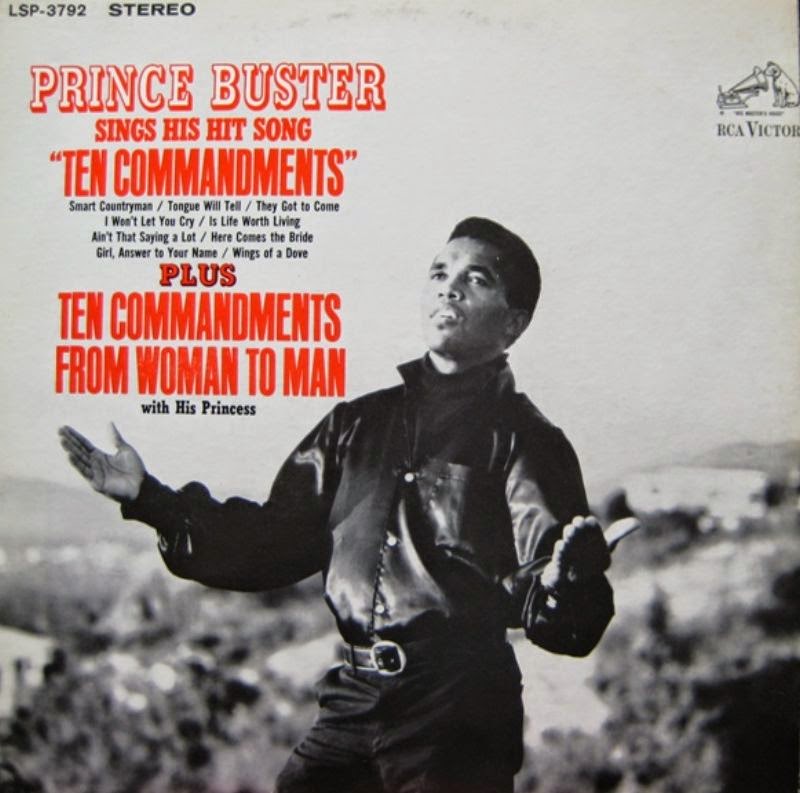
Reissue: “Sings His Hit Song Ten Commandments” 2009 – [Reel Music/Sony]

Editions:
“Sings His Hit Song Ten Commandments” 1967 – (Original Version)
[It includes 5 songs taken from the album* “What A Hard Man Fe Dead” 1967 + New Tracks]
Tracks:
1) Ten Commandments*. 2) I Won’t Let You Cry*. 3) Is Life Worth Living*. 4) Ain’t That Saying A Lot*. 5) Girl, Answer To Your Name*. 6) Ten Commandments From Woman To Man. 7) Wings Of A Dove. 8) Smart Countryman. 9) Tongue Will Tell. 10) They Got To Come.
[Label: RCA Victor (Lp: 1967)]
Reissue: “Sings His Hit Song Ten Commandments” 2009 – (Includes 1 bonus track**)
Tracks:
1) Ten Commandments. 2) I Won’t Let You Cry. 3) Is Life Worth Living. 4) Ain’t That Saying A Lot. 5) Here Comes The Bride**. 6) Girl, Answer To Your Name. 7) Ten Commandments From Woman To Man. 8) Wings Of A Dove. 9) Smart Countryman. 10) Tongue Will Tell. 11) They Got To Come.
[Label: Reel Music/Sony (Cd: 2009)]
______________________________________________________________
.1967 – Jamaica’s Pride: Rock Steady (Judge Dread feat. Prince Buster)
(Original Press):
“Jamaica’s Pride: Rock Steady” – [(Blue Beat, Lp: 1967), (Blue Beat/Prince Buster, Lp: 1967) & (Westmoor Music, 1993)]
+1967.jpeg)
Reissue: “Jamaica’s Pride: Rock Steady” 1988 – [Skank Records]
+1988.jpeg)
Reissue: “Jamaica’s Pride: Rock Steady” 1998 – [Diamond Line/Jet Star (Lp: 1998)(Cd: 2000)]
+1998.....jpeg)
Reissue: “Judge Dread Rock Steady/She Was A Rough Rider” 1993 – [Dojo Limited]
[It includes two original album on one cd]

Editions:
“Jamaica’s Pride: Rock Steady” (Judge Dread feat. Prince Buster) 1967 – (Original Version)
Tracks:
1) Judge Dread. 2) Shearing You. 3) Nothing Takes The Place Of You. 4) Ghost Dance. 5) Rock With A Feeling. 6) Sweet Beat. 7) The Appeal. 8) Dark Street. 9) Judge Dread Dance. 10) Show It Now. 11) Raise Your Hands. 12) A Change Is Going To Come.
[Label: Blue Beat (Lp: 1967), Blue Beat/Prince Buster (Lp: 1967), Skank Records (Lp: 1988), Westmoor Music (Cd: 1993), Diamond Line/Jet Star (Lp: 1998)(Cd: 2000)]
Reissue: “Judge Dread Rock Steady/She Was A Rough Rider” 1993
[It includes two original album on one cd]
Tracks:
1) Judge Dread. 2) Shearing You. 3) Nothing Takes The Place Of You. 4) Ghost Dance. 5) Rock With A Feeling. 6) Sweet Beat. 7) The Appeal. 8) Dark Street. 9) Judge Dread Dance. 10) Show It Now. 11) Raise Your Hands. 12) A Change Is Going To Come. 13) Rough Rider. 14) Dreams To Remember. 15) Scorcher. 16) Hypocrites. 17) Walk With Love. 18) Taxation. 19) Bye Bye Baby. 20) Tenderness. 21) Wine Or Grind. 22) Can’t Keep On Running. 23) Closer Together. 24) Going To The River.
[Label: Dojo Limited (Cd: 1993)]
______________________________________________________________
.1968 – She Was A Rough Rider
(Original Press):
“She Was A Rough Rider” – [(Blue Beat, Lp: 1968) – (Blue Beat/Prince Buster, Lp: 1968) – (Westmooor Music, Cd: 1990?)]

Reissue: “She Was A Rough Rider” 1988 – [Skank Records]
+.jpeg)
Reissue: “Judge Dread Rock Steady/She Was A Rough Rider” 1993 – [Dojo Limited]
[It includes two original album on one Cd]

Editions:
“She Was A Rough Rider” 1968 – (Original Version)
Tracks:
1) Rough Rider. 2) Dreams To Remember. 3) Scorcher. 4) Hypocrites. 5) Walk With Love. 6) Taxation. 7) Bye Bye Baby. 8) Tenderness. 9) Wine Or Grind. 10) Can’t Keep On Running. 11) Closer Together. 12) Going To The River.
[Label: Blue Beat (Lp: 1968), Blue Beat/Prince Buster (Lp: 1968), Fab (Lp: 1969), Skank Records (Lp: 1988), Westmooor Music (Cd: 1993)]
Reissue: “Judge Dread Rock Steady/She Was A Rough Rider” 1993
[It includes two original album on one cd]
Tracks:
1) Judge Dread. 2) Shearing You. 3) Nothing Takes The Place Of You. 4) Ghost Dance. 5) Rock With A Feeling. 6) Sweet Beat. 7) The Appeal. 8) Dark Street. 9) Judge Dread Dance. 10) Show It Now. 11) Raise Your Hands. 12) A Change Is Going To Come. 13) Rough Rider. 14) Dreams To Remember. 15) Scorcher. 16) Hypocrites. 17) Walk With Love. 18) Taxation. 19) Bye Bye Baby. 20) Tenderness. 21) Wine Or Grind. 22) Can’t Keep On Running. 23) Closer Together. 24) Going To The River.
[Label: Dojo Limited (Cd: 1993)]
______________________________________________________________
.1968 – Wreck A Pum Pum (Prince Buster & The All Stars)
(Original Press):
“Wreck A Pum Pum” – [(Blue Beat, Lp: 1968), (Blue Beat/Prince Buster, Lp: 1968) & (FAB, Lp: 1969)]
.jpg)
Reissue: “Wreck A Pum Pum” 2000 – [Prince Buster/Jet Star]
+.jpeg)
“Wreck A Pum Pum” (Prince Buster & The All Stars) 1968 – (Original Version)
Tracks:
1) Wreck A Pum Pum. 2) Wreck A Buddy [Feat. The Sexy Girls]. 3) Rough Rider. 4) Pum Pum A Go Will You. 5) Whine And Grine. 6) Ten Commandments. 7) Beg You Little More. 8) Pussy Cat Bite Me. 9) Pharaoh House Crash. 10) The Abeng. 11) Train To Girls’ Town. 12) Stir The Pot.
[Label: Blue Beat (Lp: 1968), Blue Beat/Prince Buster (Lp: 1968), FAB (Lp: 1969), Prince Buster/Jet Star (Cd: 2000)]
______________________________________________________________
.1969 – The Outlaw
(Original Press):

“The Outlaw” 1969 – (Original Version)
Tracks:
1) Gun The Man Down. 2) The Baddest. 3) Cincinnati Kid. 4) The Sermon Of A Preacher Man. 5) Al Capone. 6) Any More. 7) Happy Reggae. 8) Hold Them. 9) Outlaw. 10) Burke’s Law. 11) Fever. 12) Phoenix City.
[Label: Blue Beat (Lp: 1969), Blue Beat/Prince Buster (Lp: 1969)]
______________________________________________________________
.1972 – The Message Dubwise (Featuring Prince Buster All Star)
(Original Press):
.jpg)
“The Message Dubwise (Featuring Prince Buster All Star)” 1972 – (Original Version)
Tracks:
1) Swing Low. 2) Sata A Masa Gana. 3) Java Plus. 4) The Message. 5) Mississippi. 6) Saladin. 7) Why Am I Treated So Bad. 8) Jet Black. 9) Black Harlem. 10) Big Youth.
[Label: Prince Buster (Lp: 1972), FAB (Lp: 1972)]
______________________________________________________________
.1972 – Big Five
(Original Press):
“Big Five” – [(Prince Buster/Melodisc, 1972), (Westmoor Music, 1993)]
.jpeg)
Unofficial Album:”Big Five” – [Unknown label]
.....jpg)
Reissue:”Big Five” 1988 – [Skank Records]
.....jpg)
Editions:
“Big Five” 1972 – (Original Version)
Tracks:
1) Big Five. 2) Kinky Griner. 3) Leave Your Man. 4) Give Her. 5) Bald Head Pum Pum. 6) At The Cross. 7) Fishey Fishey. 8) The Virgin. 9) Black Pum Pum. 10) Every Man Pum Pum. 11) Tonight. 12) Wash The Pum Pum.
[Label: Prince Buster/Melodisc (Lp: 1972), Skank Records (Lp: 1988), Westmoor Music (Lp/Cd: 1993)]
Reissue: “Big Five Party Album” 197?
[Same Album with different title tracks. Album released without cover art]
Tracks:
1) Big Five. 2) Kinky Griner. 3) Tonight. 4) Give Her. 5) Bald Head Pum Pum. 6) At The Cross. 7) Holly Fishey. 8) It Big. 9) Fat Girl. 10) It Too Long. 11) Mrs. Tail. 12) Wet Dream.
[Label: Prince Buster/Melodisc (Lp: 197?)]
______________________________________________________________
.1972 – Sister Big Stuff
(Original Press):

“Sister Big Stuff ” 1972 – (Original Version)
Tracks:
1) South Of The Border. 2) Still. 3) Protection. 4) Why Not Tonight. 5) Wish Your Picture. 6) Sata A Masa Gana. 7) Sister Big Stuff. 8) Stand Accused. 9) Bridge Over Troubled Waters. 10) Stick By Me. 11) Young Gifted And Black. 12) Cool Operator.
Bonus Tracks*:
13) Police Trim Rasta. 14) My Happiness. 15) My Heart Is Gone.
[Label: Melodisc (Lp: 1972), Sunspot (Lp: 2011)(Cd*: 2011)(Digital Release*: 2011)]
______________________________________________________________
.1972 – Dance Cleopatra Dance
[It includes some previously unreleased + Compilation]
(Original Press):

“Dance Cleopatra Dance” 1972 – (Original Version)
Tracks:
1) Dance Cleopatra. 2) Madness. 3) Take It Easy. 4) Oh Love. 5) Times To Risc. 6) 007. 7) Come To Jamaica. 8) Cincinatti Kid. 9) More Over. 10) Sounds And Pressure. 11) On The Beach. 12) Al Capone. 12) Waiting For My Rude Girl.
[Label: Blue Elephant (Lp: 1972)]
______________________________________________________________
.1987 – Prince Buster Sing Showcase
(Original Press):
“Sing Showcase” 1987 – (Original Version)
Tracks:
1) Rain From The Sky. 2) Version. 3) Breaking Up. 4) Bugging. 5) Fatty Fatty. 6) Version. 7) Blowing In The Wind. 8) Version. 9) Hypocrites. 10) Version.
[Label Tesfa Records (Lp: 1987)]
______________________________________________________________
.2003 – Prince Of Peace: Live In Japan (Prince Buster with Determinations)
(Original Press):

“Prince Of Peace: Live In Japan” (Prince Buster with Determinations) 2003 – (Original Version)
Tracks:
1) Gaz Mayall “Introduction”. 2) Determinations “Mt. Gem”. 3) Determinations “Mango Rock (Shock Steady)”. 4) Determinations “Crazy”. 5) Prince Buster & Determinations “Introduction”. 6) Prince Buster & Determinations “Al Capone”. 7) Prince Buster & Determinations “Orange Street”. 8) Prince Buster & Determinations “They Got To Come”. 9) Prince Buster & Determinations “Burke’s Law”. 10) Prince Buster & Determinations “Dance Cleopatra”. 11) Prince Buster & Determinations “Hard Man Fe Dead”. 12) Prince Buster & Determinations “Big Five”. 13) Prince Buster & Determinations “Blackhead Chinaman”. 14) Prince Buster & Determinations “30 Pieces Of Silver”. 15) Prince Buster & Determinations “One Step Beyond”. 16) Prince Buster & Determinations “Prince Of Peace”.
[Label: Island/Universal/Japan (Cd: 2003)]
!!!
Recorded live at Bayside Jenny, Osaka and at Liquid Room, Tokyo in 2003.
______________________________________________________________
______________________________________________________________
EPs:
.1980 – Behind Bars [Judge Dread (Aka: Prince Buster)]
(Original Press):
.jpeg)
“Behind Bars” [Judge Dread (Aka: Prince Buster)] 1980 – (Original Version)
Tracks:
1) Prince Buster “Judge Dread”. 2) Prince Buster & Allstars “City Riot”. 3) Jamaicas Greatest “It’s Burkes Law”. 4) Prince Buster “Barrister Pardon”.
[Label: Blue Beat (Lp: 1980)]
______________________________________________________________
.2013 – Blue Beat Original EP (JJ Sparks & Prince Buster)
(Original Press):
.jpg)
“Blue Beat Original EP” (JJ Sparks & Prince Buster) 2013 – (Original Version)
Tracks:
1) You Did’nt Love Me. 2) Tra La La. 3) Mama Kiss Him Goodnight. 4) Feeling Blue. 5) 3 Nights in Lovers Town. 6) I Love You so Much
[Label: An Altara Production (Cd: 2013)(Digital Release: 2013]
!!!
Songs by JJ Sparks & Prince Buster released early 60’s
______________________________________________________________
______________________________________________________________
Appearances:

.1972 – Chi Chi Run (Big Youth, Prince Buster All Stars + Friends)
(Original Press):
“Chi Chi Run” (Big Youth, Prince Buster All Stars + Friends) 1972 – (Original Version)
Tracks:
1) John Holt & Big Youth – “Chi Chi Run”. 2) Prince Buster All Stars – “Haft”. 3) Prince Buster & Big Youth – “Revolution Rock”. 4) Prince Buster & Big Youth – “Revolution Come”. 5) John Holt & Big Youth – “Leave Your Skeng”. 6) Prince Buster All Stars – “Miami Beach”. 7) John Holt & Big Youth – “Leggo Beast”. 8) Little Youth – “Youth Rock”. 9) Dennis Brown – “One Day Soon”. 10) Dennis Brown – “If I Had The World”. 11) Prince Buster All Stars – “Boop”. 12) Alton Ellis – “Since I Fell For You”.
[Labels: Fab (Lp: 1972), Melodisc/Prince Buster (Lp: 1973)]
______________________________________________________________
.1972 – Jamaica’s Greatest (Prince Buster & Friends) – [Prince Buster]
(Original Press):

“Jamaica’s Greatest” (Prince Buster & Friends) 1972 – (Original Version)
Tracks:
1) Dennis Brown “One Day Soon”. 2) The Heptones “One Day Will Come”. 3) John Holt “If I Had The World”. 4) John Holt “News”. 5) Alton Ellis “Since I Feel For You”. 6) Prince Buster “Still”. 7) John Holt “Mona Lisa”. 8) The Heptones “God Bless The Children”. 9) Dennis Brown “If I Ruled The World”. 10) Alton Ellis “Good Loving”. 11) Prince Buster & Ethiopians “My Happiness”. 12) Prince Buster “Protection”.
[Label: Prince Buster (Lp: 1972)]
______________________________________________________________
______________________________________________________________
5) Album Tribute:
.1986 – “Prince Buster Memory Lane” by Owen Gray
(Original Press):

Owen Gray “Prince Buster Memory Lane” 1986 – (Original Version)
Tracks:
1) Enjoy Yourself. 2) Run Man Run. 3) They Got To Go. 4) Bad Minded People. 5) Madness. 6) Time Longer Dan Rope. 7) Beware. 8) Black Head Chine. 9) Wash Wash.
[Label: Phill Pratt (Lp: 1986)]
______________________________________________________________
.2012 – “Prince Buster Shakedown” by The Dualers
(Original Press):

The Dualers “Prince Buster Shakedown” 2012 – (Original Version)
Tracks:
1) Chinaman Ska. 2) King Of Kings. 3) Nothing Takes The Place Of You. 4) Take It Easy. 5) Firestick. 6) Orange Street. 7) Sister Big Stuff. 8) Enjoy Yourself.
[Label: Phoenix City Records (Cd: 2012), Cherry Red Records (Cd: 2012)(Diogital Release: 2012)]
Citizen Keyne. Ungreat Britain
So, as I spend way to long on the internet, checking out bands, thinking about what to programme for my next event, I go through lots of bands. Some I avoid like the plague, some have just overplayed the curcuit and burned out. But some have a bit of mystery over them. Sometimes you hear the rumours and the slagging off, before you actually get to see them. Being the Twat I am, the more the bitching, the more I like to take a look.
When Citizen Keyne got in touch with me, my first thought was OI underdogs, is up my street, so I’ll give them a whirl. And what a pleasant surprise I found on putting on the first album, Ungreat Britain. I was expecting the same regurgitated Oi!, with loads of repetitive OI Guitar licks and a singer being ‘Very Hard’.
What I actually heard is a flashback to 1977 Punk Rock, but with a modern twist. Chavs , Boot sale Tales, is straight into 21st Century United Kingdom of Methodone
I have to admit, too many years working in music, too many years of being a skinhead, has numbed my brain to so much. A song has to grab you by the bollocks and get those butterflies tickling your chest, that buzz in your neck that makes you want to pogo round the front room.
Most modern Oi bands will perhaps manage one strong track,or follow the same old done subject matter, of boots braces, tattoo’s and working class delusions. Now onto Floyds arse, this album is such an eclectic mix. With a definite punk rock sound, taking me right back to Micklefield estate in the summer of 78. But don’t write this band off as yet another copycat. Citizen Keyne have really brought in a modern sound, with lyrics dealing with todays issues. The love of lager down our necks. With reminders of early Sparrer, Sham, Buzzcocks, with a touch of Macc Lads thrown in for good measure. This really is a stand alone band, and a great first listen. Cant wait to unpack the next selection.
BUY TICKETS 9-10th Oct 2015
Featuring Live bands Citizen Keyne, Skapones, Adverse society, Tear Up. Toxic. Anti Social
Full DJ line up for a second room, playing SKA, And all Skinhead related music
The Great Skinhead Northern Gathering 9th + 10th October In Sunderland. Our second year of our Autumn Gathering, as a celebration of the skinhead culture A full day of Dj’s in one room, and Live bands in another. A full line up to follow, watch this space. Ony £15 for the whole event. Cheap beer and rooms nearby. Friday will be wristbanded 7pm -3am bands and DJ’s. Saturday 10th noon -5pm free entry meet and greet. After 5pm it will be wristband only, Live bands and DJ’s The weekend wristband £15 is valid for both nights
DJ Coordinator is Sean Marshall
facebook event page, please share
This is a family friendly event. Children are welcome until 9_9:30pm, but must be off the premises by then, by law so all are welcome, the venue is The Corner Flag. Central to the city center in a good location for local transport connections, trains, metro etc it’s the corner flag located at high street west, with plenty of fast food outlets and restaurants nearby, there will be something for everyone a good mix of Oi,ska,two tone a little bit of everything, a good size venue capable of holding this event, any bands wishing to play, Oi,Ska,Two Tone also any dj’s wishing to spin a few disks, should contact subcultz@gmail.com. www.subcultz.com If you missed last years then you have to come to this one, good music,good beer,with very good people
NAMEMalcolm McLarenOCCUPATIONArtist, Fashion DesignerBIRTH DATEJanuary 22, 1946DEATH DATEApril 8, 2010EDUCATIONHarrow Art School,Croydon College of Art,Goldsmiths CollegePLACE OF BIRTHLondon, United KingdomPLACE OF DEATHSwitzerlandFULL NAMEMalcolm Robert Andrew McLaren
Recording artist and fashion designer Malcolm McLaren came to fame as manager of the Sex Pistols. Later, he recorded several albums of his own material.
Born in 1946 in London, England, Malcolm McLaren was one of the creative forces behind the sound and attitude of the Sex Pistols. With a passion for style and social friction, the daring McLaren went on to manage several other bands following the Pistols’ demise in 1978, as well as record several albums of his own material. He died in Switzerland from complications related to cancer on April 8, 2010.
Artist, musician, band manager. One of the creative forces behind English punk rock and the Sex Pistols in particular, Malcolm Robert Andrew McLaren was born January 22, 1946, in London, England. The son of a Scottish engineer, he was raised primarily by his maternal grandmother, whom he later credited with fostering his well-regarded subversive spirit.
As such, school was not a perfect fit for the creative McLaren. He attended more than half a dozen different art schools, including Harrow Art School, where he befriended Jamie Reid, who would later serve as the brains behind the Sex Pistols’ provocative graphics. His struggles in school led one institution to expel him and another, Croydon College of Art, to try to have him committed to a mental institution.
In 1971 McLaren dropped out of school for good and opened a boutique shop in Chelsea. Initially called Let It Rock and later renamed Too Fast to Live Too Young to Die, the store specialized in 1950s “Teddy boy” fashions.
McLaren’s world changed when the New York Dolls, a glam-rock band that performed in high heels, visited his shop one day. McLaren and the musicians quickly hit it off and eventually he followed the band back to the United States, where he worked as its manager. McLaren brought an unusual approach to his job, pushing the band to shock its American audiences as much as possible. In one instance he had the Dolls perform in Maoist Red Guard uniforms and play in front of a hammer-and-sickle flag.
But the Dolls’ run was short-lived, and after the group broke up, McLaren returned to London intent on trying to ramp up what he’d tried to do in the States.
He found his new cause in a group of musicians headed up by lead singer John Lydon, later renamed Johnny Rotten due to the condition of his teeth. In every shape and form, the Sex Pistols was the product of McLaren’s imagination. He put the band together and orchestrated the outrage that made them the toast of the English punk rock scene. Rotten called McLaren “the most evil person on earth.”
With singles like “Anarchy in the U.K.” and “God Save the Queen,” the Pistols climbed the charts in Britain. The group’s short run consisted of just one album, the 1977 release Never Mind the Bollocks: Here’s the Sex Pistols. In 1978 the group embarked on its first and only American tour. It quickly concluded when Rotten walked off the stage at a performance in San Francisco, leaving the band behind and marking the end of the Pistols as a group.
Even with the band’s demise, McLaren continued to stay heavily involved in the music scene. He went on to manage several other acts, and in 1983 issued an album of his own, Duck Rock, which featured a combination of world music and hip-hop. Several other albums followed, including Fans(1984), Waltz Darling (1989), and Paris (1994).
Great Skinhead reunion documentary DVD, coming soon,.For pre orders click HERE
URGENT NEWSFLASH!!!! IT LOOKS LIKE THE ‘WORKERS’ OF OUR RETARDED RAILWAYS ARE THINKING OF STRIKING ON THE FIRST DAY OF THE GREAT SKINHEAD REUNION, I UNDERSTAND THEY WANT TO JOIN US FOR A PISSUP, BUT THIS DOESN’T HELP OUR SKINHEADS GETTING TO BRIGHTON. SO MY BEST ADVICE IS TO USE NATIONAL EXPRESS BUSES, THESE RUN FROM ALL LONDON AIRPORTS AND LONDON VICTORIA, GET OFF AT POOL VALLEY, BRIGHTON, WHICH IS ABOUT 2 MINUTES FROM THE VENUE ON BRIGHTON SEAFRONT BOOK HERE http://www.nationalexpress.com/home.aspx
KEEP AN EYE ON THE NEWS REPORTS, HOPEFULLY, THE LAZY TWATS WILL AT LEAST SAVE THEIR HOLIDAYS UNTIL AFTER THE REUNION http://www.nationalrail.co.uk

Late additions to the Bill for The Great skinhead Reunion 2015 The Bermondsey Joy Riders
Claiming all the credentials of a bonafide ‘77 super group, The Bermondsey Joyriders is a band pooling the hard-won experience and history of three veteran punks. Founding membersGary Lammin (vocals / guitar) and Martin Stacey (bass) cut their teeth in the Joe Strummer-produced Little Roosters and Generation X precursors Chelsea respectively, whilst recent recruit Chris Musto (drums) is a sticksman of some credentials – having previously played with Johnny Thunders, Joe Strummer and Nico, to name but a few!
More than the sum of their impressive punk rock heritage however, The Bermondsey Joyriders have won praise for splicing those sounds from suburbs with raw blues and Lammin’s startling slide guitar – emerging with a sonic signature that is undeniably all their own. Given just 12 hours (!) in the studio to lay down their self-titled 2008 debut, they managed to produce a record which Classic Rock magazine’s Carol Clerk deemed to have “pulled off a really impudent mix of influences”, and which Guitarist magazine’s Charles Shaar Murray felt had achieved a “unique spin on punk-blues”.
Featuring Gary Lammin, writer of Runnin Riot and Chip on your shoulder, original member of Cock Sparrer. Check their website for full info on the band
British punk singer Peter Bywaters ‘deported from America for impersonating Donald Trump’
Continue reading Peter ‘Test Tube’ Bywaters Deported from USA for impersonating TrumpIt seems once again the corporate dictatorship, which is Facebook, has deleted our community group page, for no apparent reason. We at subcultz , have been building the Reunion event over the last 5 years, with no problems at all. We have successfully mixed all non political skinhead music genres together, and are seeing a mass of skinheads, and ex skinheads, young and old, from across the globe coming the Brighton every year. The most frustrating thing, is there seems no right of appeal, or even contact ability, with whoever it was, that pressed the delete button. We have lost our event page and hundreds of photos, held on the page. Its completely against democracy, to take peoples right of free speech and communication away.
The Skinhead Reunion itself is doing really well. We have the best reggae DJ’s on the planet booked up again, We have around 9 bands, and presales tickets are up over 150, on 2014. If anyone out there knows of a way to communicate with facebook please let me know. But otherwise we have to just grit our teeth and keep moving forward. We have no interest at all in Bullshit skinhead politics of left or right. We are here to party and have fun. Everyone is welcome, from whatever background you come, To meet and have a good time, drink some beer and listen to great music. Keep the Faith
However much i hate to have to keep relying on facebook, this is our subcultz page
Whatever Facebooks motivation was to delete us, the most ironic thing, is that Their big Brother HQ is in Dublin. And we have a young band booked to play from there, called the Dodgy Few. we have Skinheads who lived through the troubles in Northern Ireland, from both sides of the sectarian divide, drinking together, with Ex British soldiers. We have created something undreamed of 25 years ago. When the powers that be, had the working classes killing eachother, in a civil war.
A report from the Independant newspaper UK
The first thing that catches the eye of a visitor entering the lobby of Facebook’s European headquarters is the array of motivational posters stapled to the far wall. “Proceed And Be Bold”, orders one. “What Would You Do If You Weren’t Afraid?” asks another. “Done is Better Than Perfect”.
Stepping inside the gleaming, jagged glass building in Dublin’s docklands is like passing through a portal to San Francisco. Staff wearing hoodies and jeans and clutching Apple laptops negotiate their way through an obstacle course of low-hanging Frank Gehry lights, orange beanbags and ping pong tables.
But appearances can be deceptive. The joyful pop soundtrack in the canteen and the urban art adorning the walls belies the fact that some of the hundreds of people employed here are carrying out some very serious – and very sensitive – work.
To mark Safer Internet Day on Tuesday, The Independent became the first newspaper to be given access to Facebook’s Community Operations team: the men and women tasked with responding to reports of abuse by the site’s users. They are trained to cover everything from low-level spam all the way up to serious cyberbullying, hate speech, terrorist threats and suicidal cries for help.
Dublin is Facebook’s most important headquarters outside California. The Community Operations team based here does not just cover Europe, but also examines reports sent in by millions of users across the Middle East, Africa and large parts of Latin America. In the words of Sonia Flynn, the managing director of Facebook Ireland, they are “the front line between Facebook and the people who use Facebook”.
She adds that while the “vast majority” of reports received require no further action, when a serious concern is raised the team needs to act quickly and decisively. For this reason, a Community Operations person covering Spain cannot simply get away with speaking fluent Spanish – they must also have a good cultural knowledge of the country. Forty-four different nationalities are represented in the Dublin team alone.
“We put emphasis on hiring people from the different countries with the right language expertise and cultural understanding,” says Flynn. “When someone creates a piece of content – whether it’s a photo or a comment – there’s what’s said and what’s meant. That’s why it’s really important for us to have people who understand not just the language, but the culture of the country that they’re supporting.”
The offices of Facebook in Dublin, where the community operations teams is based
In the past, Facebook has been criticised for lacking the human touch in its interactions with its ever-growing army of users (at last count, there were 1.39 billion of them across the world). A notable example occurred at the end of last year, when American web designer Eric Meyer highlighted what he described as the site’s “inadvertent algorithmic cruelty”.
Mr Meyer had been invited to try out the site’s Year in Review feature – an automatically generated list of his Facebook “highlights” from 2014 – only to be confronted by a picture of his daughter Rebecca, who died earlier in the year. The product manager responsible for the feature later emailed him to personally apologise.
Content policy manager Ciara Lyden, who used to work on the Community Operations team, says she often saw first-hand how the public perceive Facebook. “Every so often I’d help someone out with a query that they had, and then they’d be like: ‘Thanks – if you’re a person or a robot, I don’t know’. I’d have to write back to tell them that I really am a person,” she says.
While she admits that Facebook could “do more” to show its human side, she points out that the site has to be built around the fact that it has more than a billion users who are online 24 hours a day. The company has put a lot of effort into what it calls “compassion research”, taking advice from academics at Yale’s Centre for Emotional Intelligence on how to help users interact with each other so they can resolve their differences without Facebook taking any action at all.
Previously, if one user said something that another found offensive, Facebook would simply look at whether the content broke any rules and if it did, take it down. Now it can act as a sort of digital counsellor, giving the offended person the chance to explain to the other why they were hurt.
Facebook could “do more” to show its human side (Getty Images)
Instead of just typing into a blank box, the offended user is given a set of possible phrases to describe how they feel. The choice depends on their age: a teenager will see words more likely to be in their vocabulary (“mean”), whereas an adult will see more sophisticated options (“inappropriate”, “harassing”).
The approach seems to be working, as in the vast majority of cases, the person responsible for the post deletes it of their own accord. “In the real world, if you upset me I’d likely go and tell you that you’ve upset me, and we’re trying to make that mirror what happens through our reporting flows,” explains Flynn.
However, the company is keen to stress that every single report of abuse is read and acted upon by a human being, not a computer – a fact that might surprise most users. The system is constantly monitored by staff based across four time zones in California, Texas, Dublin and Hyderabad in India, so there is never a “night shift” with fewer staff on hand.
When a user clicks “report”, it is graded for its severity and guided to the right team. “If there’s a risk of real-world harm – someone who is clearly cutting themselves, or bullying, anything touching child safety in general, any credible threat would be prioritised above everything else,” says Julie de Bailliencourt, Facebook’s safety policy manager for Europe, the Middle East and Africa.
Although she says the company does have a set of response times by which it aims to help people, it will not make them public – or divulge how many abuse reports it receives overall. Security around the Community Operations team is also strict: to protect users’ privacy, a sign near where they sit reads “No Visitors Beyond This Point”.
Most reports are relatively benign. In Turkey, for example, every time the football team Galatasaray plays one of its big rivals, Facebook notices a spike in reports from supporters of both teams complaining about each other. The same is true of derby-day football matches in the UK.
Most Facebook reports are relatively benign (Getty Images)
“People tend to report things that they don’t like, not necessarily things that are abusive,” says de Bailliencourt, who has worked at Facebook for five years. “It’s not like we can pre-empt things, but we know that during big sporting events we’re going to have an increase.”
News events also cause spikes in abuse reports. In the wake of the Charlie Hebdo terrorist attacks in France, a sudden surge in the number of controversial posts and heated debate resulted in more complaints. Or as de Bailliencourt puts it: “Anything that happens in the real world happens on Facebook at the same time.”
Very serious reports – such as someone threatening to kill themselves – are fast-tracked to the police or security services, she adds. “If we feel someone has taken some pills and they’ve posted on Facebook: ‘Goodbye world, that’s it, it’s the end’, we’re obviously not going to send them our usual supporting documentation – we need to go much faster.”
She adds that Facebook has “absolutely” saved people’s lives through swift intervention and has “equally as many good stories” as it does controversies, such as the row over its removal of breastfeeding pictures, which she describes as a “human mistake”. She says it is a myth that the more users that report something, the more likely it is to be removed. “One report is enough.”
Facebook has a clear code of conduct which users must respect, but there are always grey areas. Staff are also aware that a decision to remove something from the site – or leave it up – can be far-reaching, like a powerful court setting a global precedent. Under pressure, the multi-cultural team often has heated arguments.
“We don’t hire people to just press the same button X amount of times per hour,” says de Bailliencourt. “We hire people with very different backgrounds, and they sometimes disagree. It feels almost like the UN sometimes.”
Breastfeeding pictures
In 2011, Facebook deleted the page of a breastfeeding support group called The Leaky B@@b, informing its founder Jessica Martin-Weber that she had “violated our terms of use”. Facebook said later the deletion had been a “mistake” and the page was reinstated. The site says it generally tries to “respect people’s right to share content of personal importance”.
Inciting violence
A Facebook page calling for Palestinians to take to the streets in a violent uprising against Israel was removed in 2011. The page, entitled “Third Palestinian Intifada”, had already attracted the condemnation of the Israeli government, which said it was inciting violence against Jews. Facebook said while the page began as a call for “peaceful protest”, it had descended into “direct calls for violence or expressions of hate”.
Free speech
Facebook refused to remove a “fan” page dedicated to James Holmes, the man accused of shooting 12 people dead at a cinema in Colorado in 2012. Facebook said the page “while incredibly distasteful, doesn’t violate our terms” as it was within the boundaries of free speech.
Suicide prevention
In 2013, New York police intercepted a teenager who was on his way to jump off a bridge after he posted a message on Facebook. When officers were alerted to post, they sent him a message on the site and handed out his photo to nearby patrols. He called the police station and was taken to hospital.
Skinhead.. 2 Me, it began in 82-83 (for me ).. at age 14-15.. my mothers an alcoholic, father unknown.. we were kids on the street, who dident ave a chance against those, back in school, whom had everything, famillies… we formed our own… we were learnt by nature 2 stick together whatever the cost.. cause we knew, we were the ones to pay the price,, i started of as punk, but oi kicked in and i was hooked.. somehow, IM SO GLAD TO SEE ALL THESE YOUNGSTERS OF today, hookin up.. it is with great sense of pride, really.. im myself close to the 50s now… n i dont fuckin regret a minute of it, if i could re- lived my life.. I WOULD!!! At THAT time… in and out of trouble was the only thing we had, i can only speak for my self here, but i know, that trough time, back in that day.. a hell of a lot of us.. came from broken homes, broken families etc.. AND WE WERE ABOUT TO FORM OUR OWN PATH, so to speak.. our own little FIRM.. at that time, i wouldent give a fuck, weither the kids were swung to metal.. or weither they were swung to reggae.. we simply had our own, and we were ready, to fuckin swing YOU, by the neck… brotherhood, pride and loyalty. and u know, well what… were still havent got that kind of recognizion, that we deserve, but on the other hand.. we never wanted it or even asked for it… at this very writing moment.. proud of my bruvs and sis… SKINHEAD TILL THE DAY I DIE!! This … The Great Skinhead Reunion.. Channels all that… through all generations, and different age groups, politics, etc… SKINHEADS MADE THIS ONE CLEAR.. That we can cellebrate the LIFE OF SKINHEAD and take pride in the fact, that we were, we are.. And no one EVER will bring us down or take the history off from us.. EVER!!.. The lost generation!! and ere we are.. Cheers.oioi. // Eddy// Sweden… ps See u all in June -15. Cheers. and double and tripple and a half.. 🙂
Eddy Nord. Sweden

In 1981, Decca Records released Strength Thru Oi!, a compilation album featuring 22 bands associated with the Oi! offshoot of UK punk rock. The title was reportedly a play on Strength Through Joy, an early LP by the Scottish group the Skids, though some charged curator Gary Bushell with co-opting a popular Nazi slogan. Bushell denied the accusations, but either way, the record was meant to introduce Oi! as a style of music capable of invigorating listeners—fortifying their bodies, minds, and souls.
The title may have been tongue-in-cheek, but music and exercise have long gone hand-in-hand, and with that in mind, we asked three New York City fitness enthusiasts to experiment with an all-Oi! soundtrack during their workouts and help us answer the question of whether one truly can gain strength through Oi!
Our methods, it must be pointed out, were quasi-scientific at best, as this music is—and this is no knock—some of the absolute dumbest shit imaginable.
In its original incarnation, British punk rock was deceptively simplistic. Genre figureheads the Clash and Sex Pistols were intelligent, self-aware 20-somethings who’d been to art school and attained a set of skills—squatting, figure drawing, discussing politics while drinking and speeding—that left them with few viable career options. Thanks to svengali managers like Malcolm McLaren and Bernie Rhodes, these and other unemployable dole collectors were able to form rock ‘n’ roll bands, and while the music was fast and loud—three-chord 50s rock played with all the anger and frustration you’d expect from underachieving young people—early punk anthems like “God Save the Queen” and “Career Opportunities” bristled with a covert idealism that belied the subculture’s nihilistic reputation.
As exciting and influential as it was, punk was artistically limiting, and by the late 70s, the music had run its course. The Sex Pistols broke up, the Clash branched out into classic styles like reggae and R&B, and other bands—the Damned, the Stranglers, etc.—plugged in synthesizers and joined the ranks of the emerging post-punk and new Wave groups. The music grew artsy and pretentious, and that led to the birth of Oi!—the only style of music whose name is always capitalized and followed with an exclamation point.
Influenced by groups like Sham 69. Angelic Upstarts and Cock Sparrer. 4Skins and Blitz made it real. Championed by members of the UK skinhead subculture—a movement emerged from the British council estates—Oi! is proudly working-class music. Its blunt, aggressive songs center on drinking, fighting, football , and, “Fuck Maggie thatcher, and her boys in Blue, A V’s up to the British class system. I’m not gonna waste my life working at your factory.” Musically, it was and is ’77-style punk stripped of all subtlety. Because the choruses sound like football chants, every song is an anthem, giving voice to the lives many young people were living in 1980’s Britain, Police harassment, and mass youth unemployment. Oi! gobs in the face of authority—the government, banks, the military, teachers, parents, people who don’t like Oi!—and that makes it adaptable and timeless. The music has permeated all corners of the globe, and “Oi! Oi! Oi!” sounds pretty much the same in any language.
In the USA Strength Thru Oi was used in experiments.
For the purposes of this study, we enlisted three individuals from different age groups with unique workout habits:
Kristen, a 32-year-old Pilates instructor, graduate student, and punk fan who hopes to make the synthesis of music and exercise an integral part of her practice once she becomes a doctor of physical therapy.
Spencer, a 28-year-old proponent of CrossFit—a popular exercise philosophy based on high-intensity interval training, weightlifting, and other extremely demanding exercises.
Francis, a 40-year-old runner, computer programmer, and member of the South Brooklyn Running Club.
All three were given an eight-song Oi! soundtrack composed of the following songs:
Cockney Rejects, “Bad Man”
Cock Sparrer, “Riot Squad”
The Business, “Suburban Rebels”
Red Alert, “We’ve Got the Power”
Blitz, “Fight to Live”
4 Skins, “One Law for Them”
Sham 69, “I Don’t Wanna”
The Templars, “New York”
The Oi! mix leans heavily on UK genre favorites from the late 70s and early 80s, though the final selection, “New York,” is a 1994 cut by the Templars, an American band formed in Long Island. “New York” was selected for geographical reasons, as we were interested in finding out whether (a) US Oi! songs stand up to their British antecedents and (b) whether an NYC-centric song might have added emotional resonance with our participants. (Note: None of the selections—and indeed, no aspects of this study—have anything to do with racist strains of the Oi! or skinhead subcultures. We like our punk rock dumb, not ignorant.)
Each participant was asked to rate each song on a scale from 1 to 10, as well as offer a score capturing Oi!’s overall usefulness as a workout aid. Through a series of follow-up questions, we were able to further analyze the athletes’ attitudes toward the music and garner their expert opinions regarding its pros and cons. Again, because we’re dealing with music that’s defiantly lugheaded and generally resistant to evolution, our methodology is extremely suspect and bound to provoke anger in real scientists and medical practitioners. It’s only marginally smarter than what a gang of drunken skins might sketch out on a barroom napkin after their ninth round of Guinness.
Assessing Oi!’s overall fitness benefits, our participants submitted scores of 8 (Kristen), 8 (Francis), and 4 (Spencer). That averages out to 6.3—a respectable number only Spencer would likely argue with.
“On the musical-taste front, I’ll caveat all of my below thoughts with the fact I acknowledge I have really eclectic (read: lame) taste in workout music,” Spencer says. “A random workout playlist is equally likely to contain Metallica, Eminem, Britney Spears, Beastie Boys, club music, classic rock anthems, 90s rock, and miscellaneous Top 40 from the last one to two years. It’s not inconceivable something from Les Mis sneaks in as well. Which is all to say (1) my girlfriend never lets me pick music, and (2) I seriously doubt I’m the general Oi! demographic.
“That said, I was excited to try working out to something new. And now that I have I can confidently say I do not enjoy working out to Oi! I seriously could not differentiate these songs while they were playing; it all sounded like a cat from the East End of London being beaten with a Stratocaster.”
Spencer cites the “cool accents” and fact that the music is “better than speed metal” as its major selling points. The cons, he says, are that it “does not provide the workout fuel of James Hetfield/Adam Levine.”
“Not liking it makes me feel like I’m yelling at kids to get off my lawn,” he says.
Relative to the other test subjects, Spencer’s preferred form of exercise involves arguably the most intense physical exertion, and his testimony would seem to refute the idea there is, in fact, strength to be derived through Oi! The music may, however, have benefits for people involved in activities like running, where a steady rhythmic pulse helps offset fatigue. Unfortunately, our findings suggest, the positive effects are negated when the music gets too fast, and any Oi! worth its salt is way the hell too fast.
“Overall, Oi! music has an aggressive upbeat beat that can give your mind something to stay focused on during an intense workout,” says Francis. “I found myself looking forward to the songs with more catchy hooks. The cons of Oi! music was that I found the tempo too fast for running, so it was hard to stay relatively in synch with the music. It felt like some of the songs were urging me to run faster than I could or wanted to during the workouts.”
Oi! might also be good for the core muscle groups, as Kristen has emerged from the experience “definitely inspired to create a Pilates punk playlist.”
“This genre has the ability to inspire energy and hard work which is great for a high abdominal endurance type of workout that is Pilates,” she says.
In terms of individual song scores, the Templars fared best, suggesting that hometown pride plays a role in enjoying Oi! This is not surprising, given the music’s association with packs of loutish London lads getting blitzed and head-butting one another at their local pubs and football stadiums. Oi! is tribalistic, and songs are pegged to specific cities and neighborhoods in a way that first-wave British punk wasn’t. All three athletes were asked to pick a favorite lyric, and Kristen’s comes via the Templars: “New York City is where we wanna be!”
“NYC is always a motivating factor,” she says.
Cockney Rejects and Cock Sparrer also proved popular among our participants, achieving average scores nearly as high as the Templars. Both “Bad Man” and “Riot Squad” have anthemic qualities that, while found in all eight selections, are arguably more pronounced, and that might explain the scoring.
The song-by-song ratings are below. The first number is the total score, followed by the average in parenthesis.
The Templars, “New York”: 24 (8)
Cockney Rejects, “Bad Man”: 22 (7.3)
Cock Sparrer, “Riot Squad”: 21 (7)
The Business, “Suburban Rebels”: 19 (6.3)
Red Alert, “We’ve Got the Power”: 16 (5.3)
Blitz, “Fight to Live”: 16 (5.3)
4 Skins, “One Law for Them”: 14 (4.6)
Sham 69, “I Don’t Wanna”: 13 (4.3)
“I liked Cock Sparrer’s ‘Riot Squad’ the best—I think because I found it had a catchy beat and interesting lyrics,” says Francis. “Also, the tempo wasn’t too out of synch with my running pace.”
Having crunched the numbers, taken a close look at the anecdotal responses, and consumed a six-pack Newcastle Brown Ale, we’re prepared to draw the following conclusions.
1. Oi! does not make you physically stronger—at least not in any way that might prove useful to hooligans looking to throw heavier objects through storefront windows or smash the jaws of street-fighting adversaries with fewer swings of their meaty fists. According to Spencer, “there wasn’t much of an energy boost for me from the music. My brain mostly seemed to tune it out after awhile. But, again acknowledging my terrible taste in music, I could easily see someone throwing down hard to this stuff. There’s clearly a ton of energy to the songs and some real anger and passion behind the lyrics, which I think could drive some solid gym time if a listener liked the sound of the music itself. And had any clue what the lyrics were.”
2. If you listen to Oi! while running or doing Pilates, you might slice your mile time or strengthen endurance in your legs, abs, hips, back, and arms. But after you take the lyrics to heart, go to the pub, and knock back a half-dozen pints of stout, you’ll likely undo whatever good you’ve done your body. That goes double if you get into a brawl on your way home, and if you’re really an Oi! fan, you will get into a brawl on your way home.
3. Oi! is far too boneheaded to warrant scientific study—even a half-assed one like this. This whole thing might have been a complete waste of time. Wanna fight?
Kenneth Partridge is not a scientist, but he plays one on the internet. Keep up with his research on Twitter – @kenpartridge